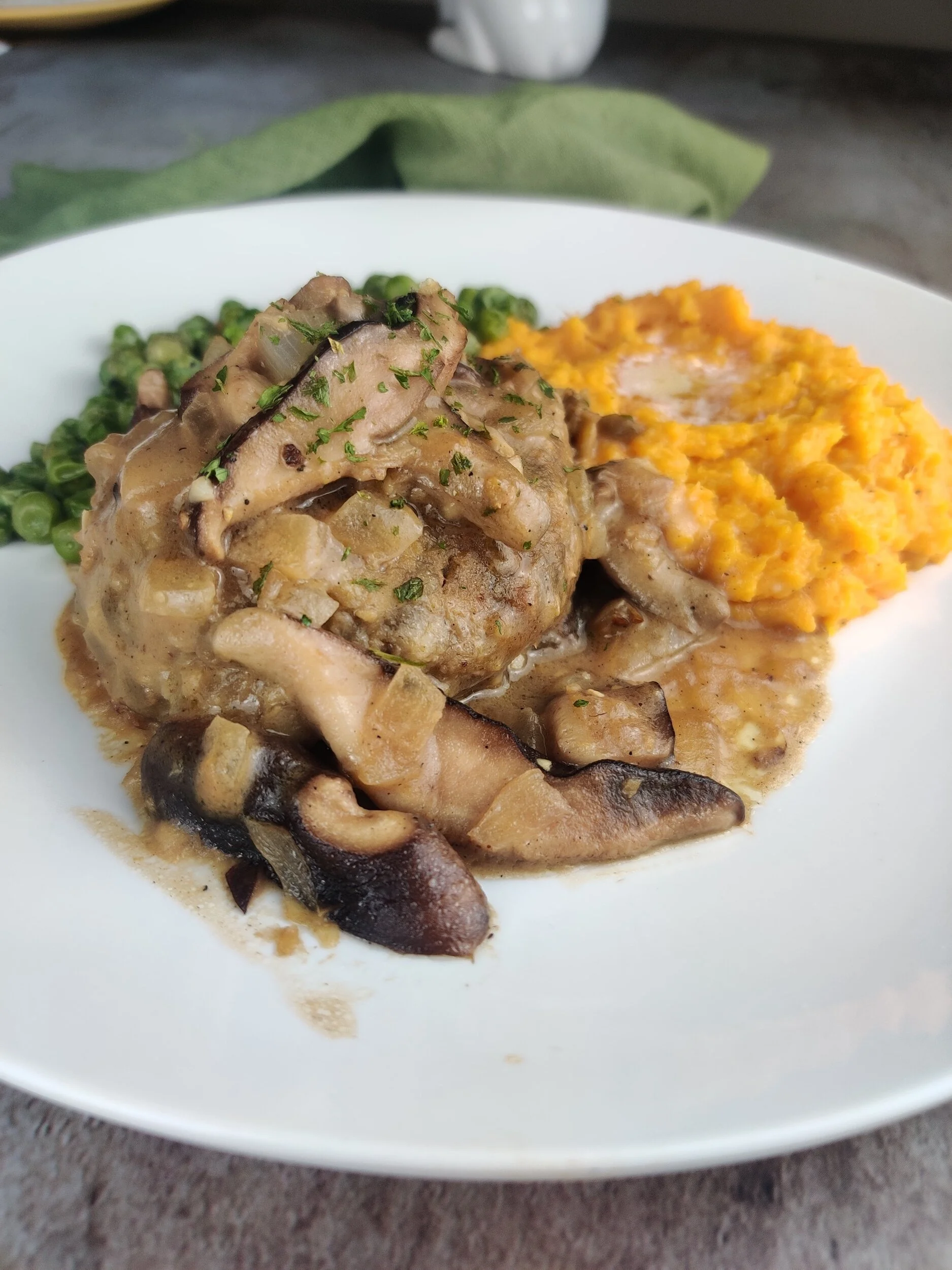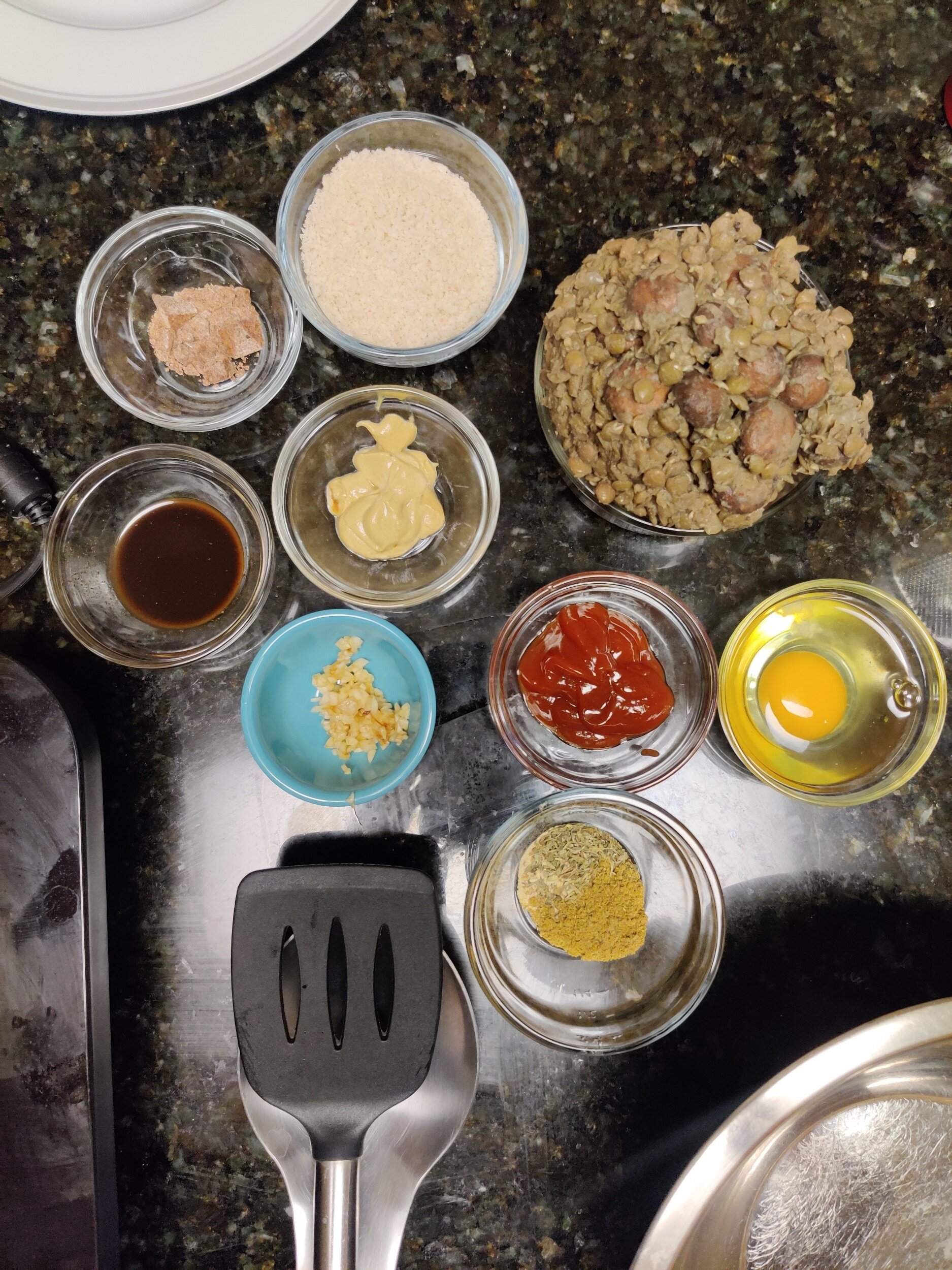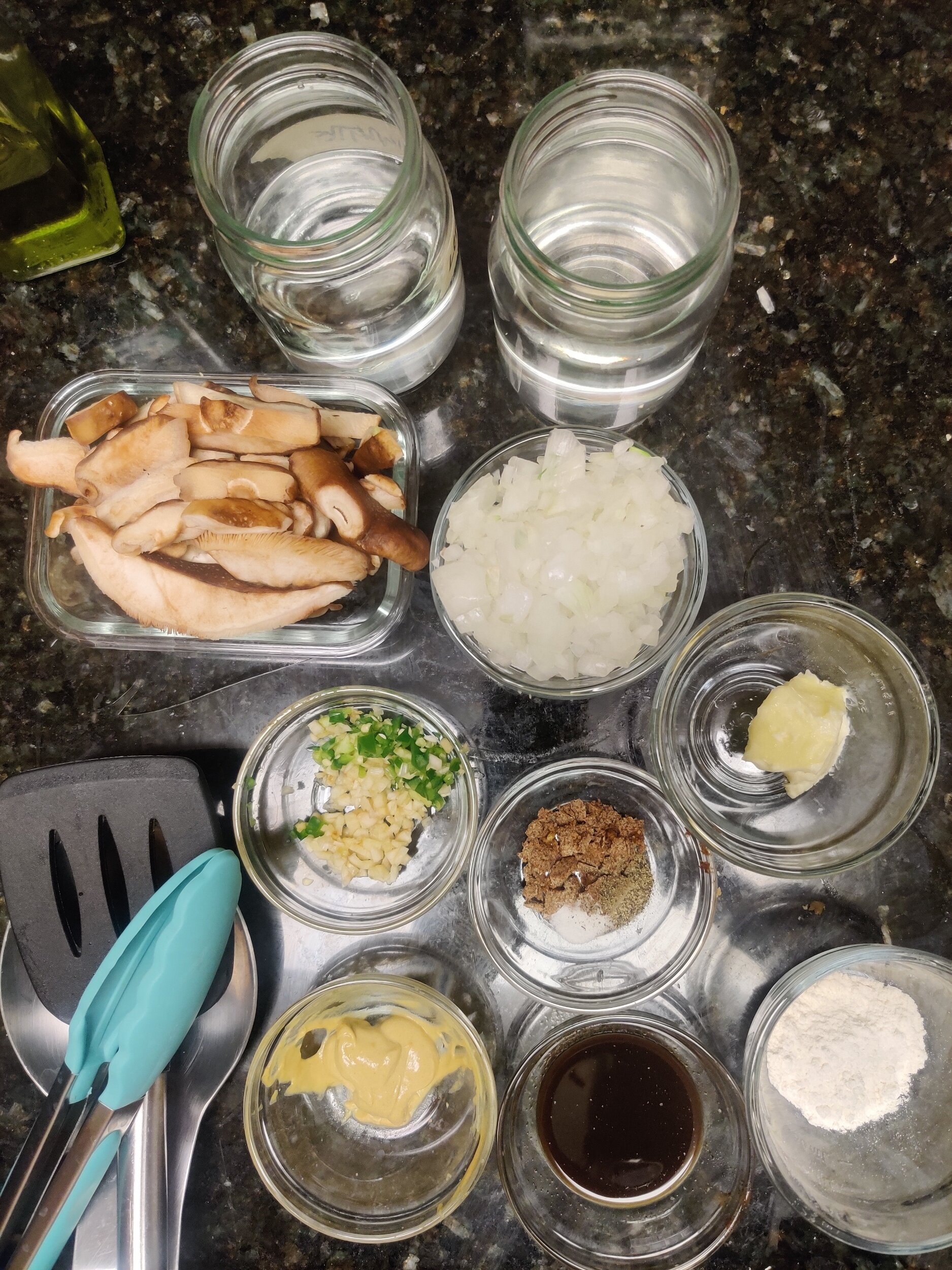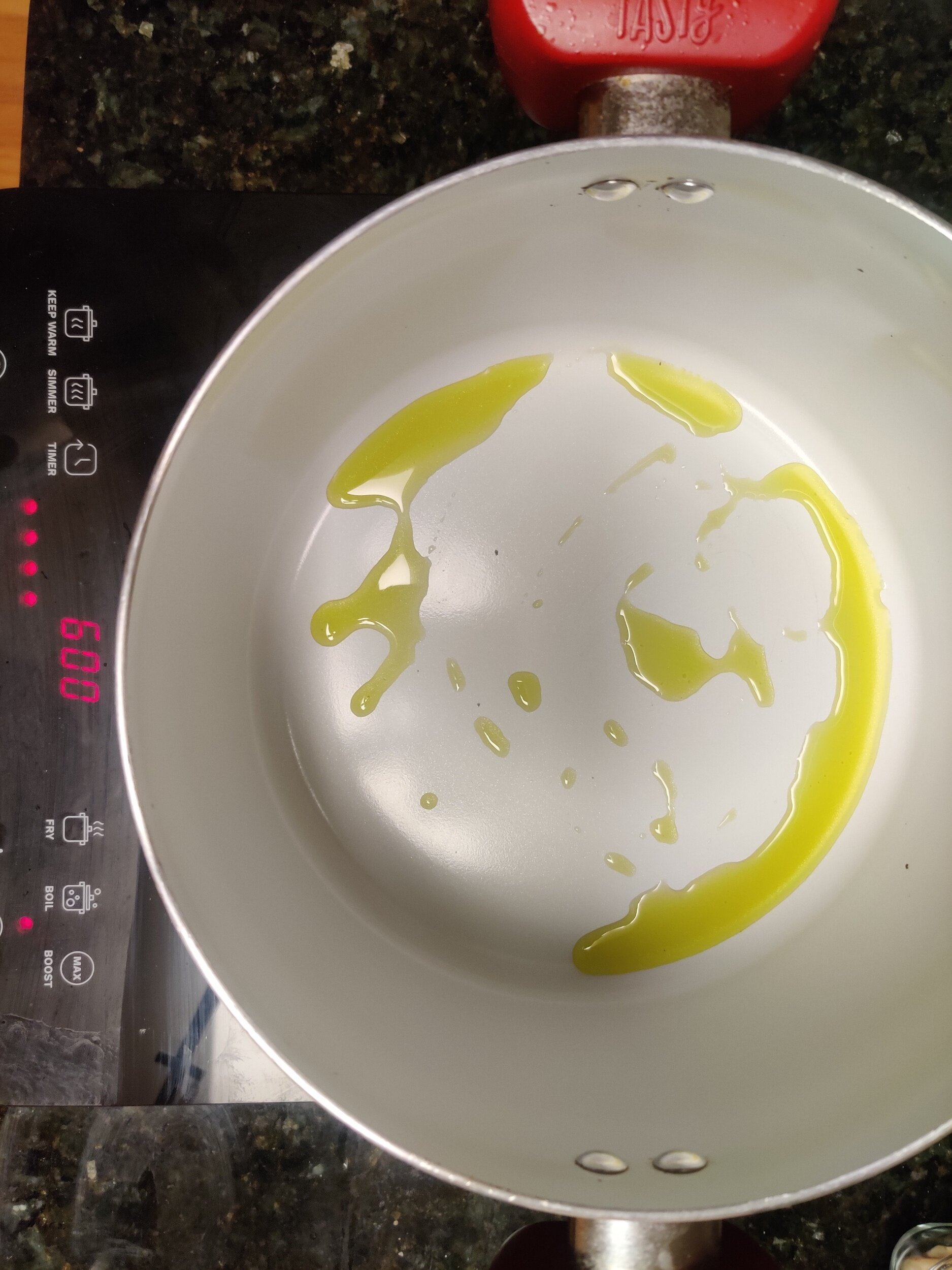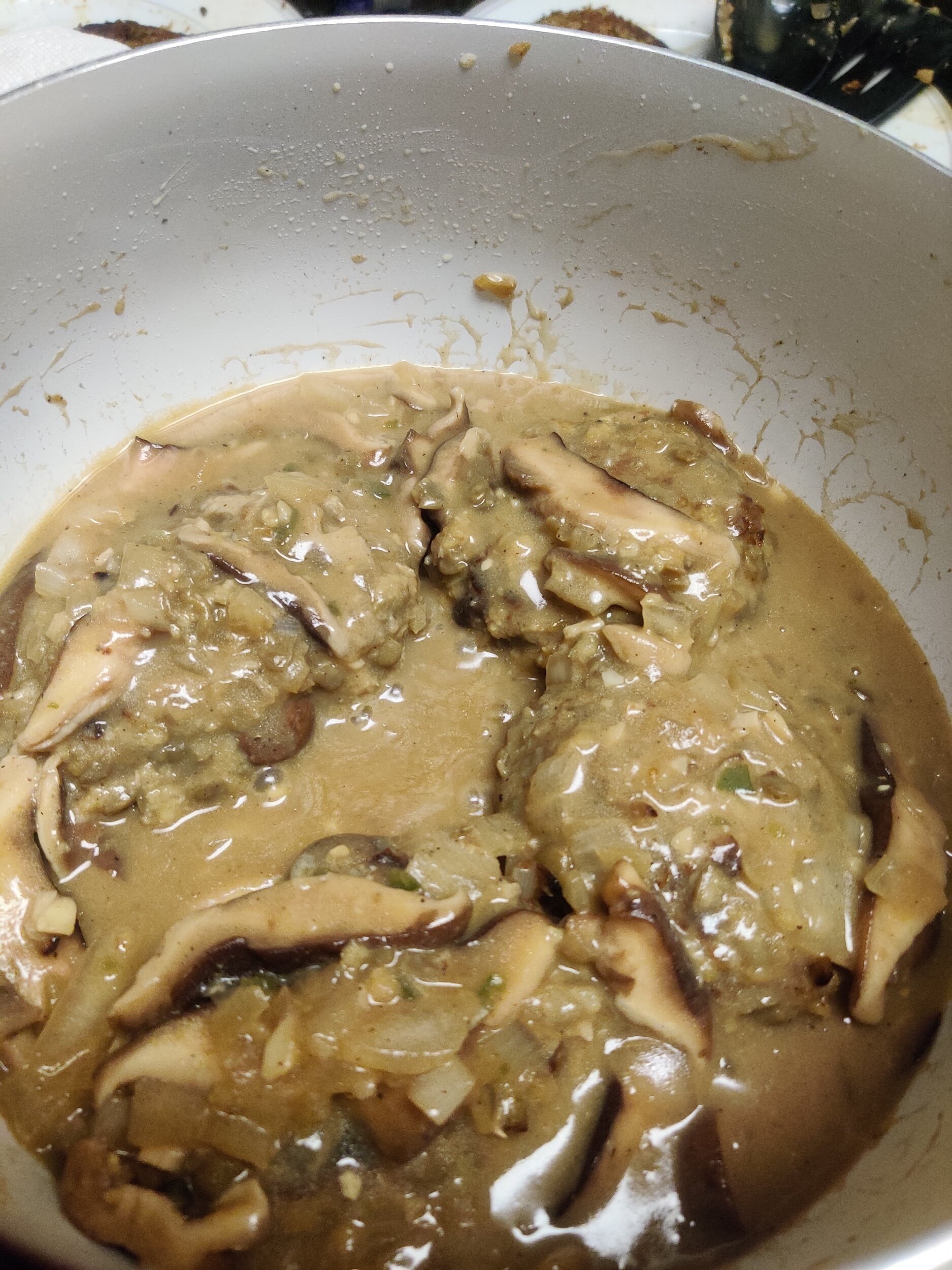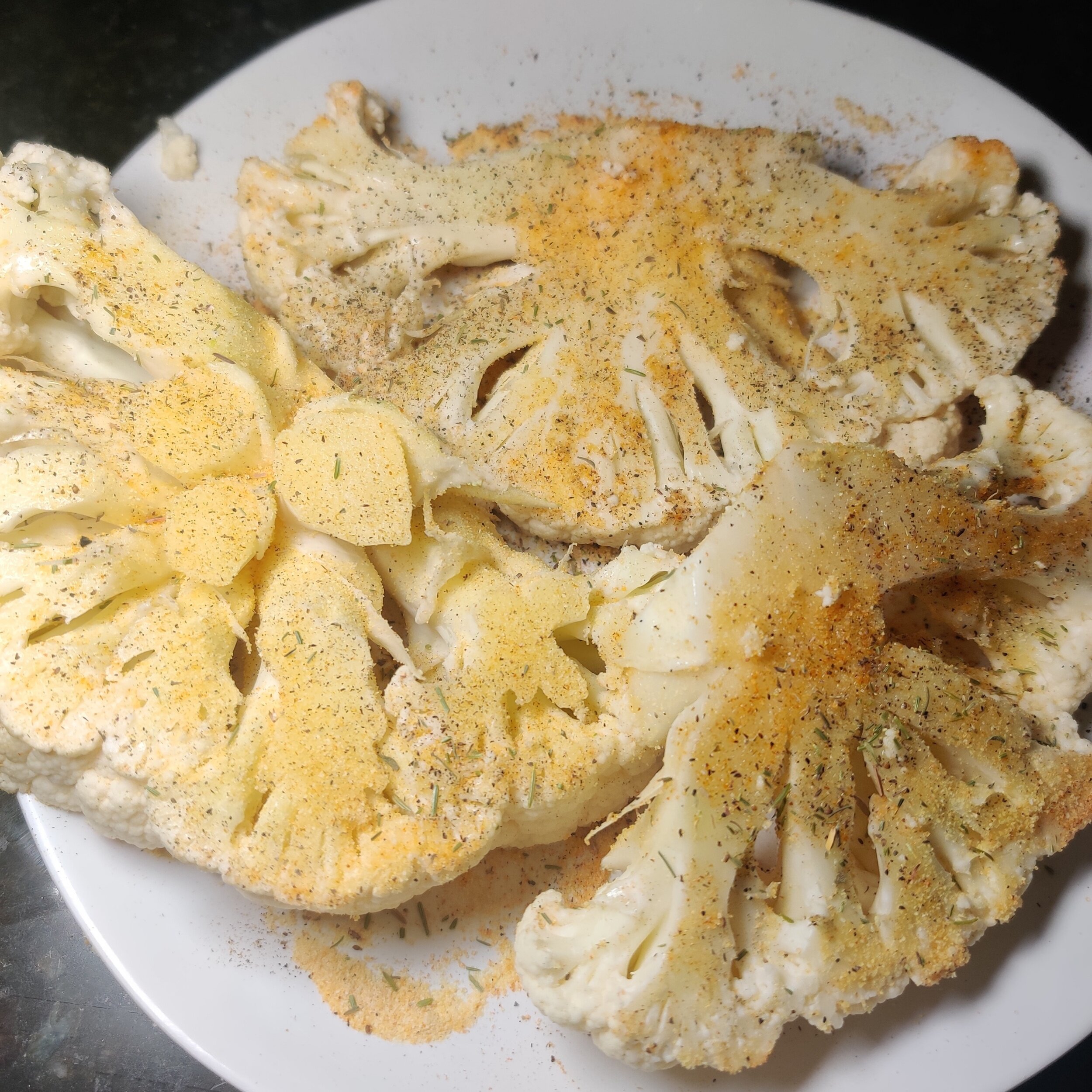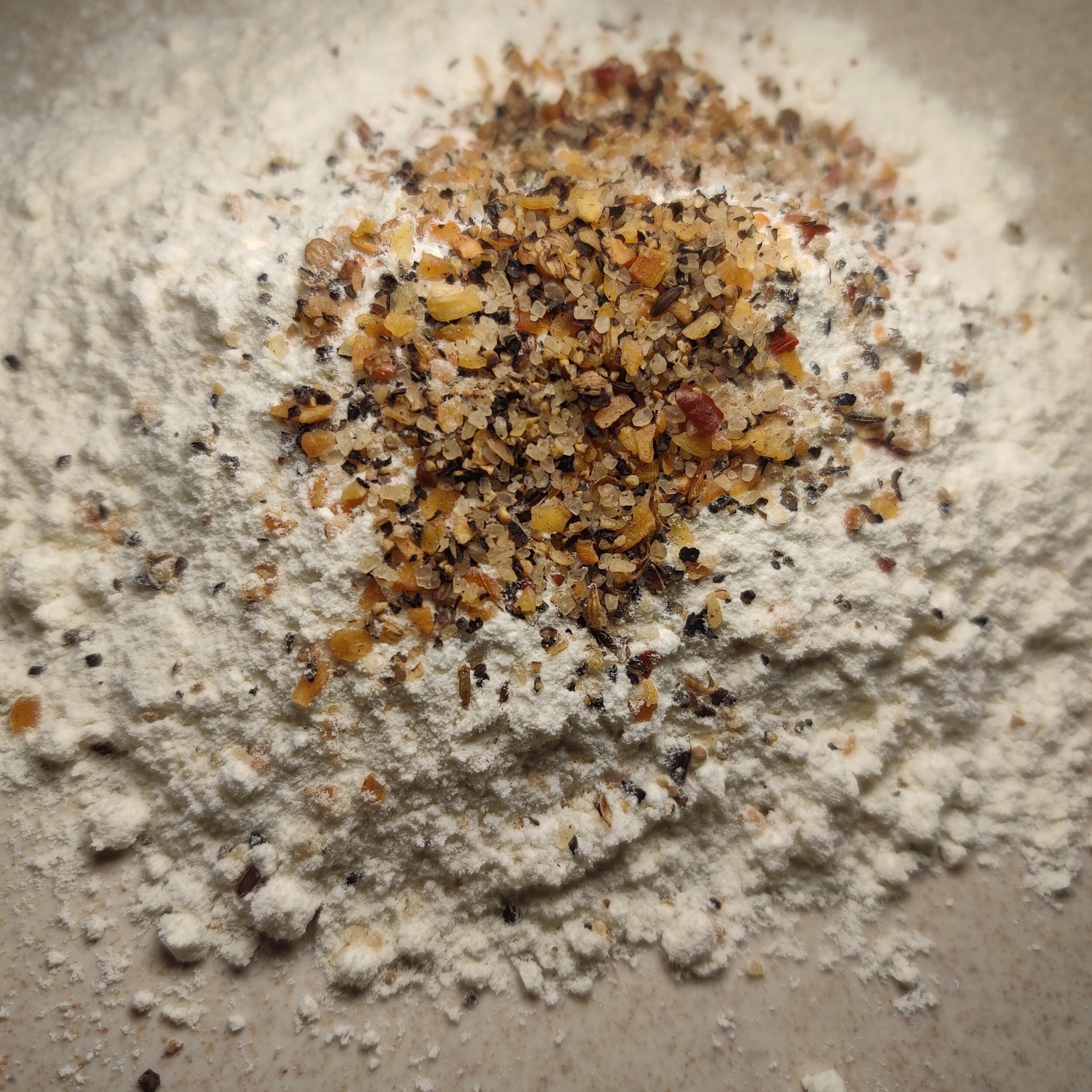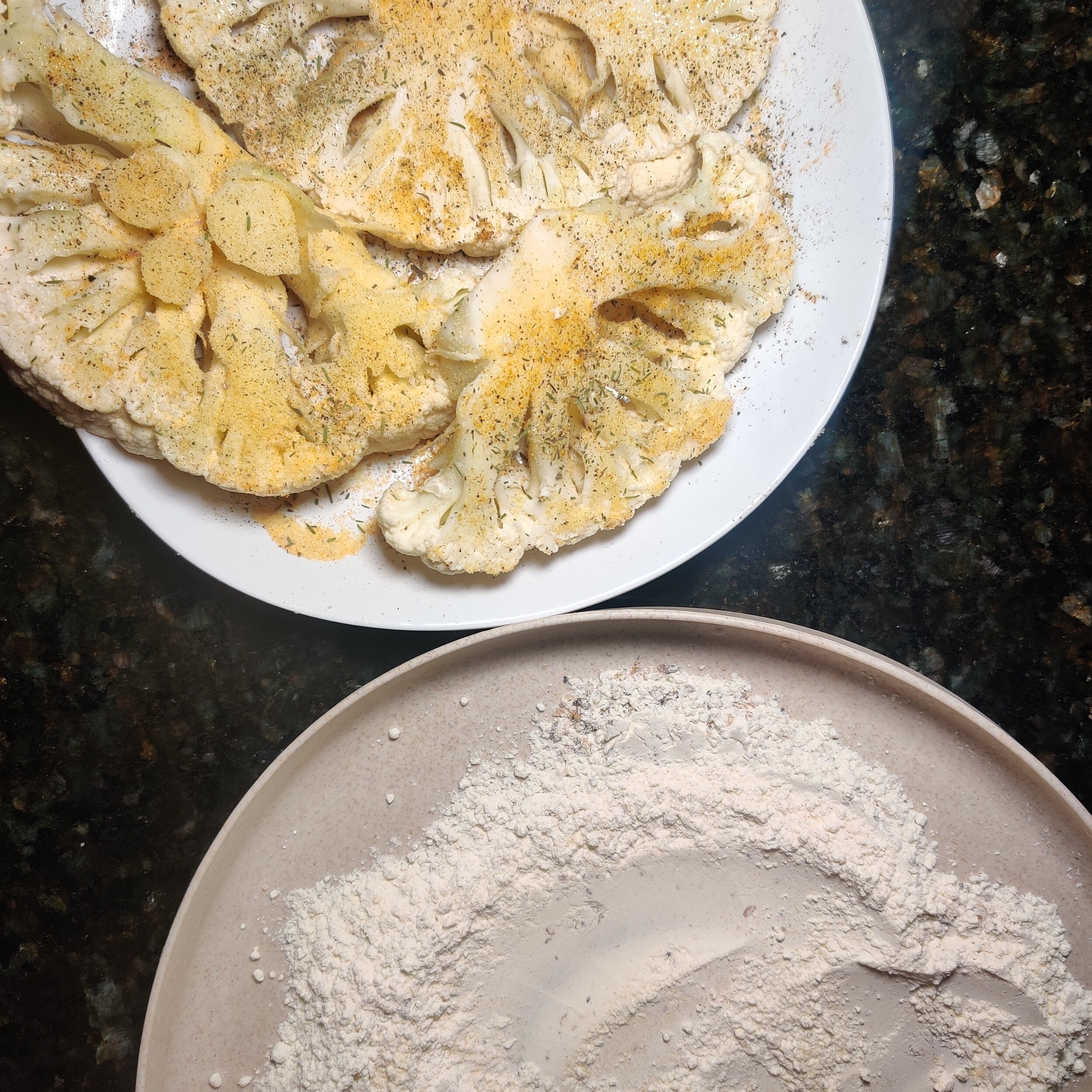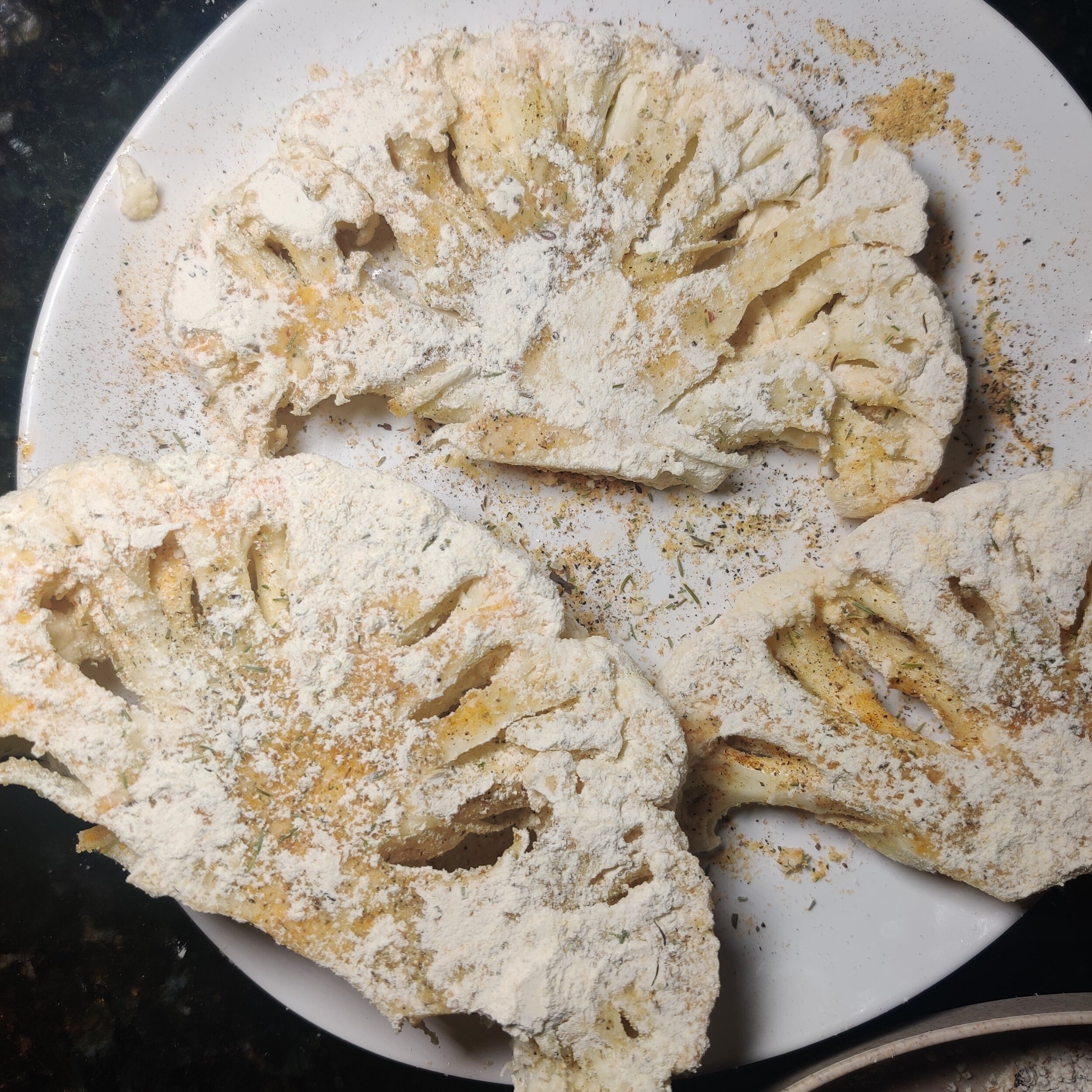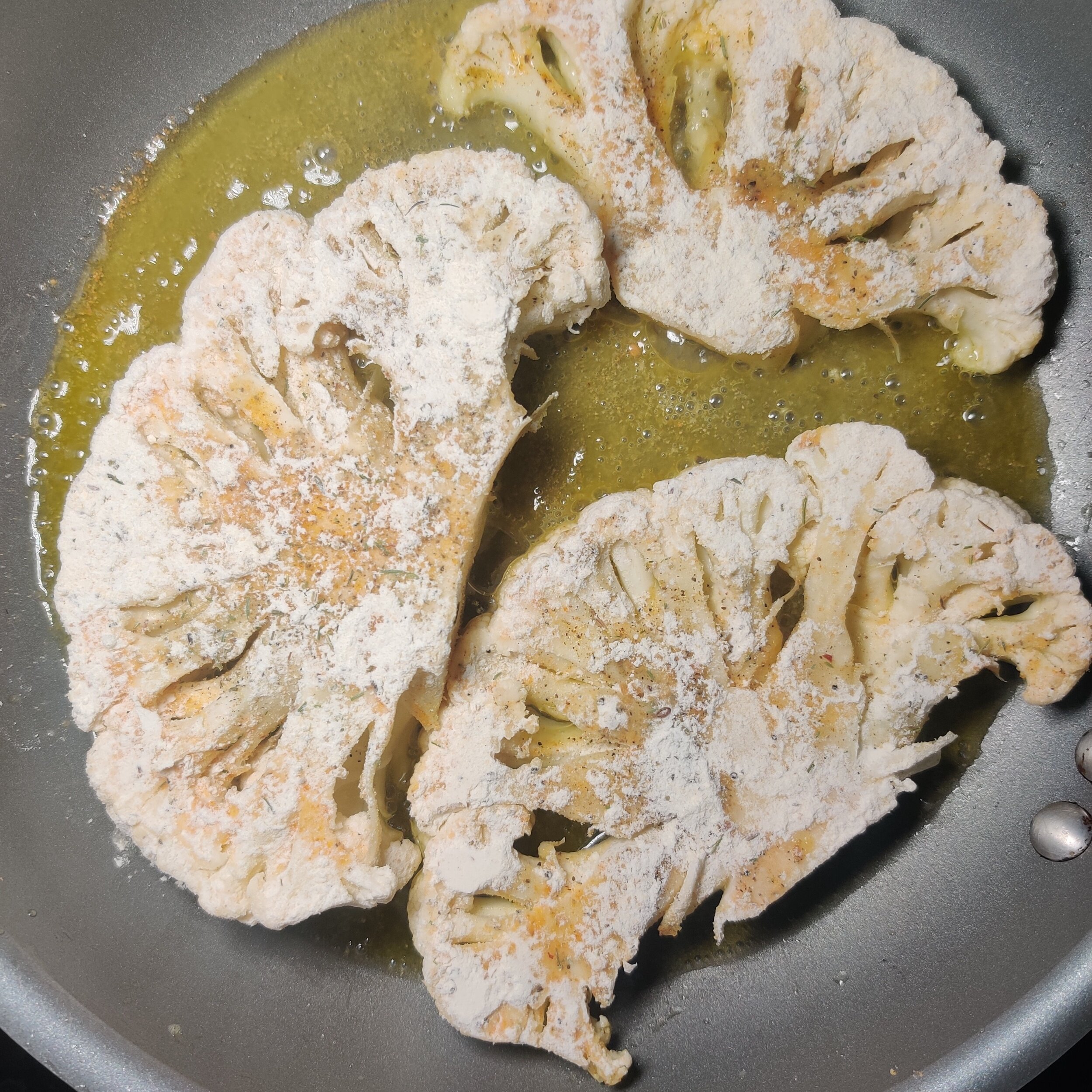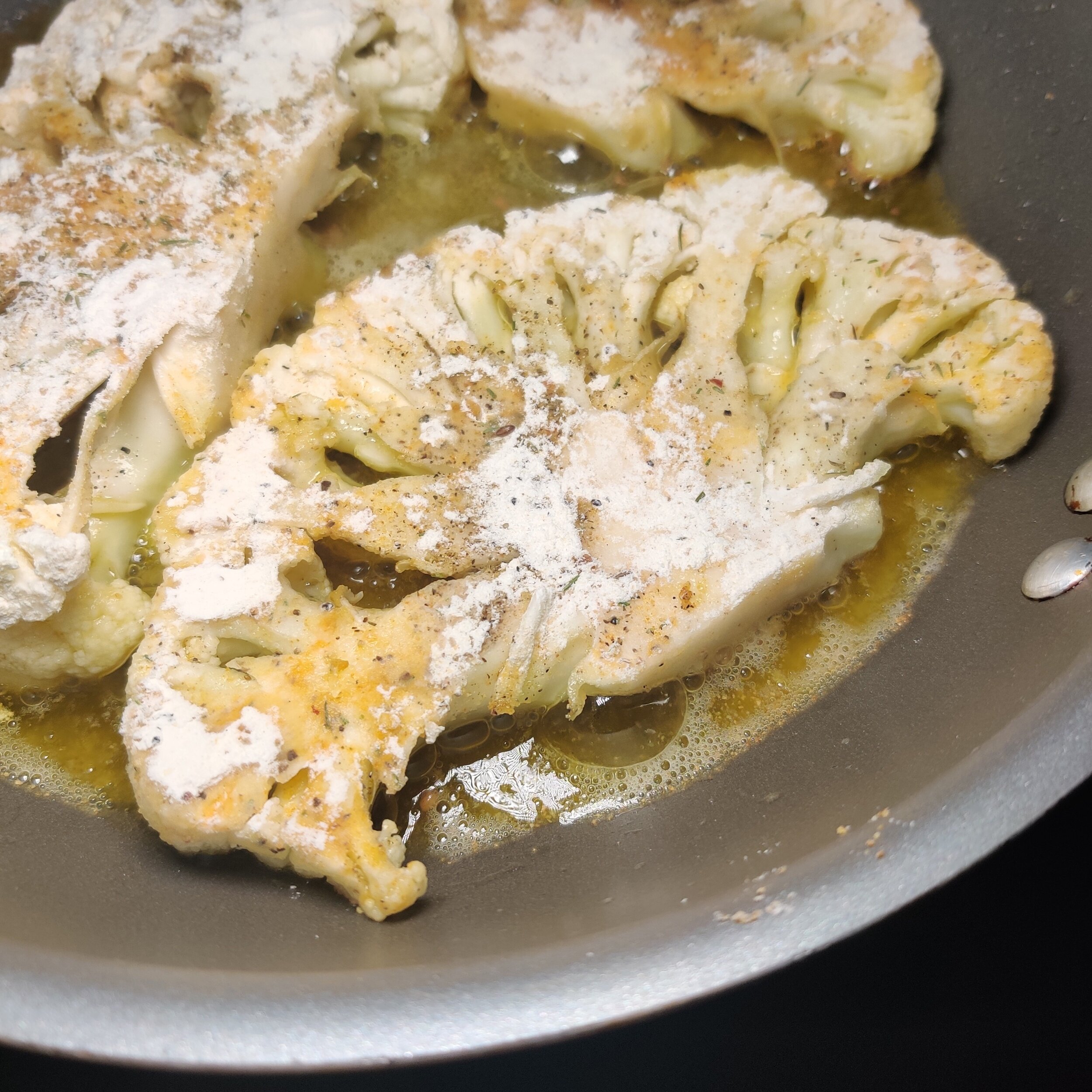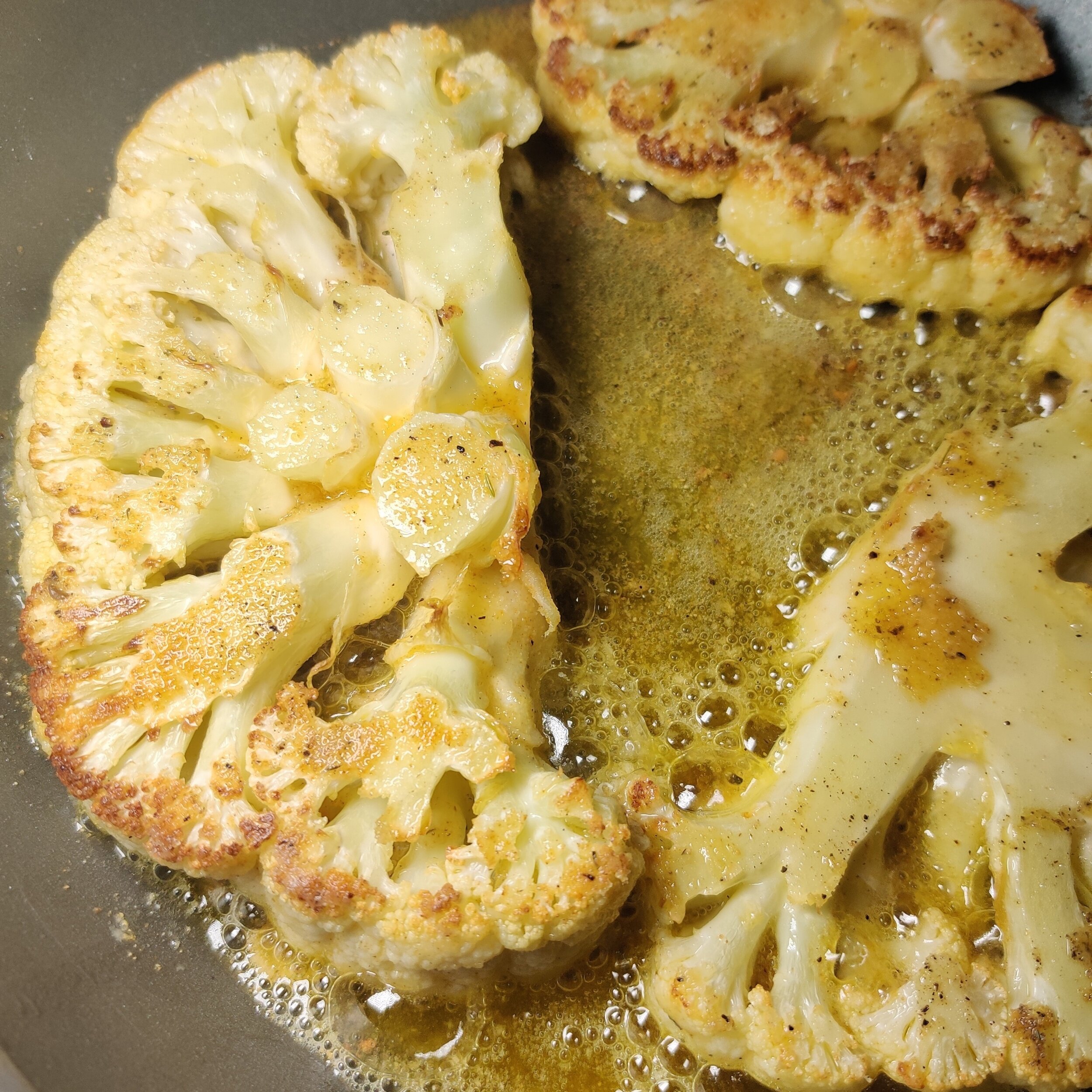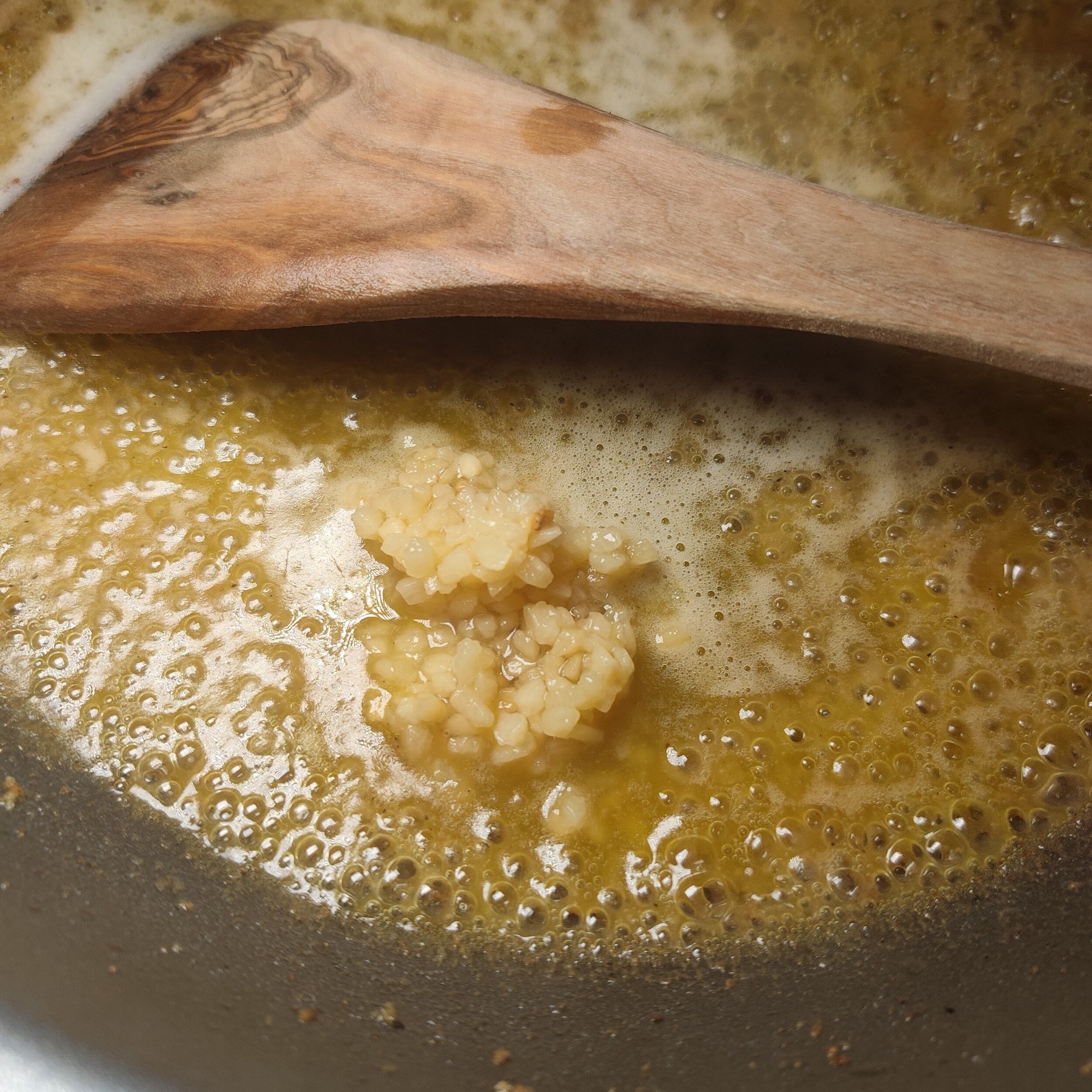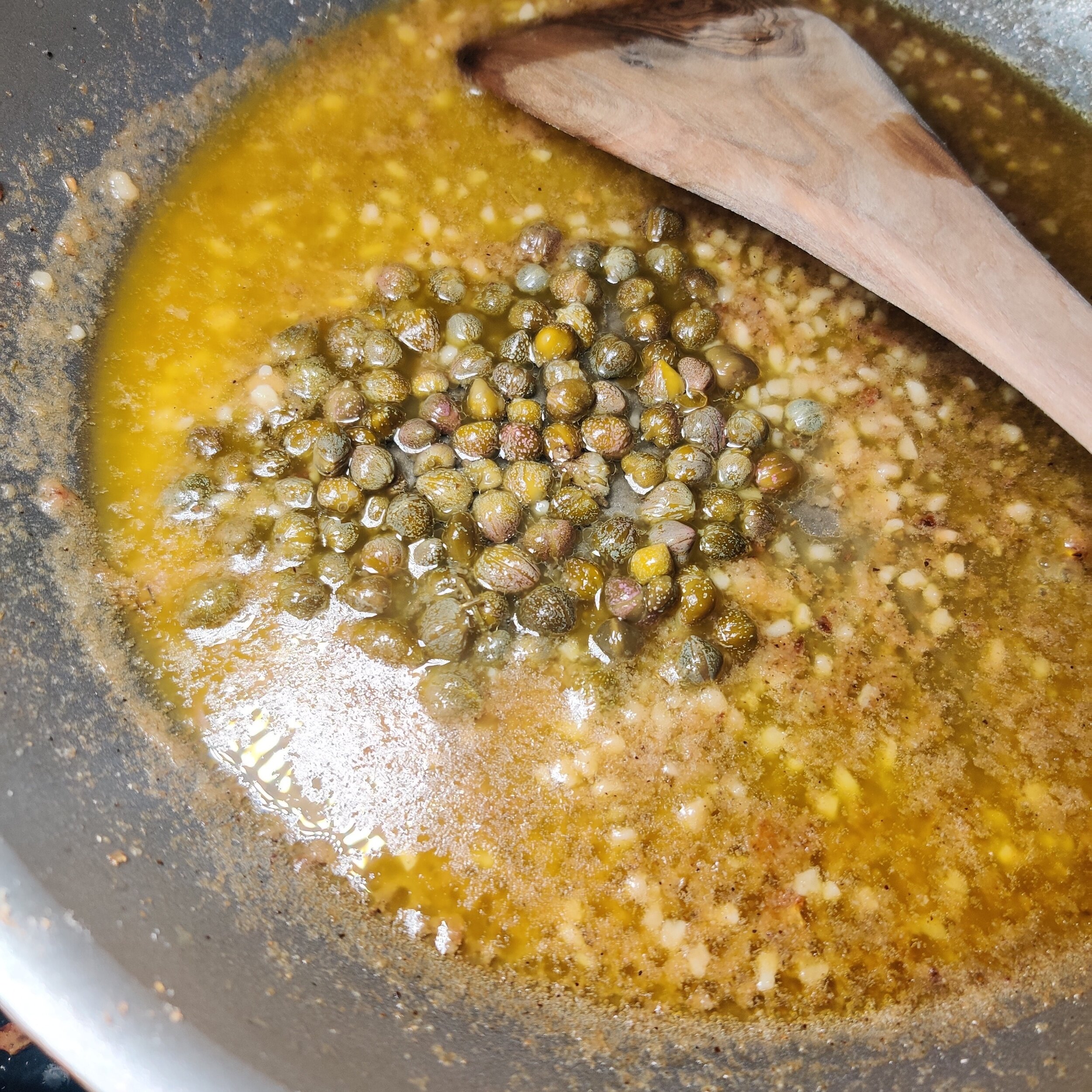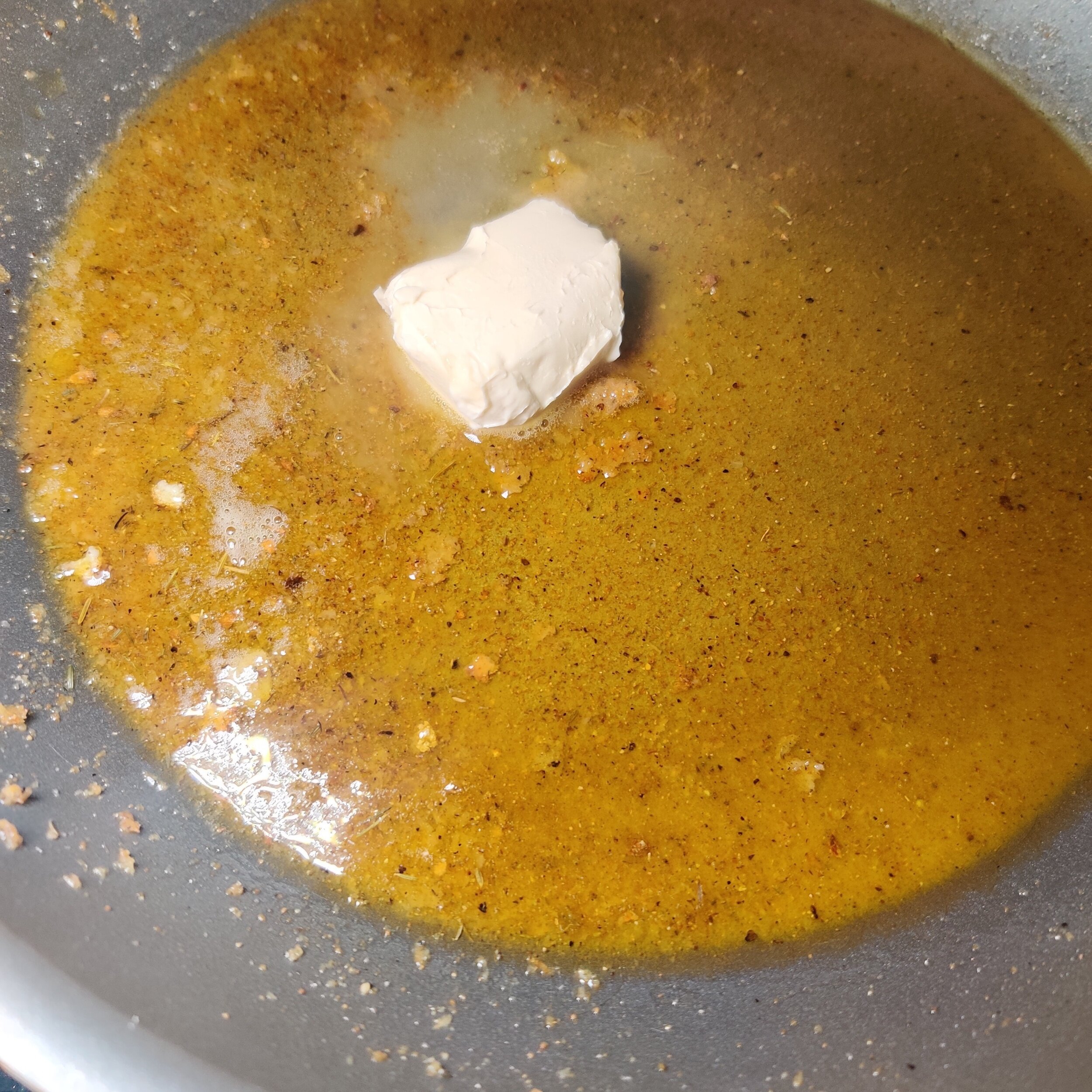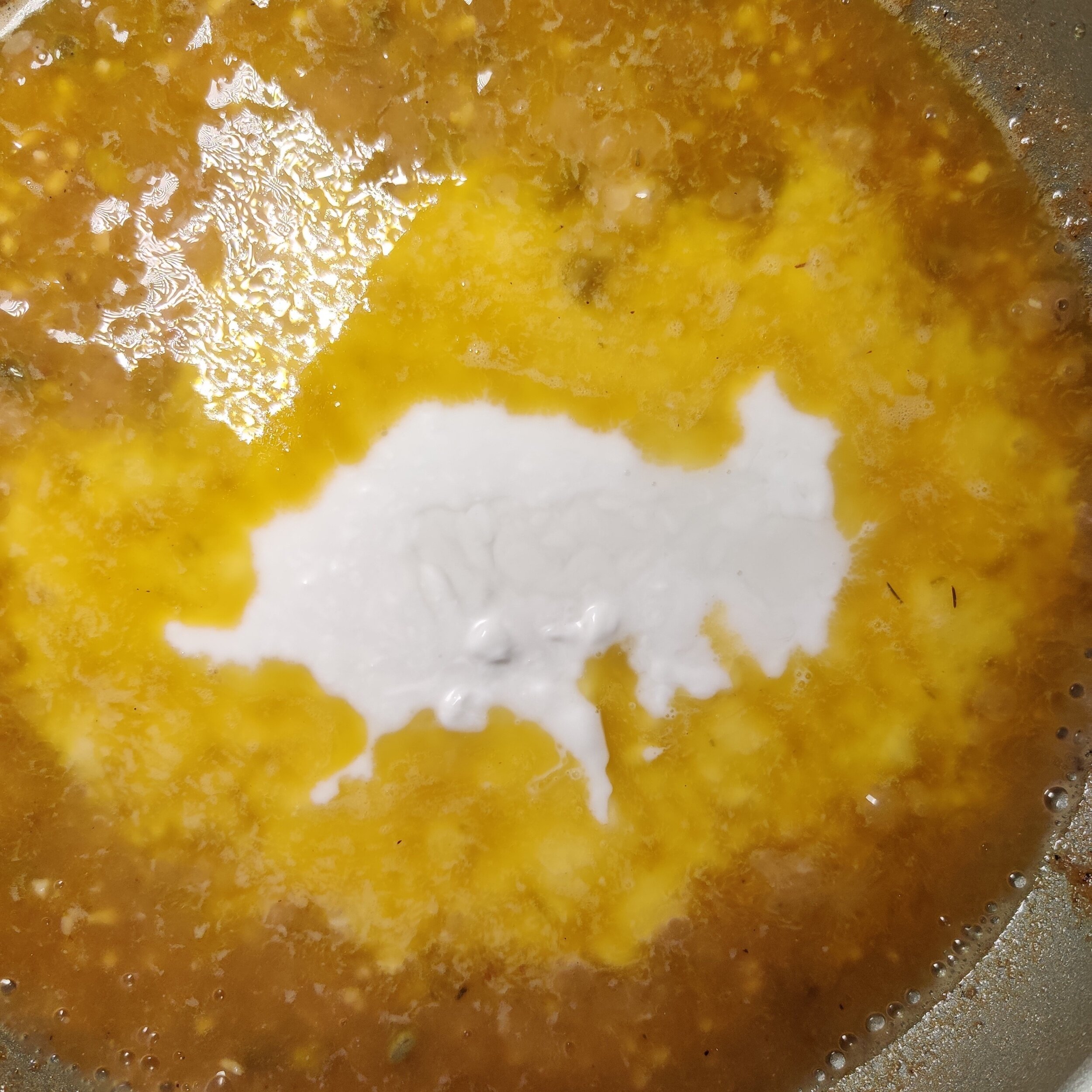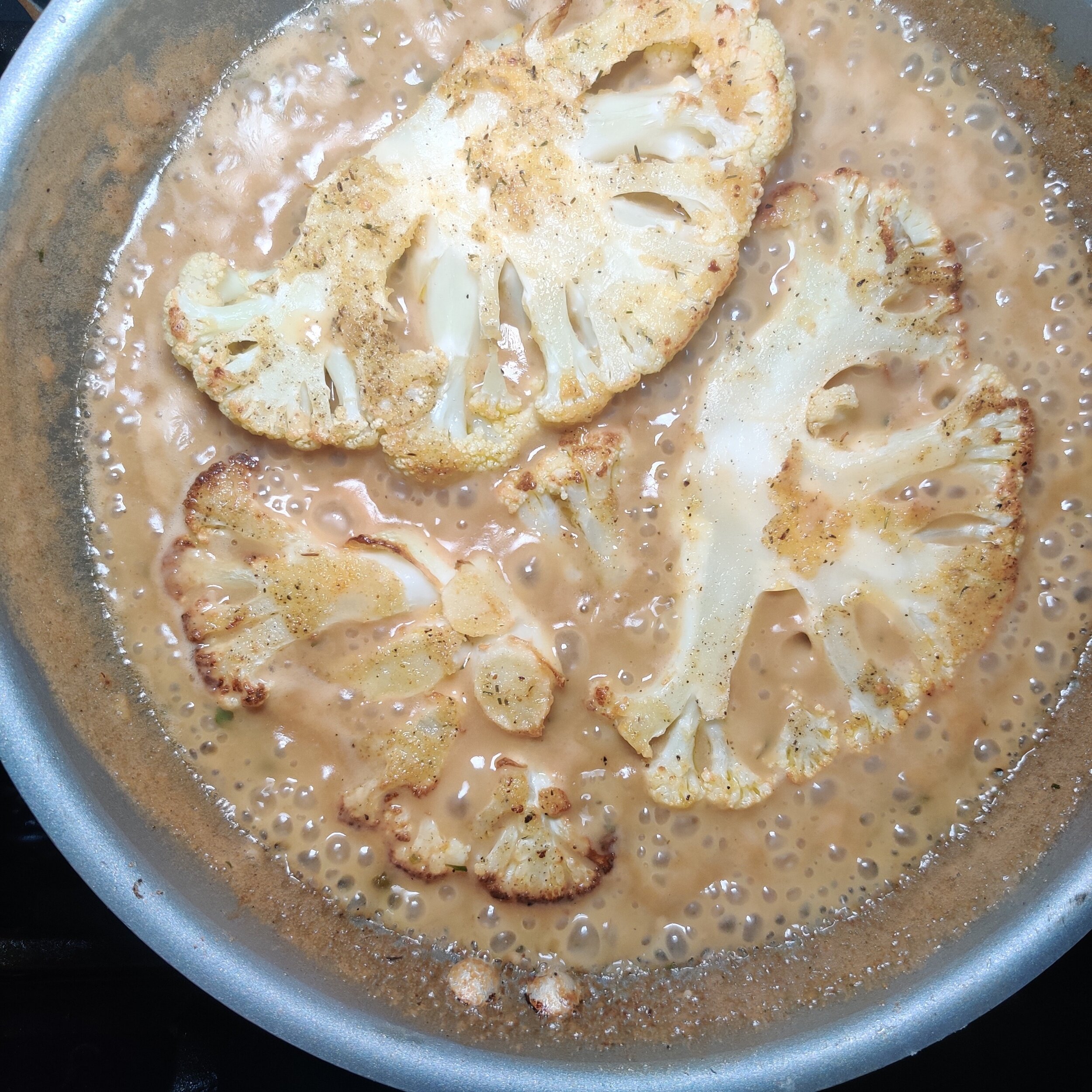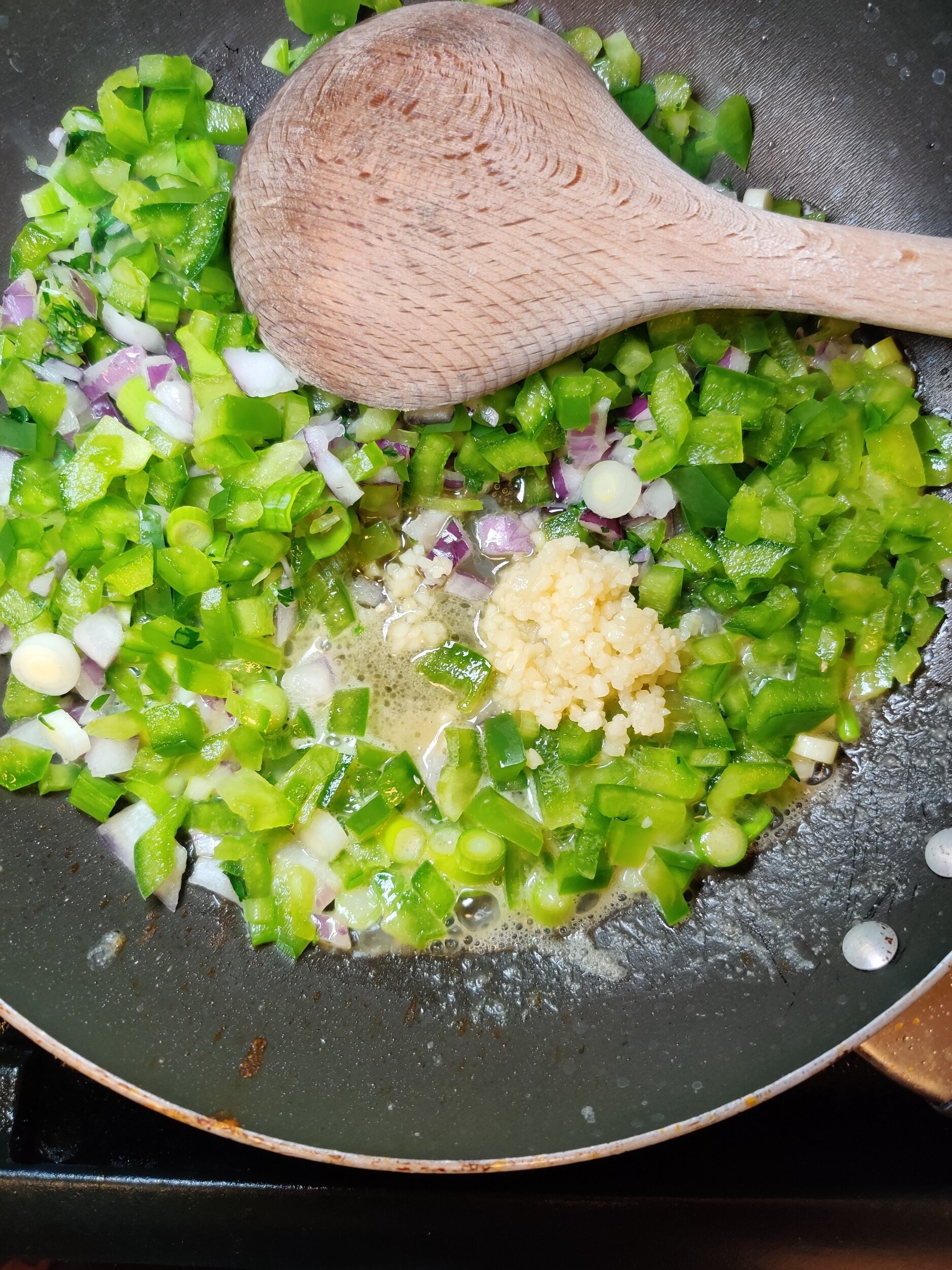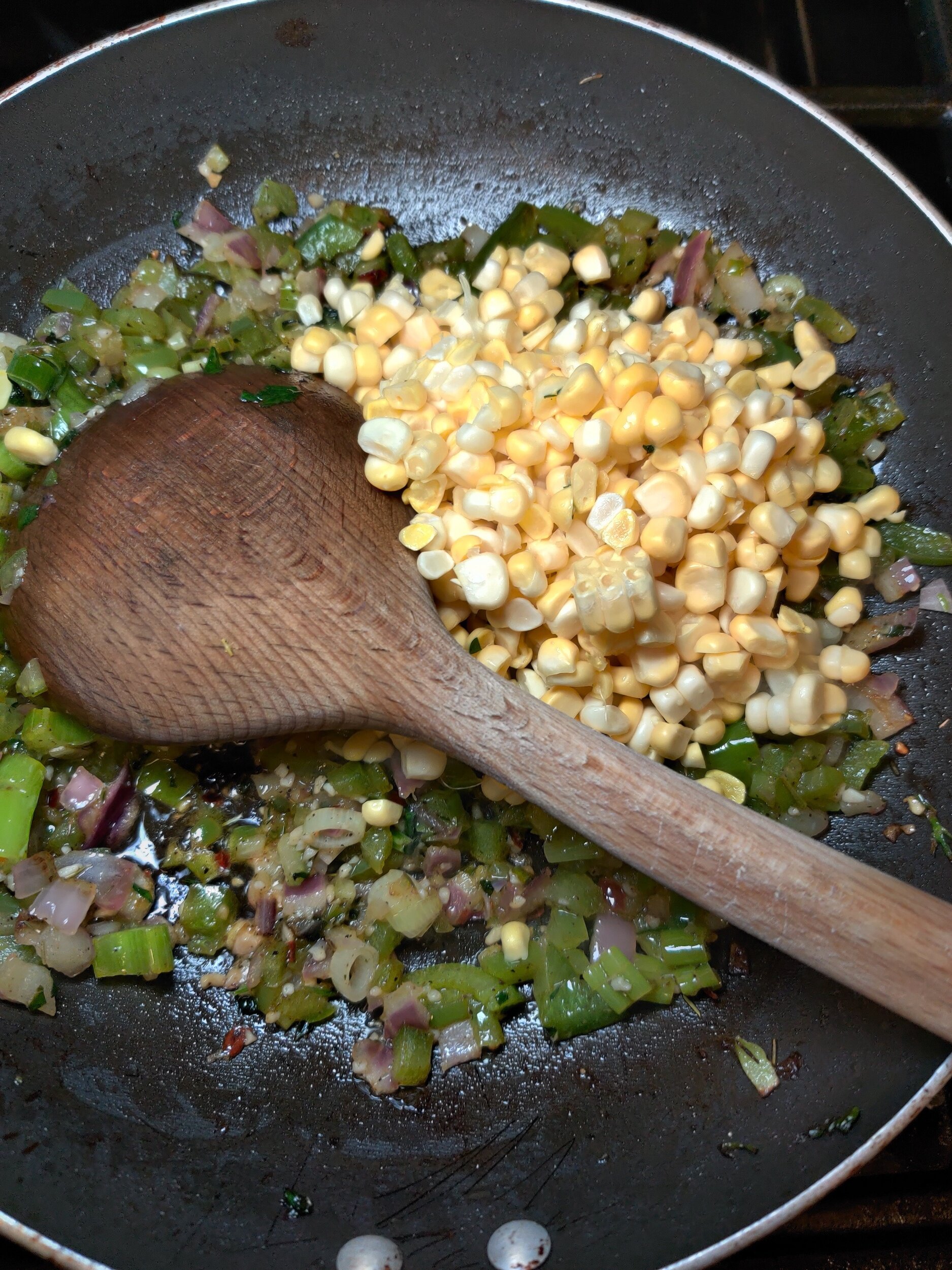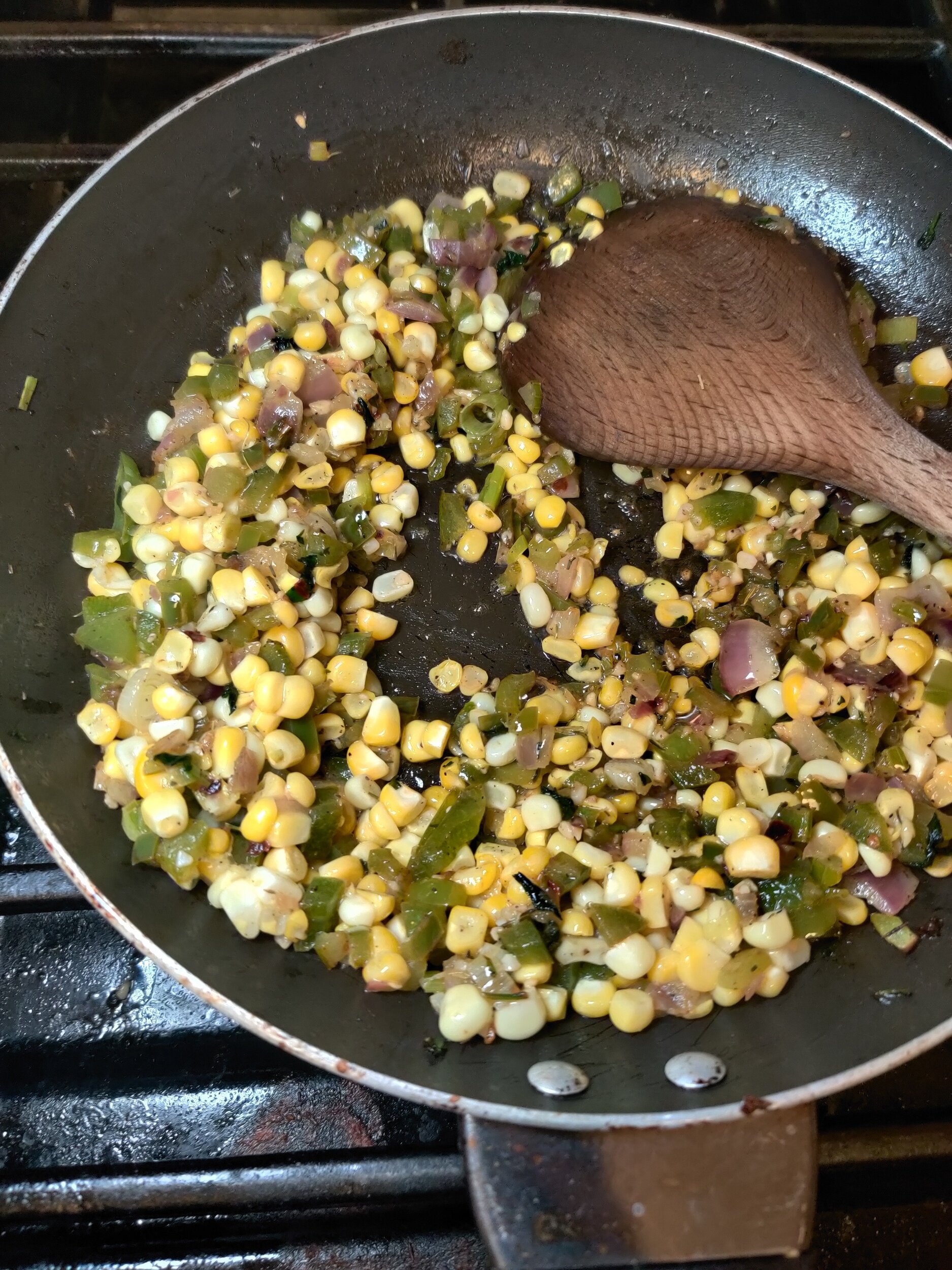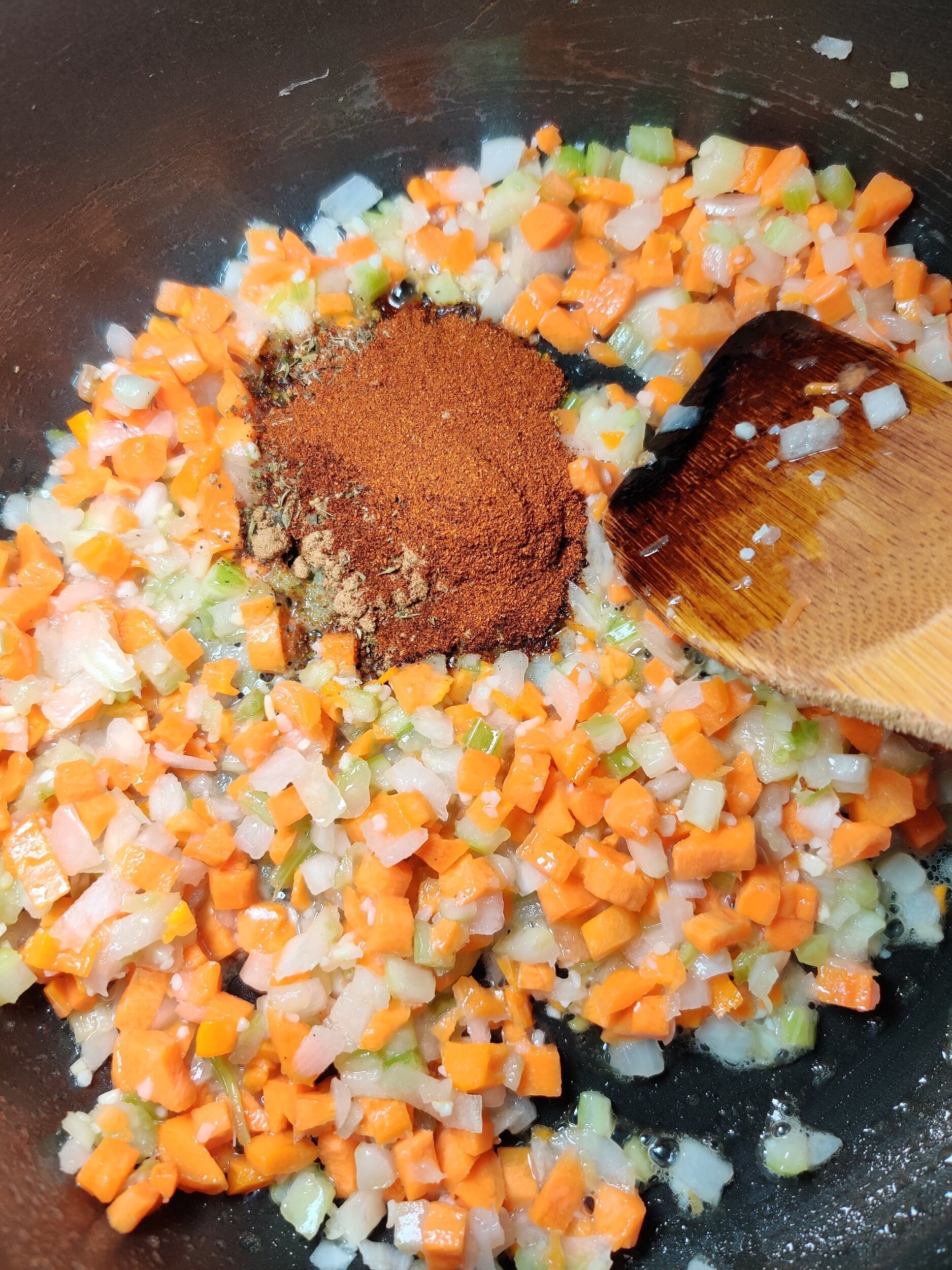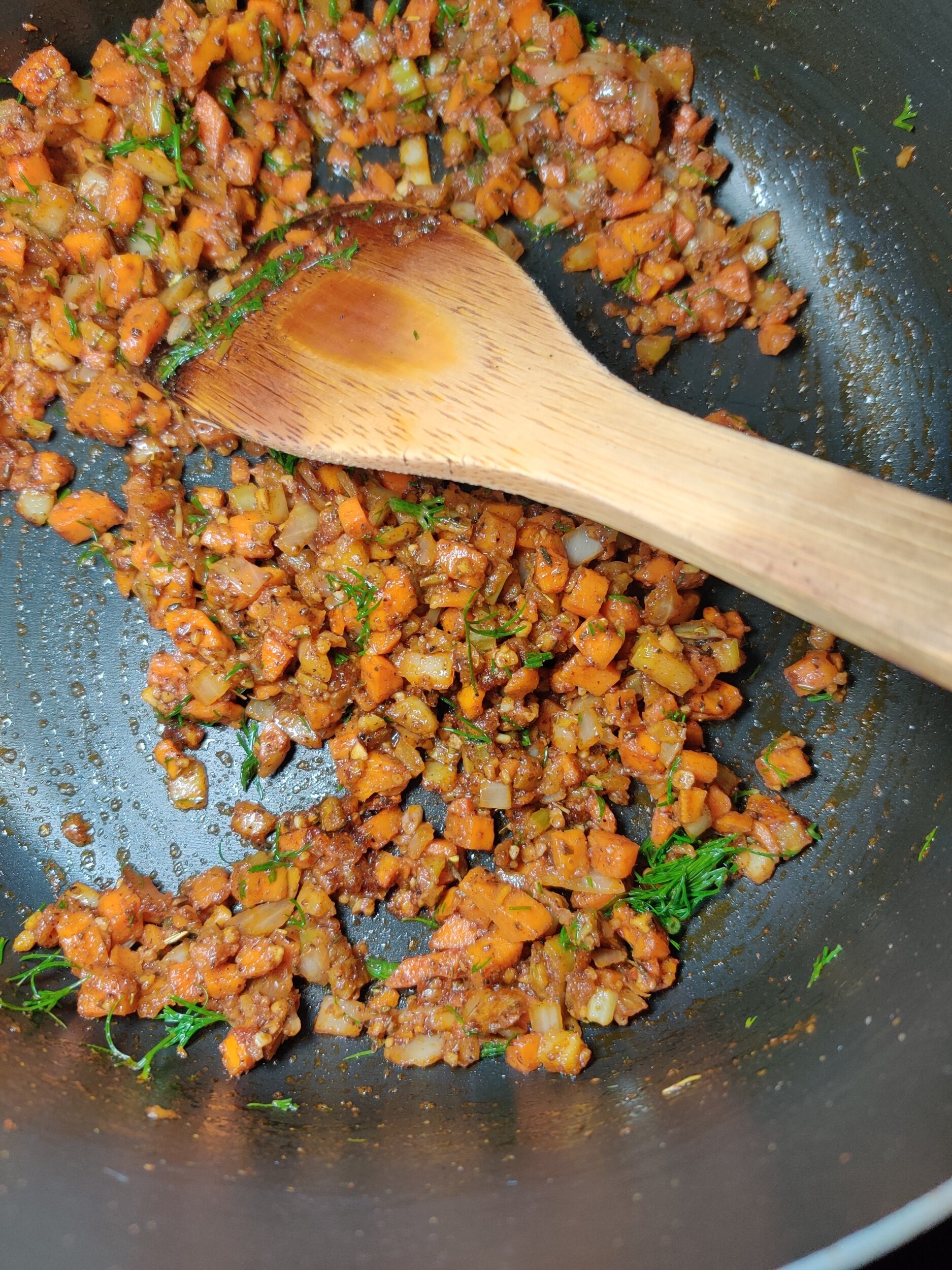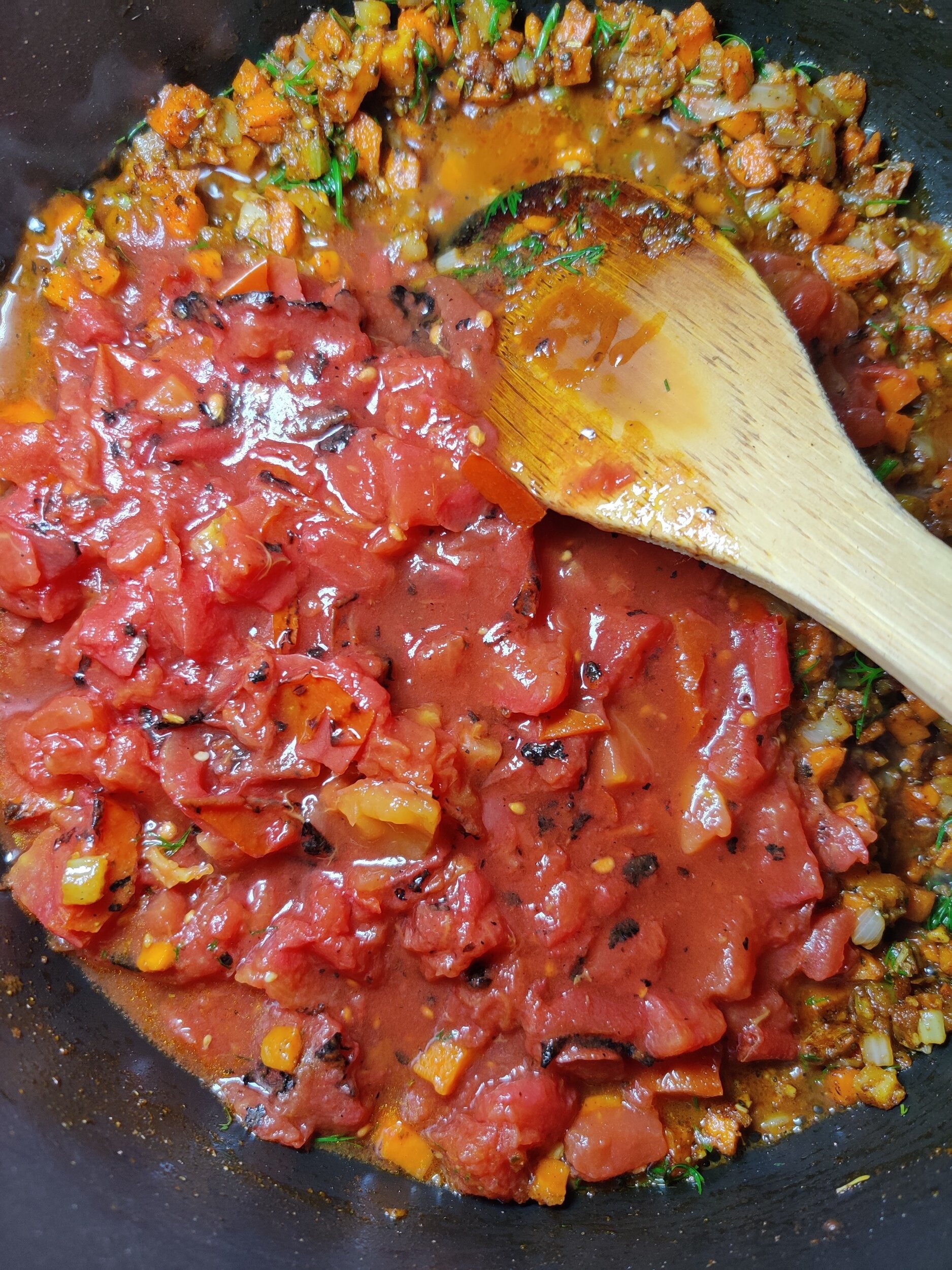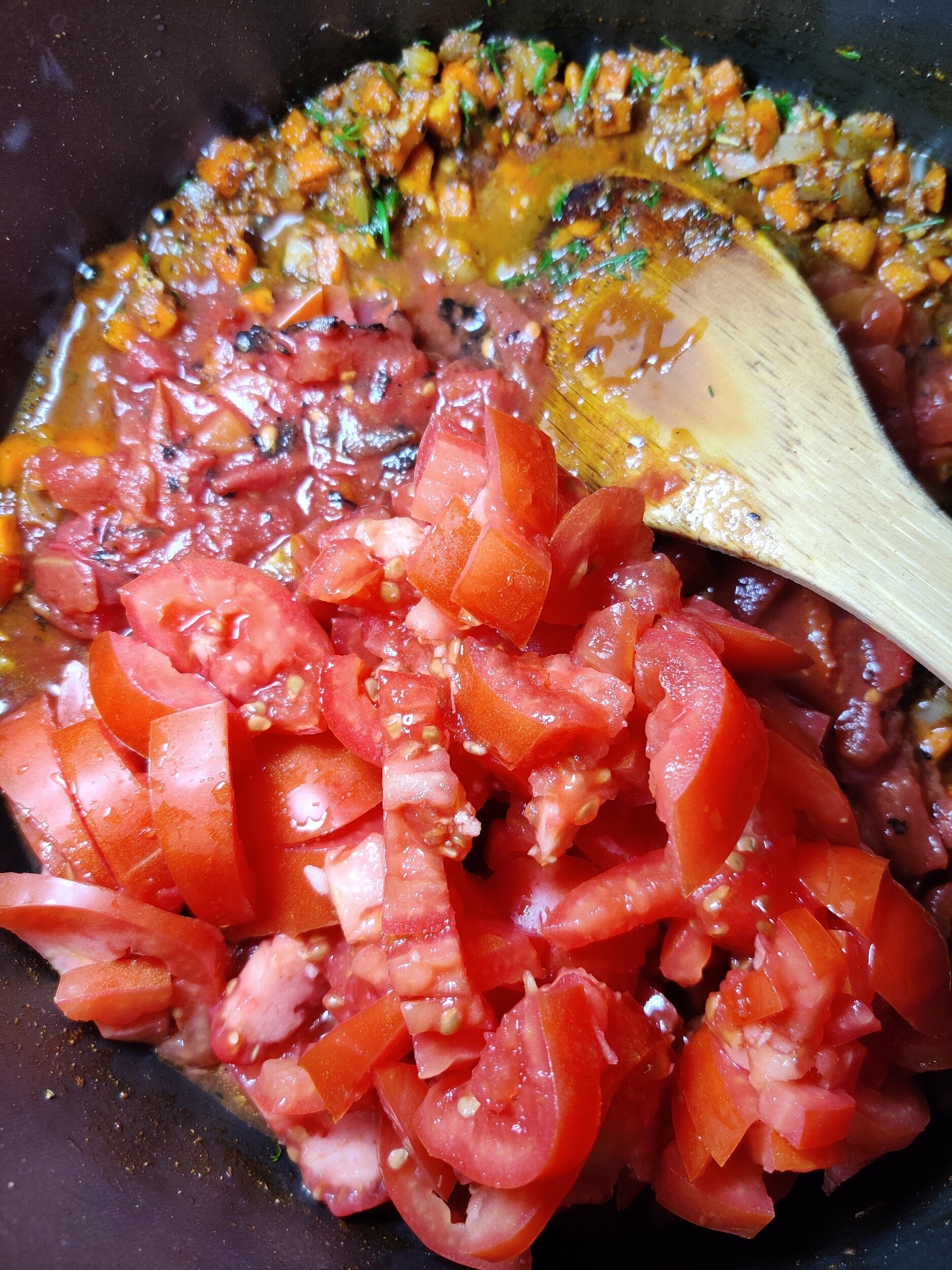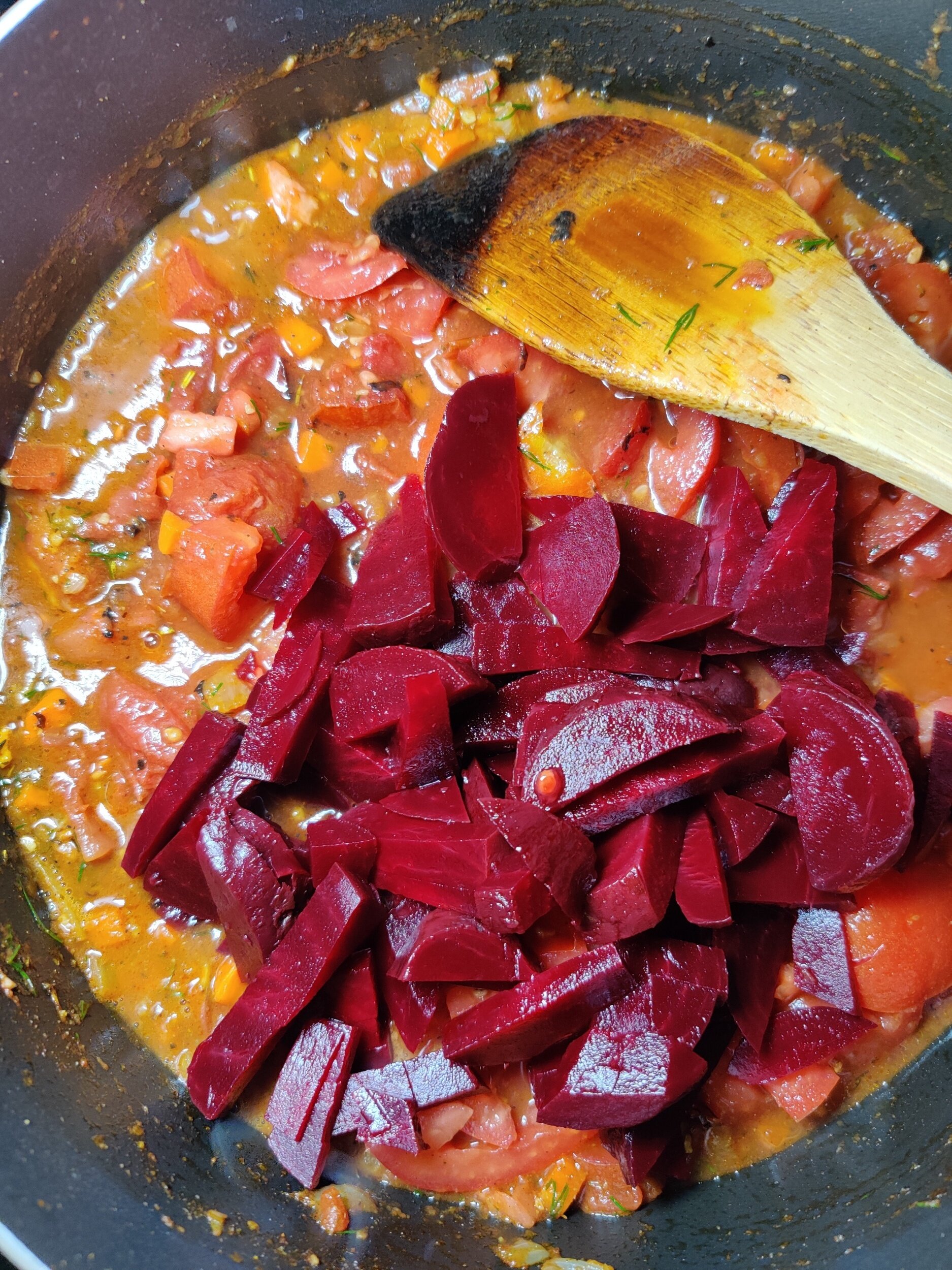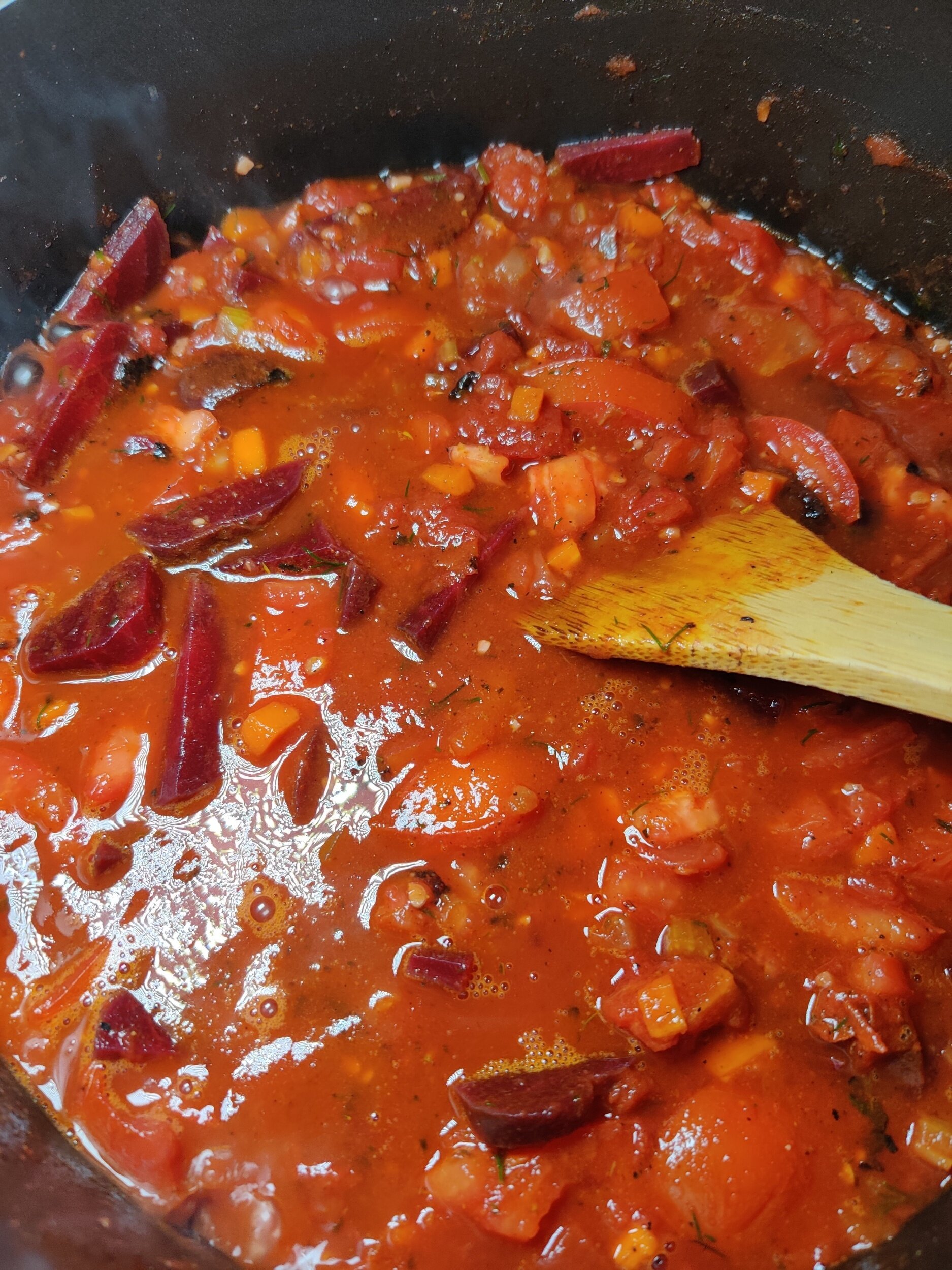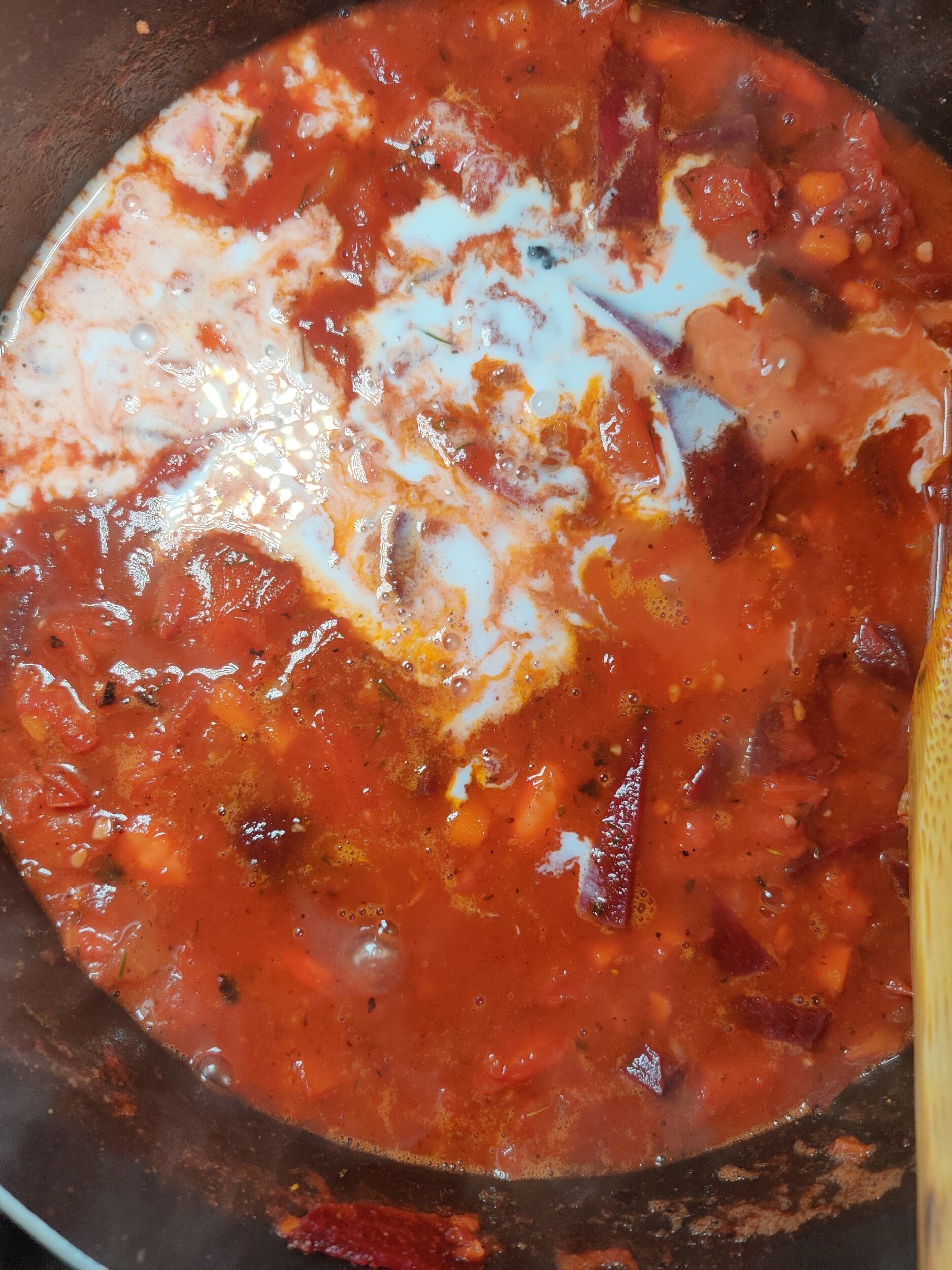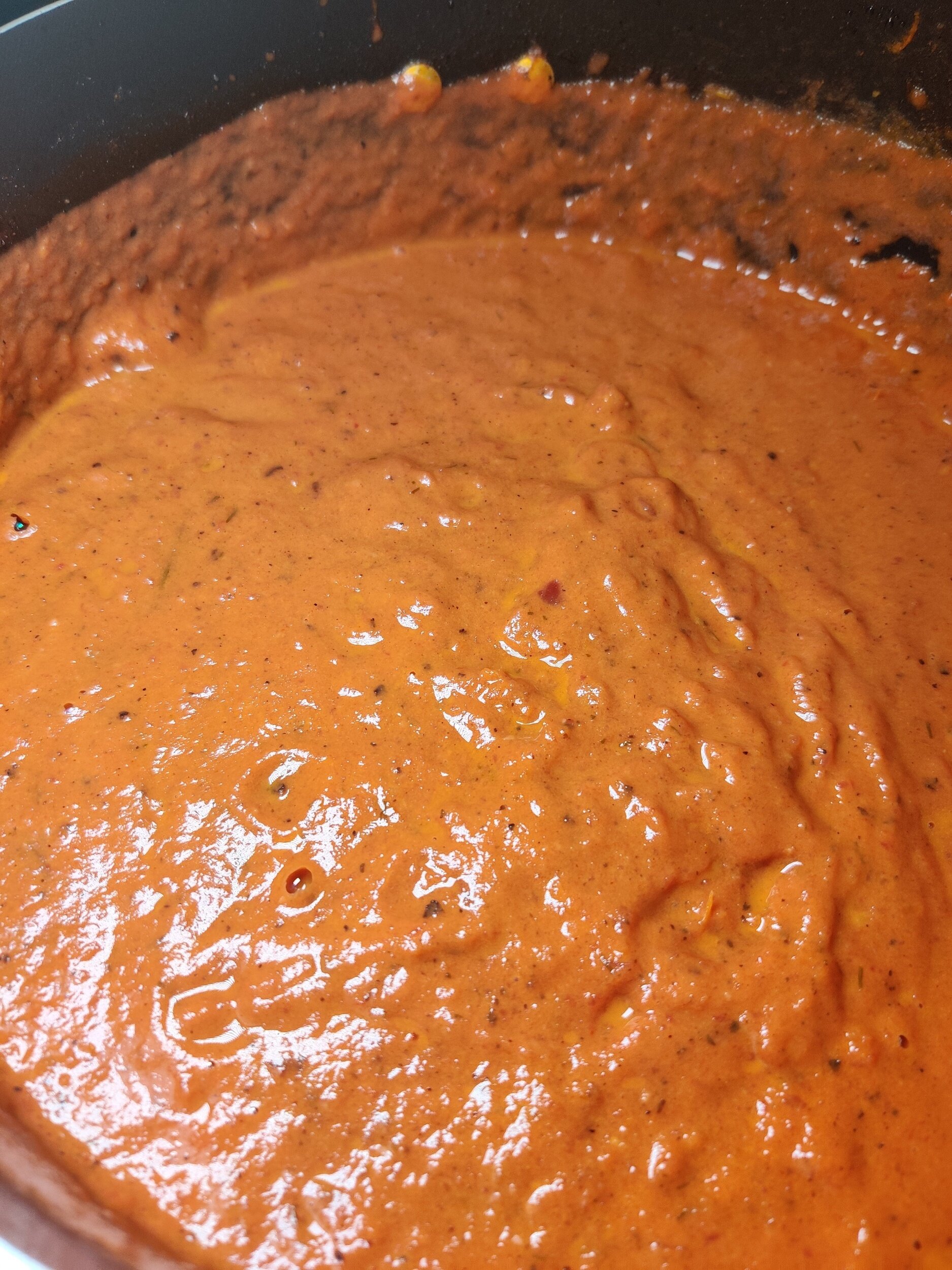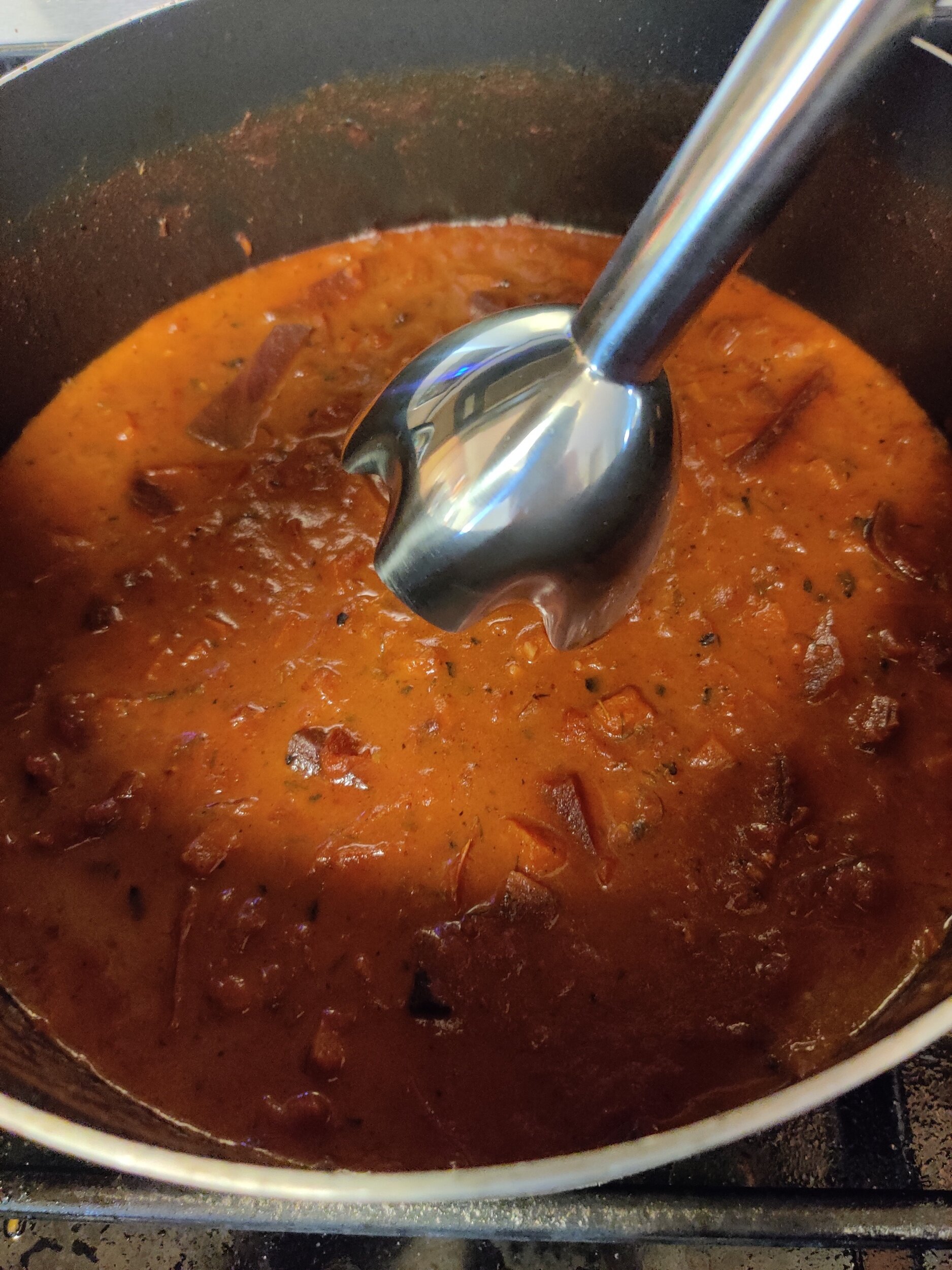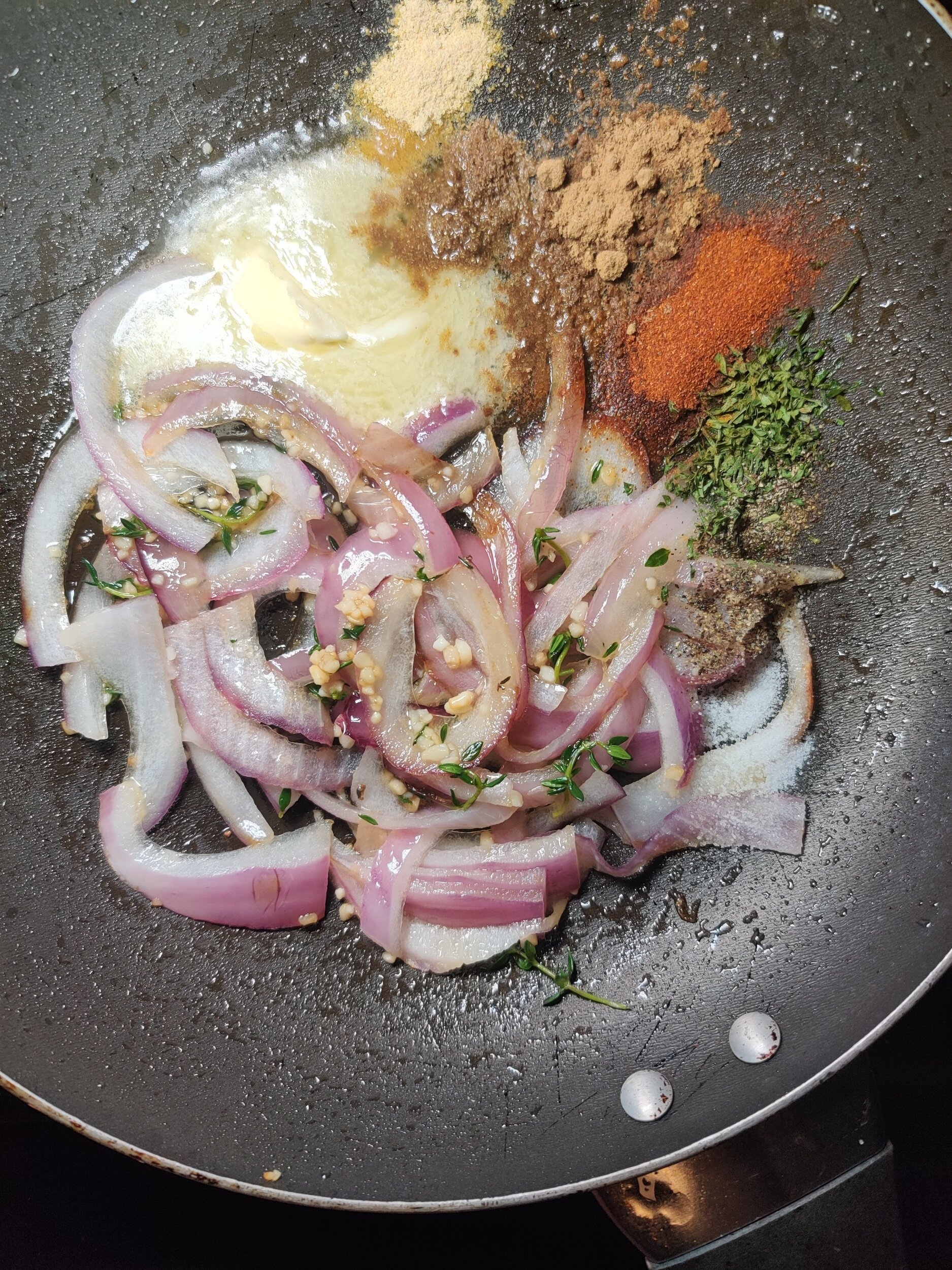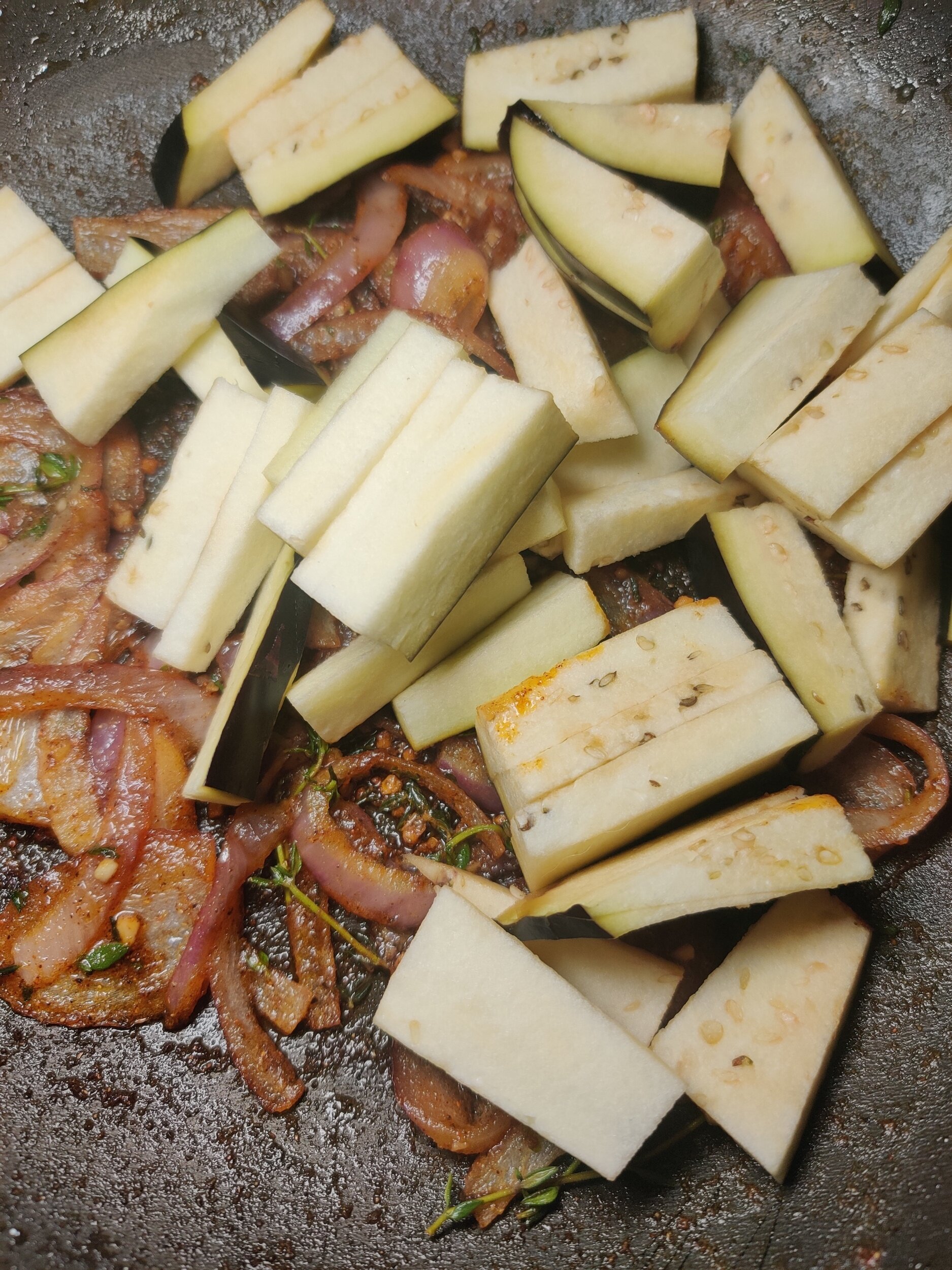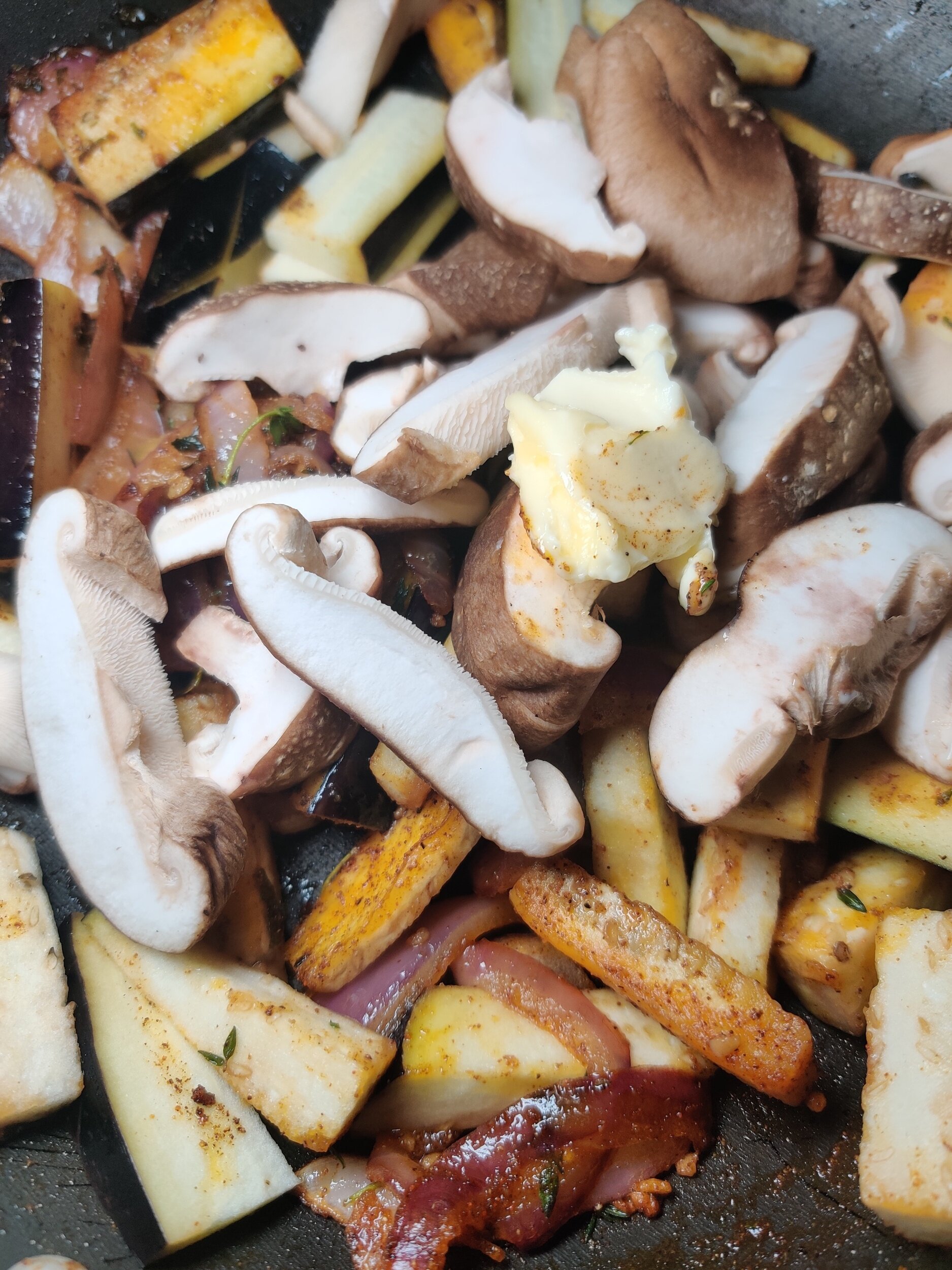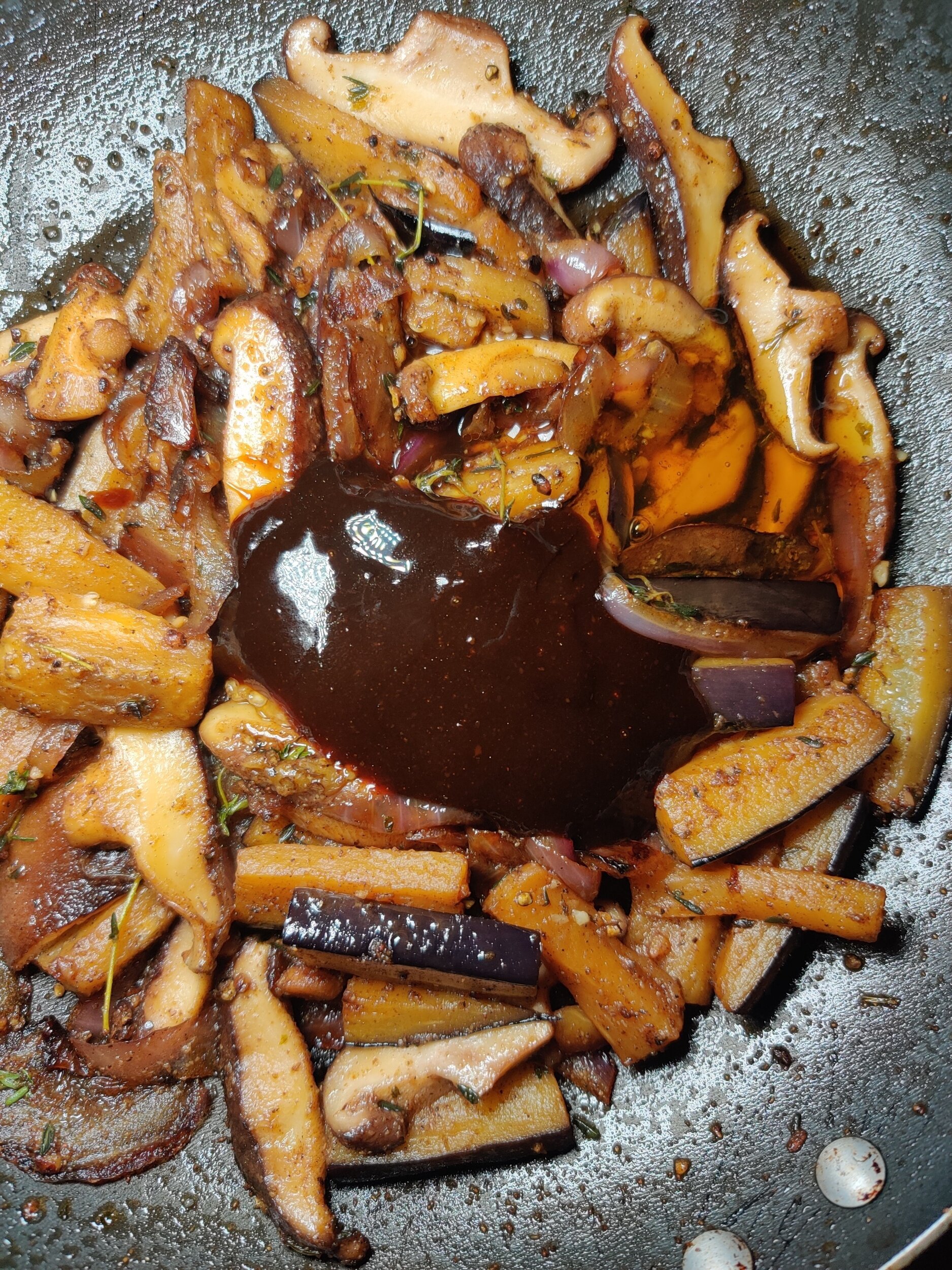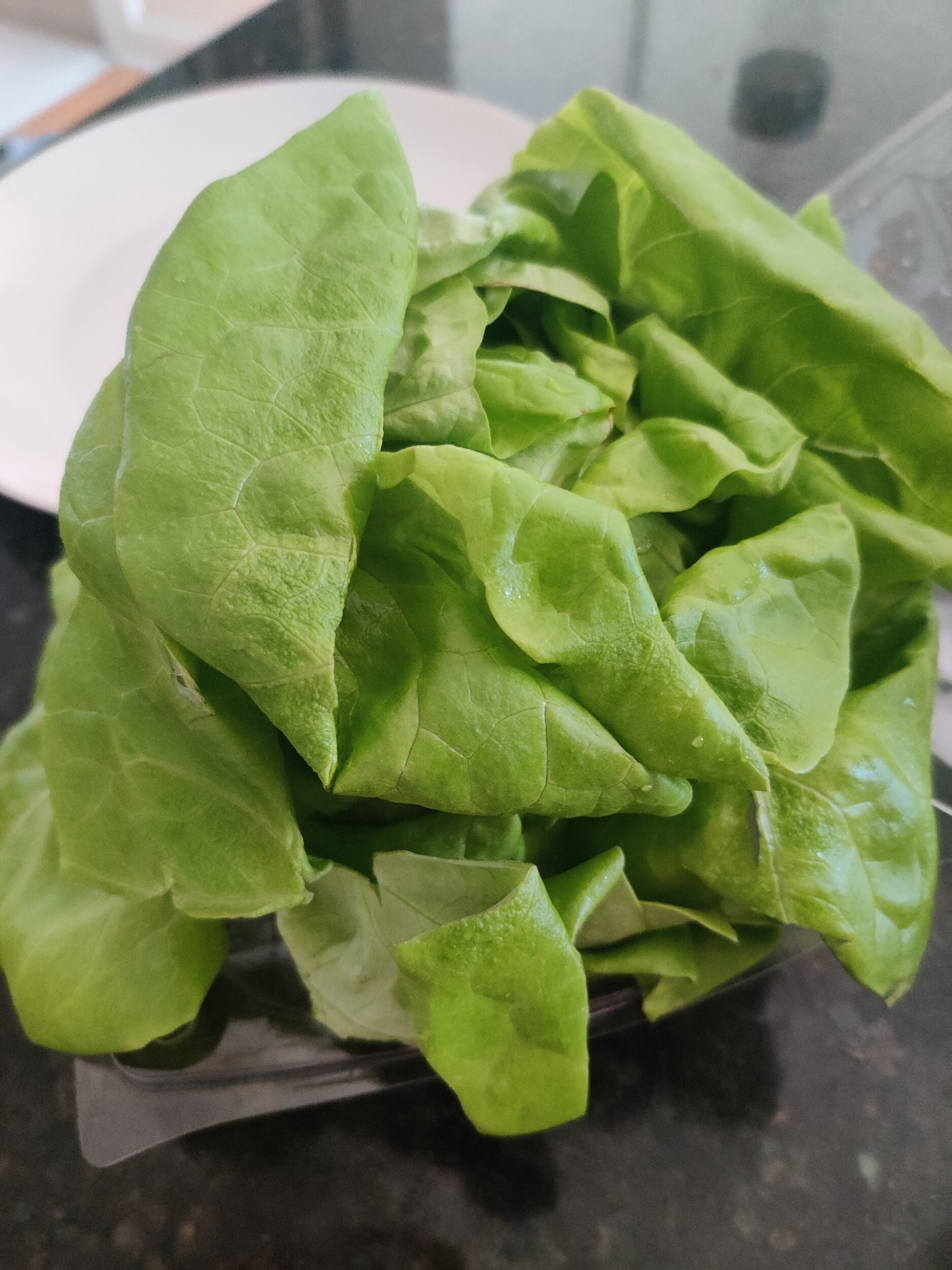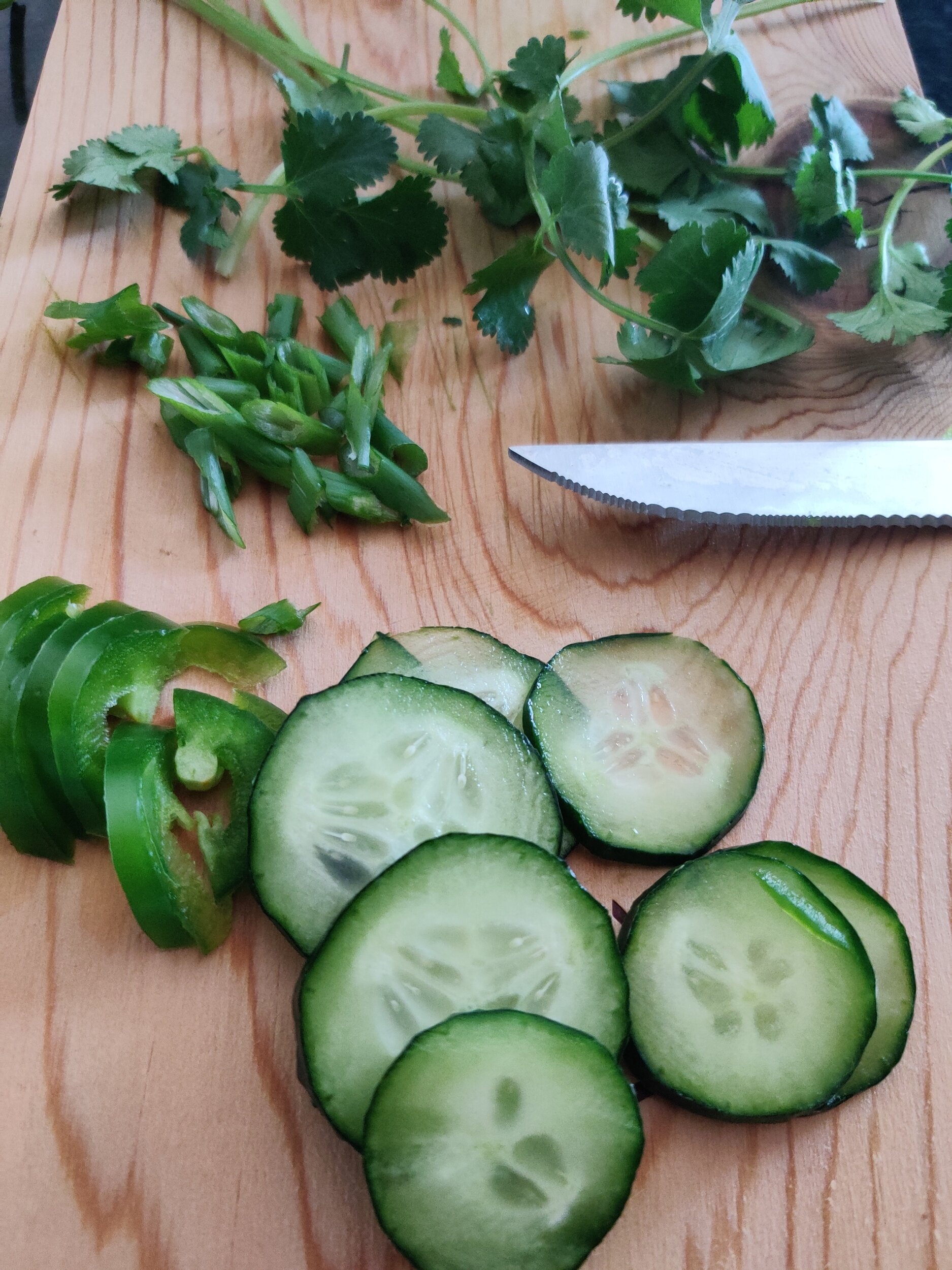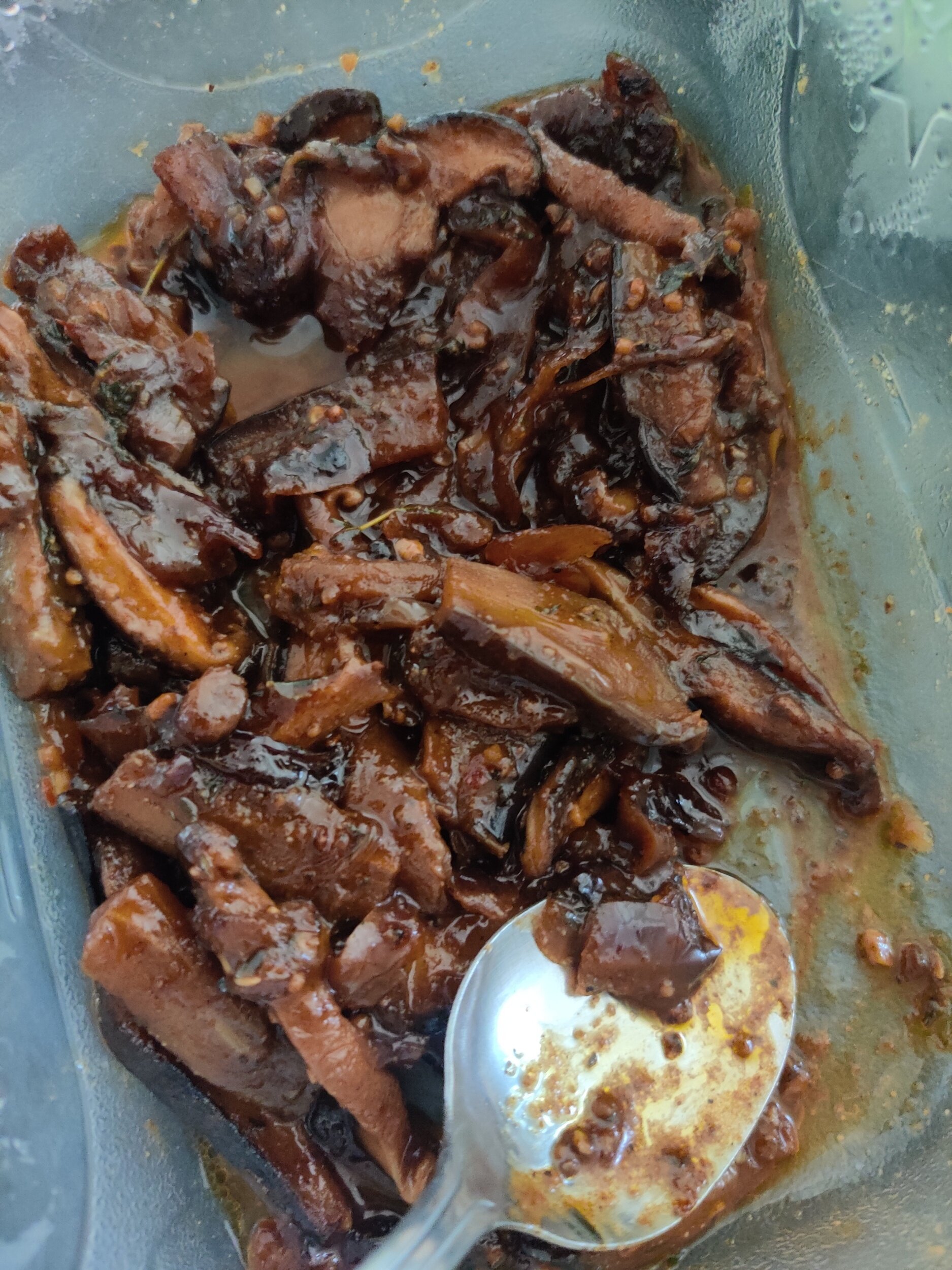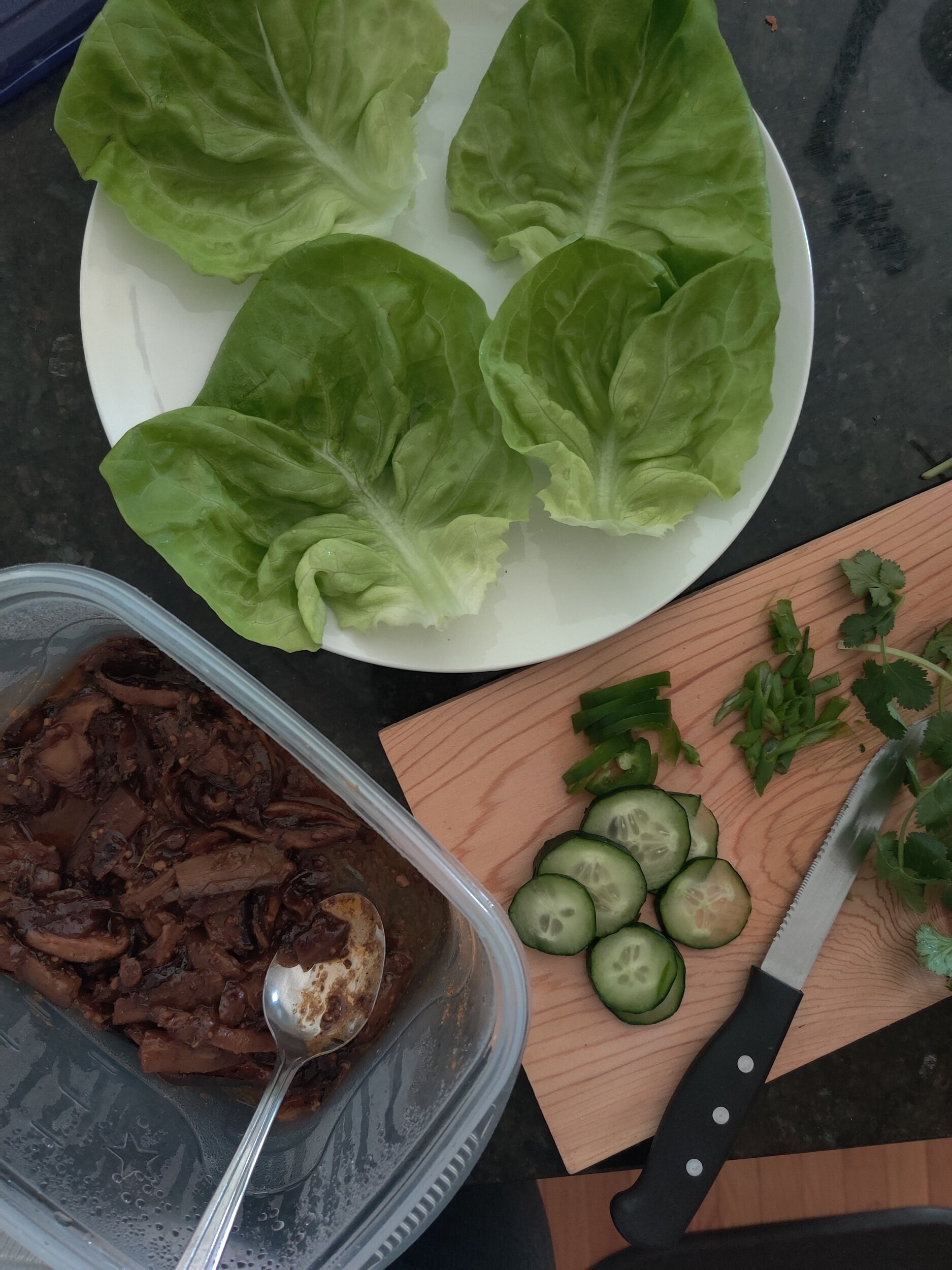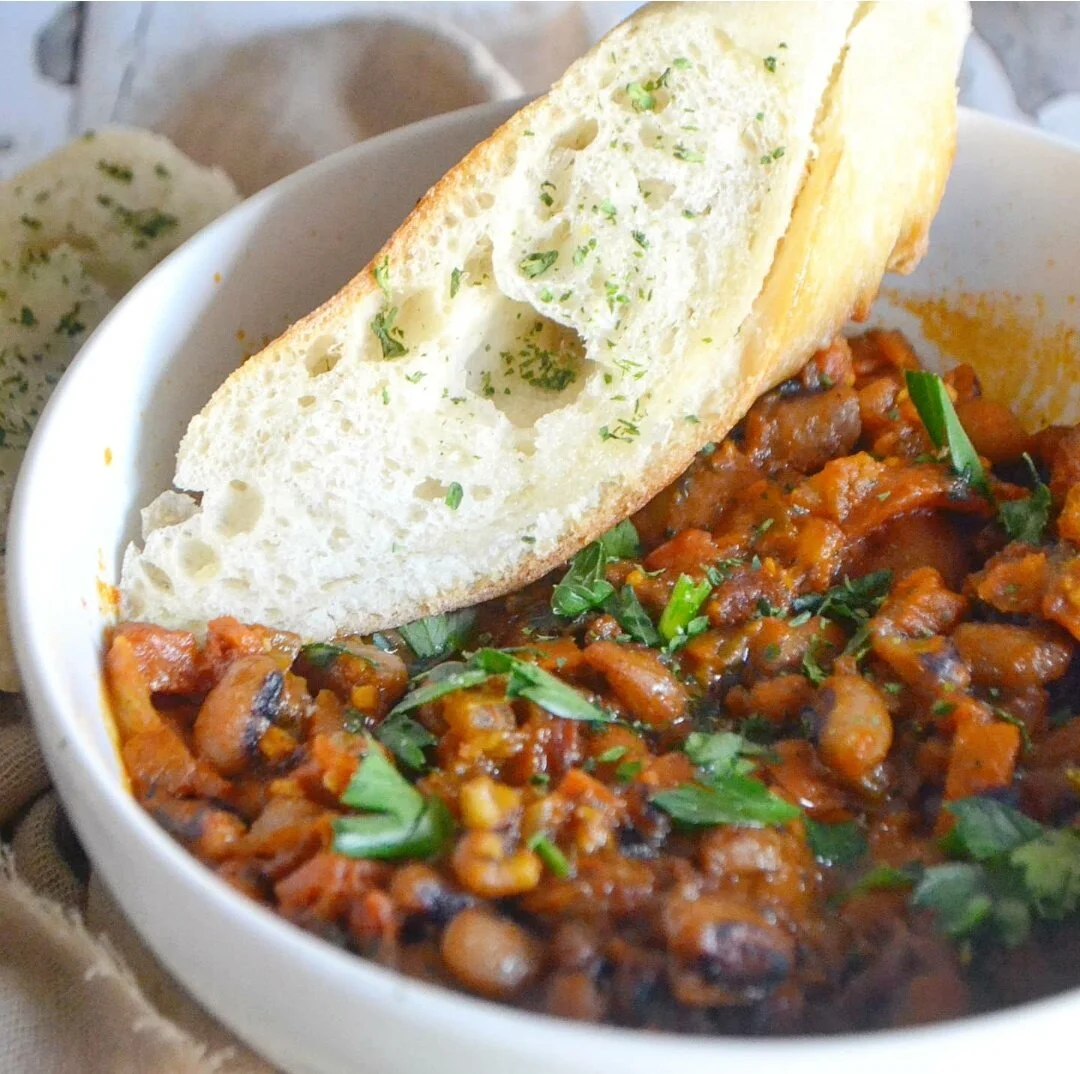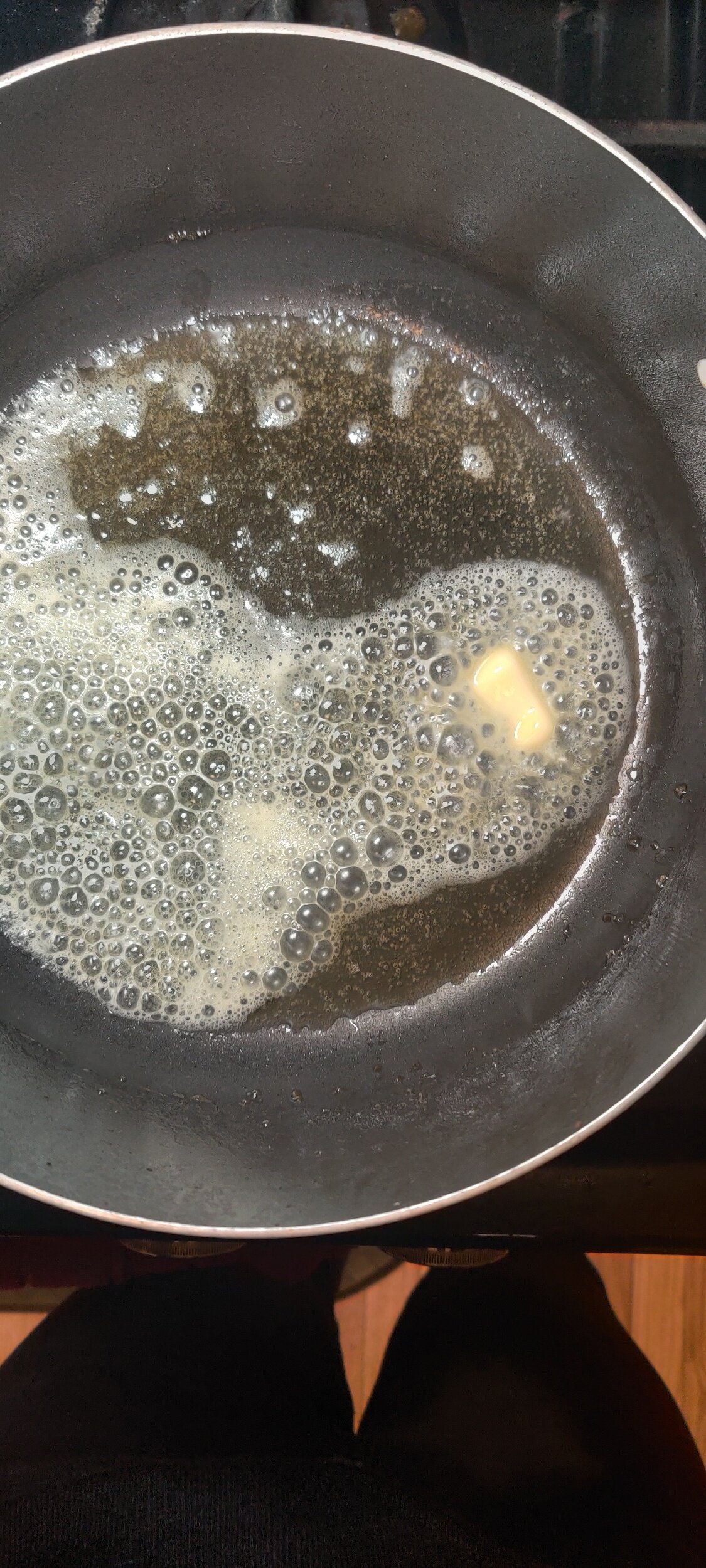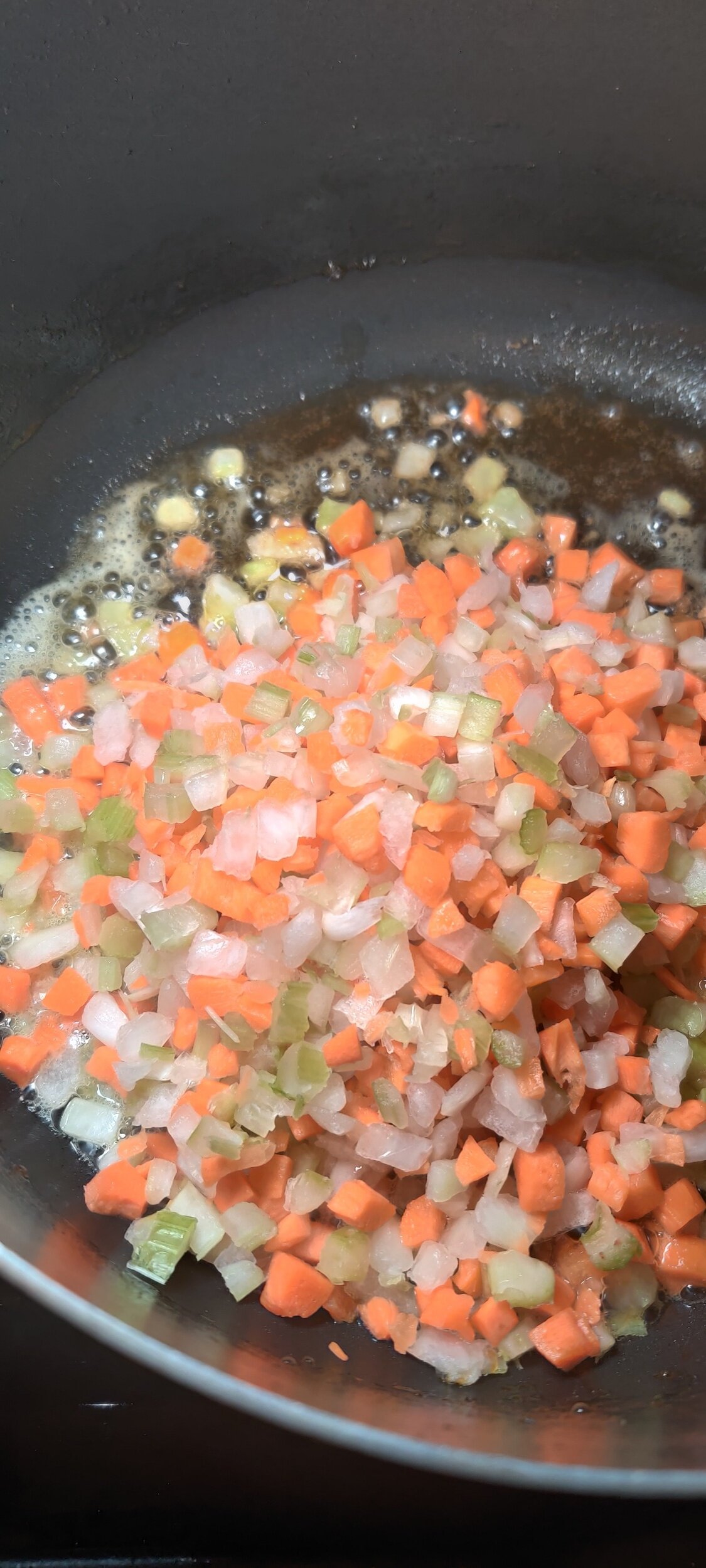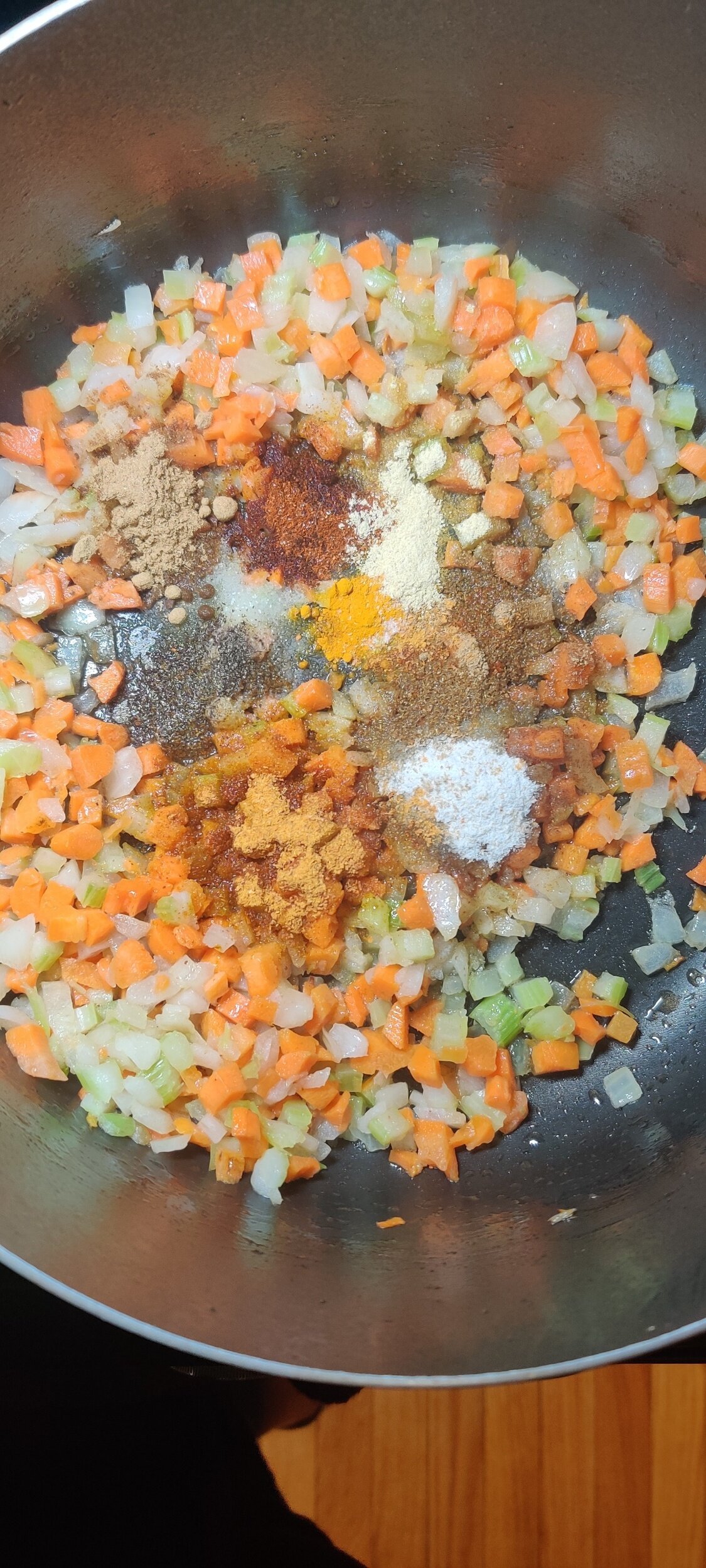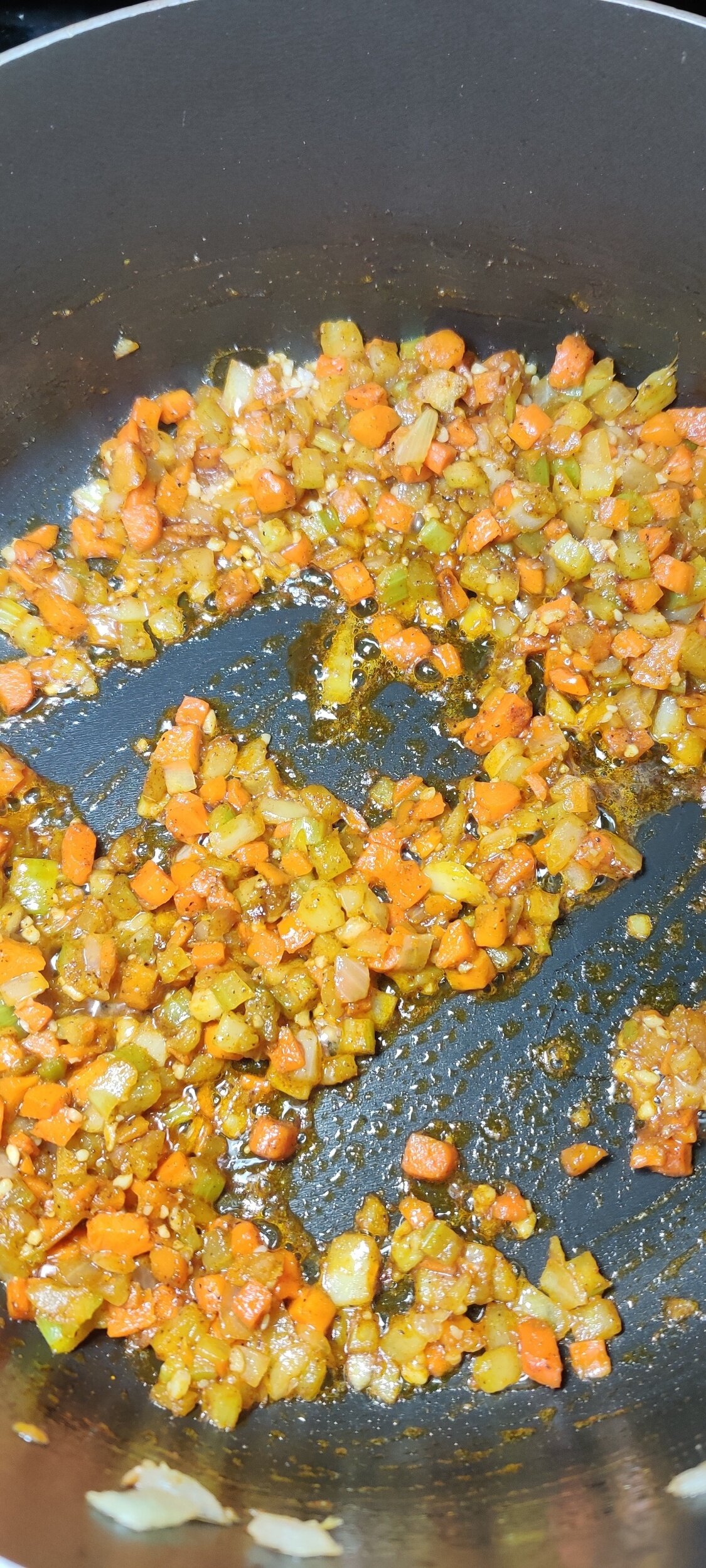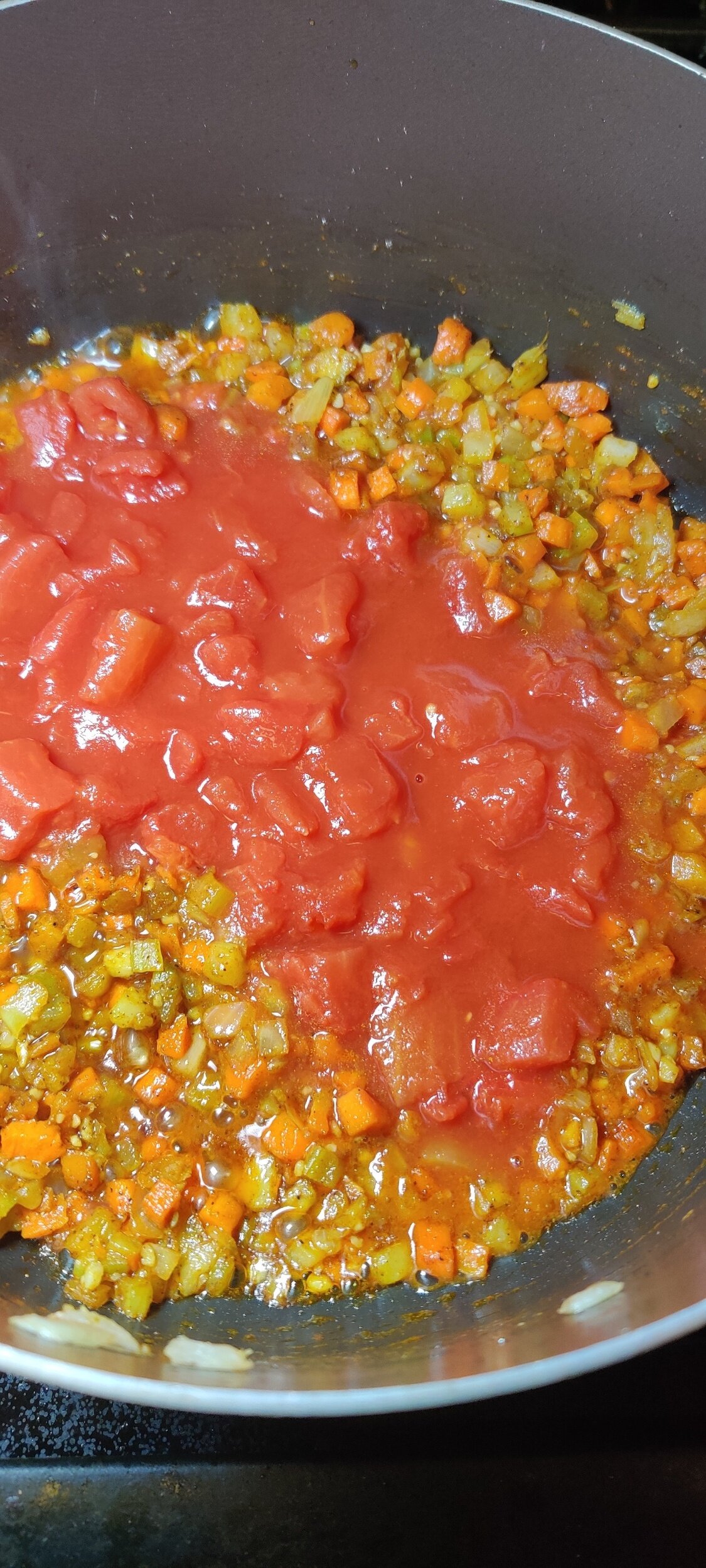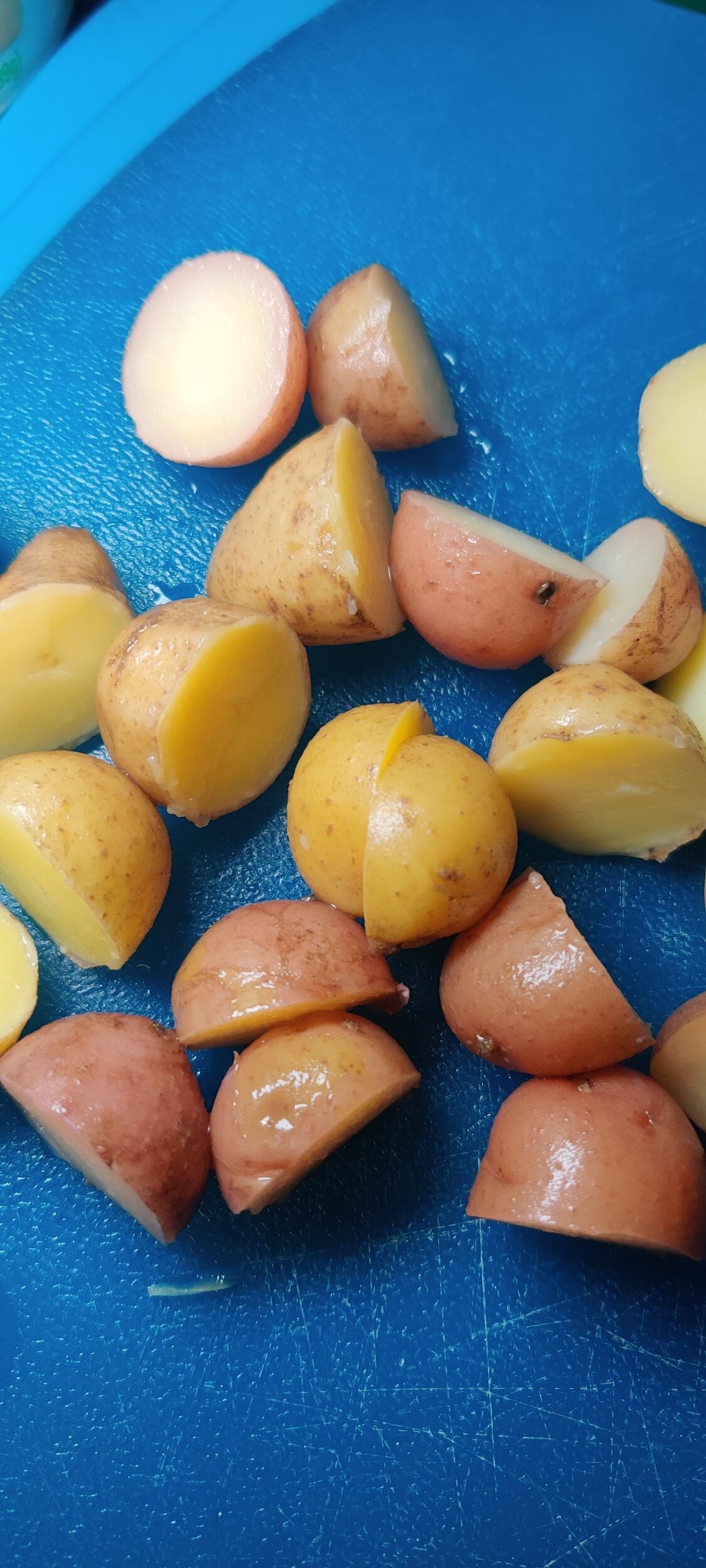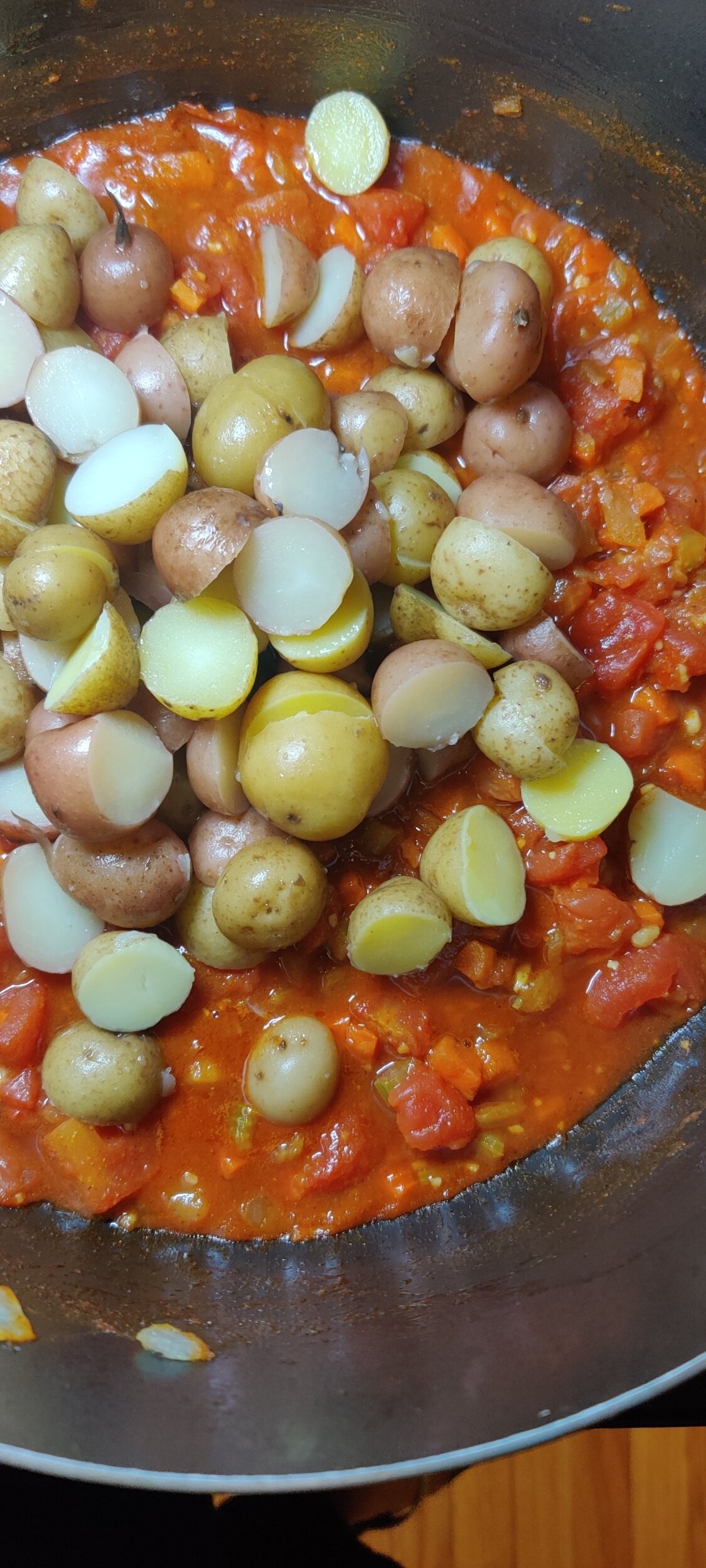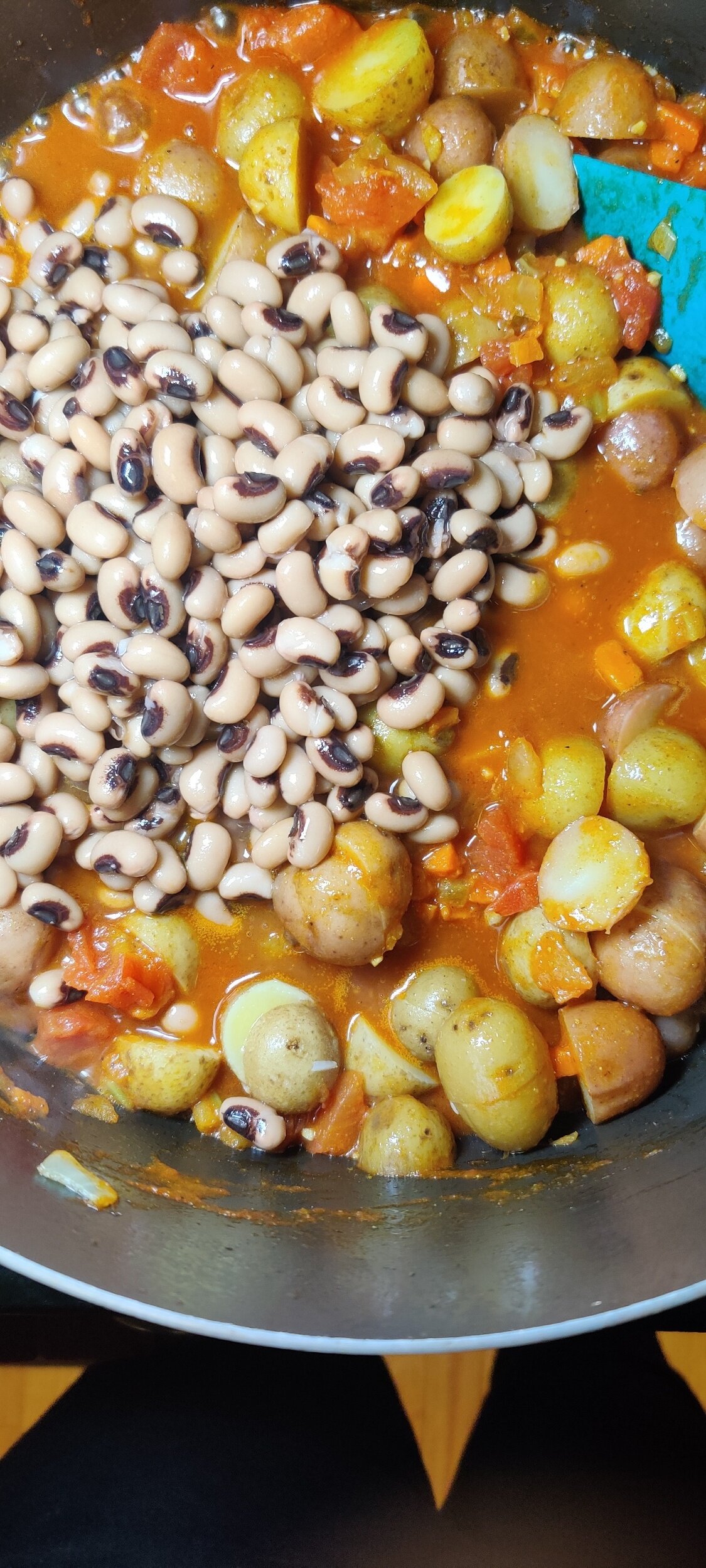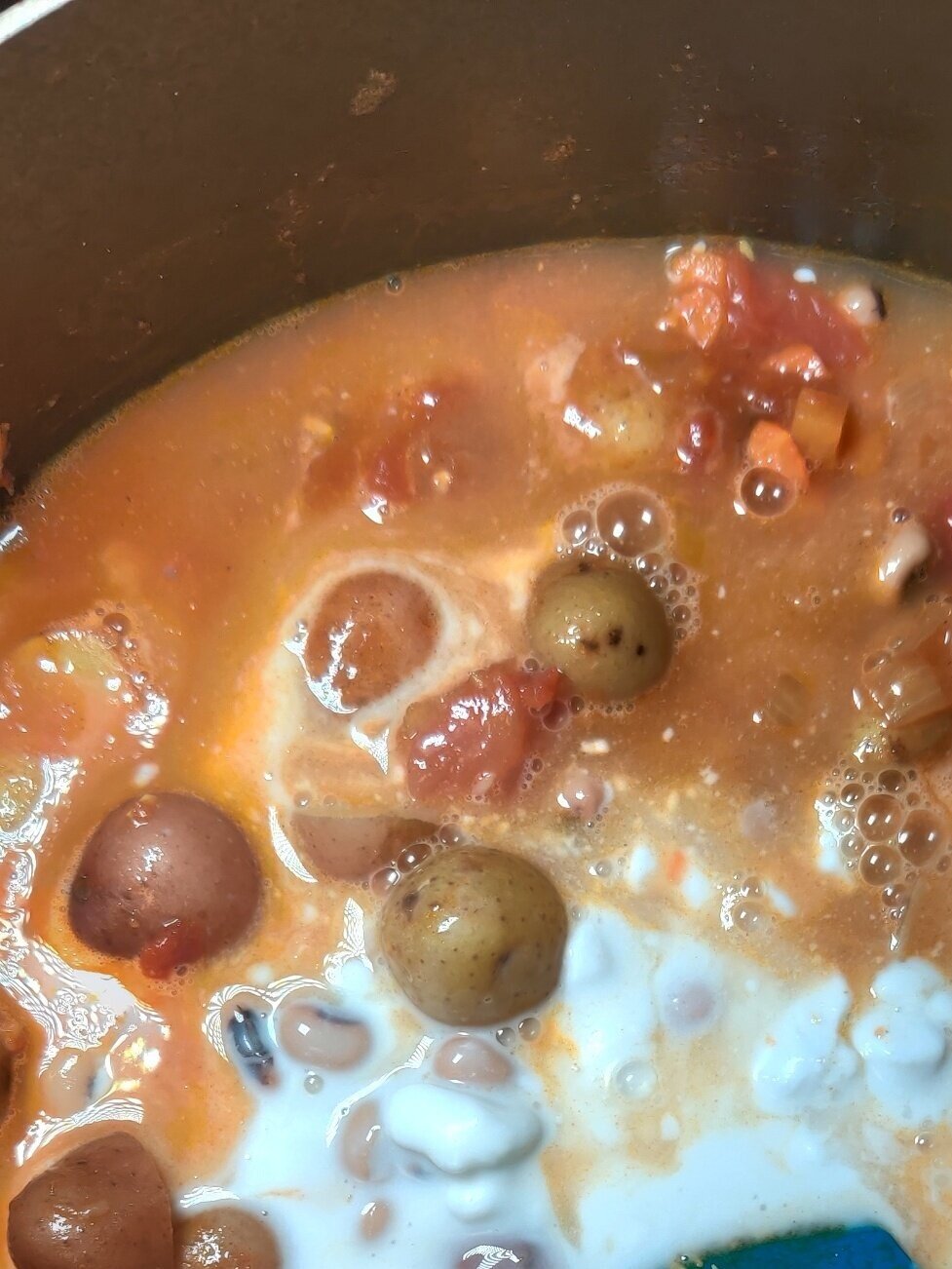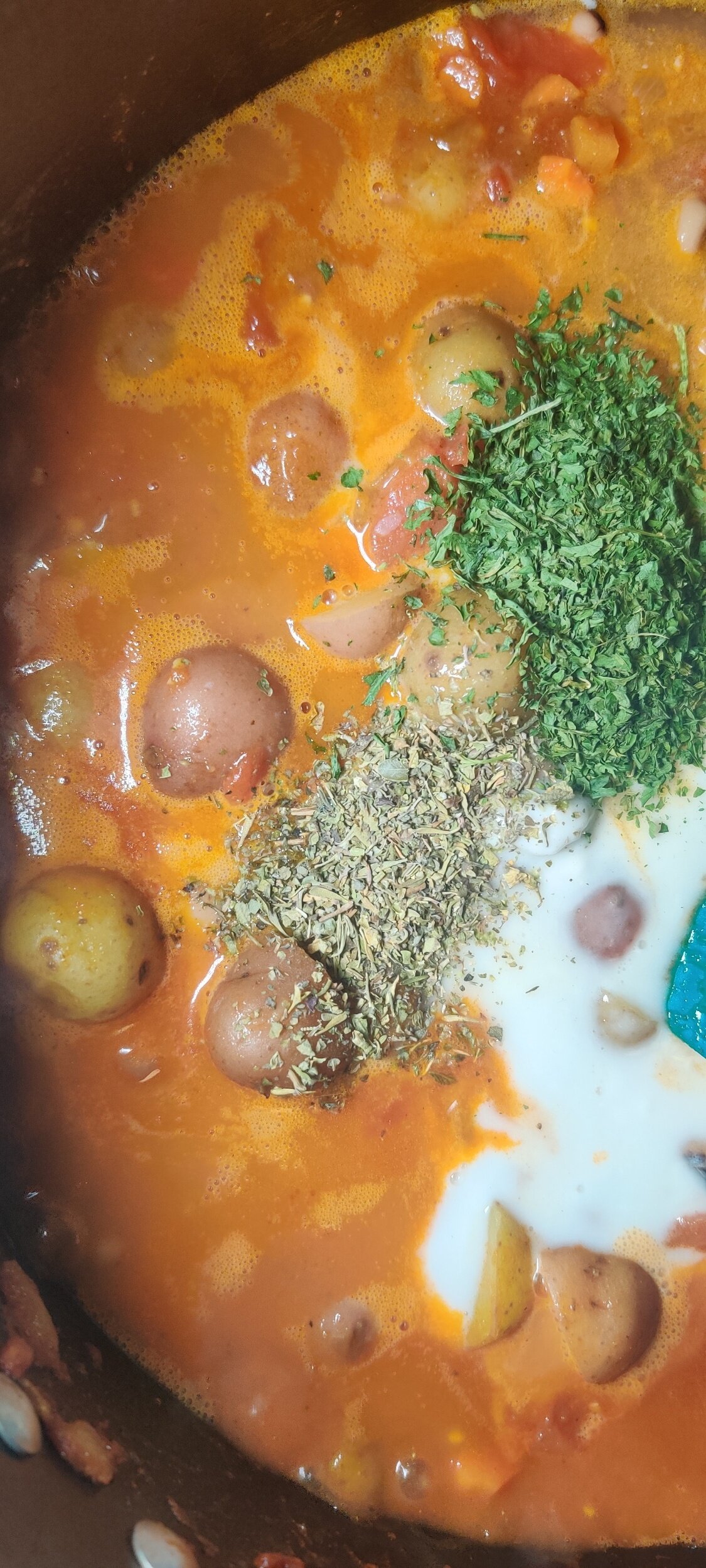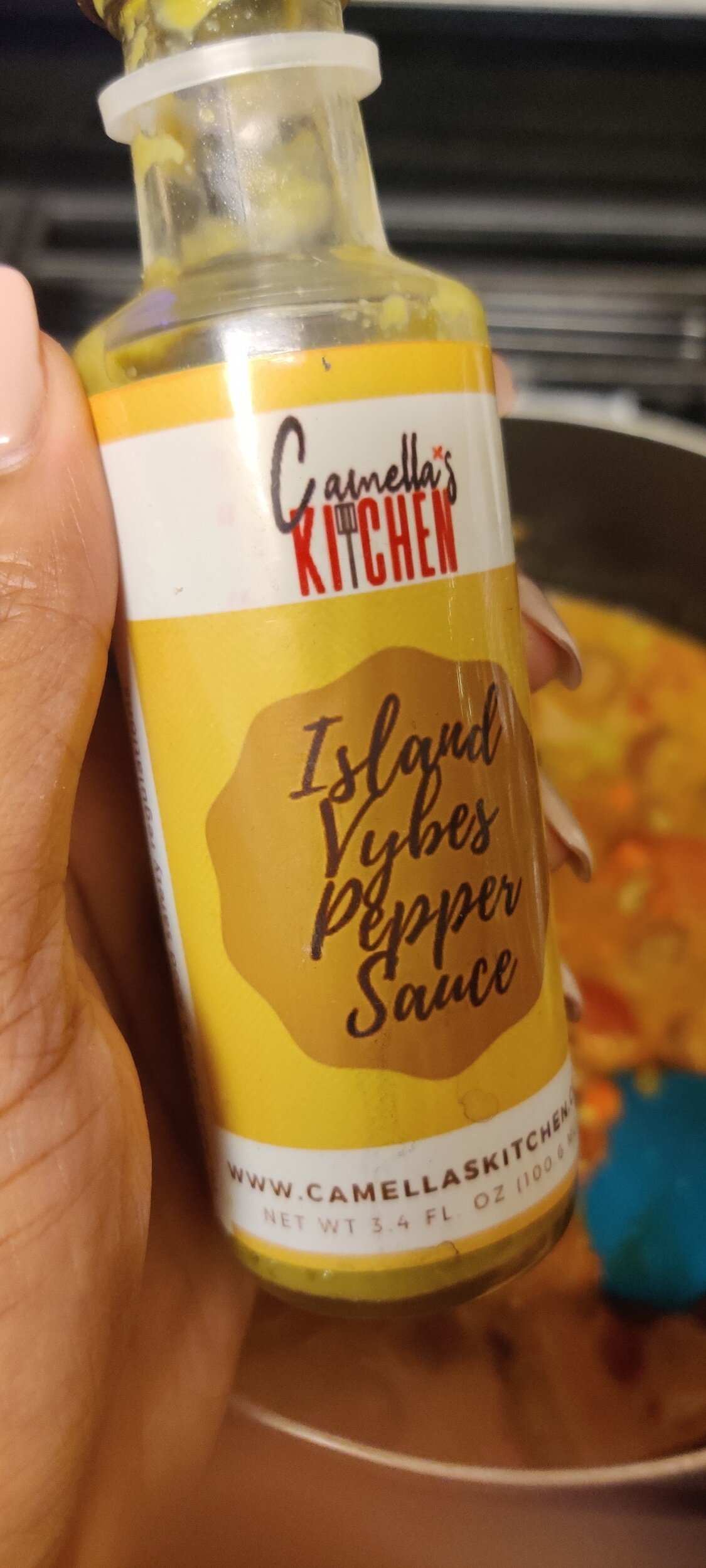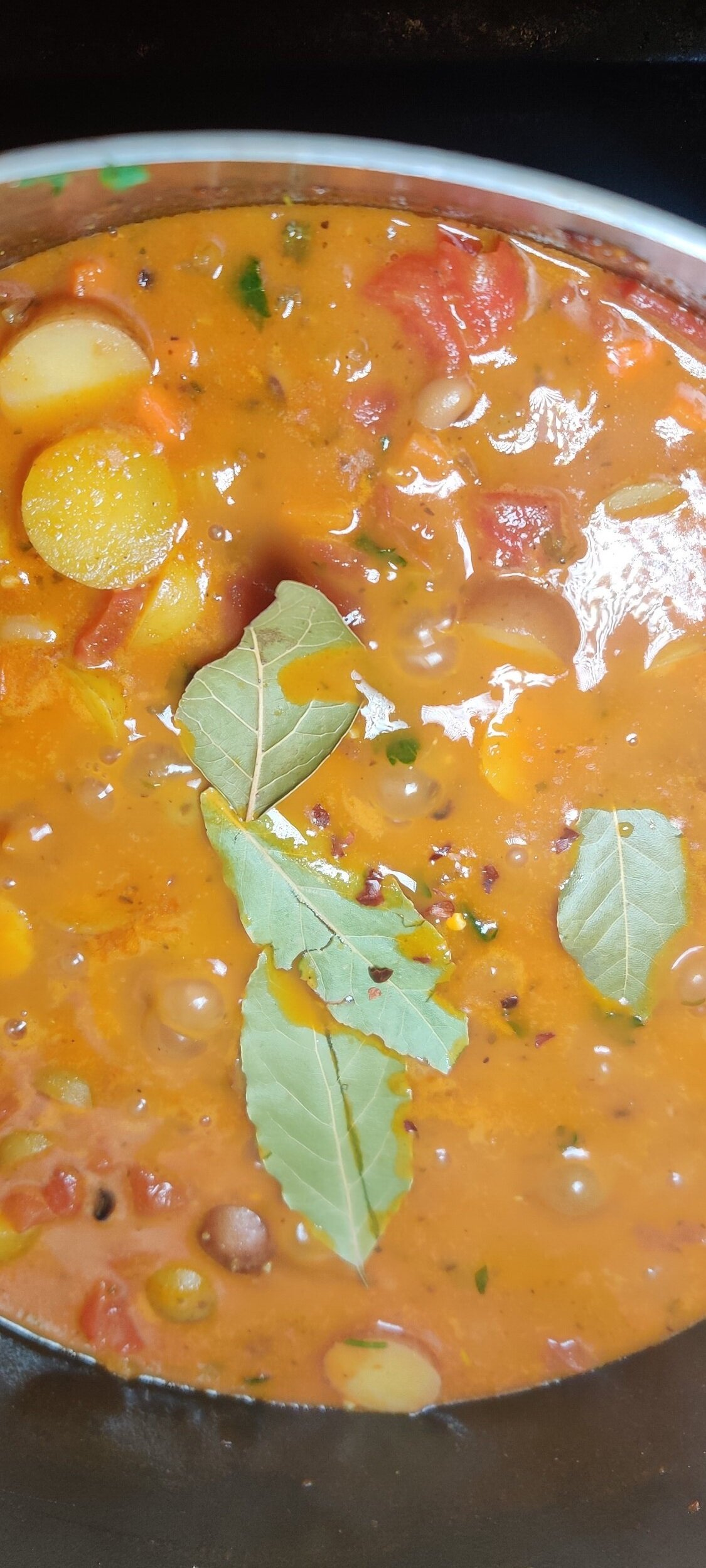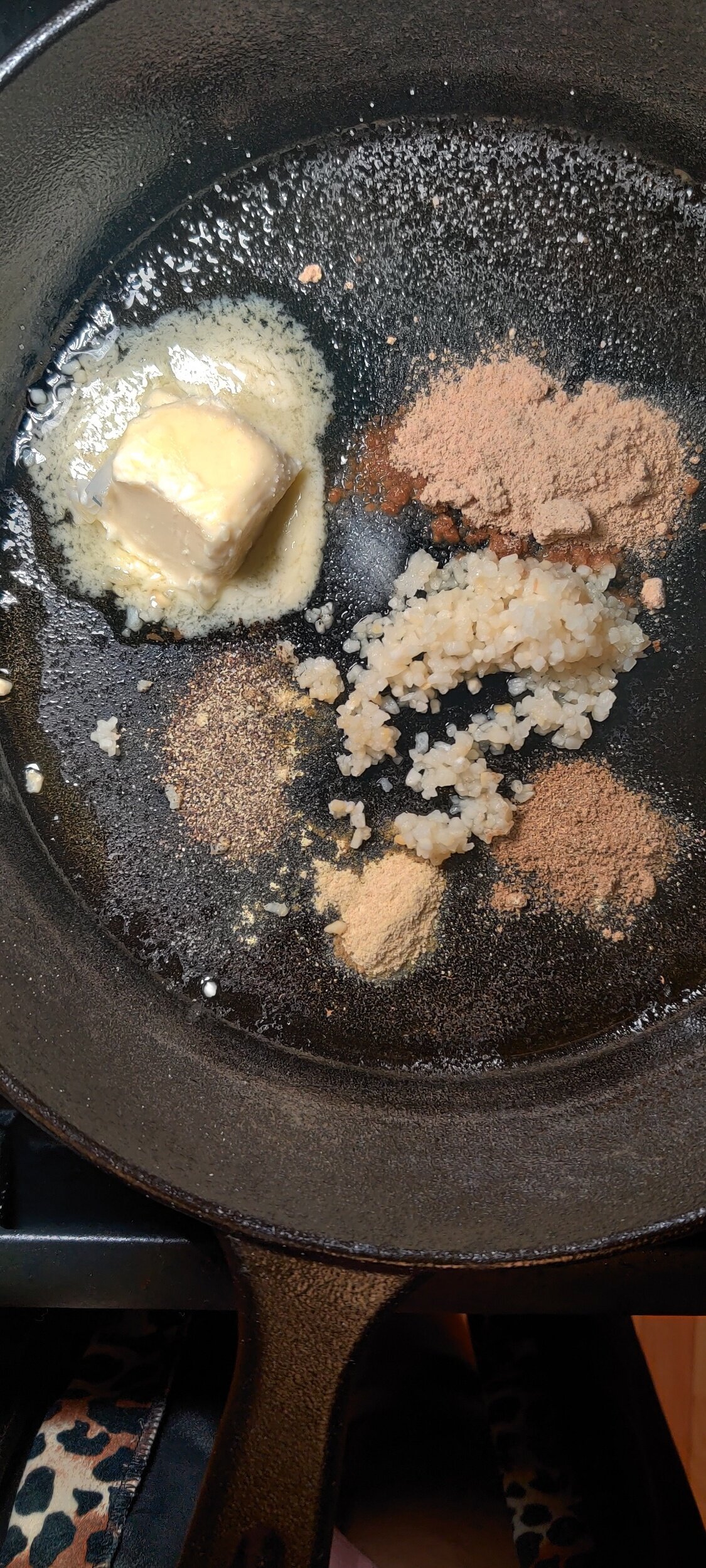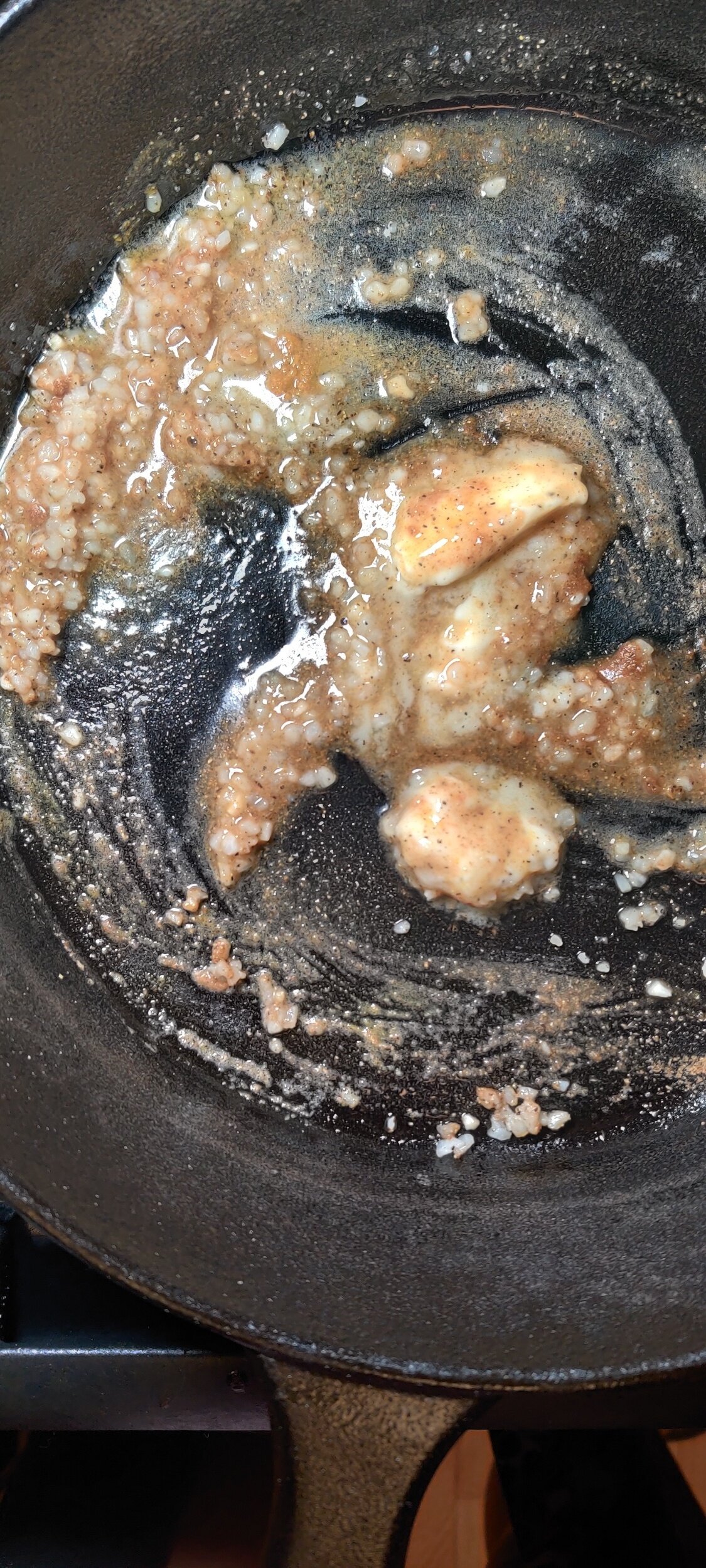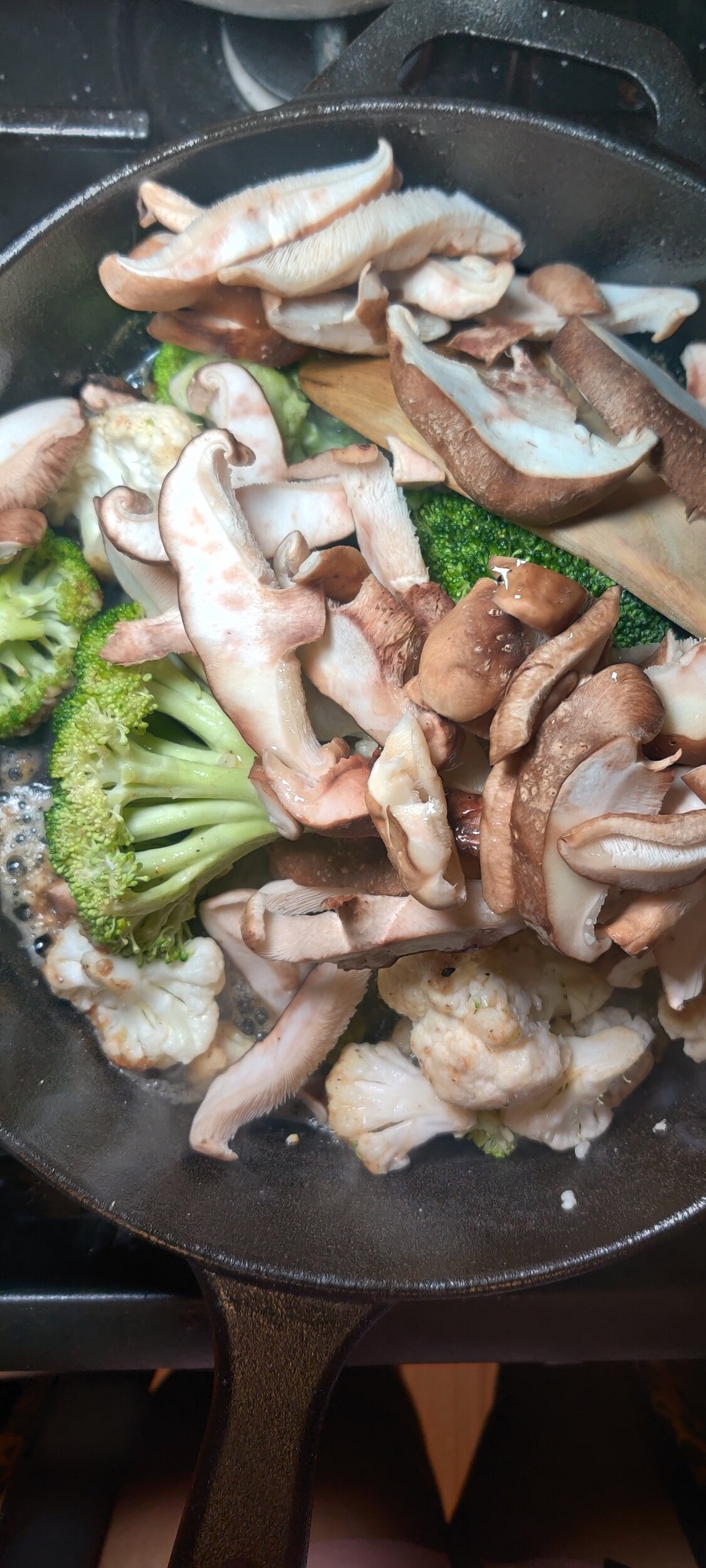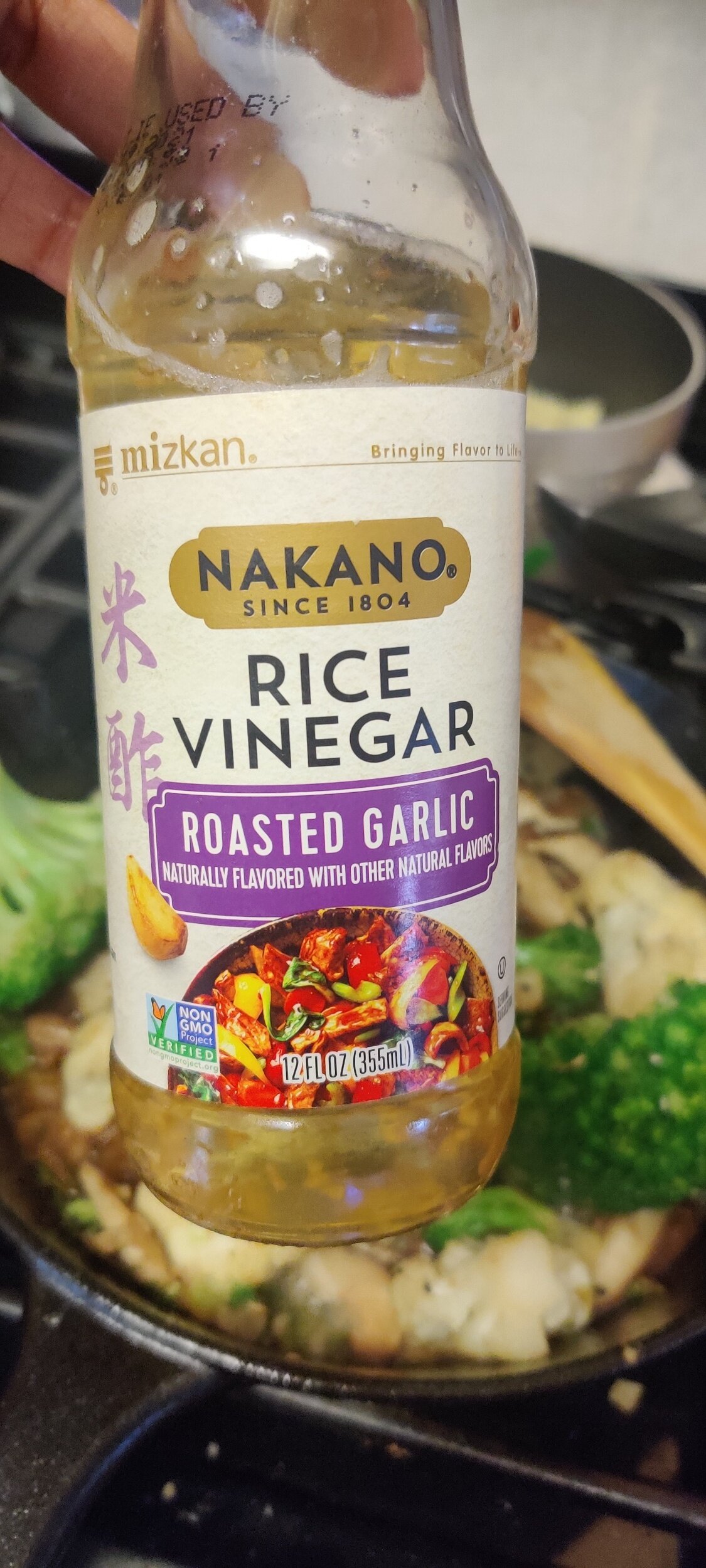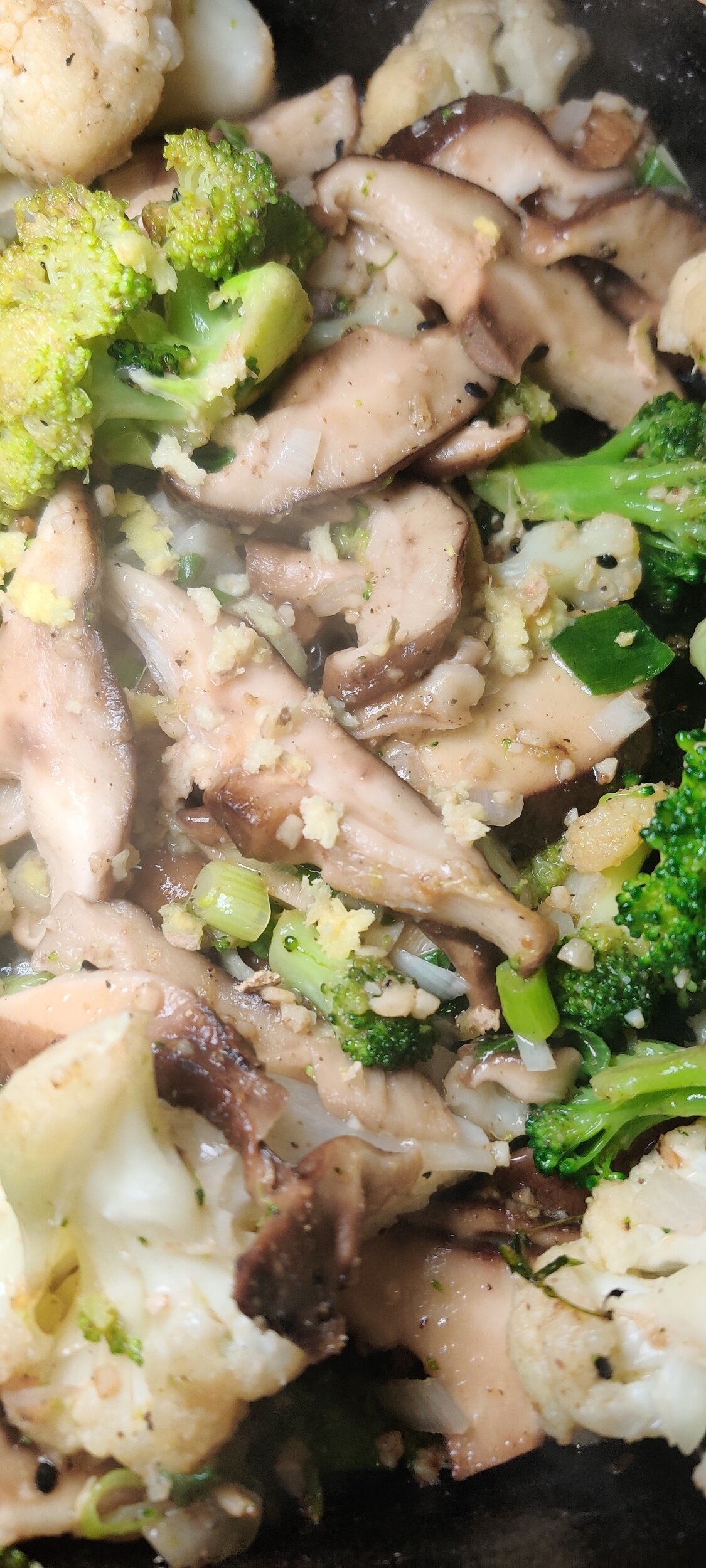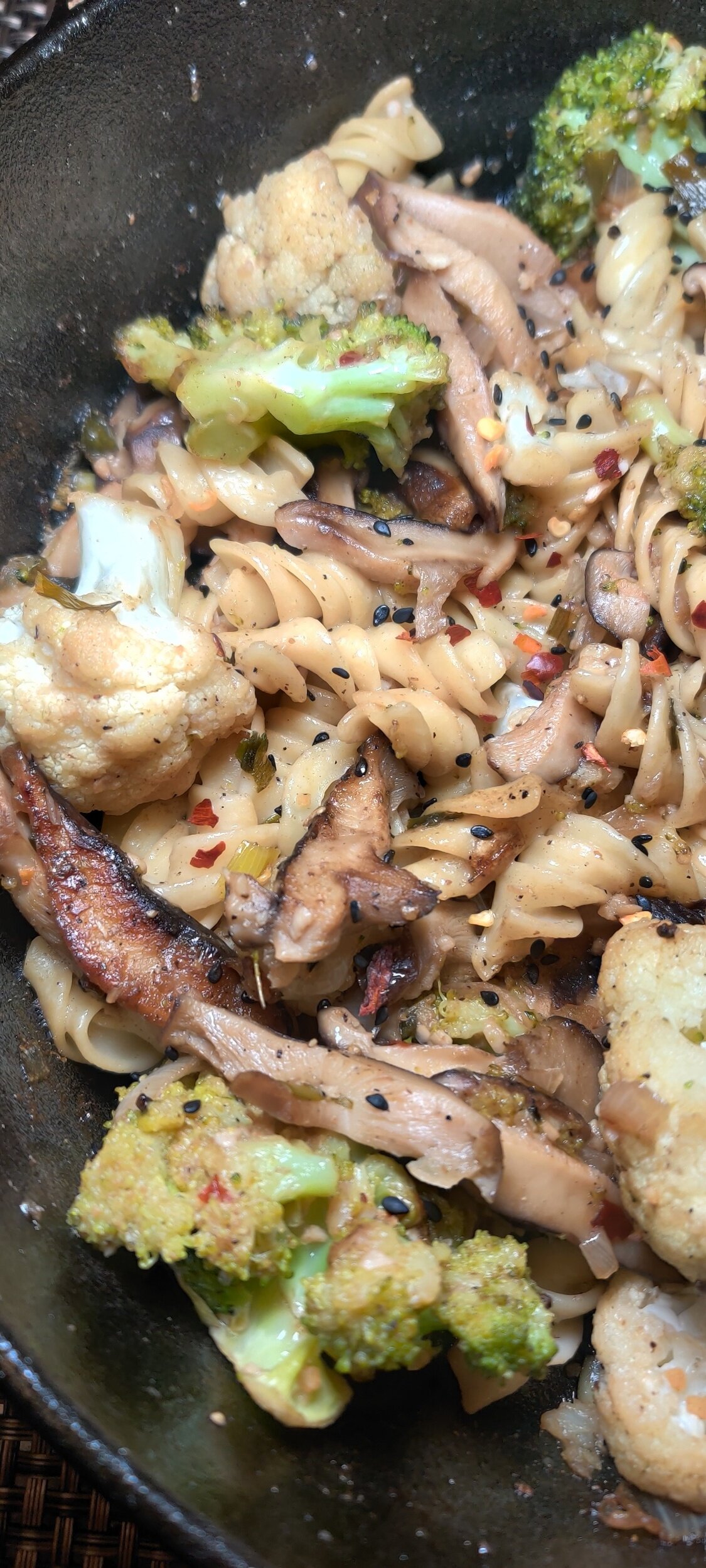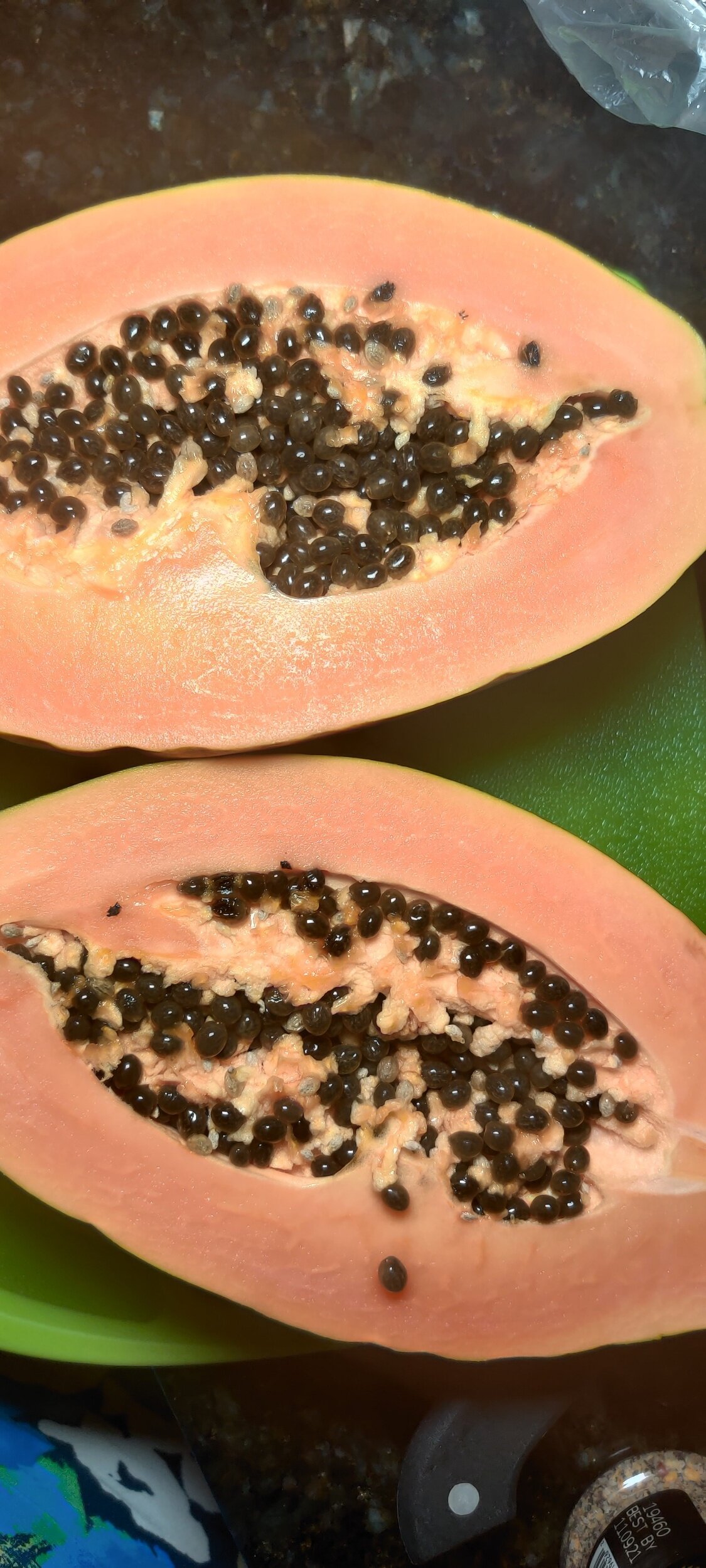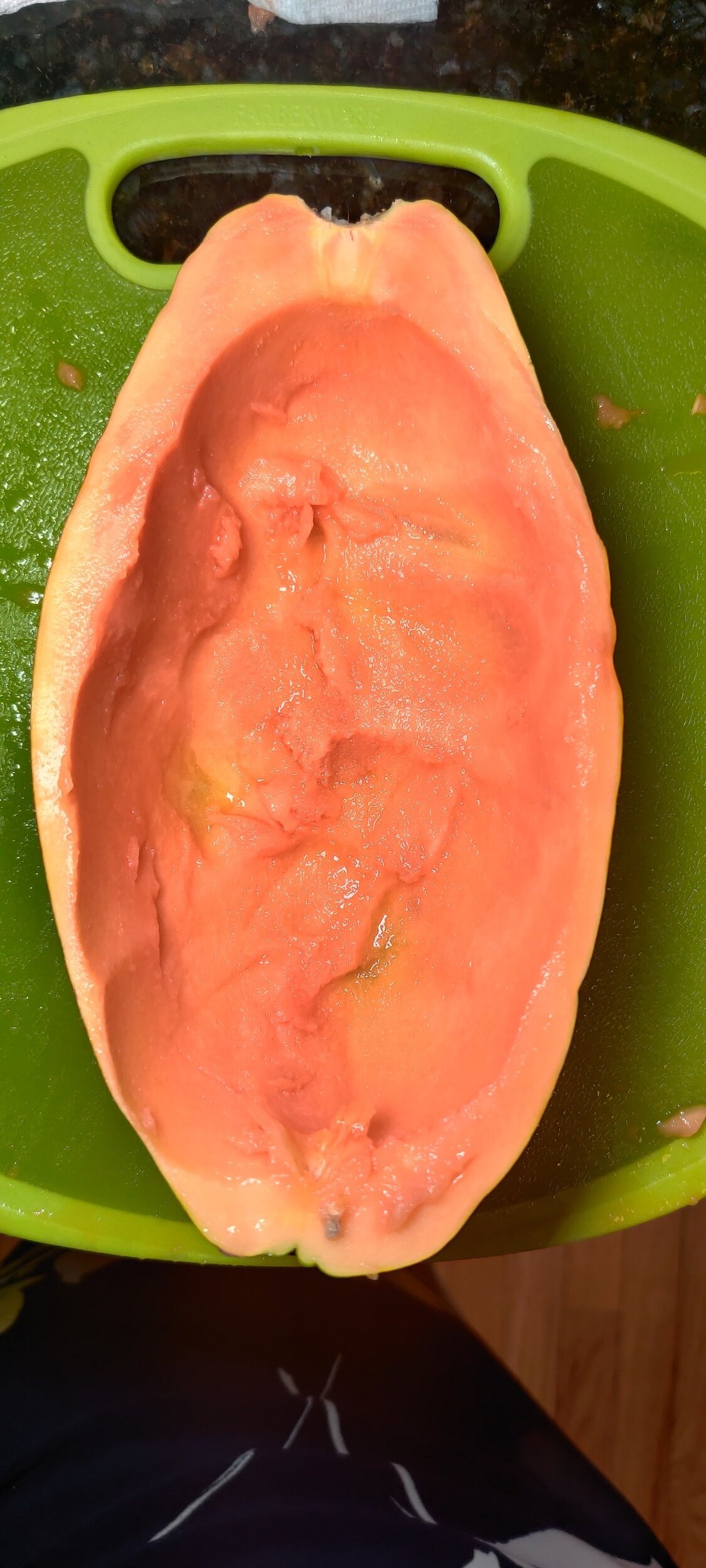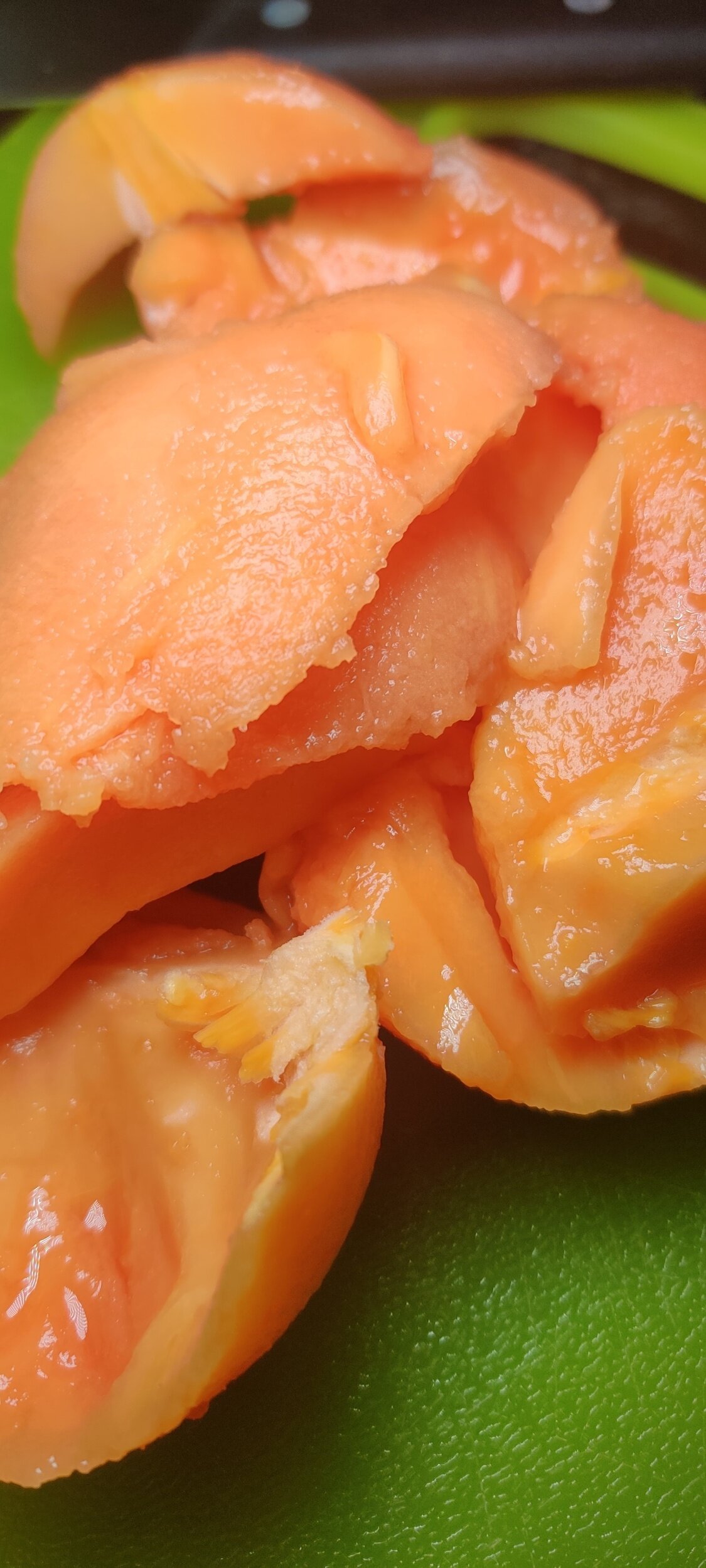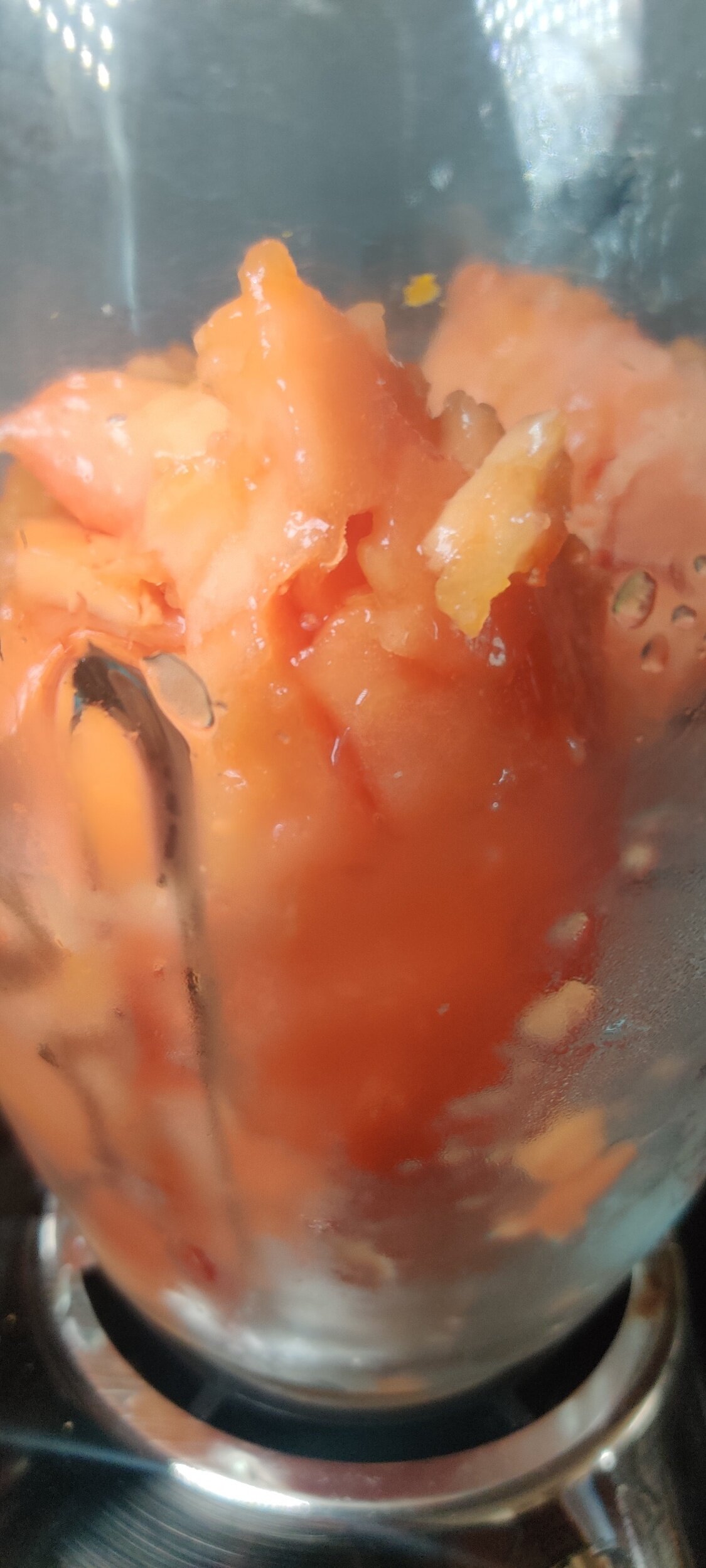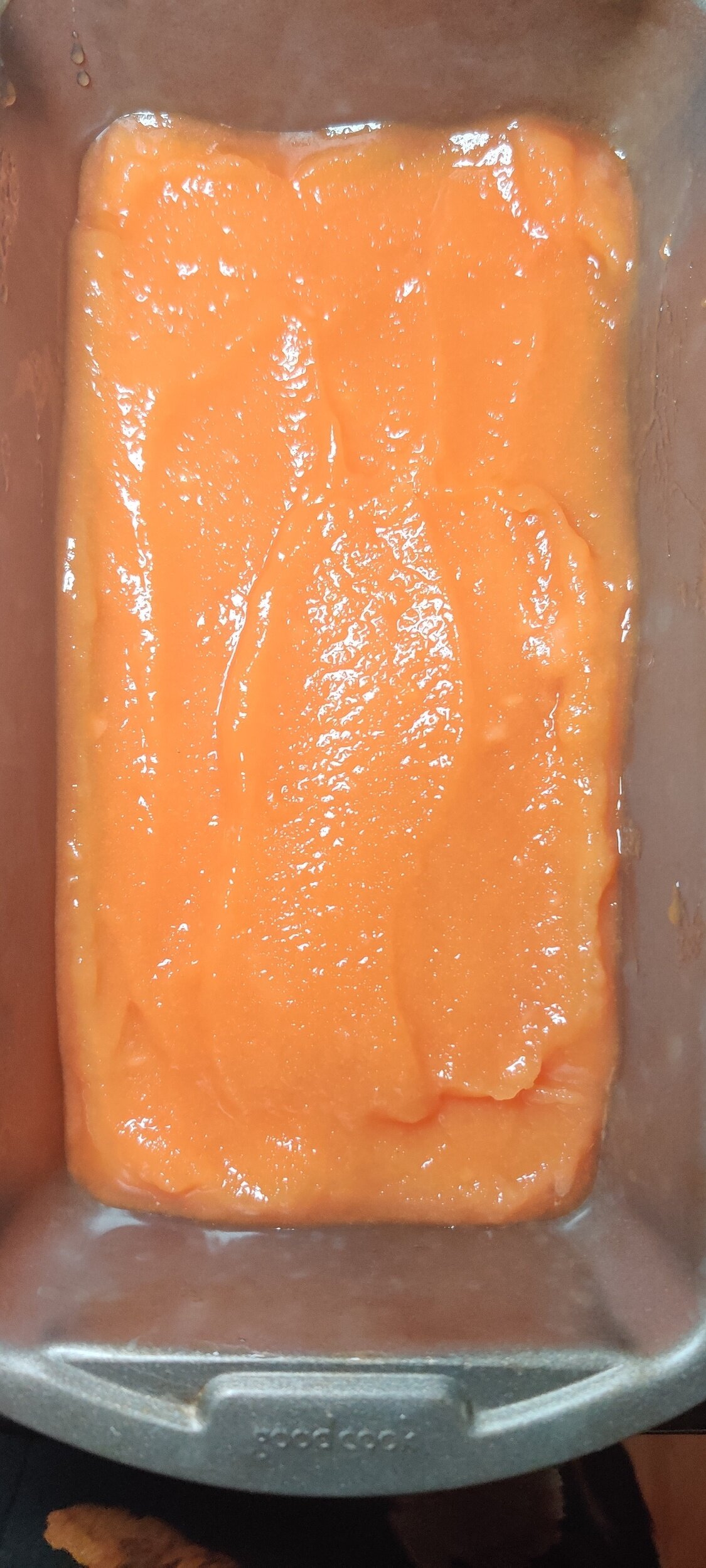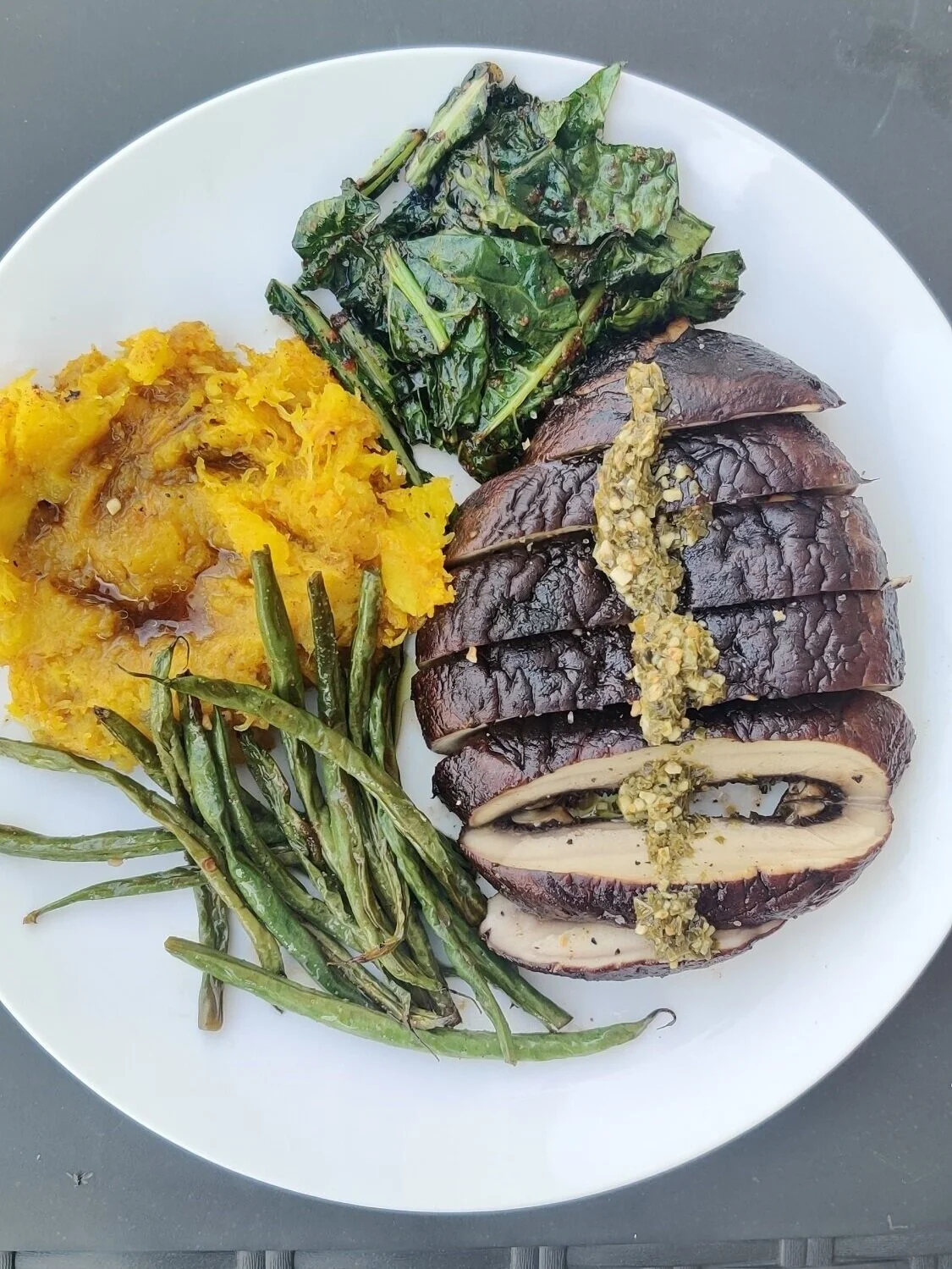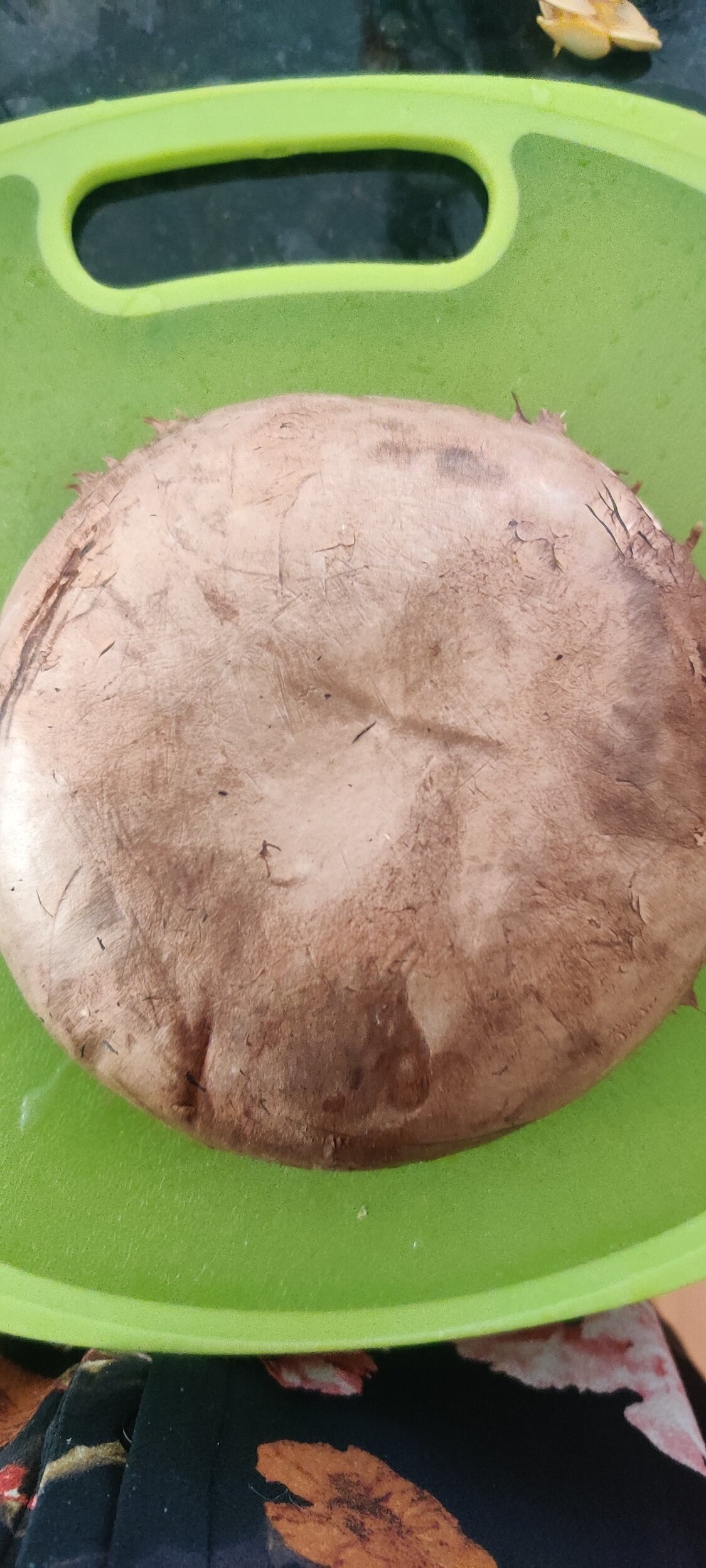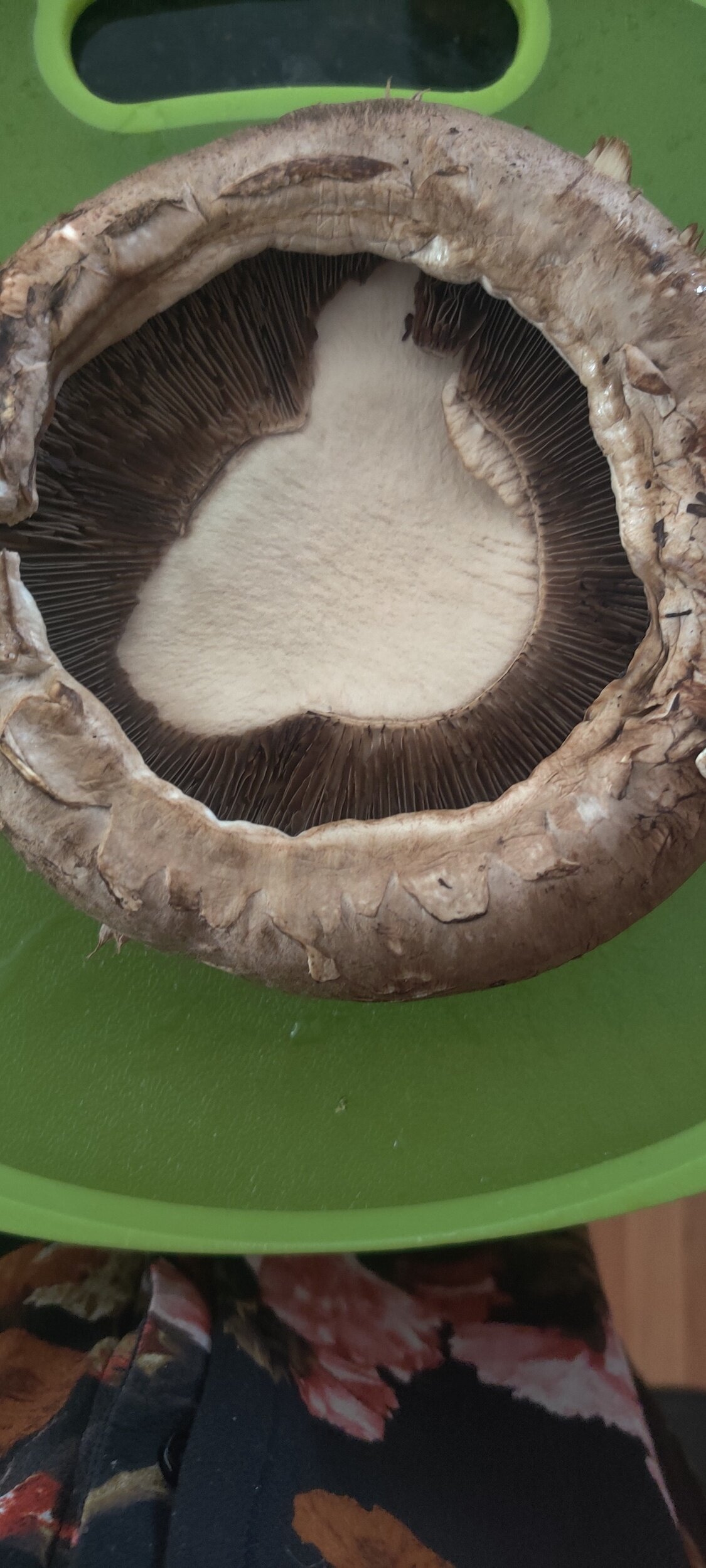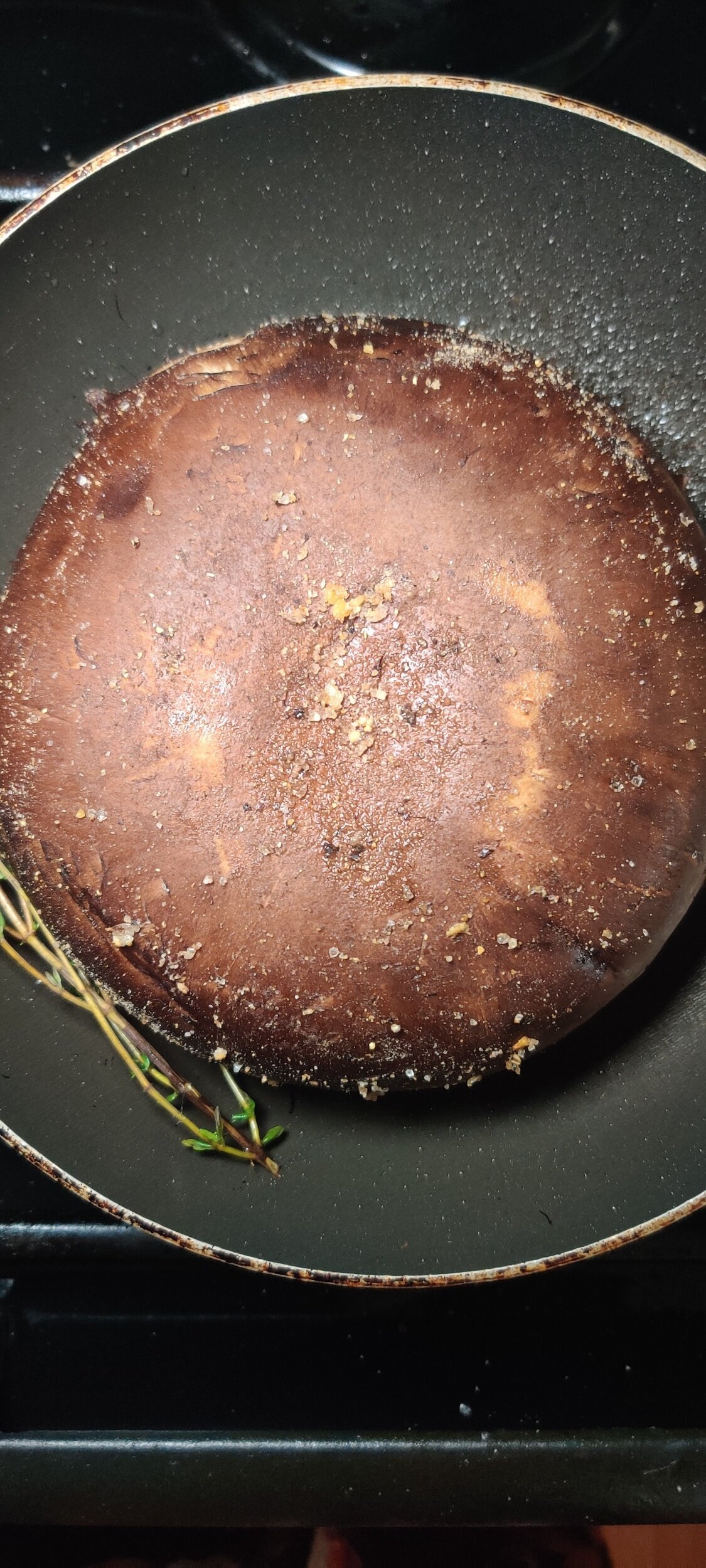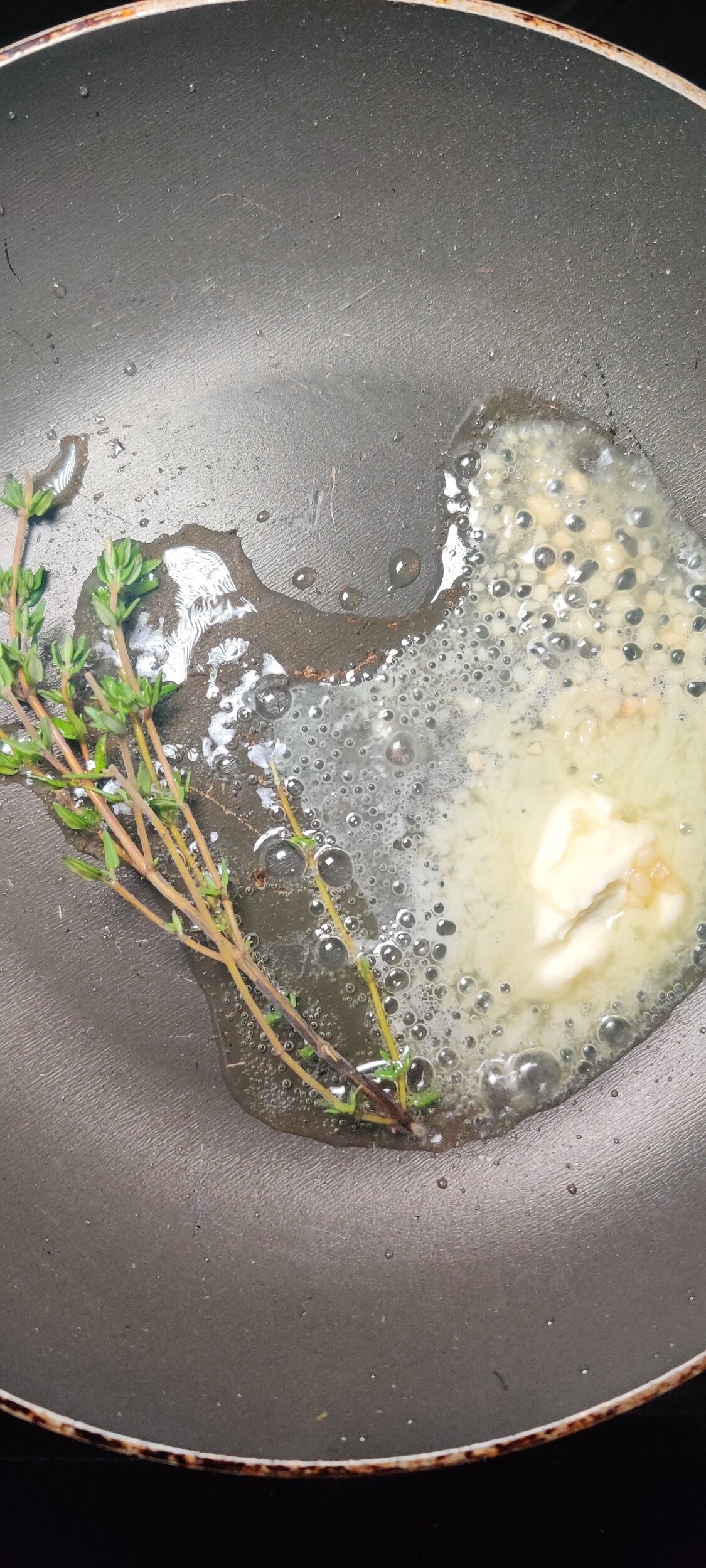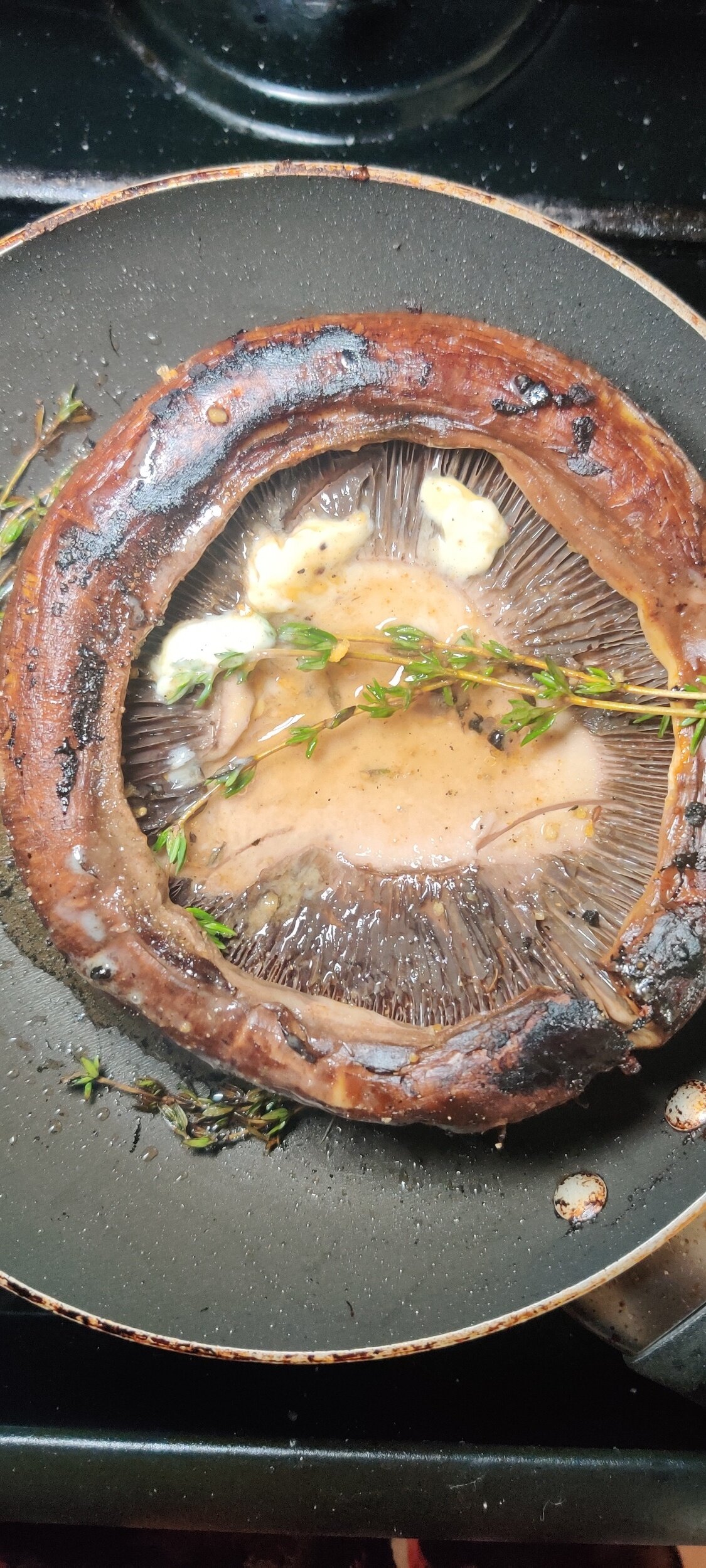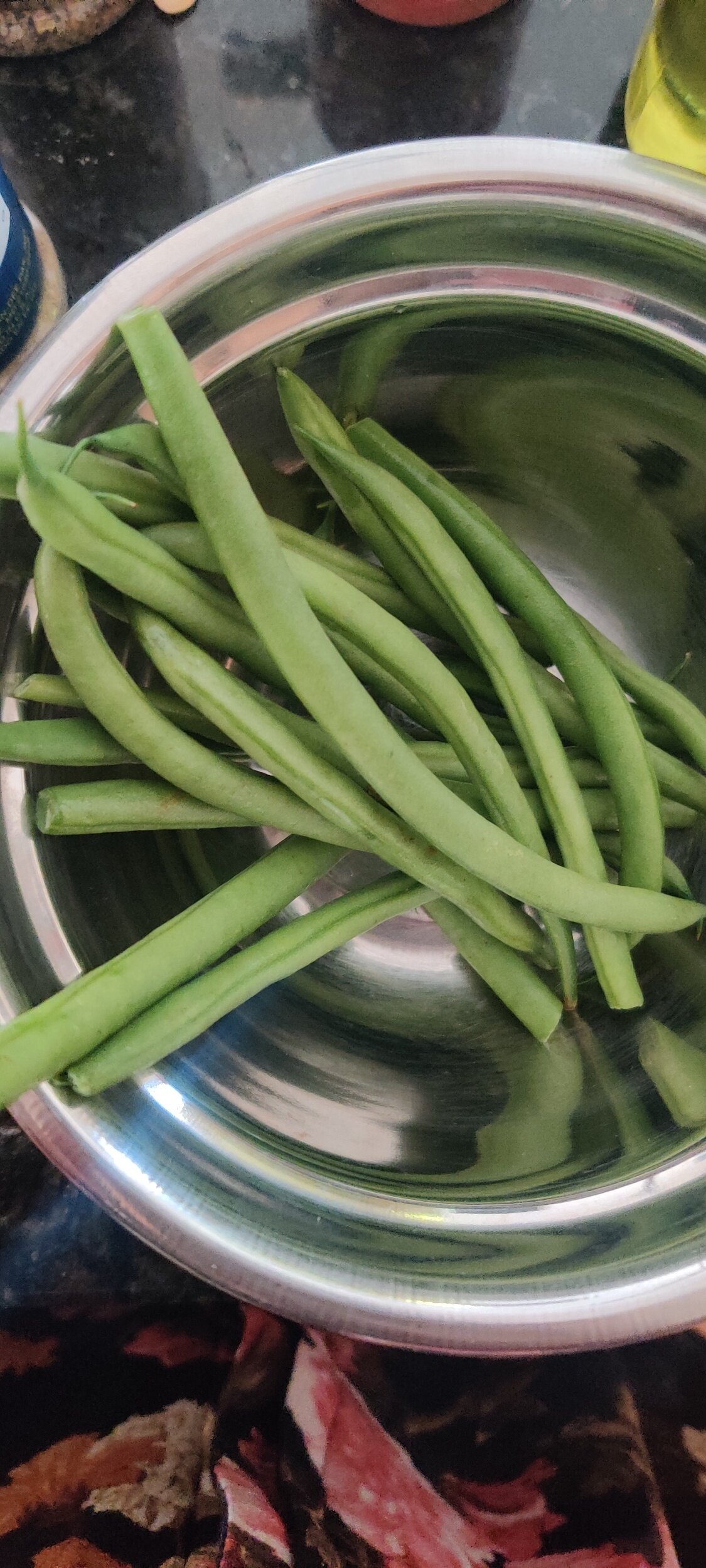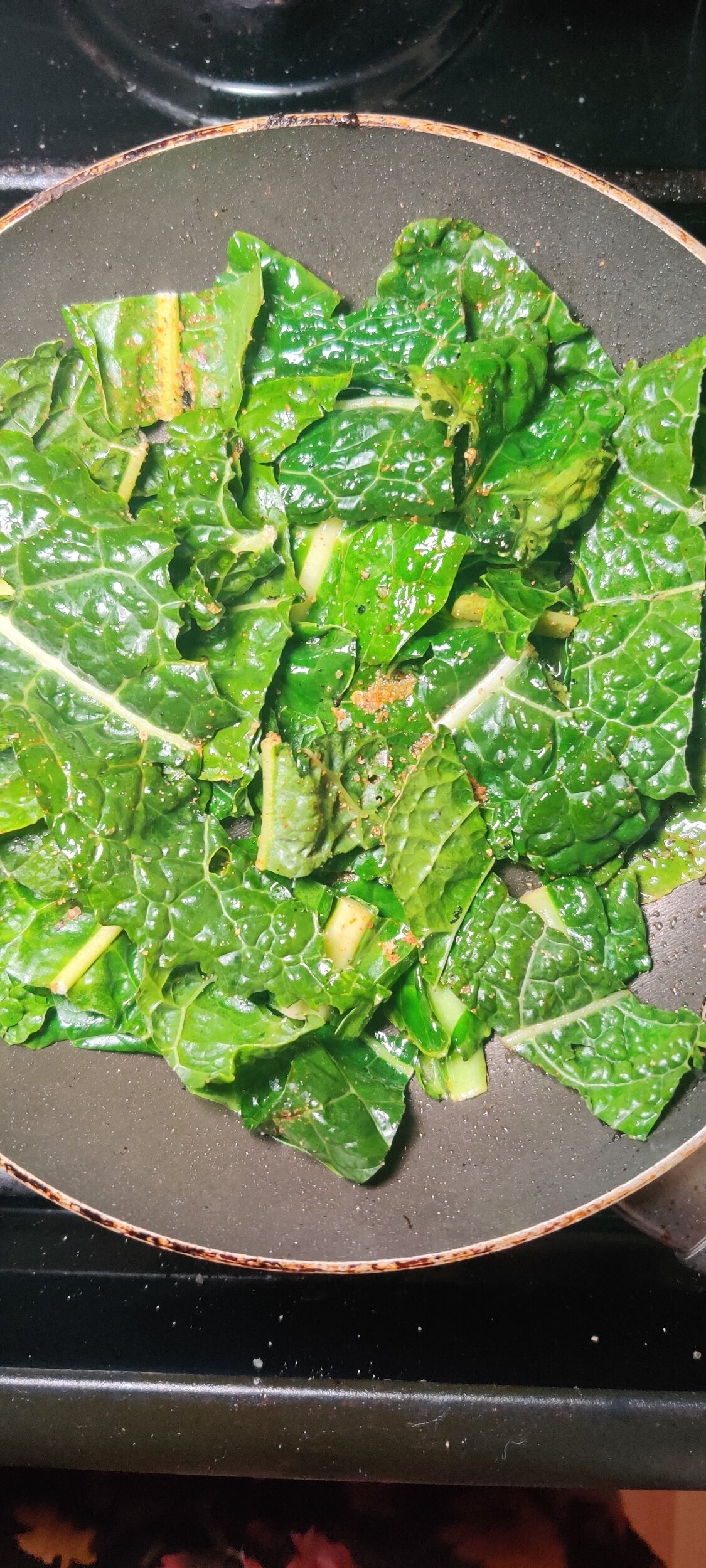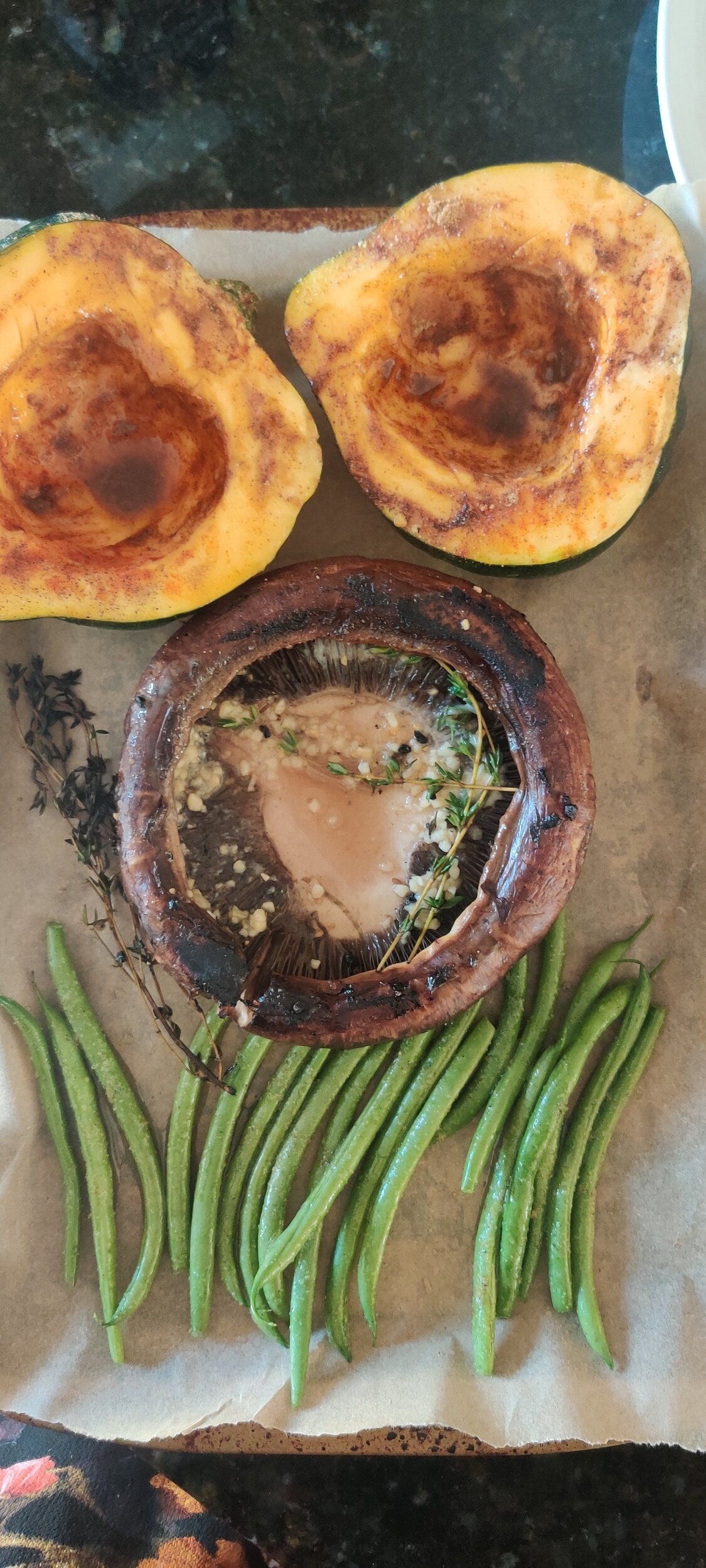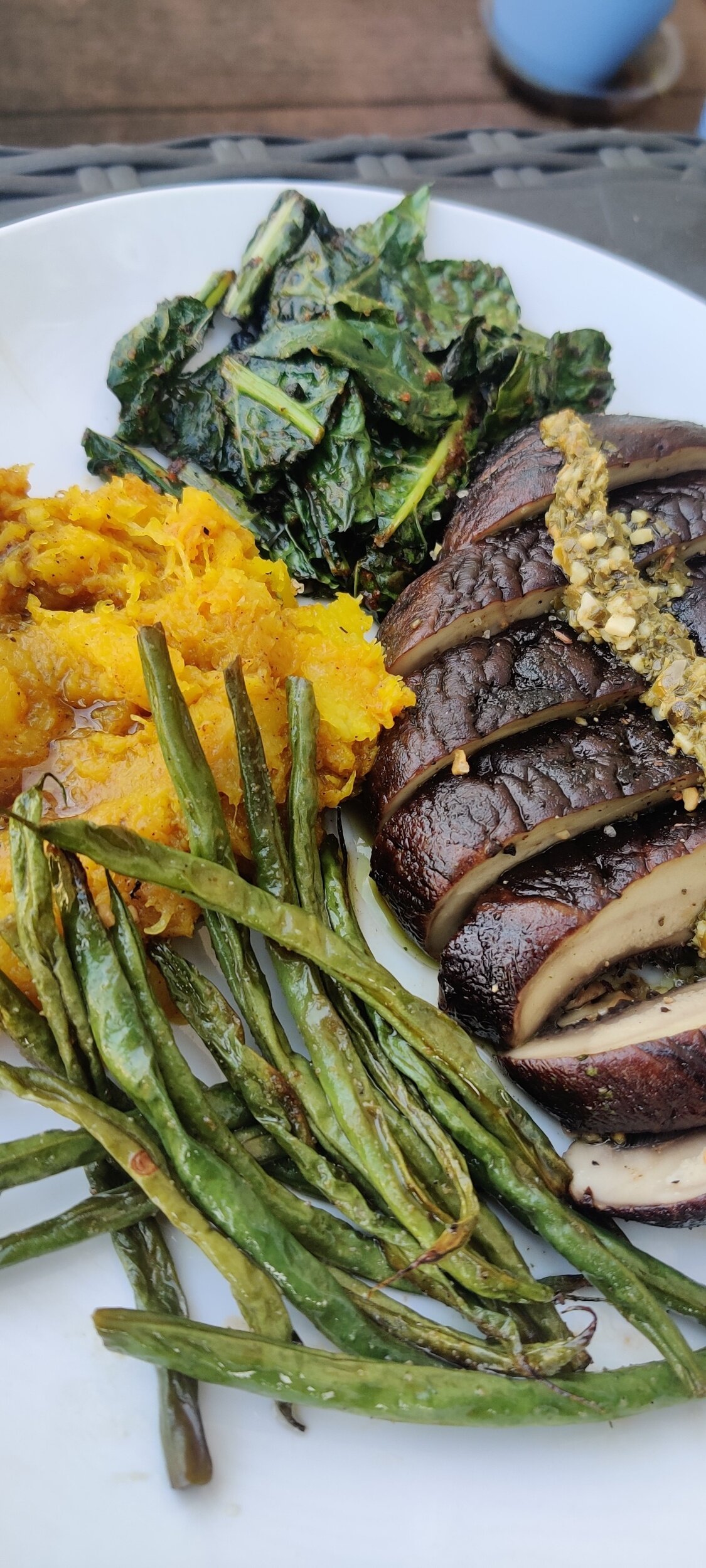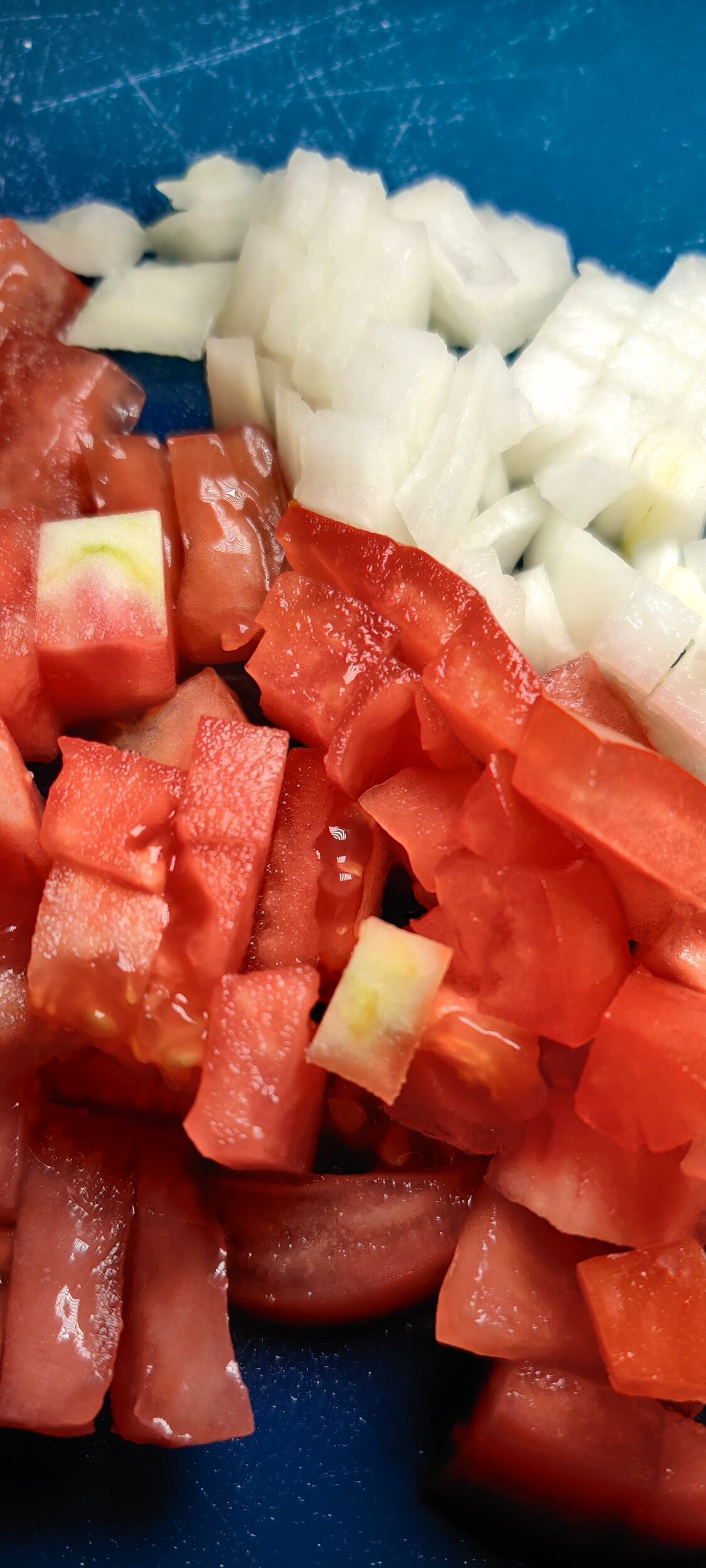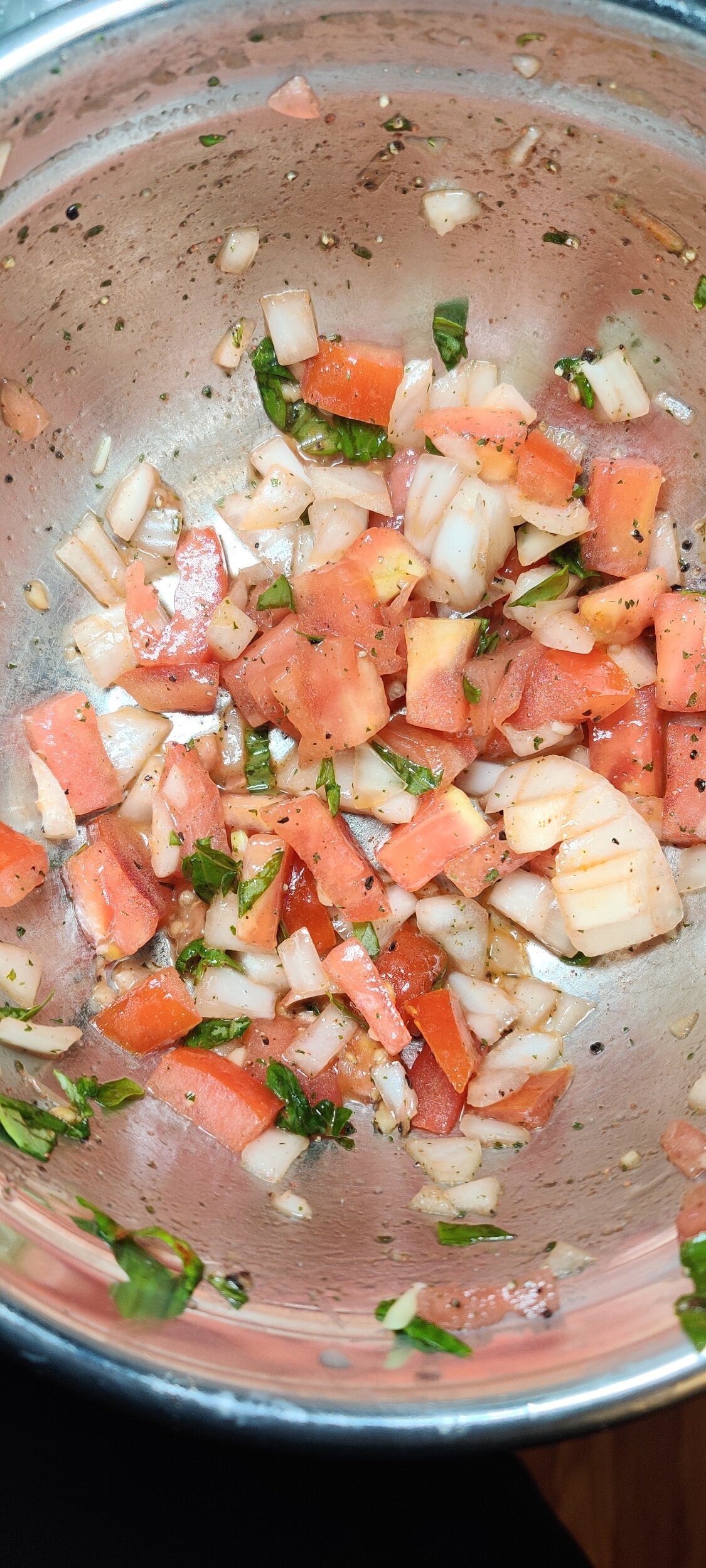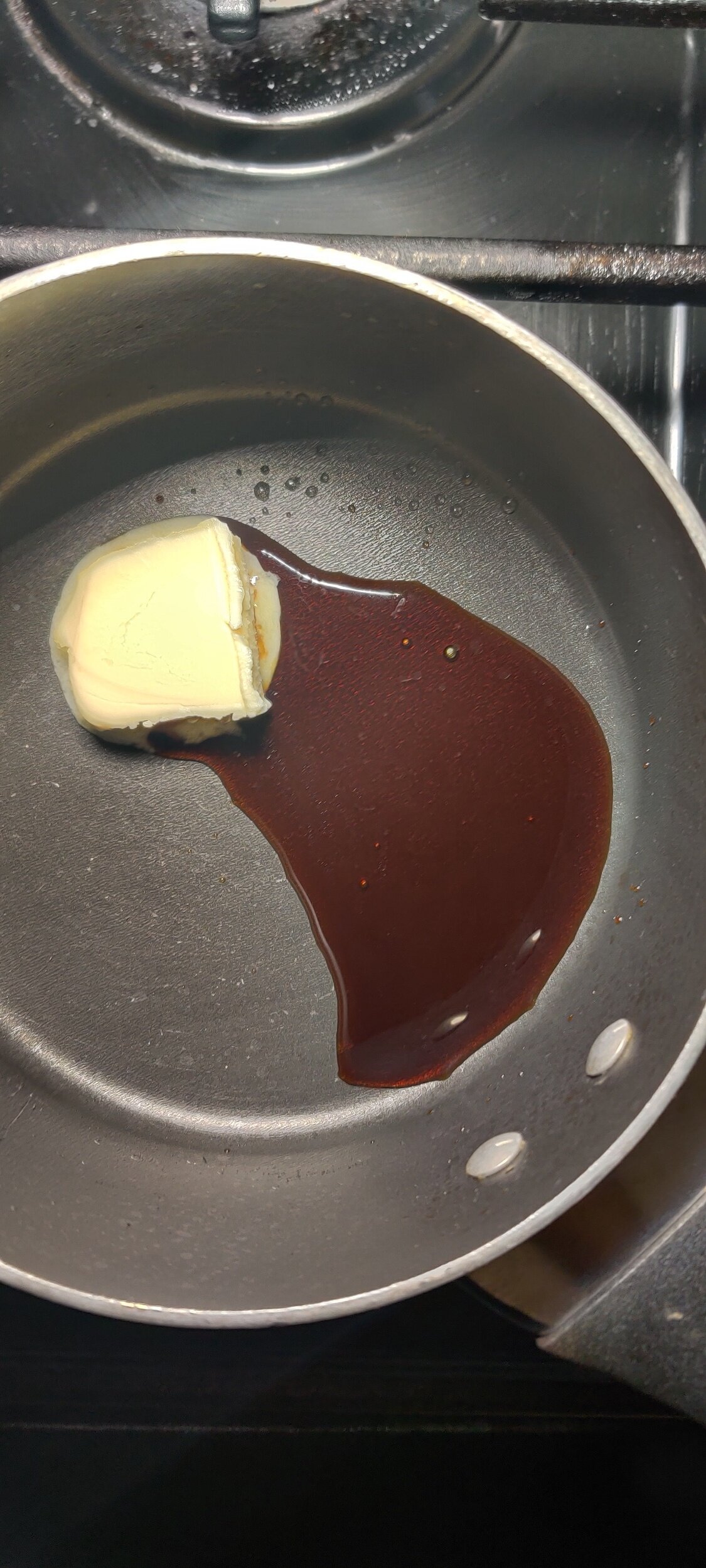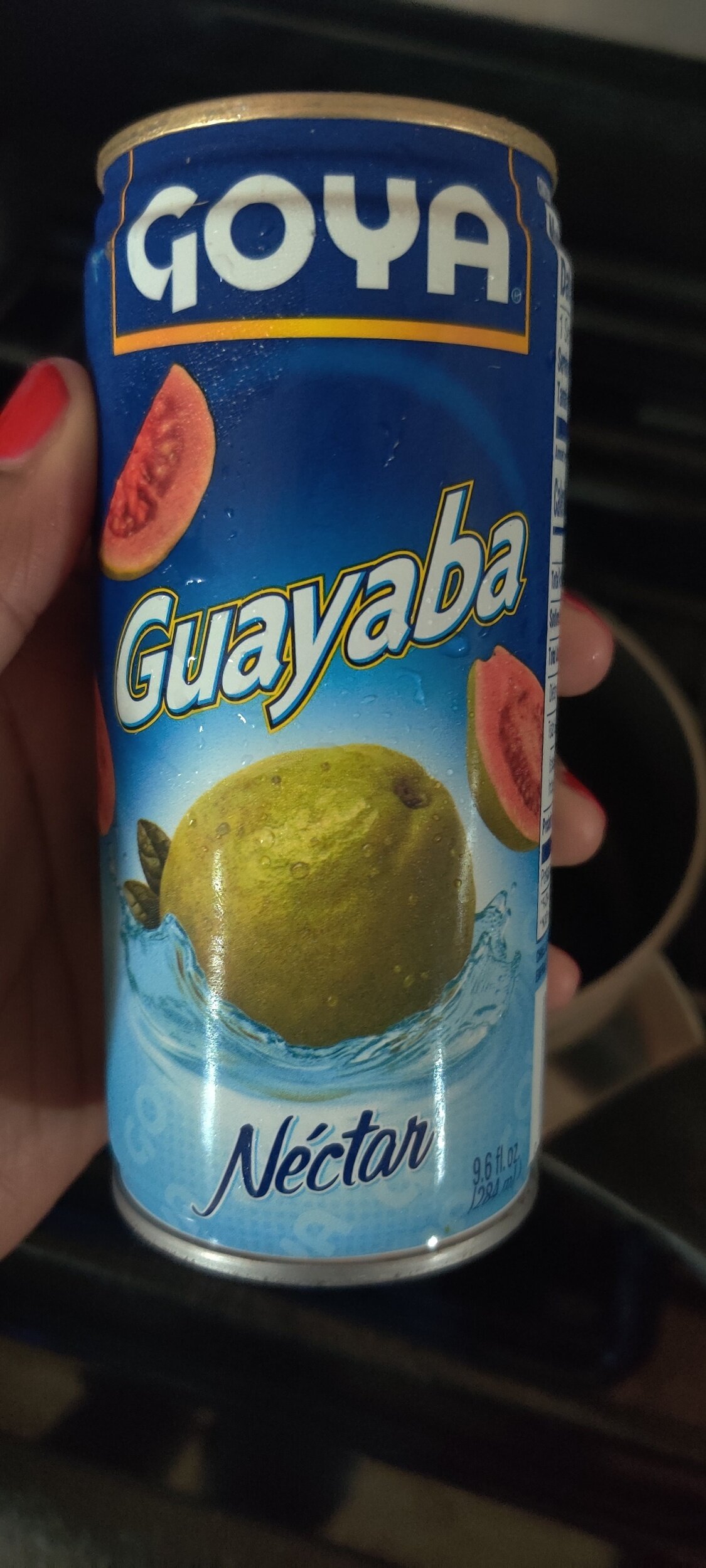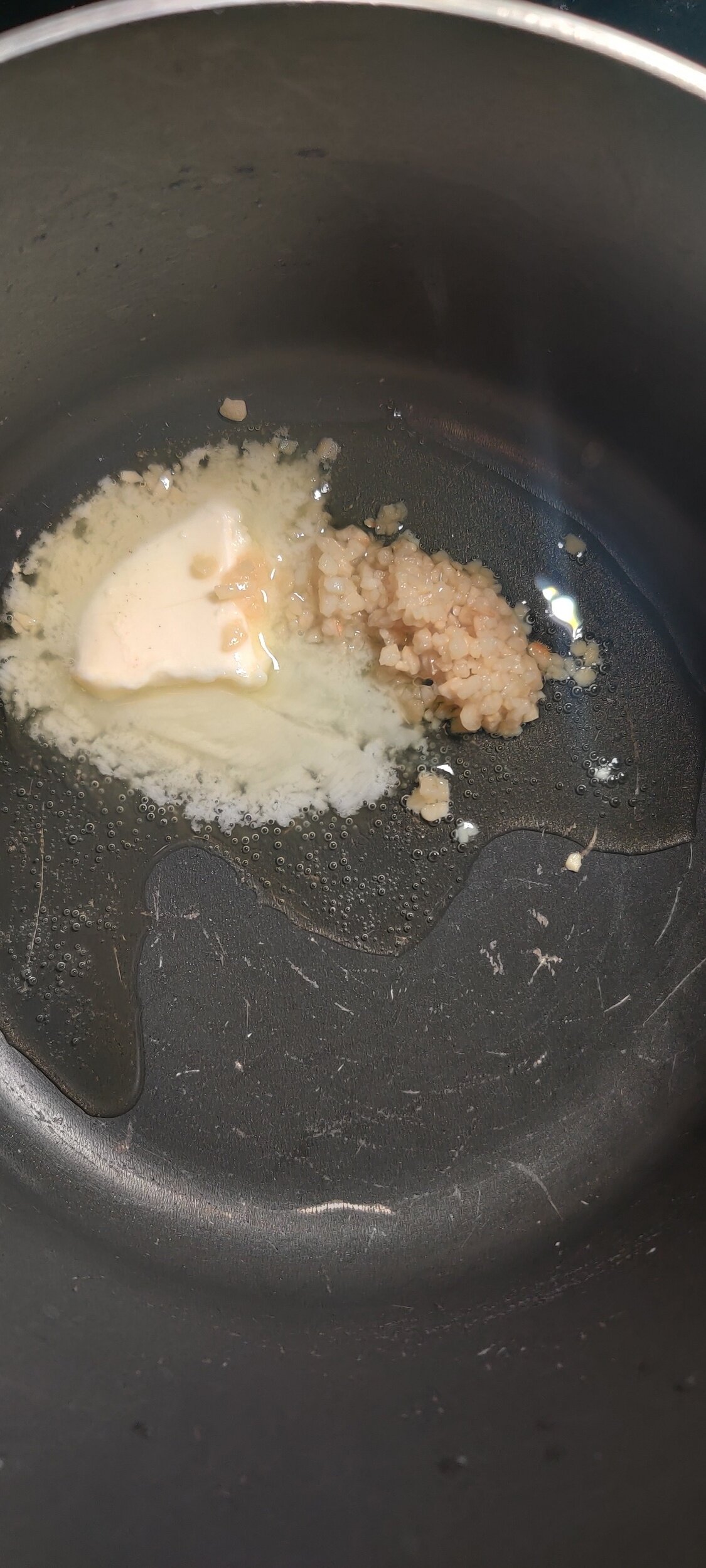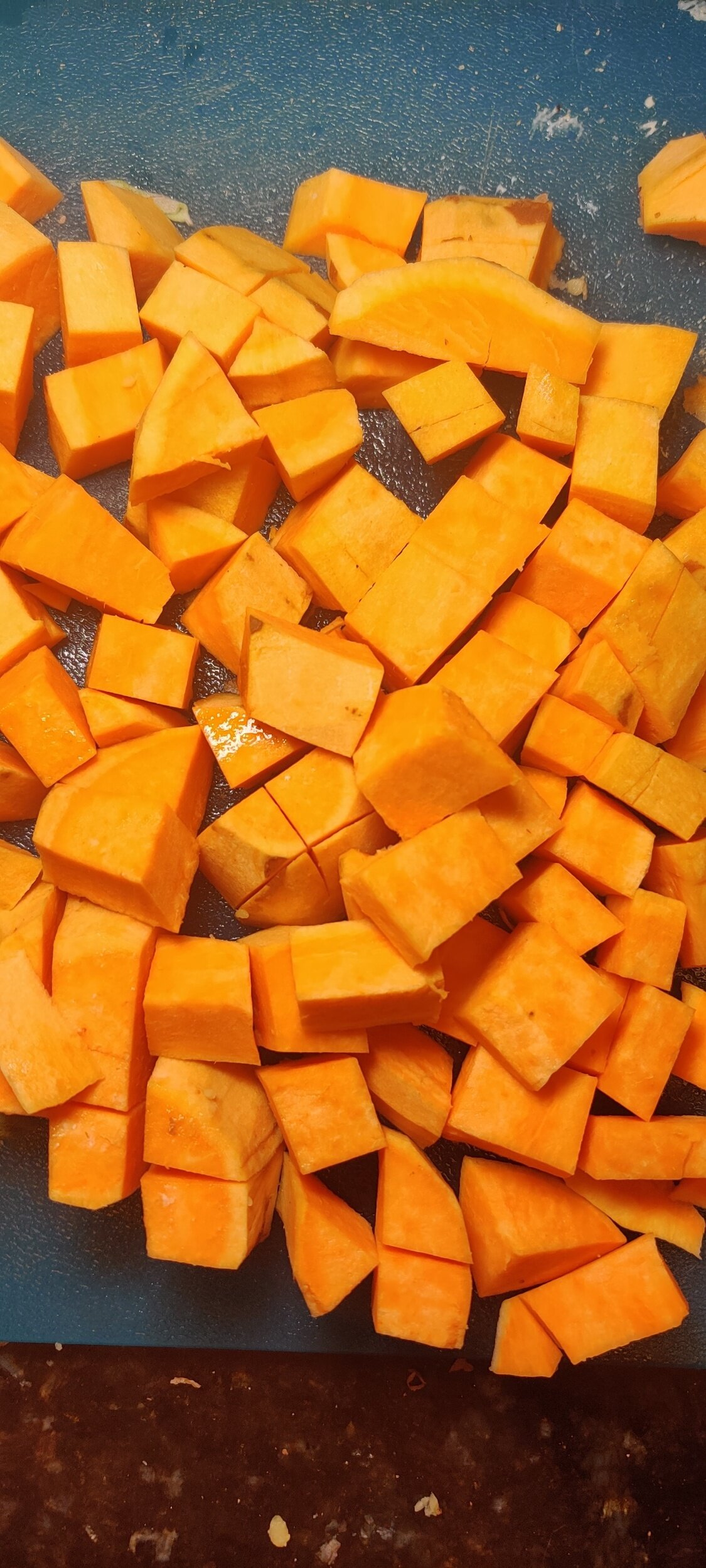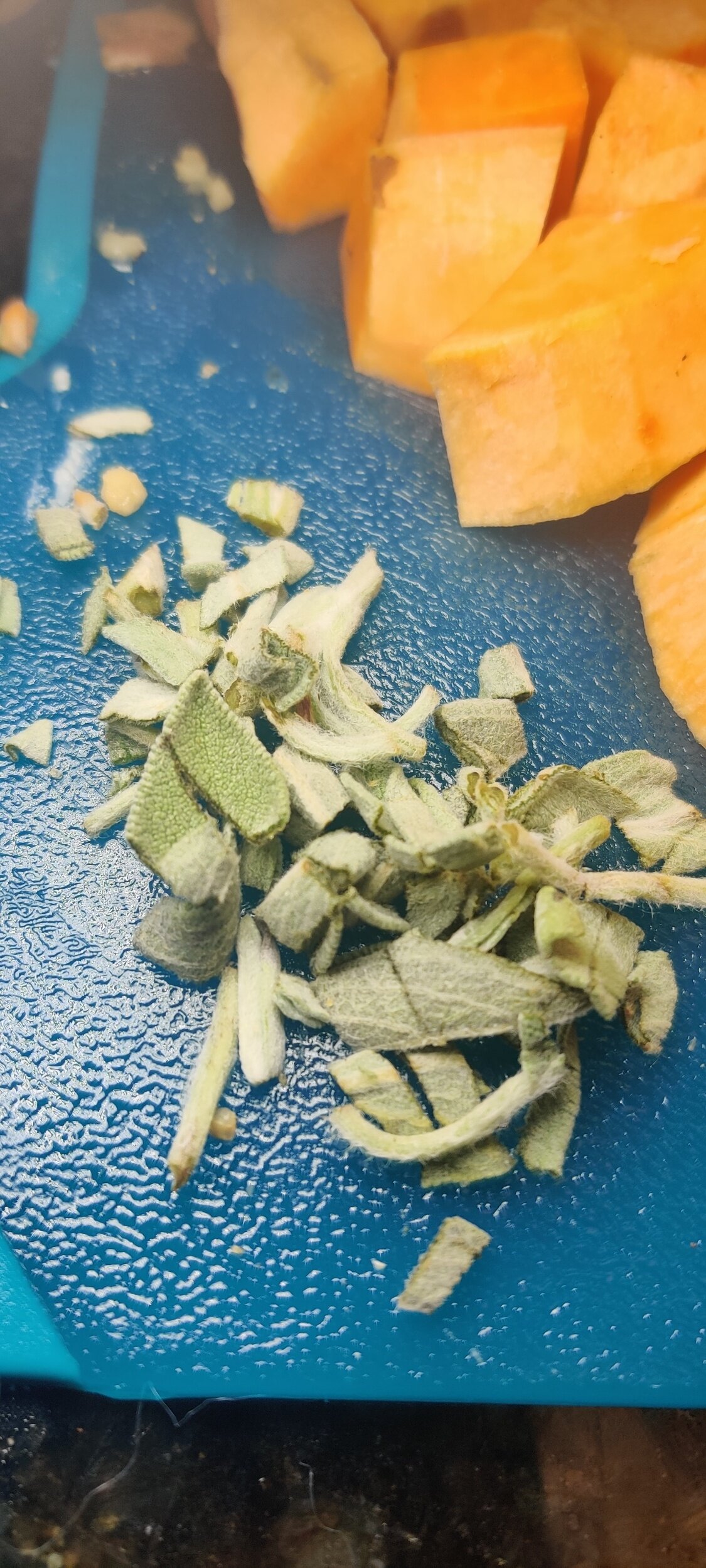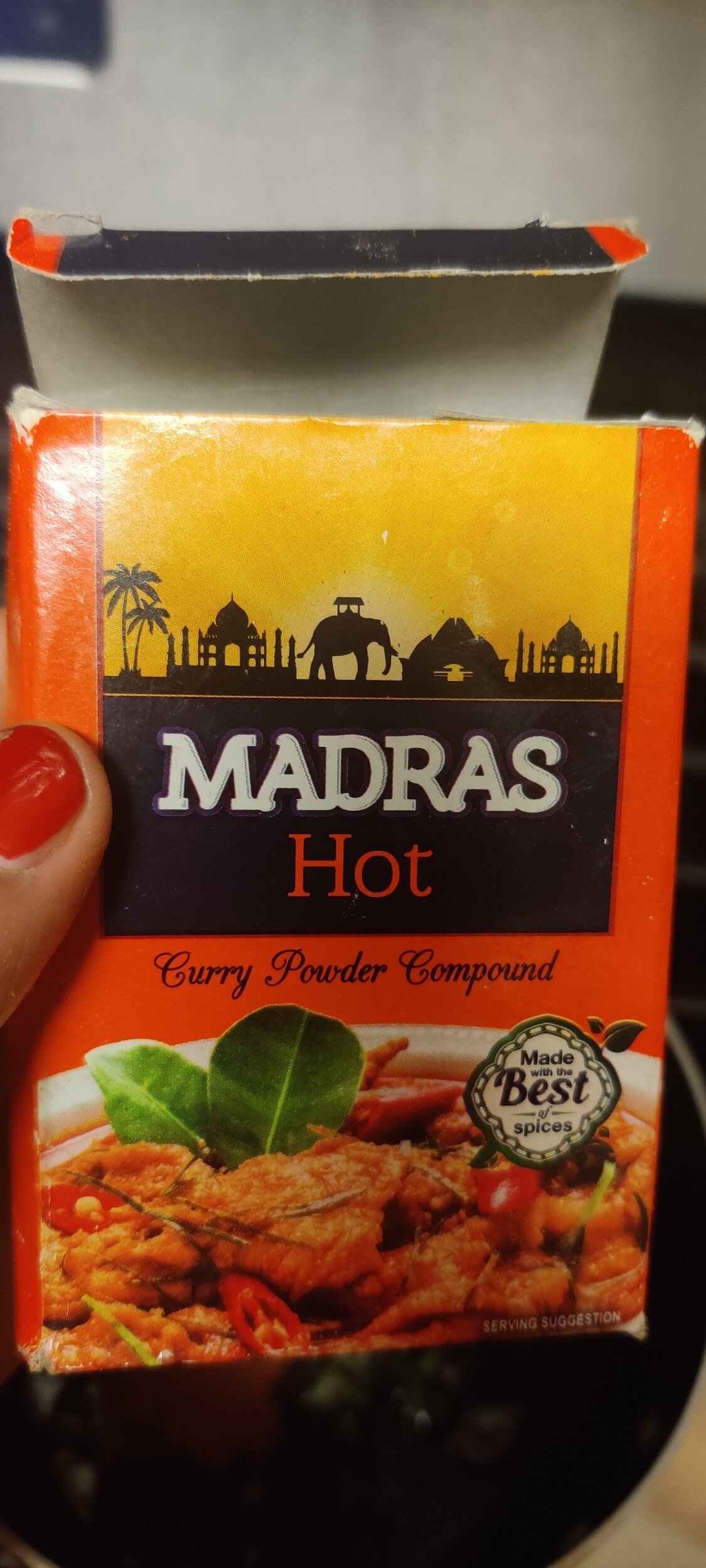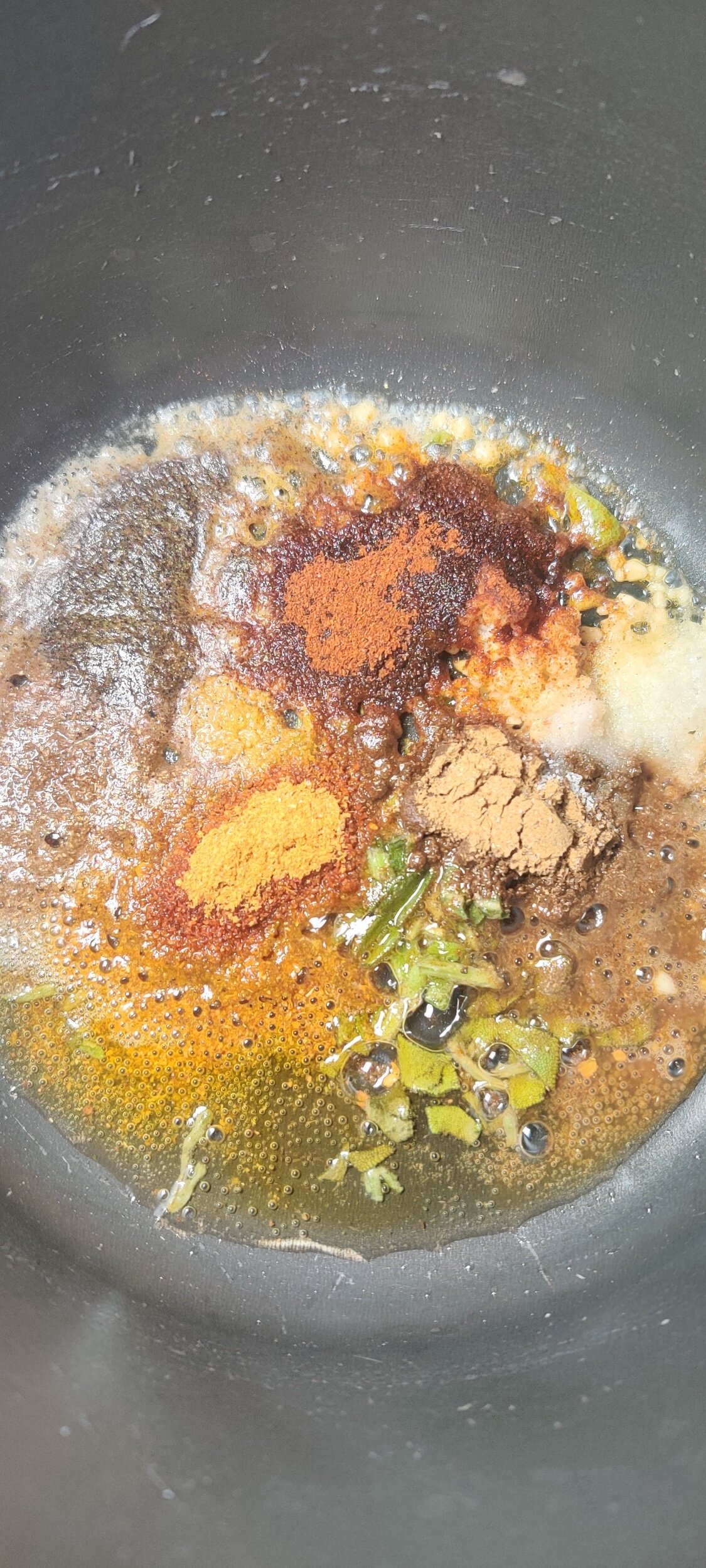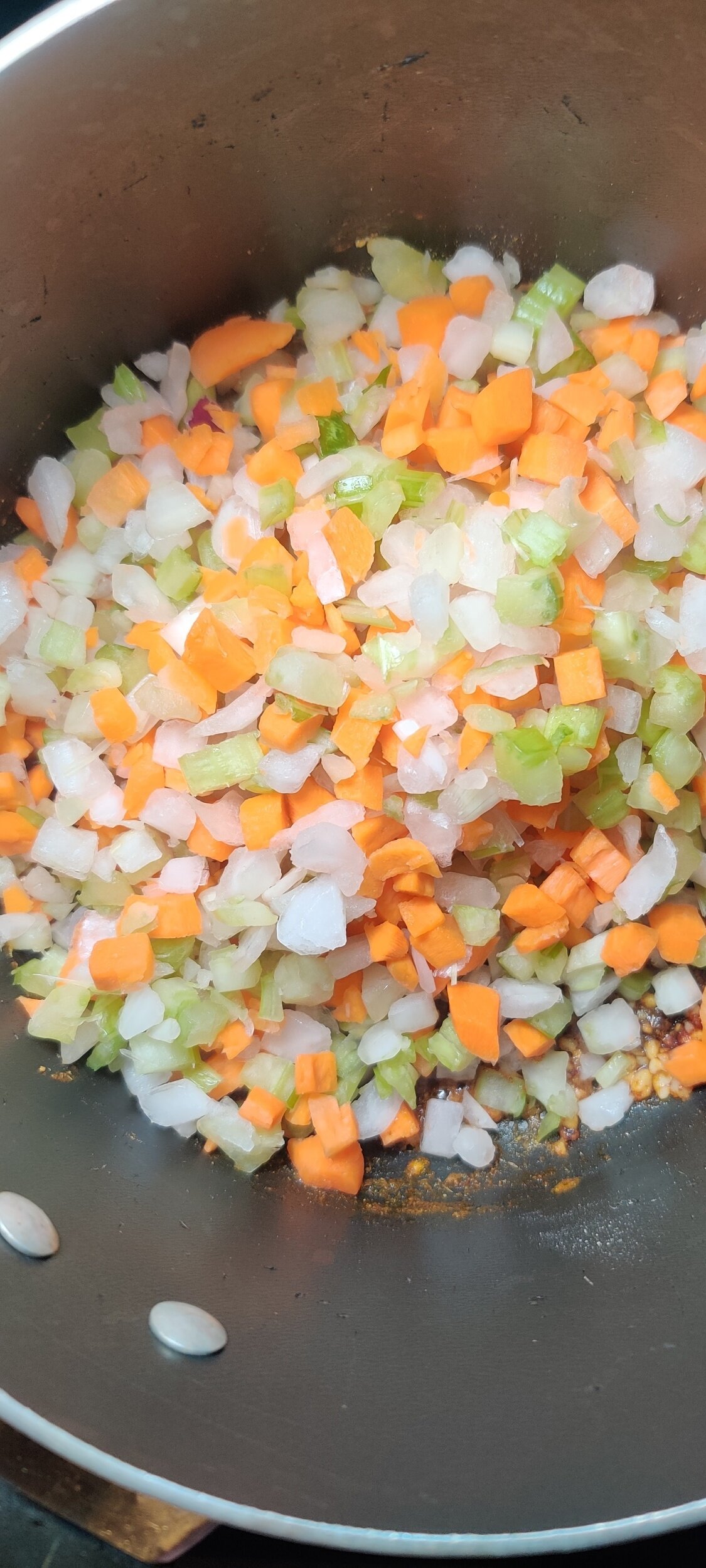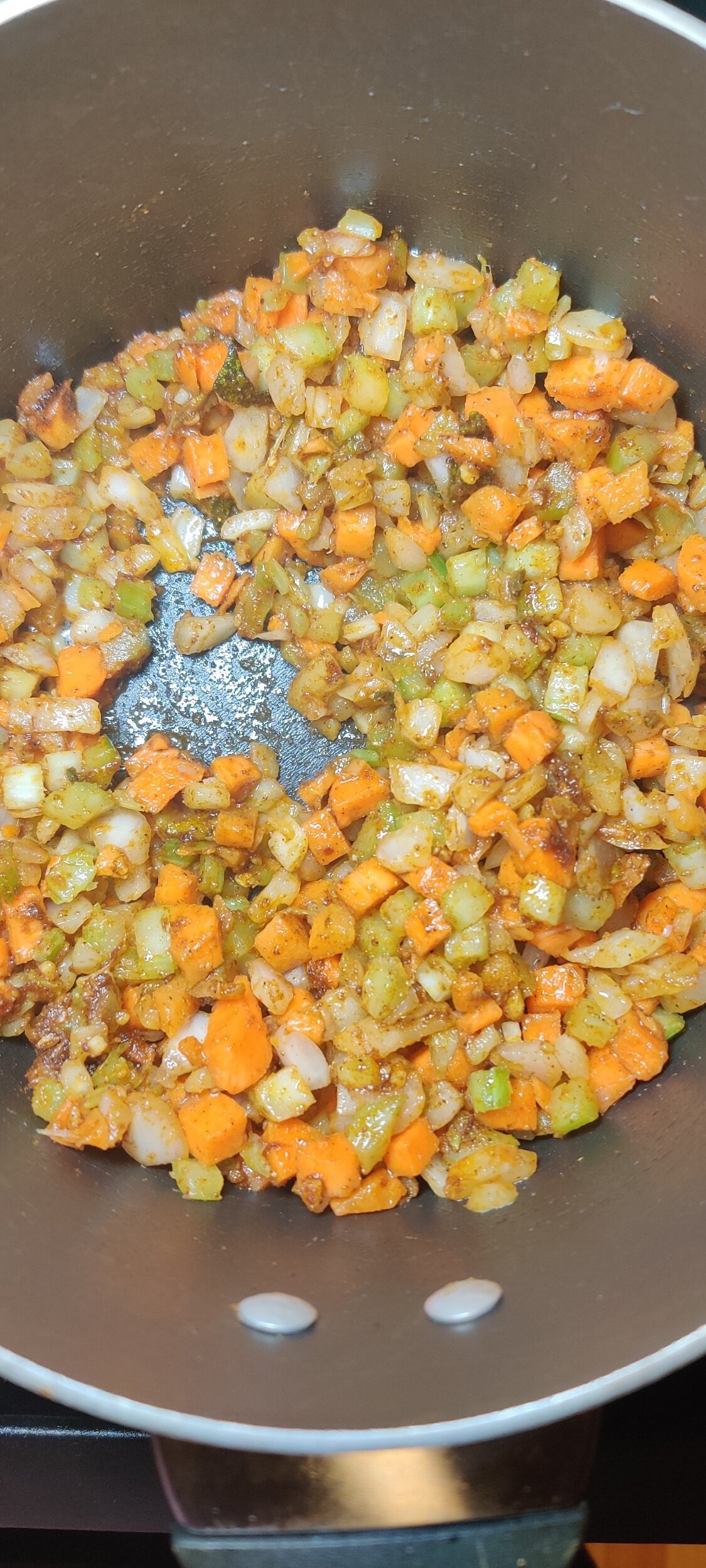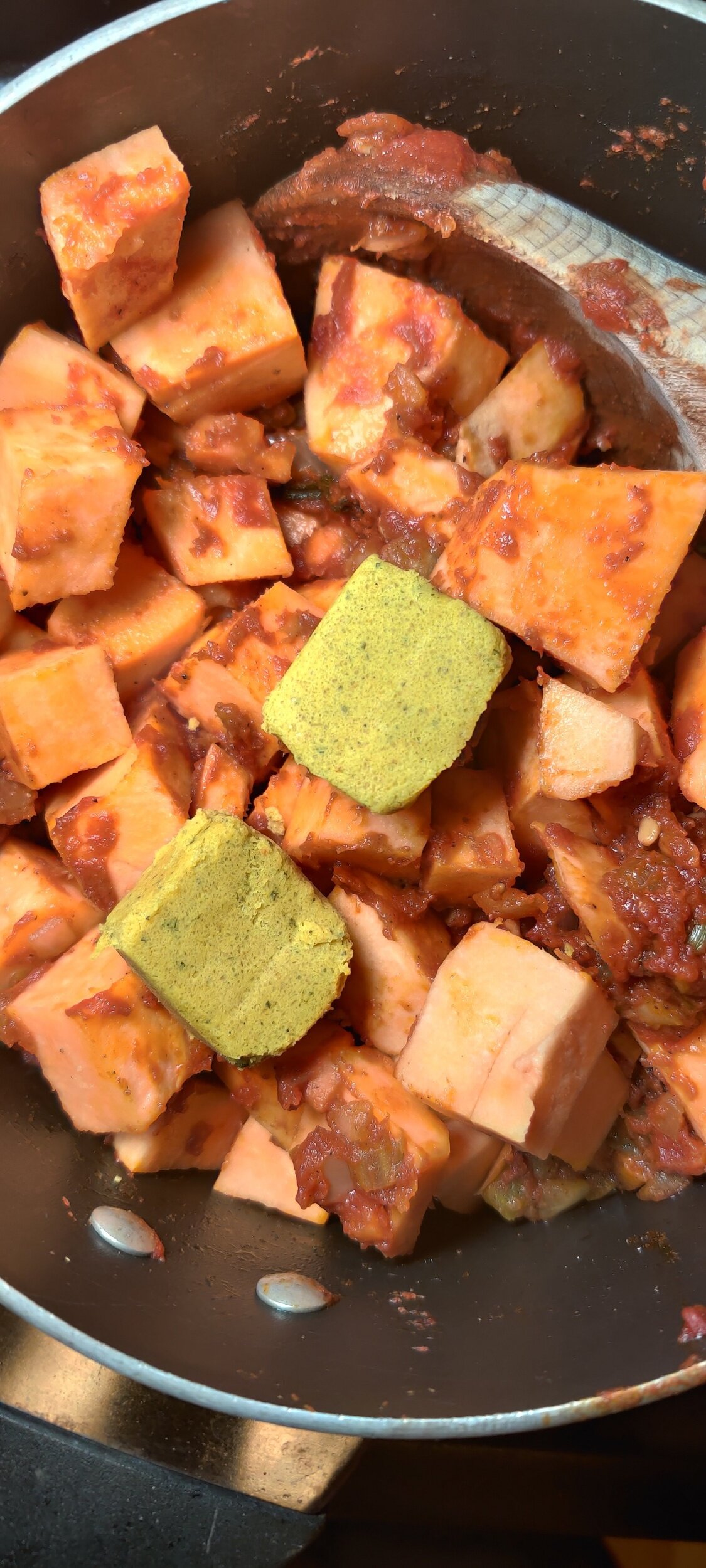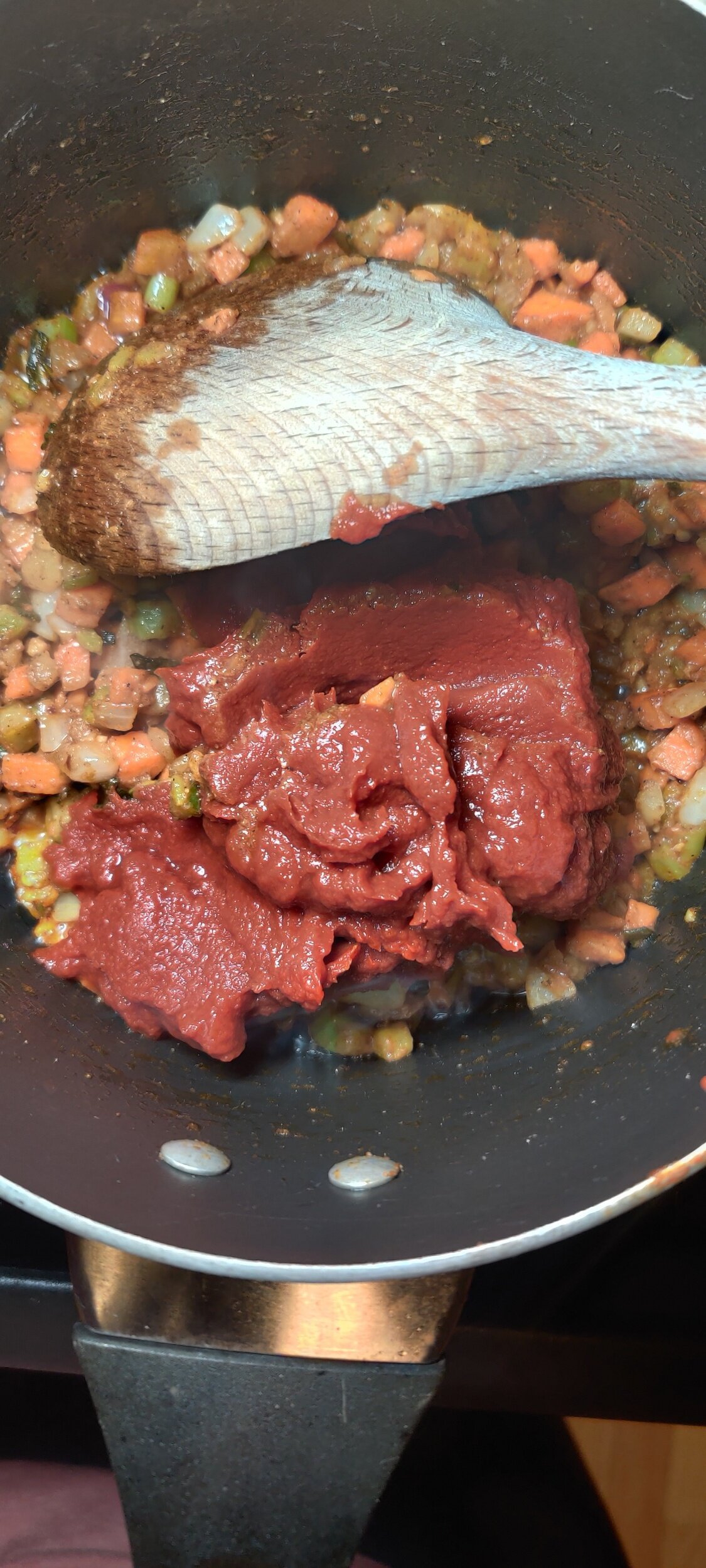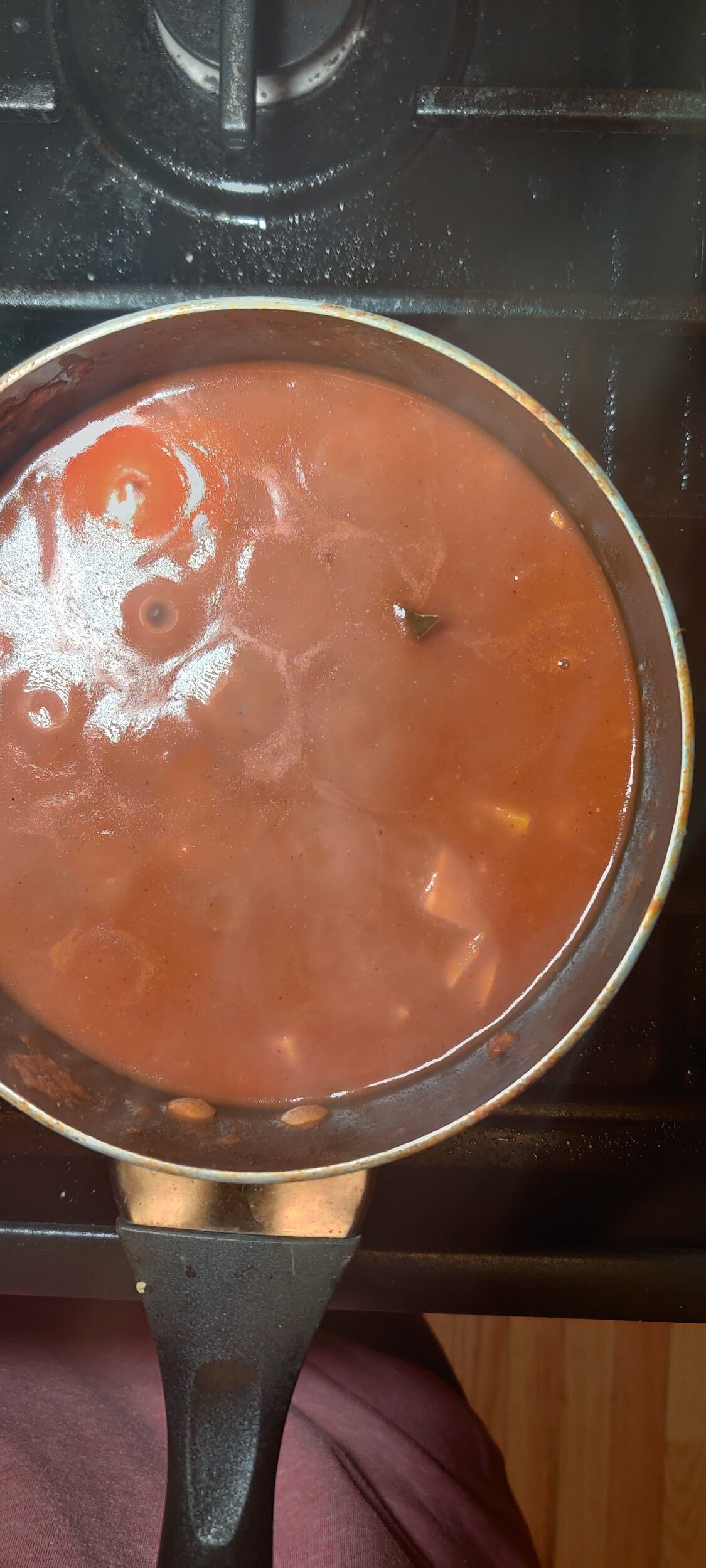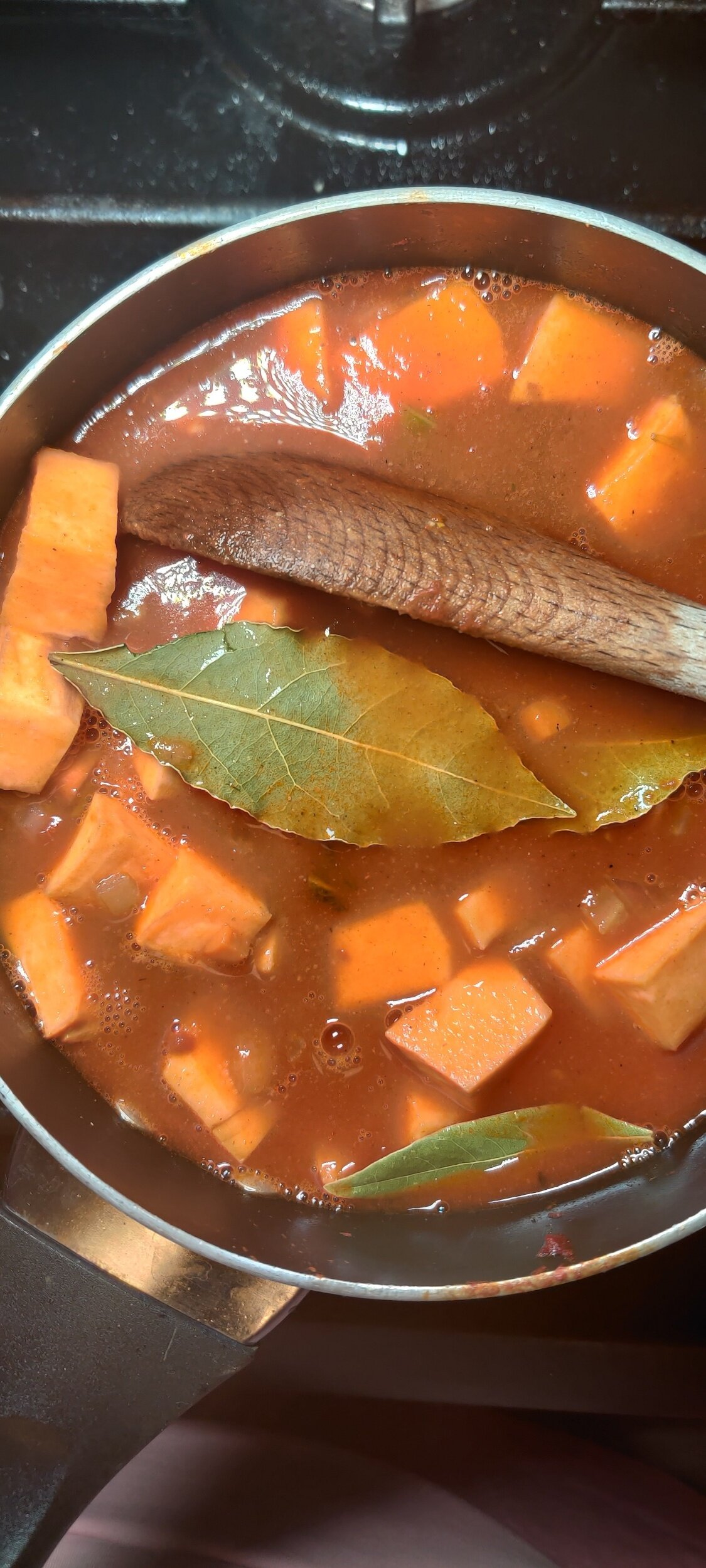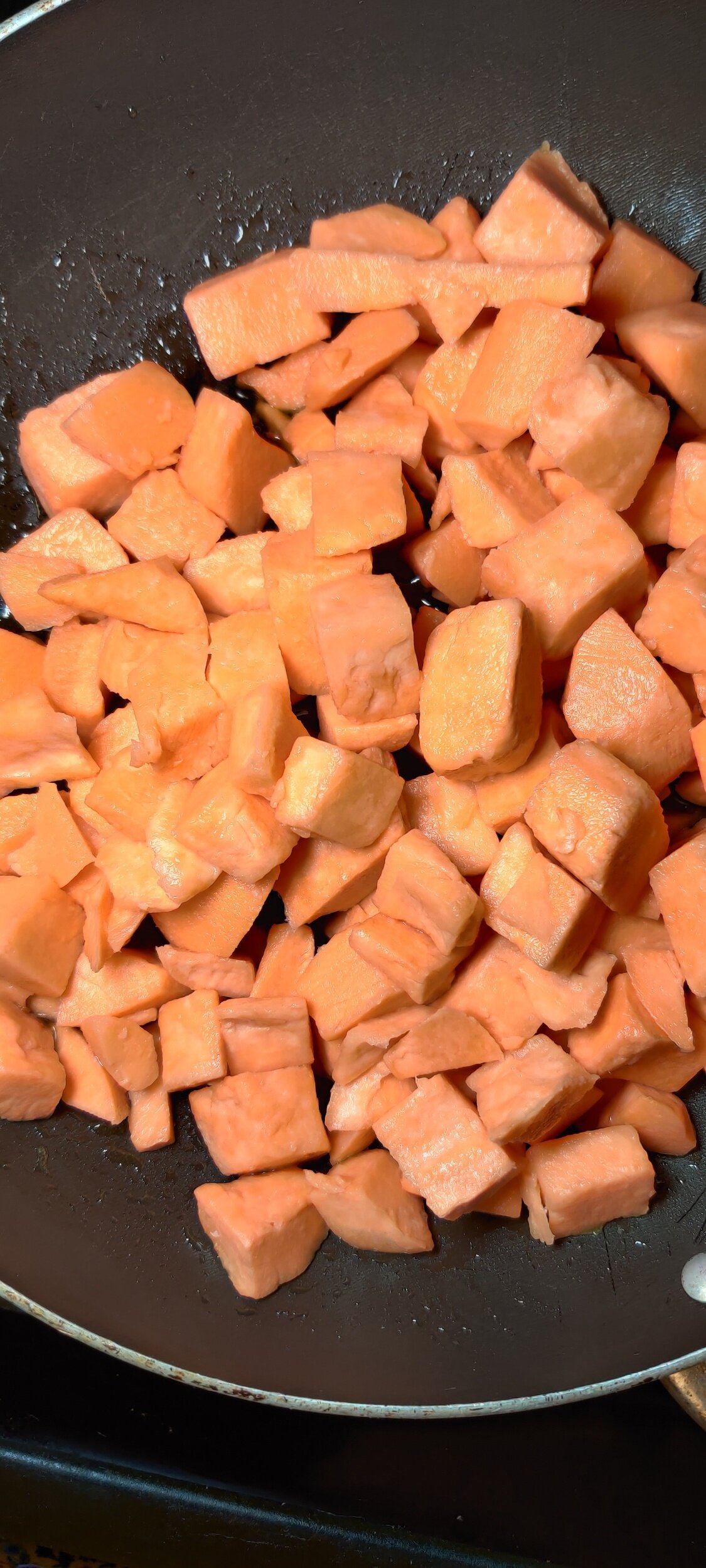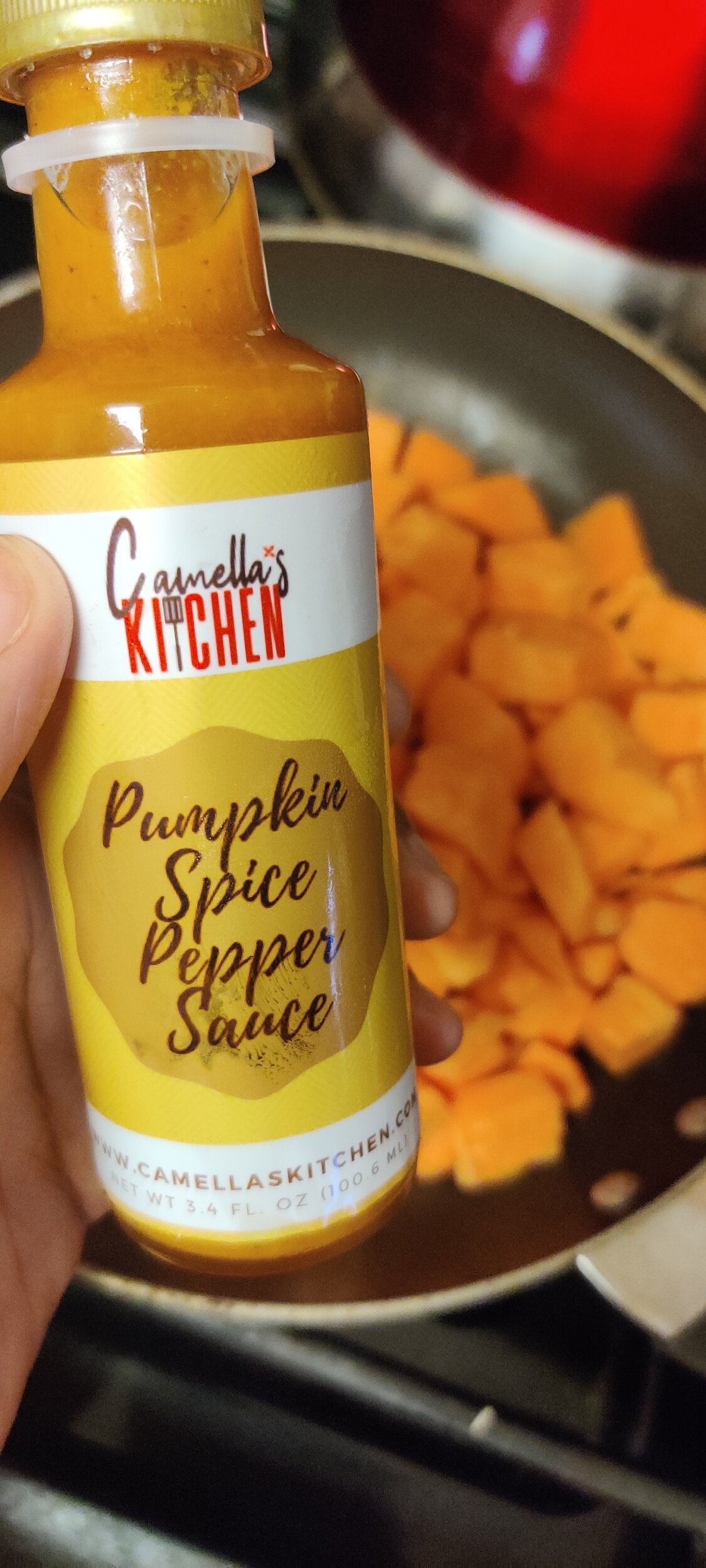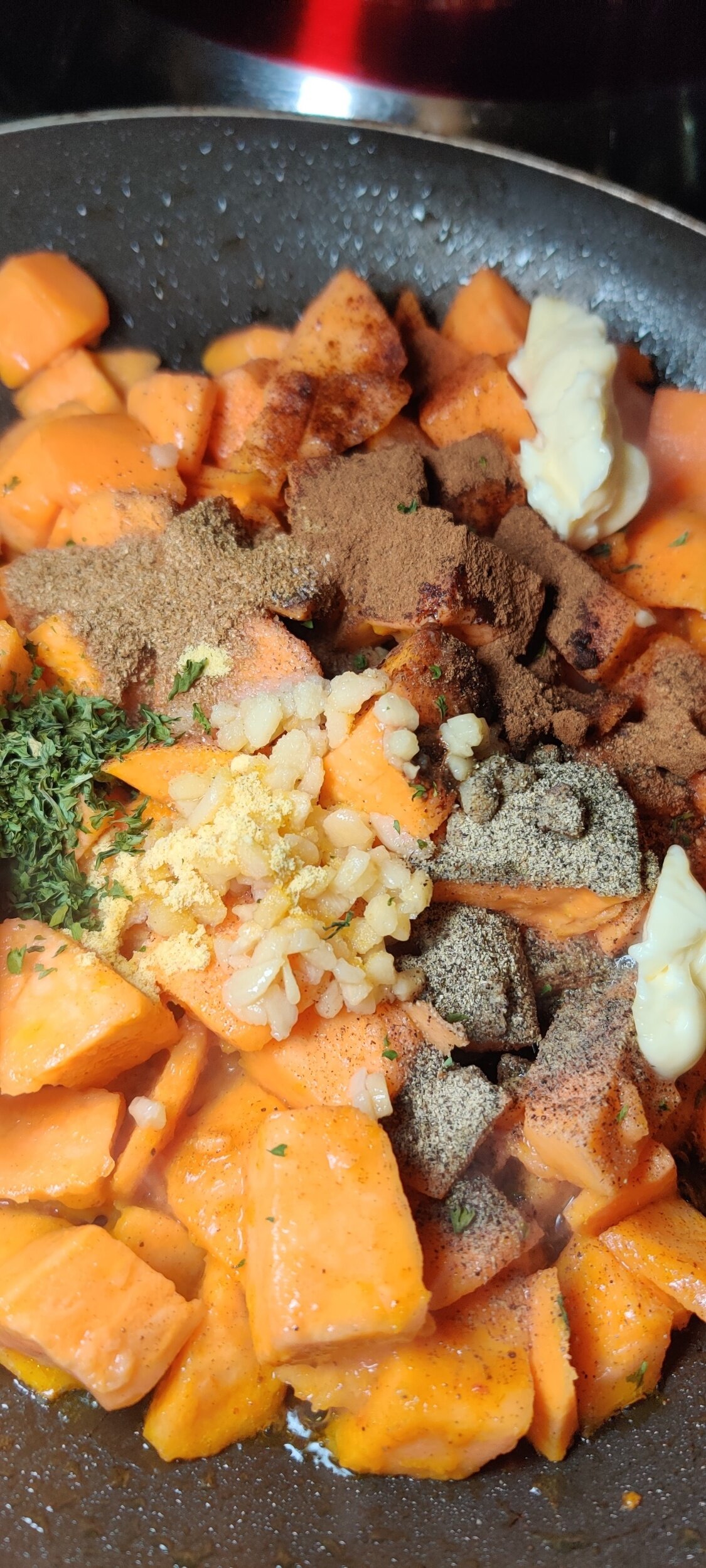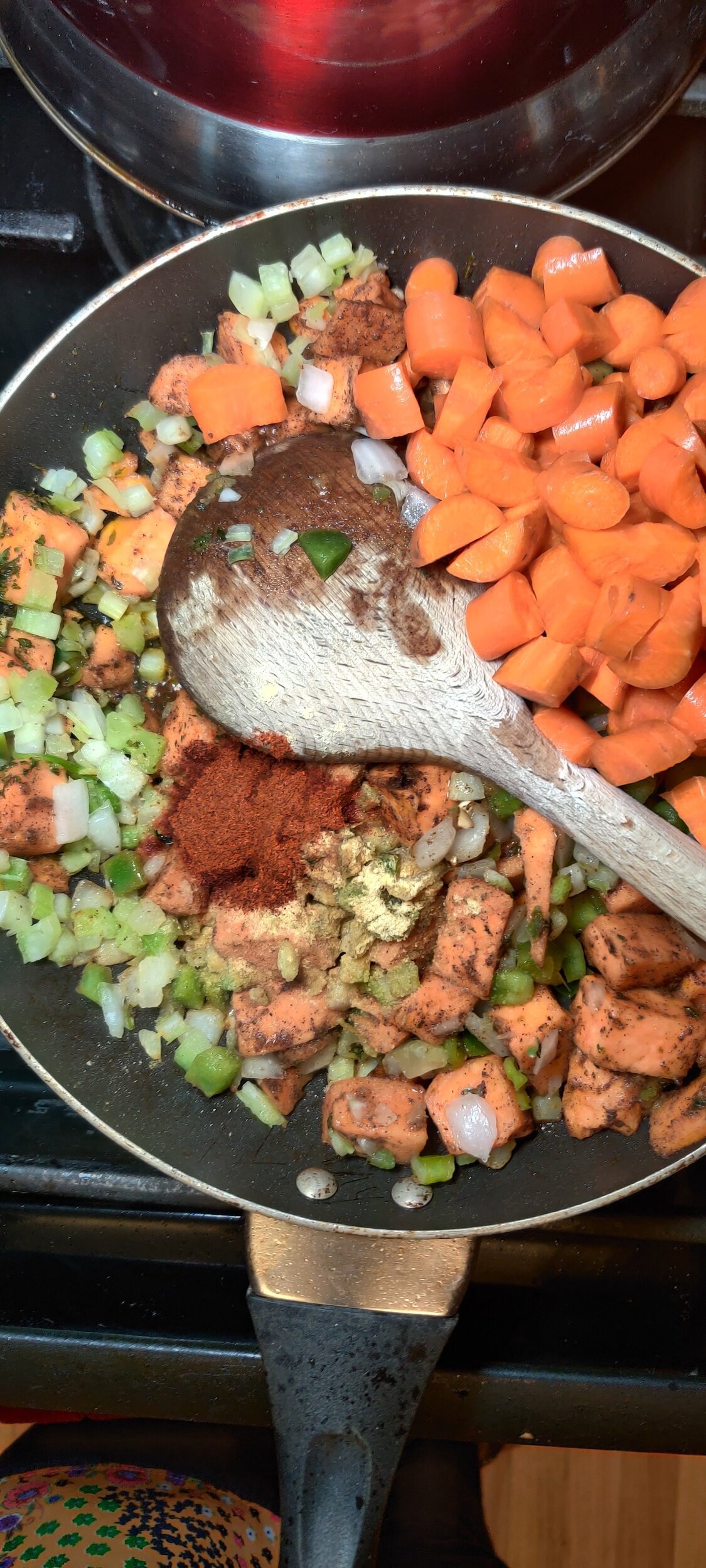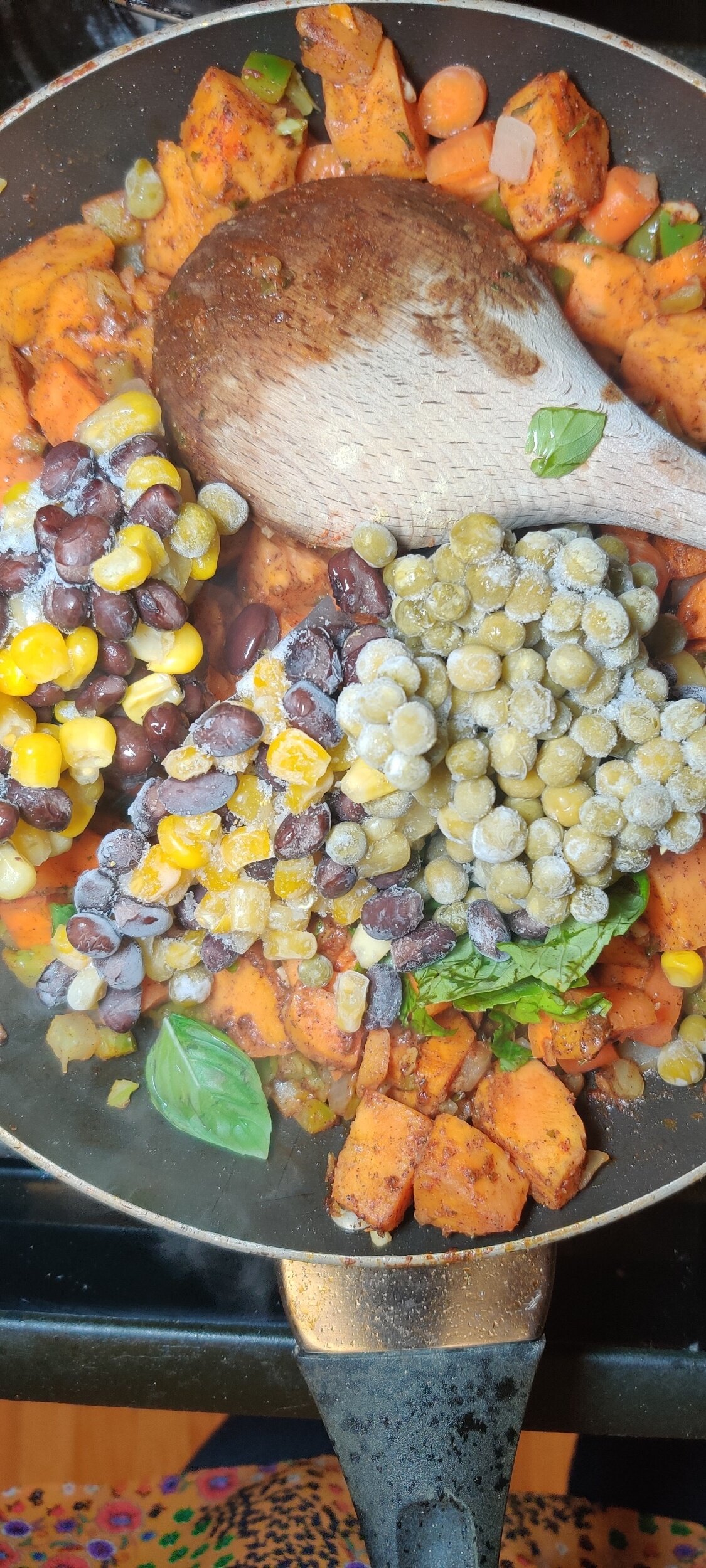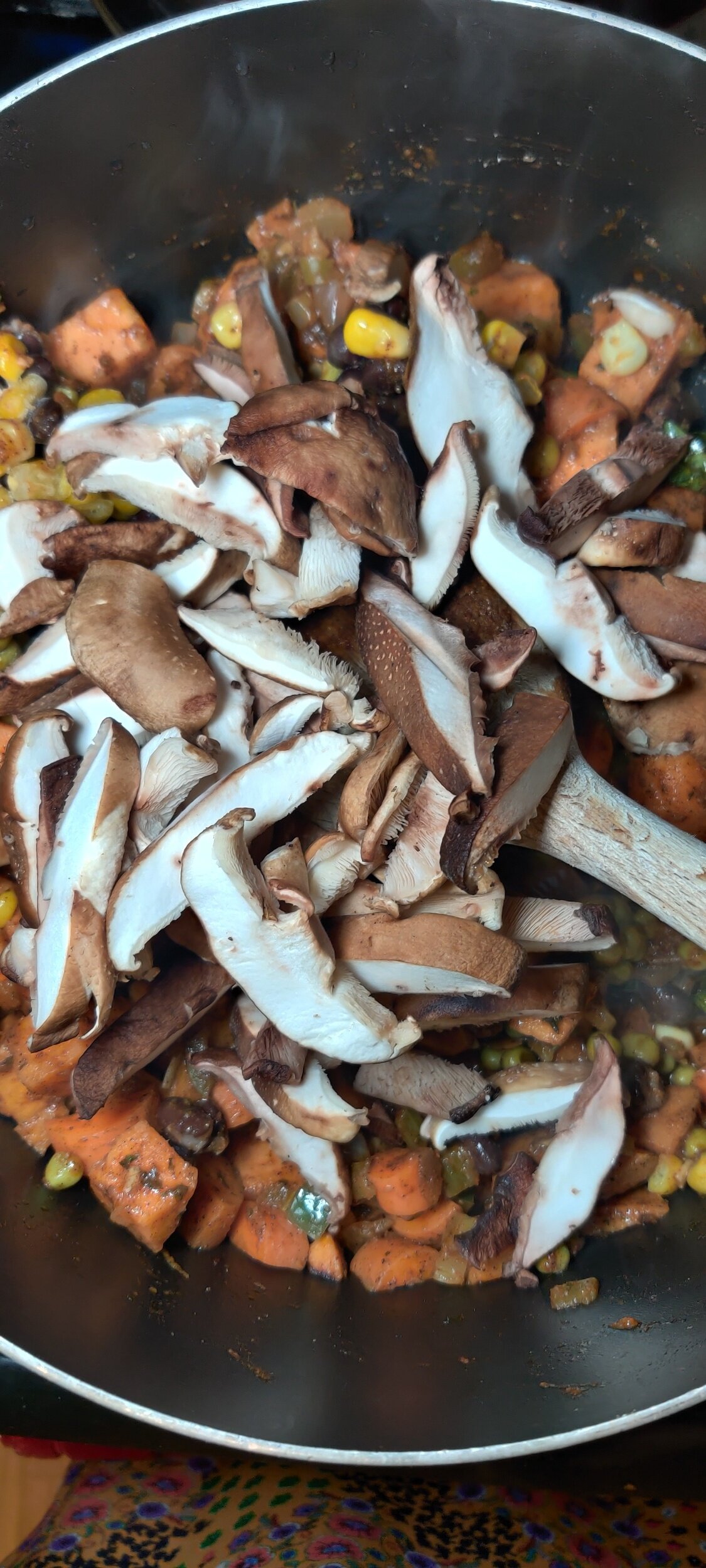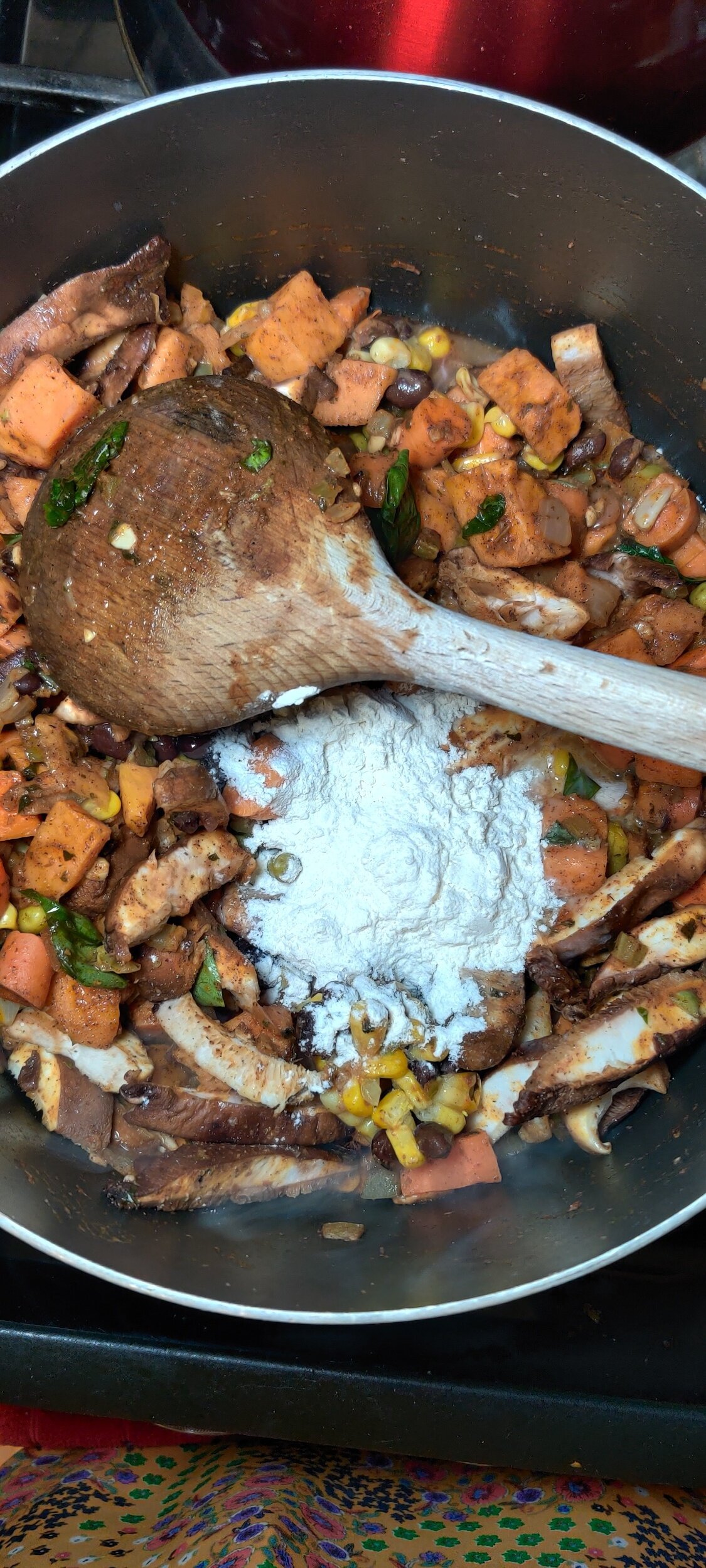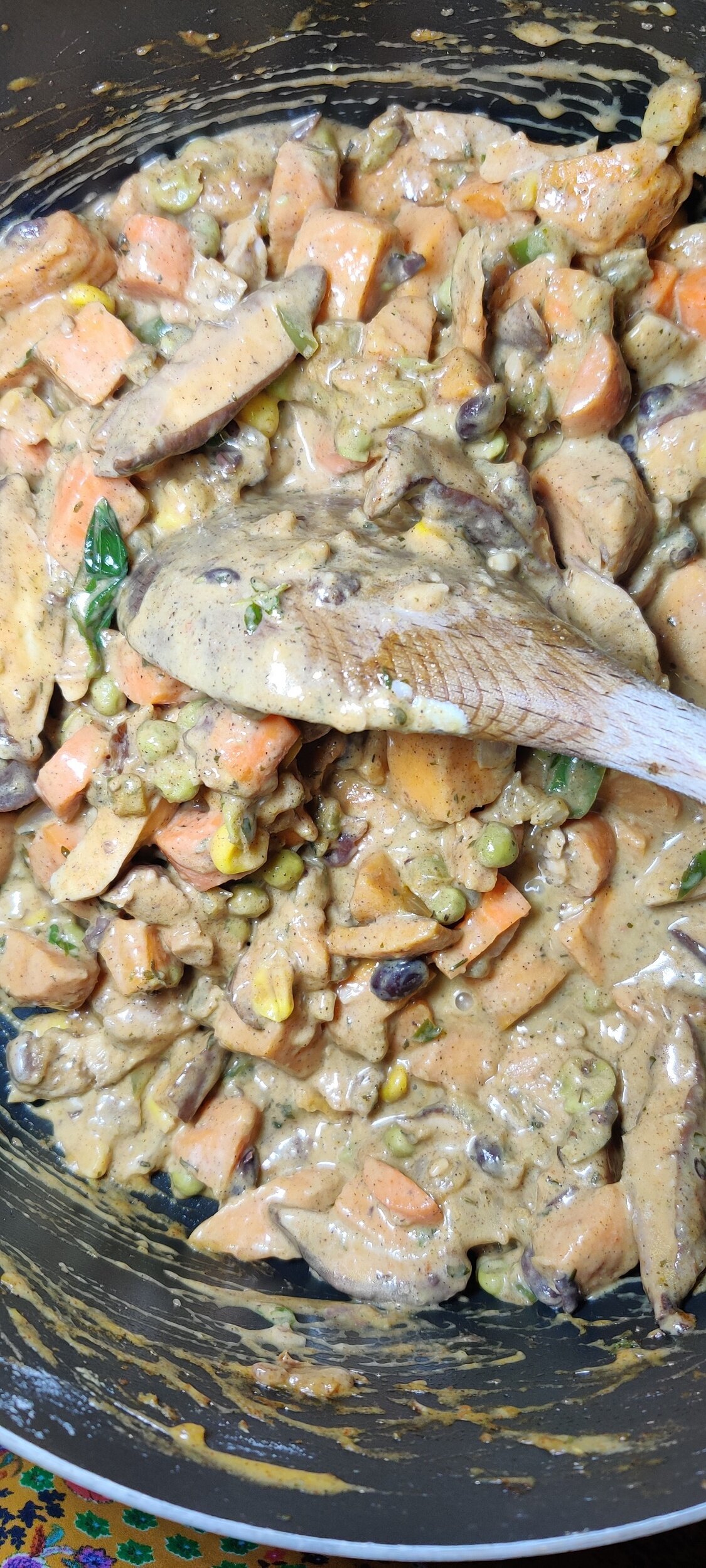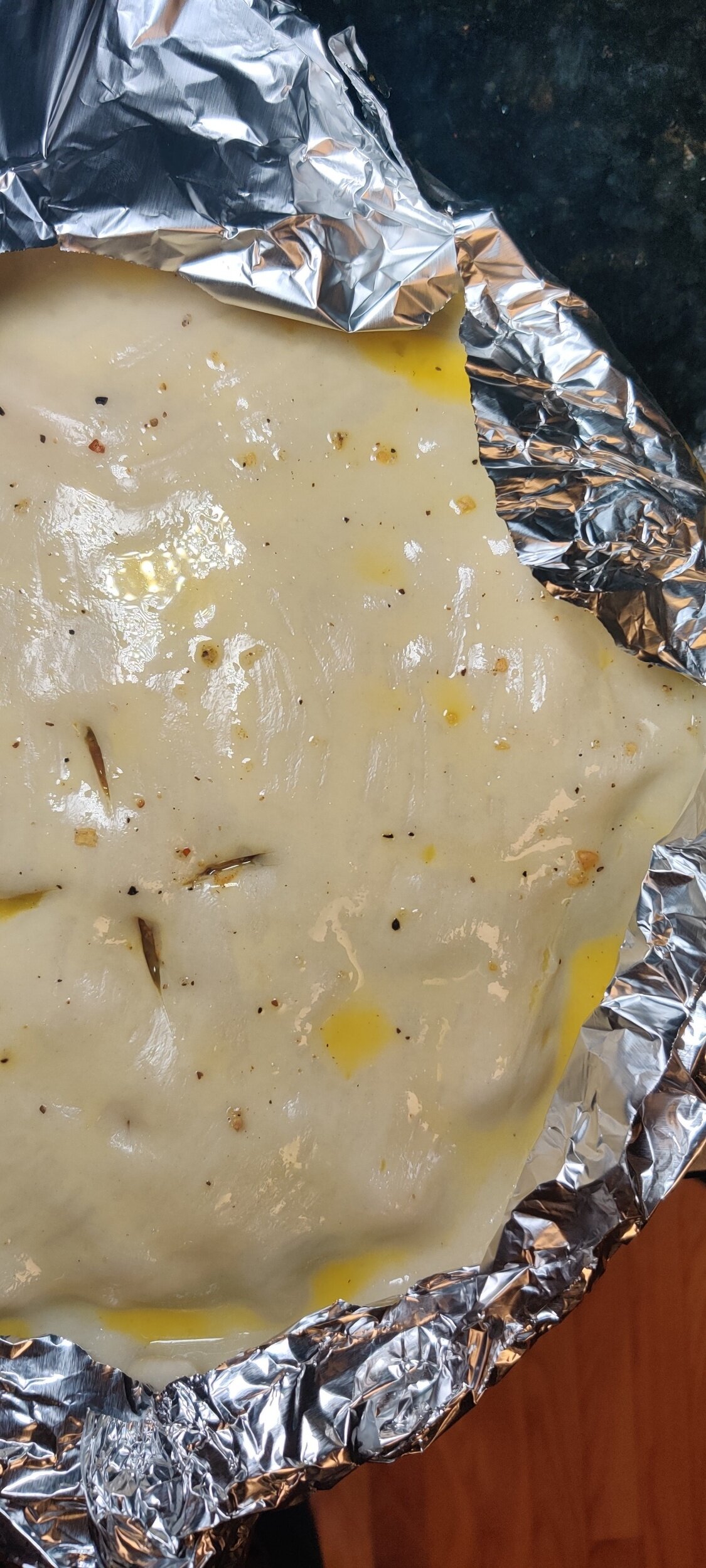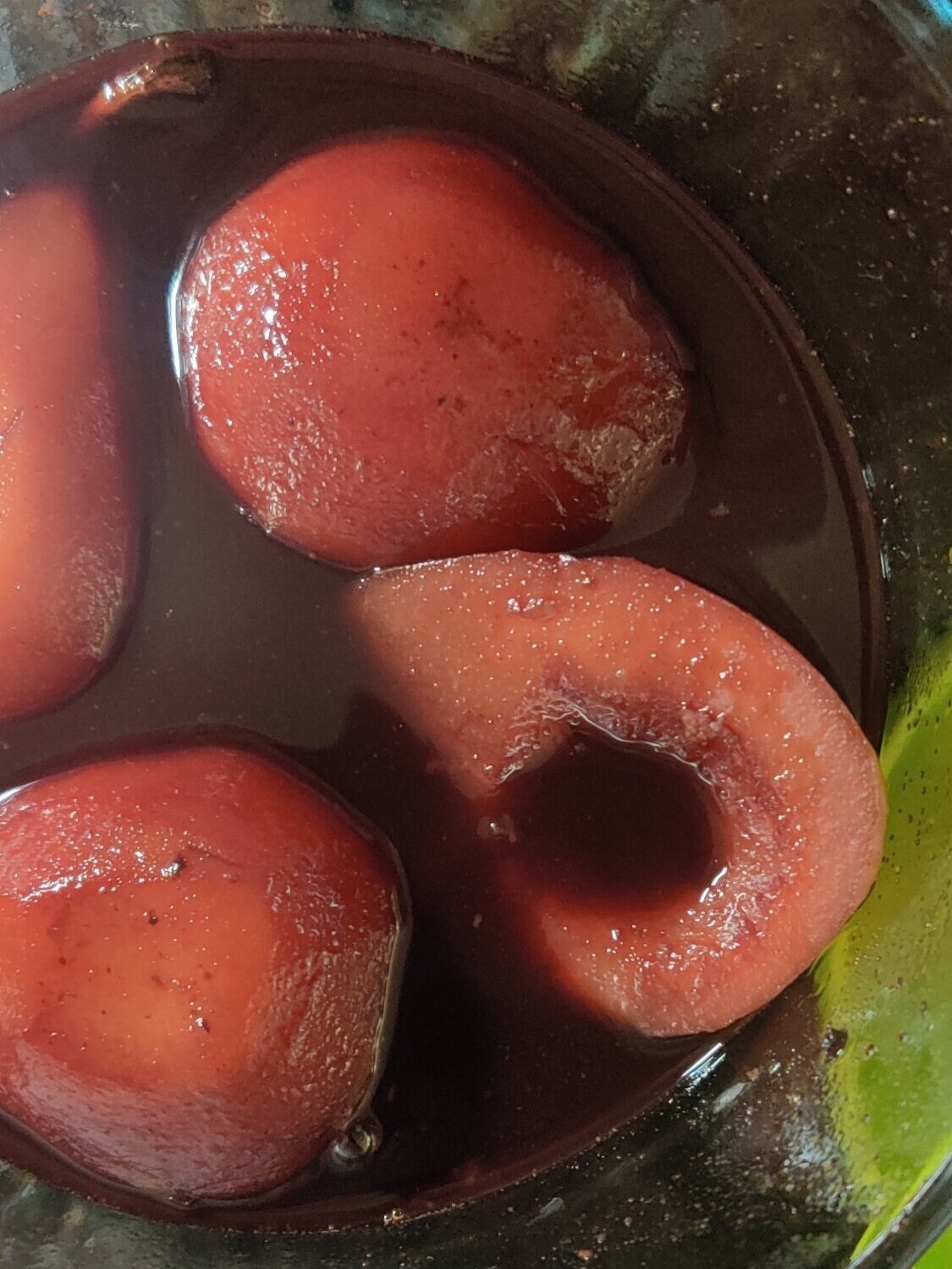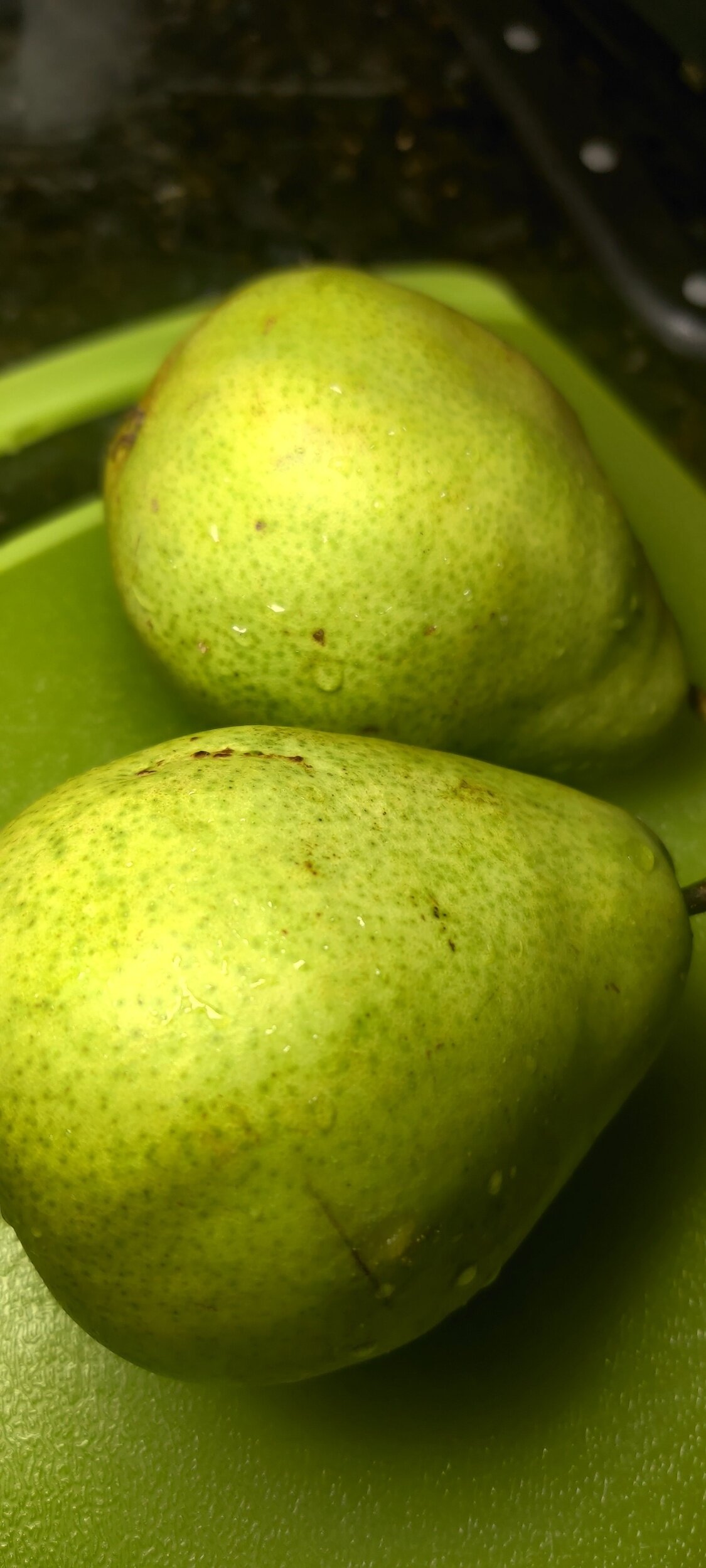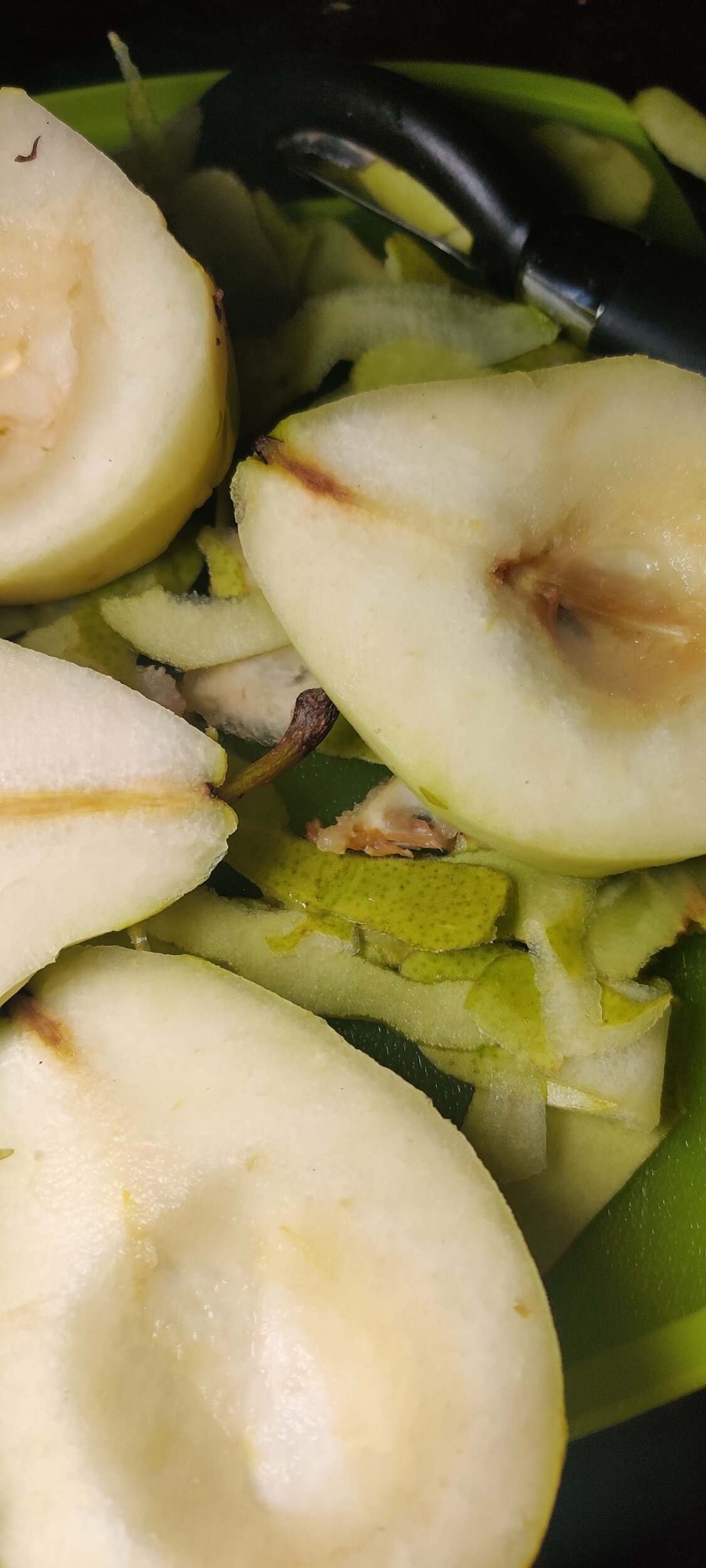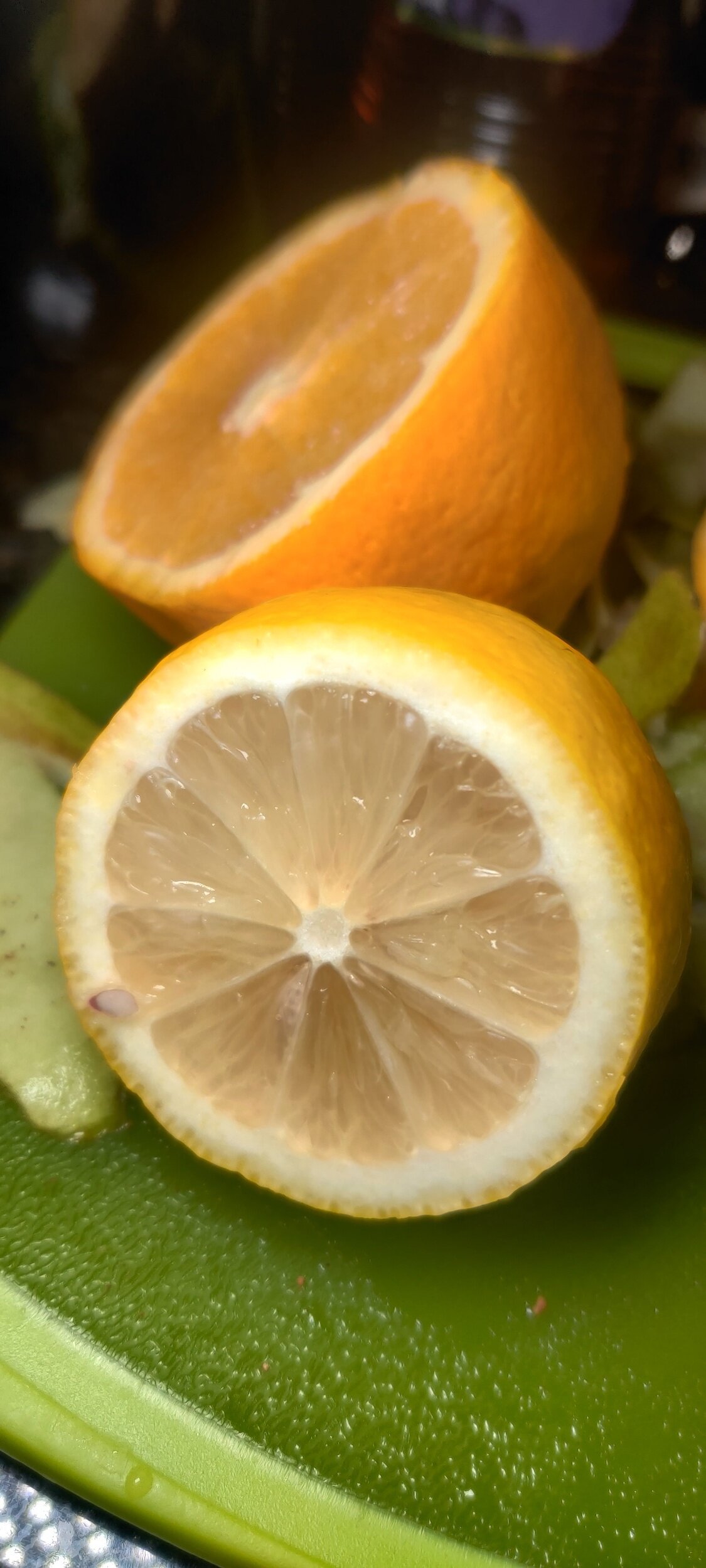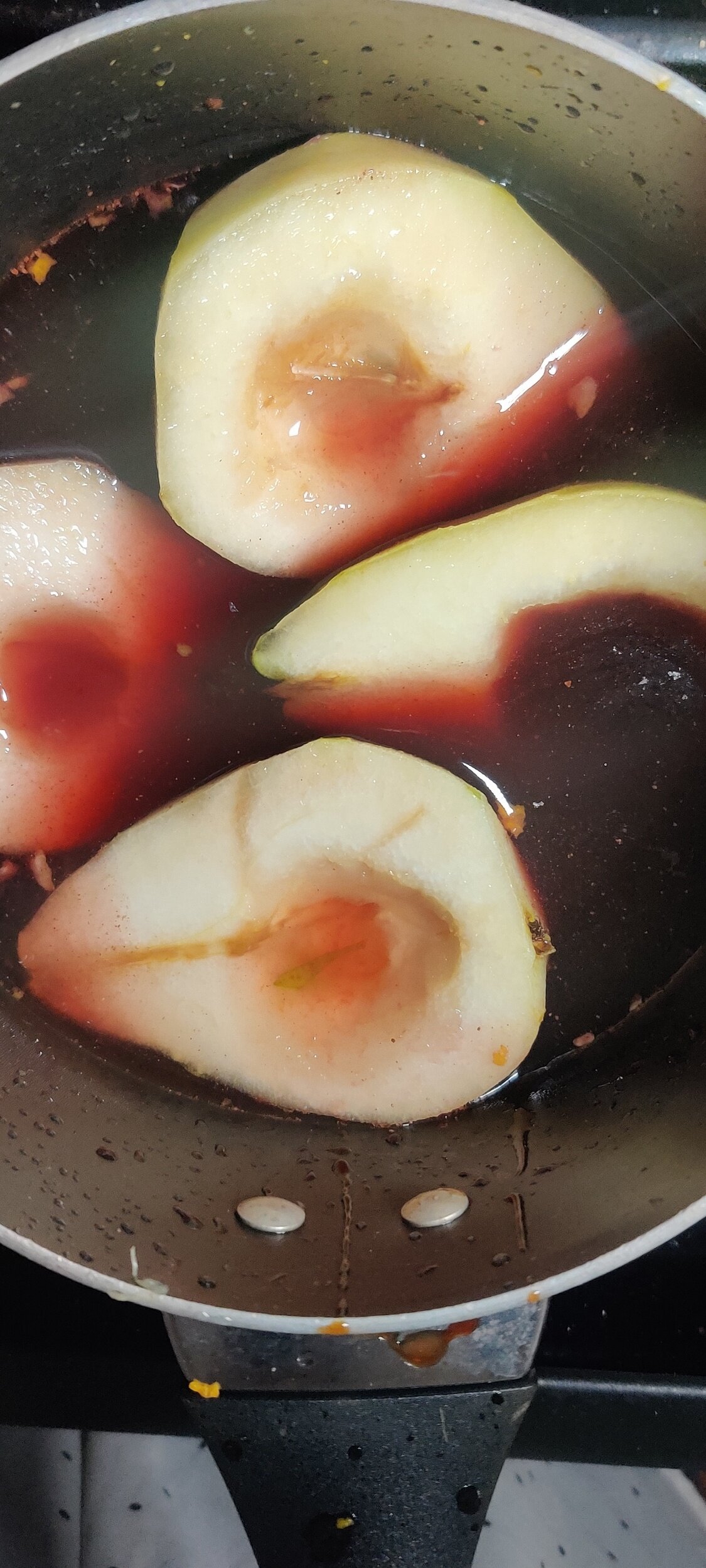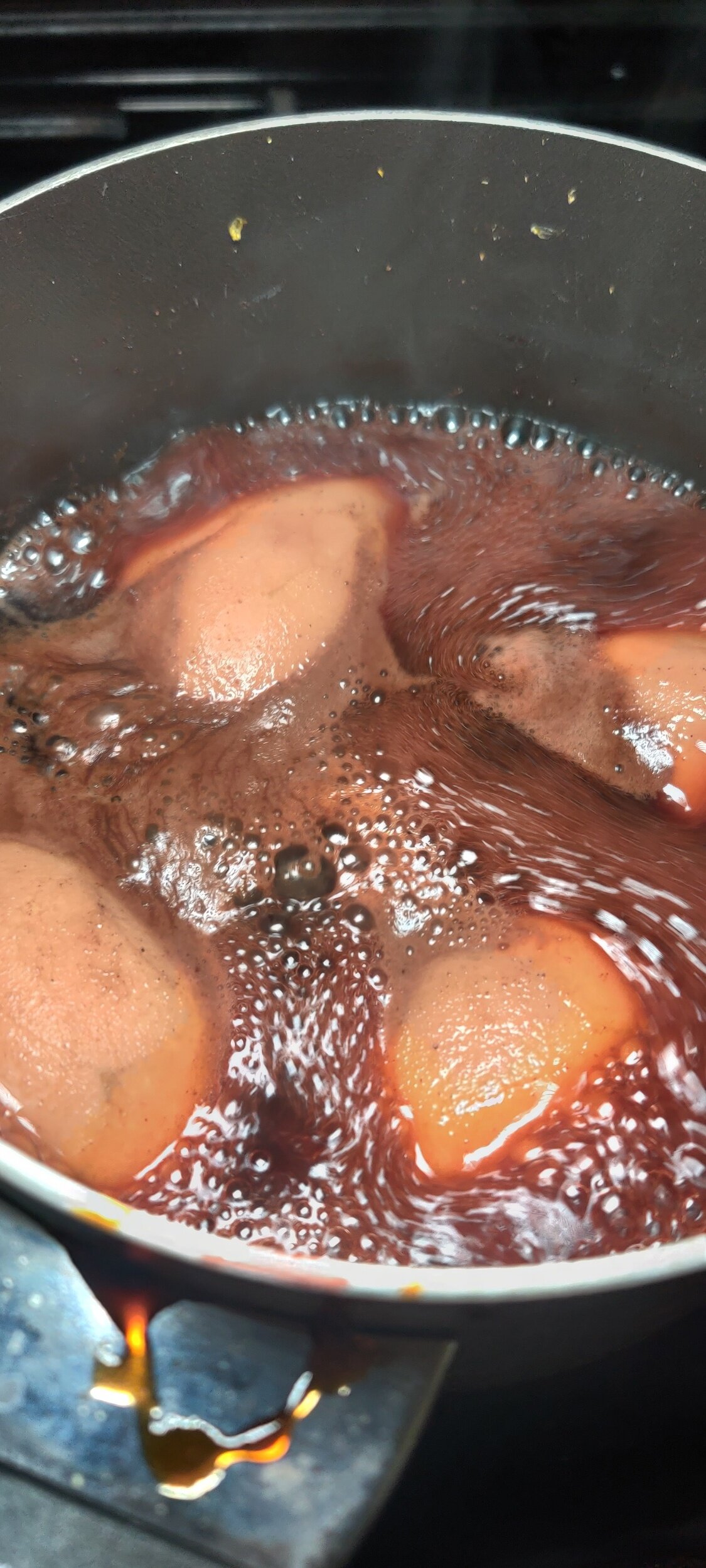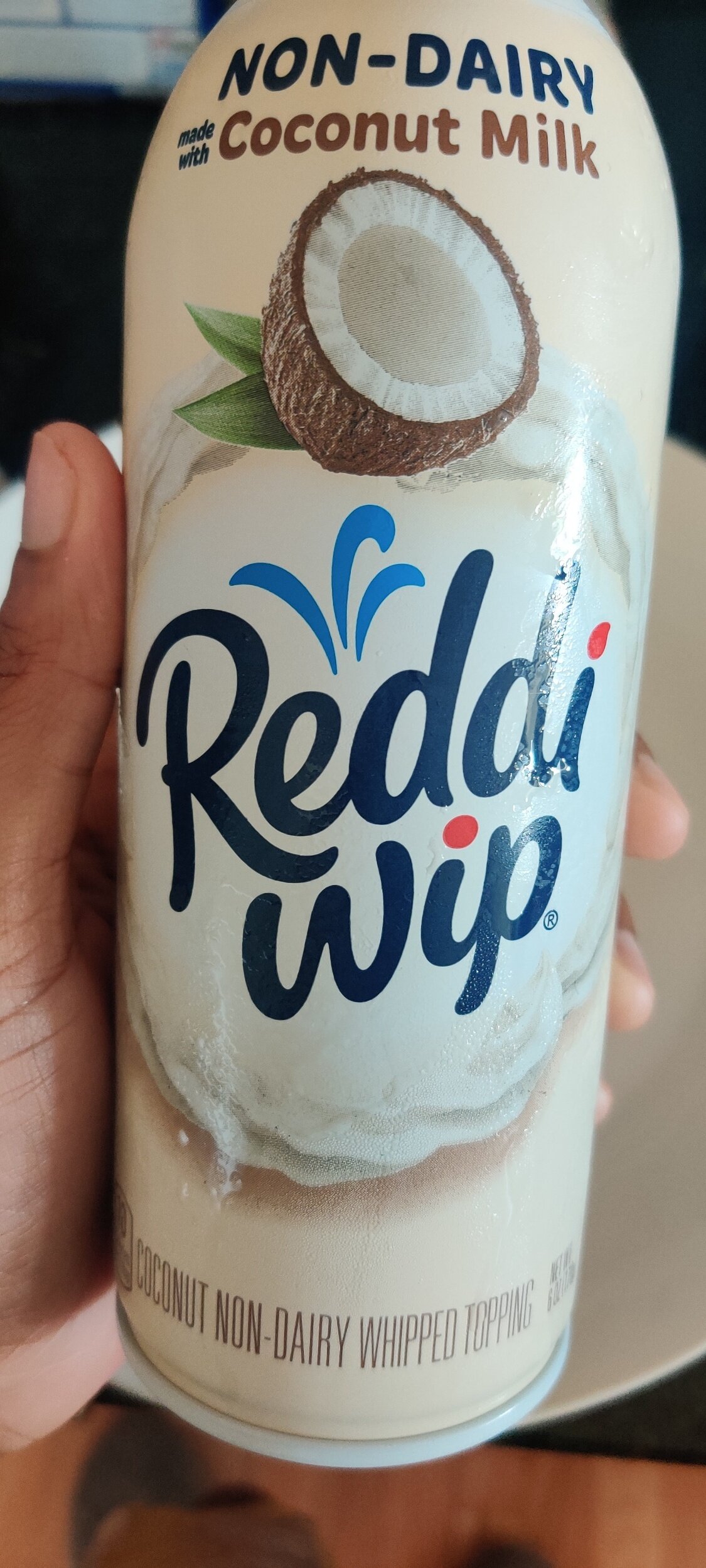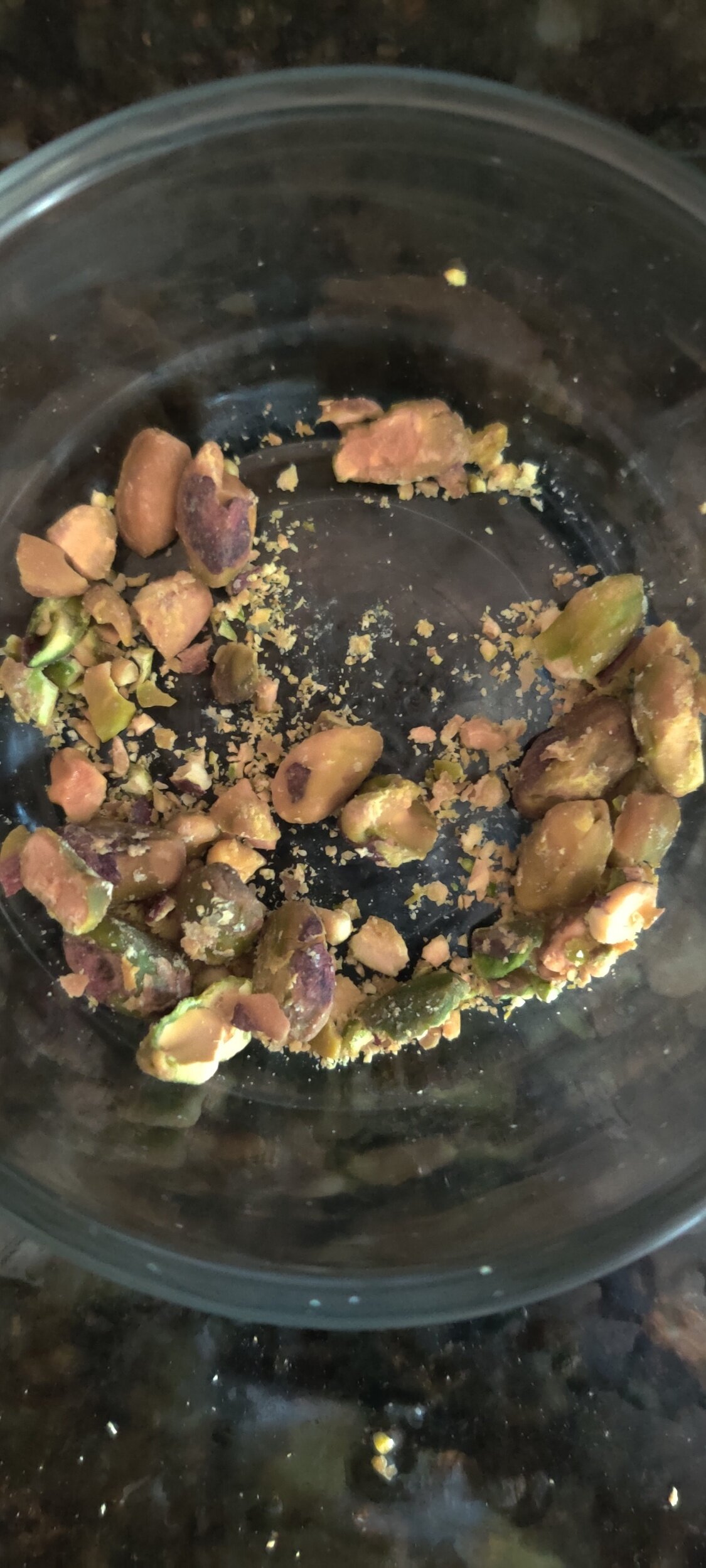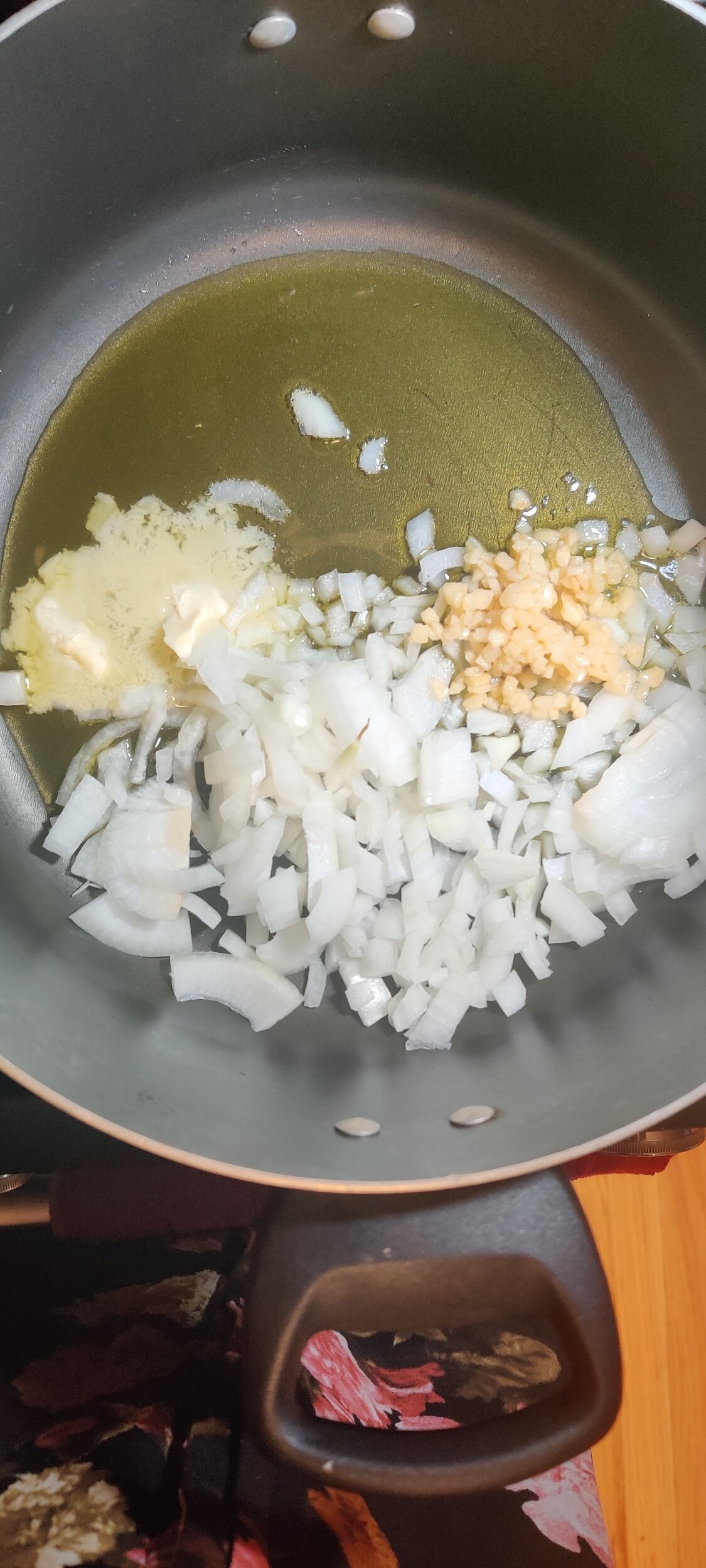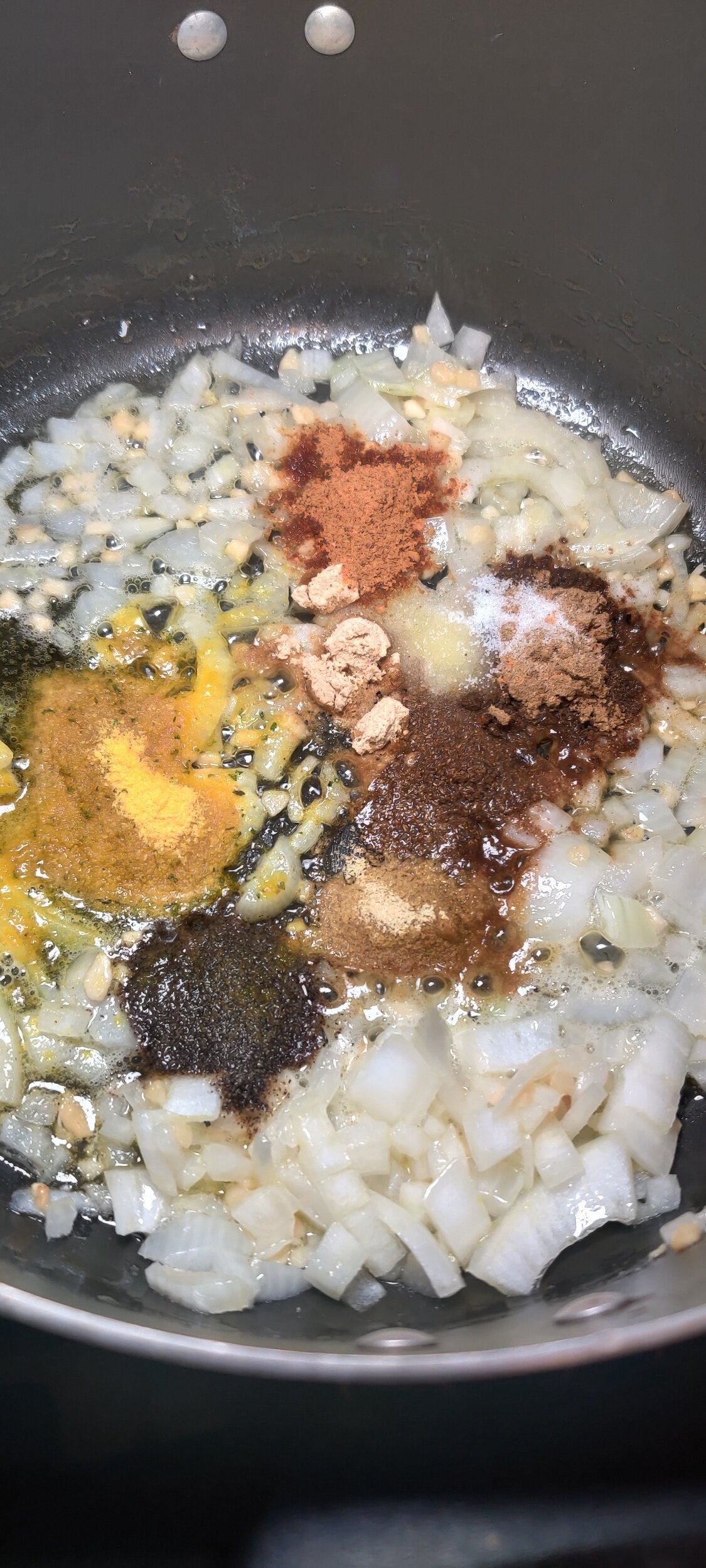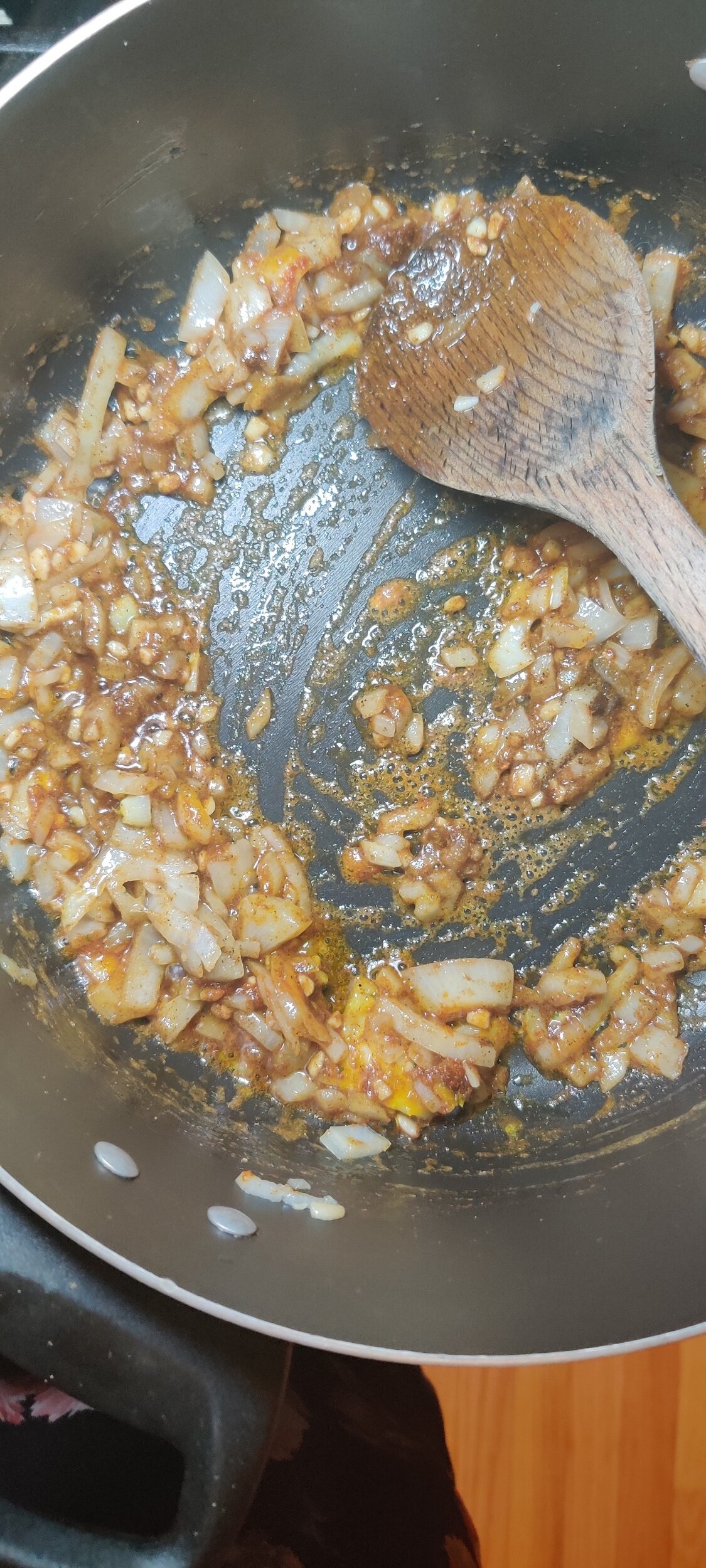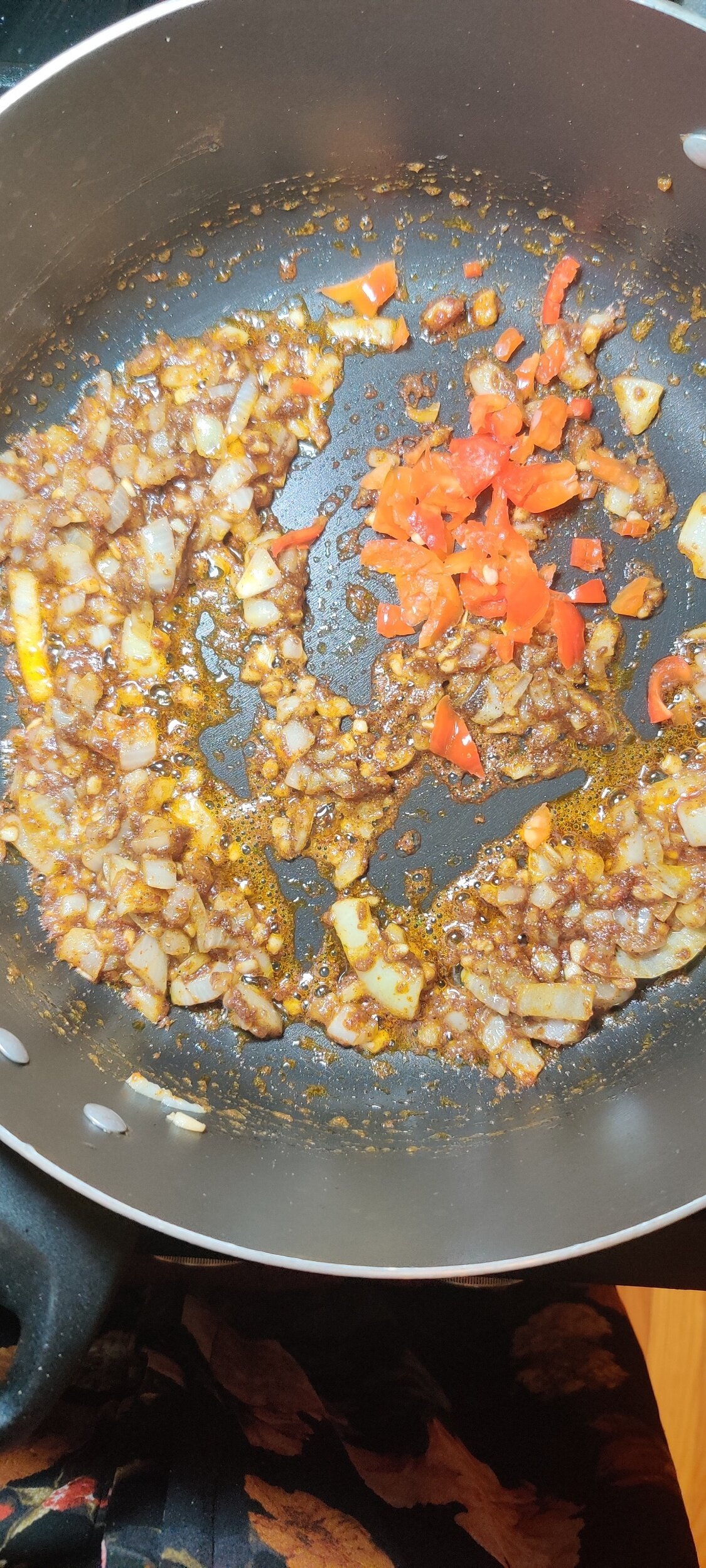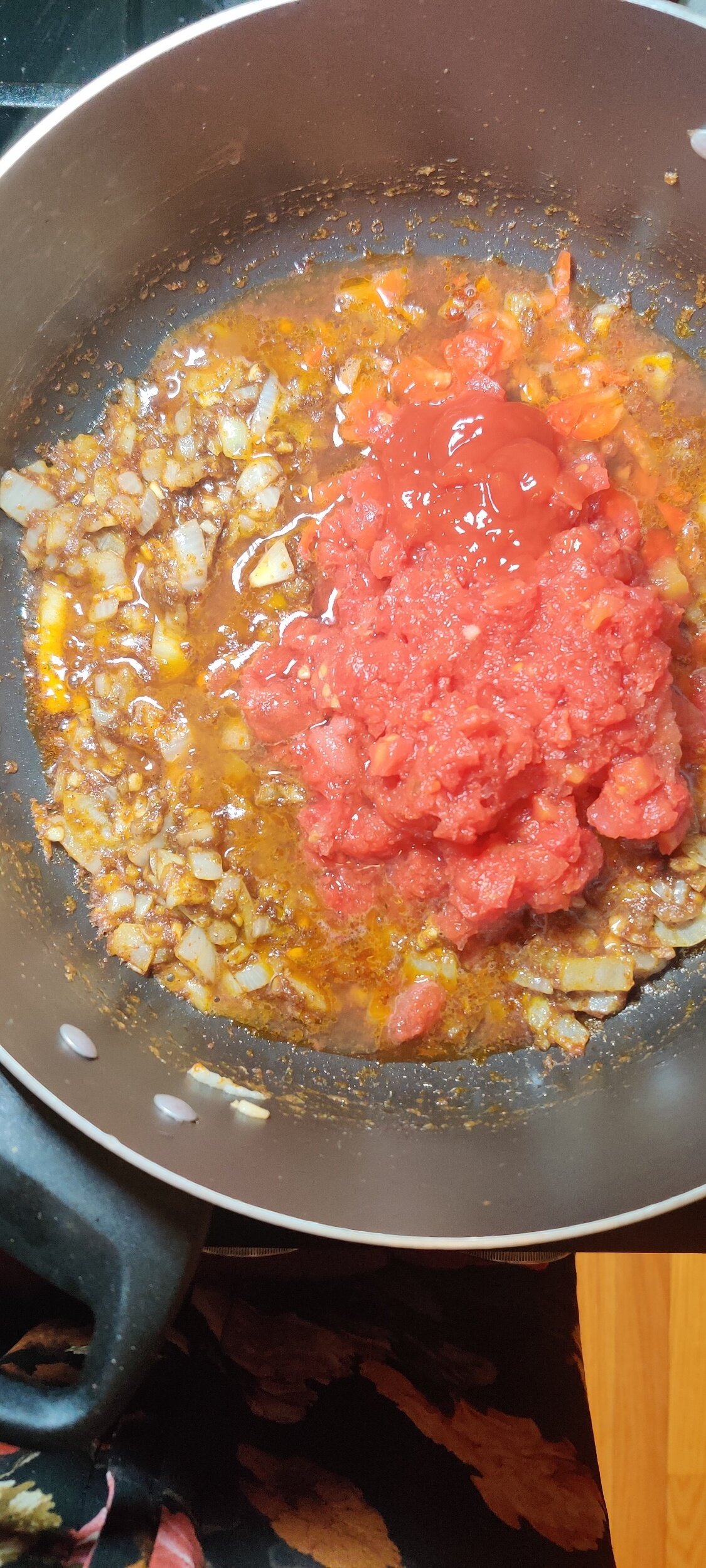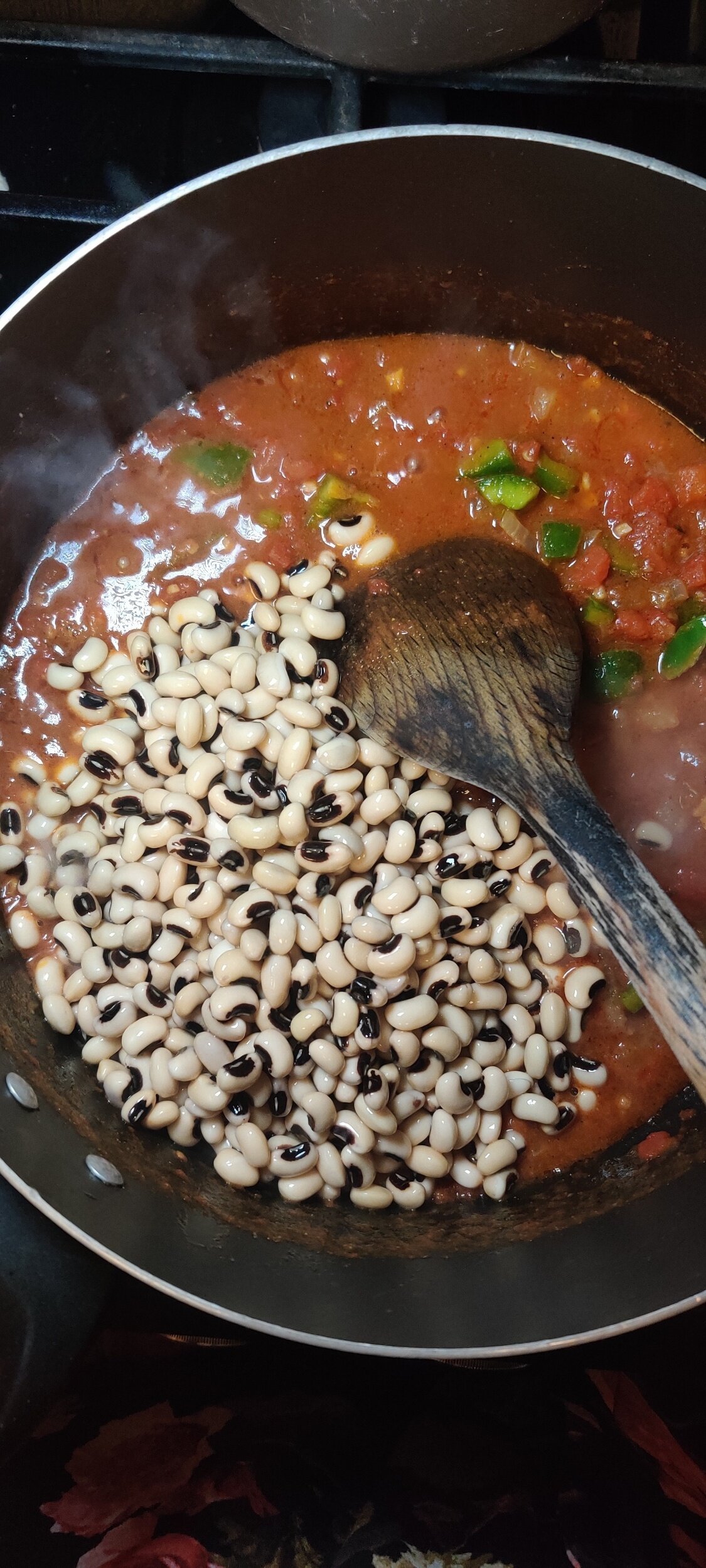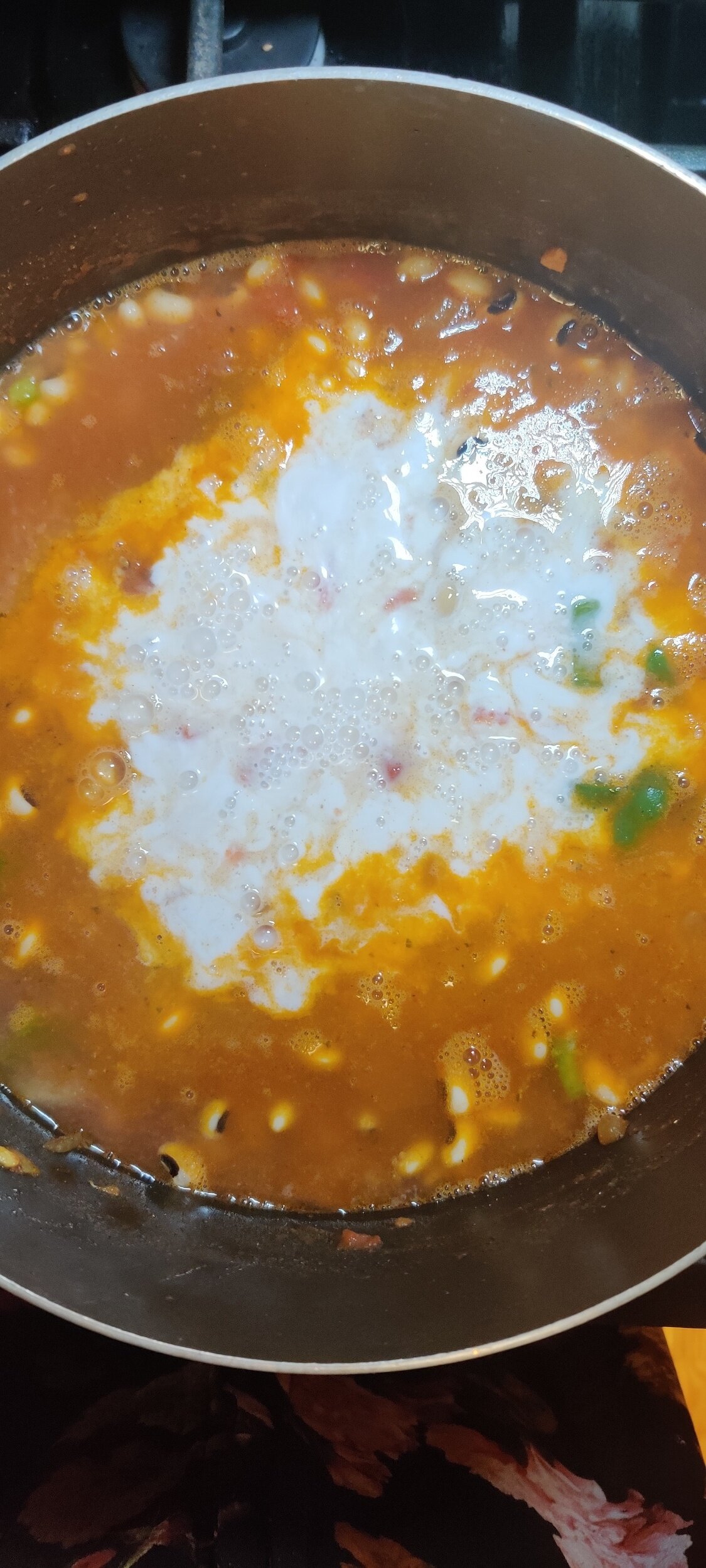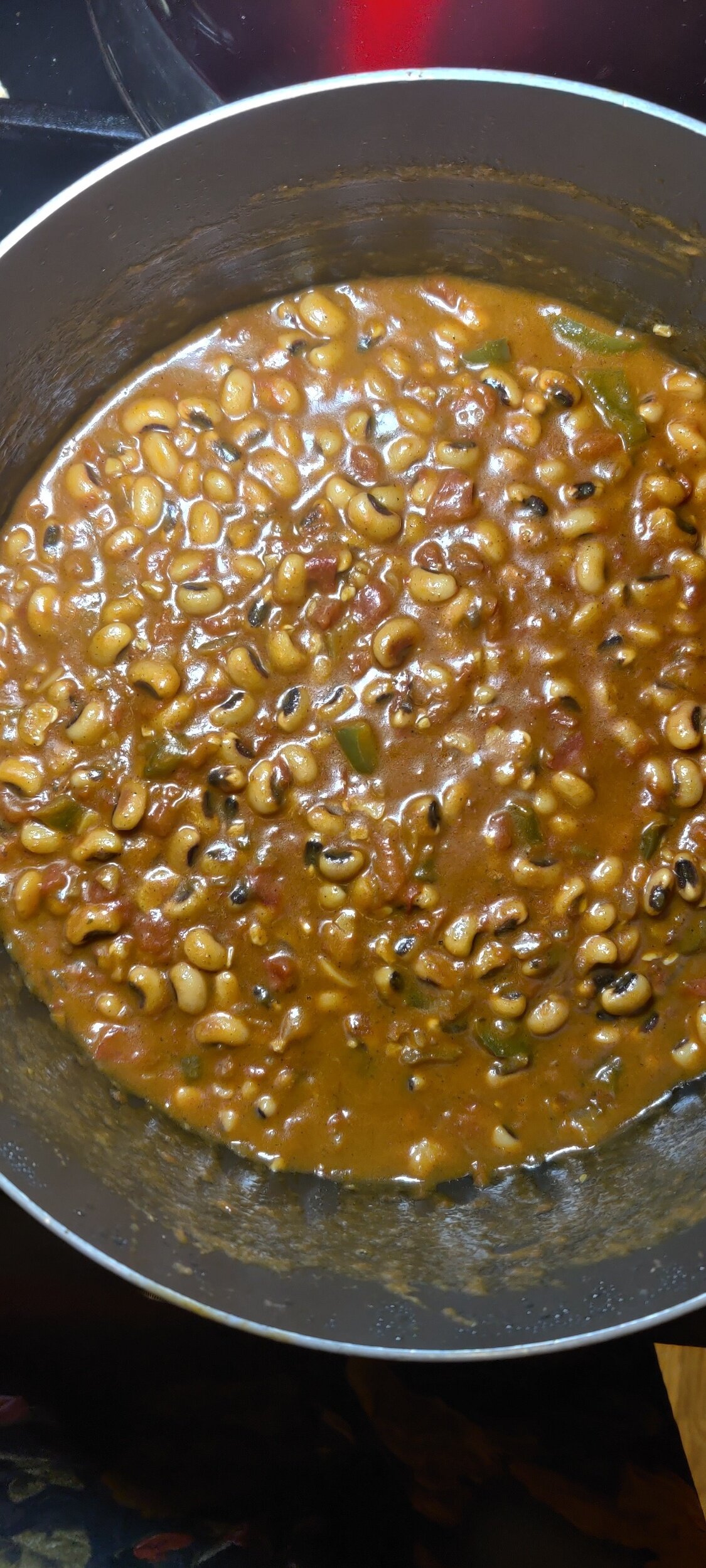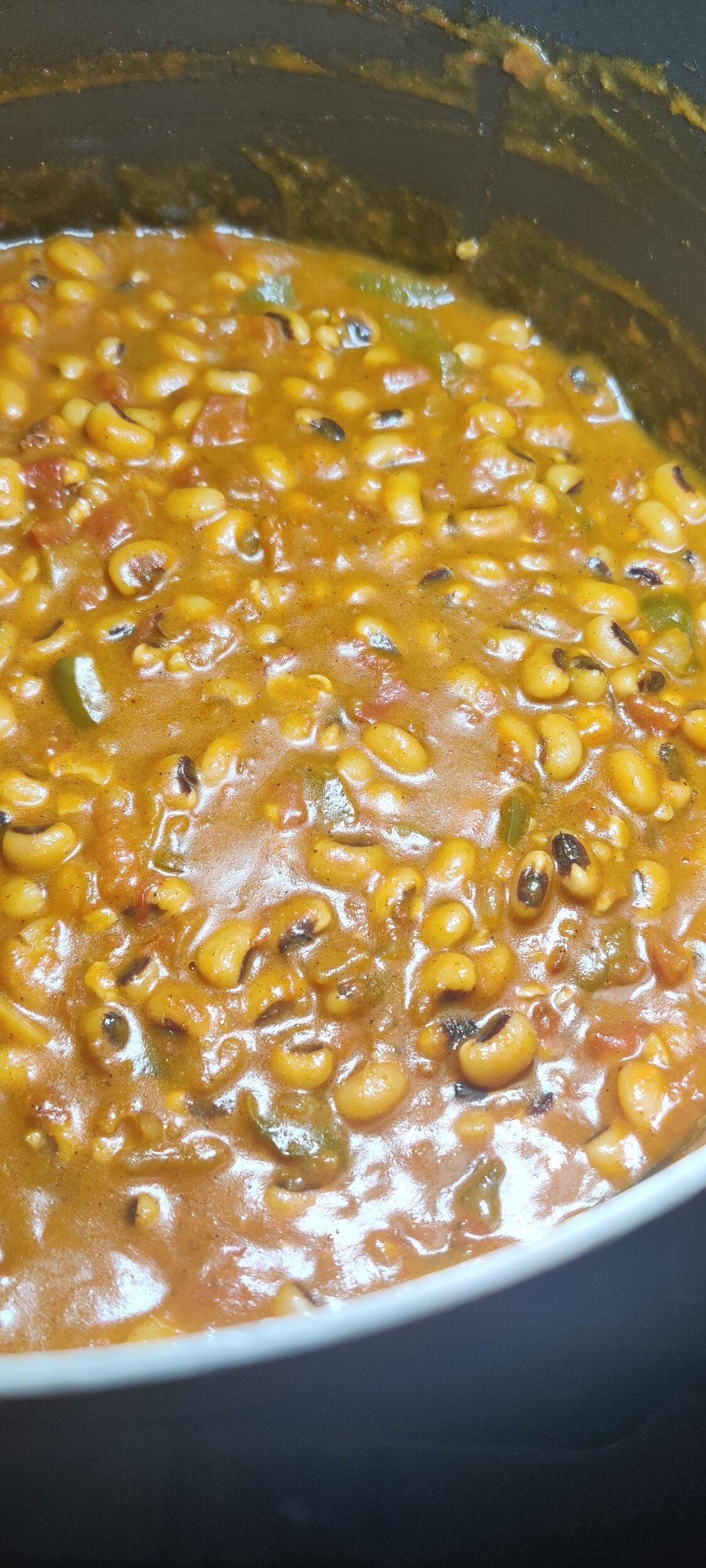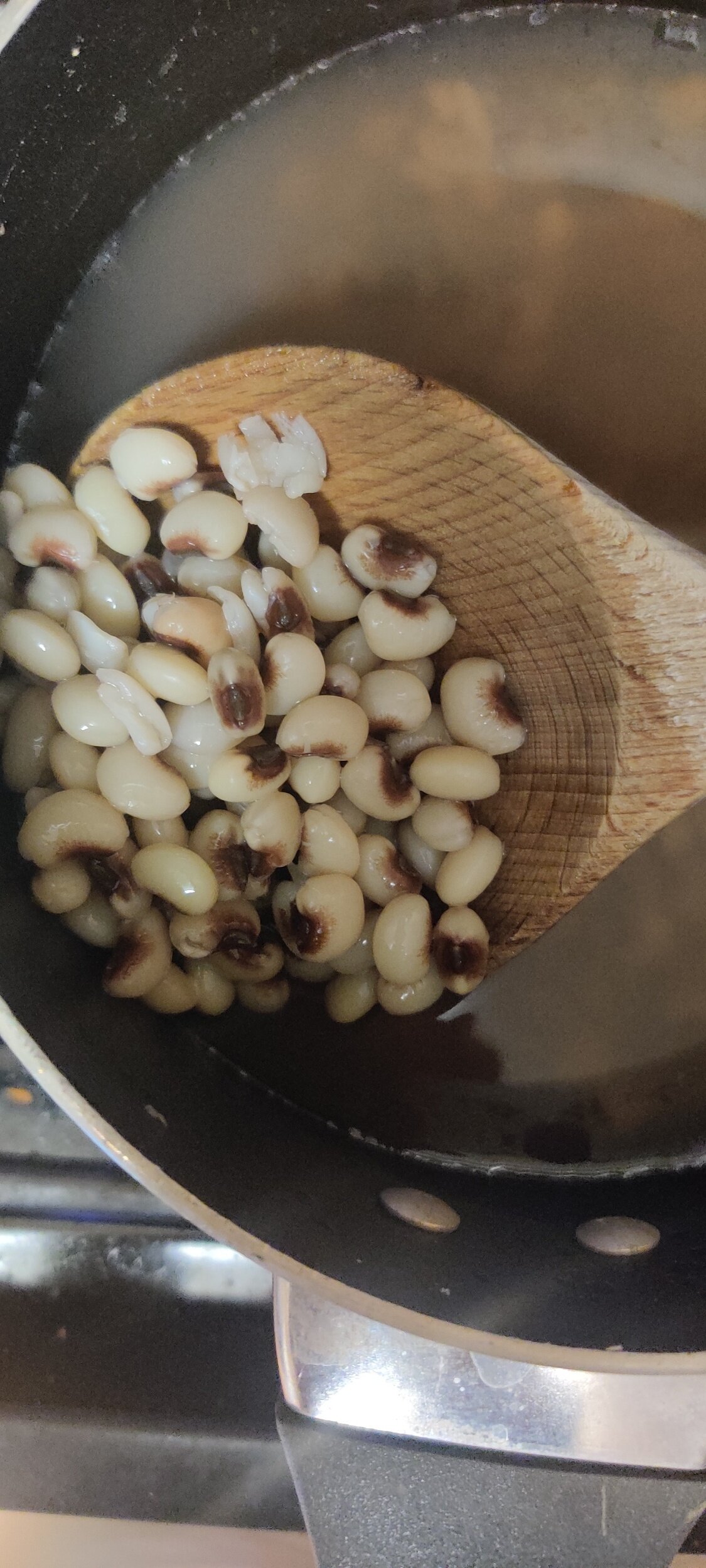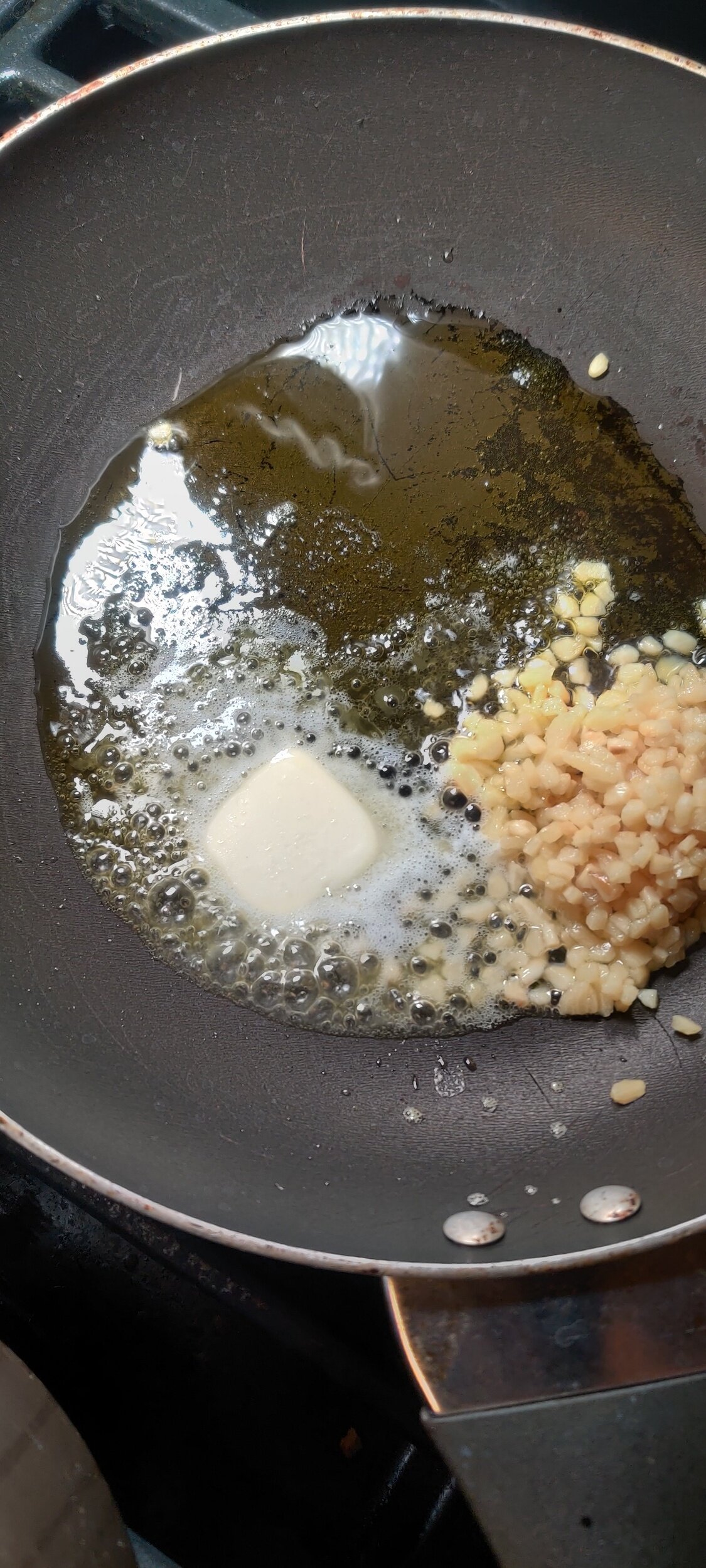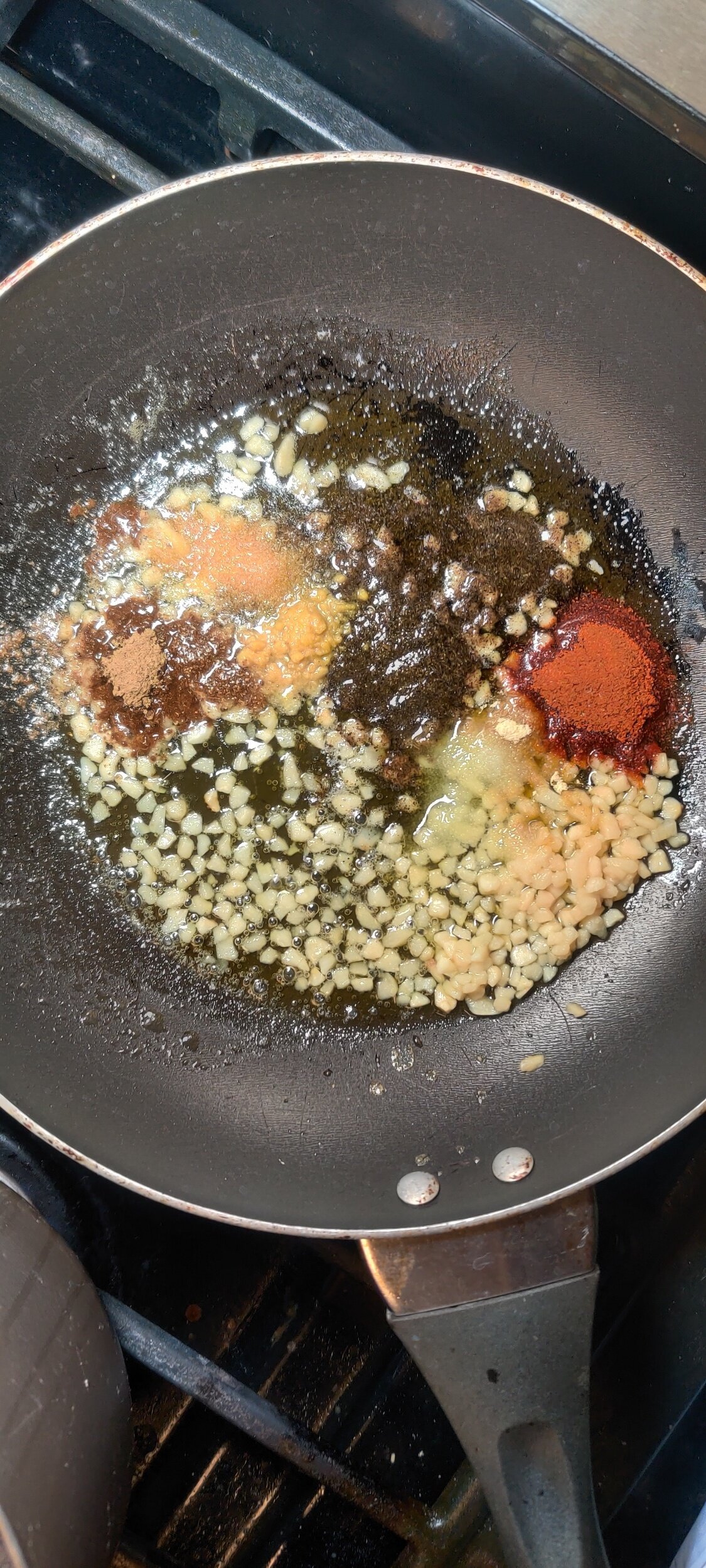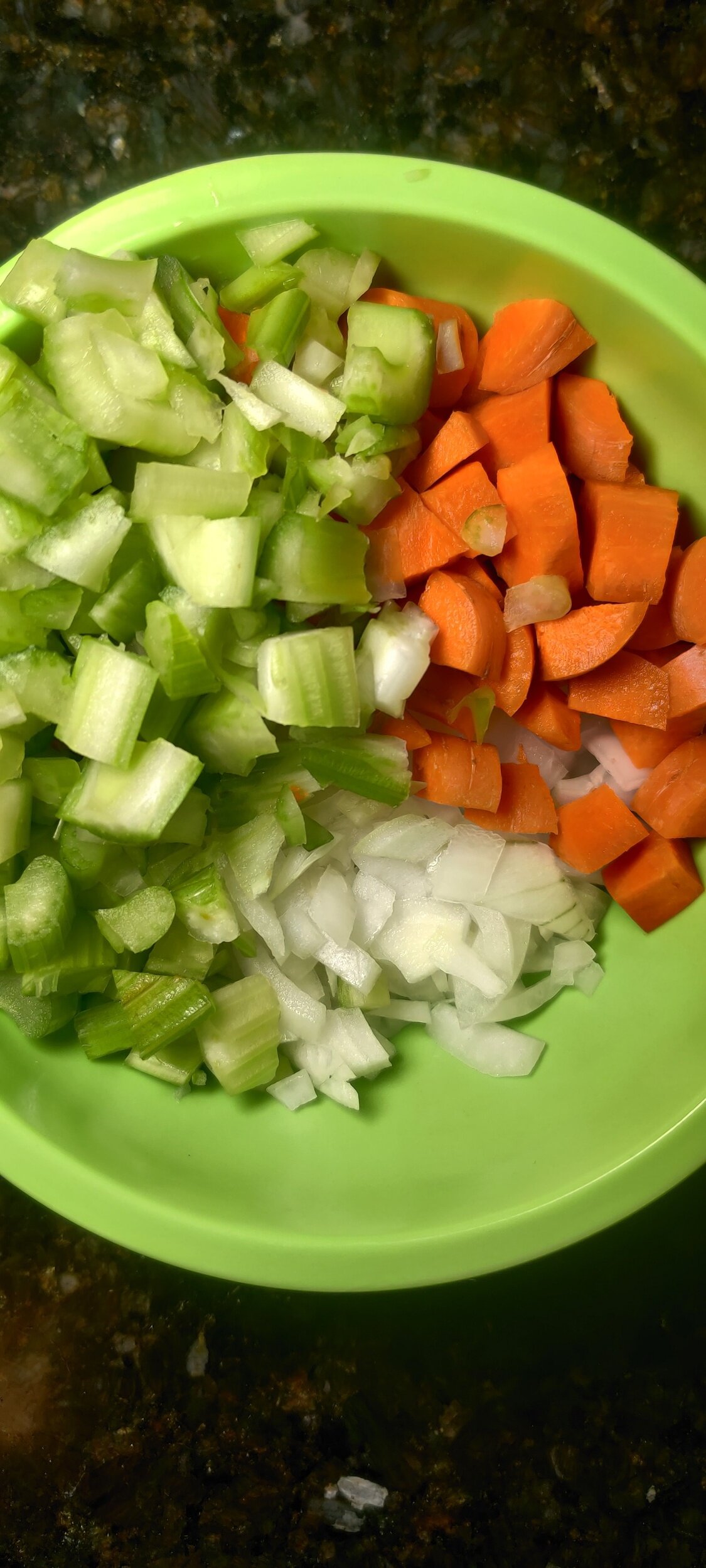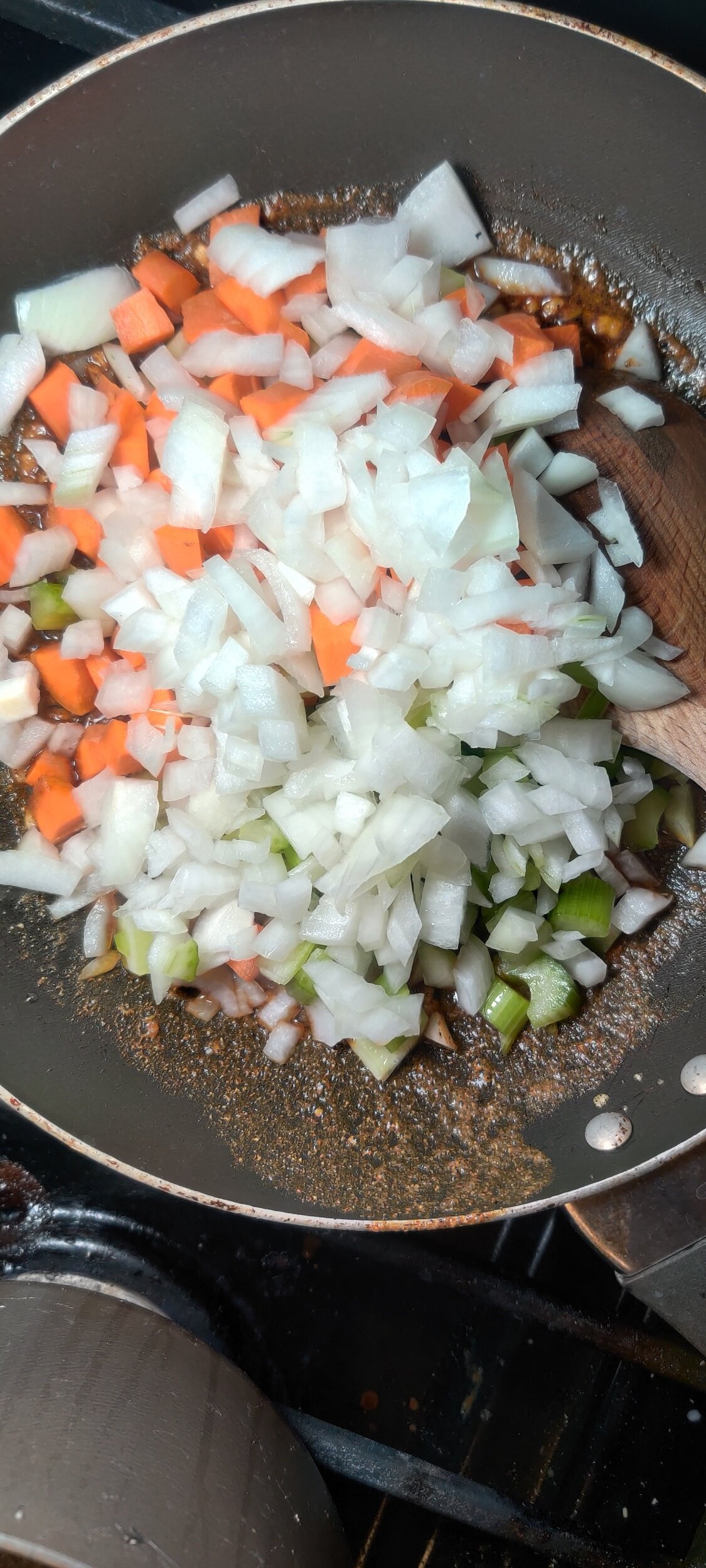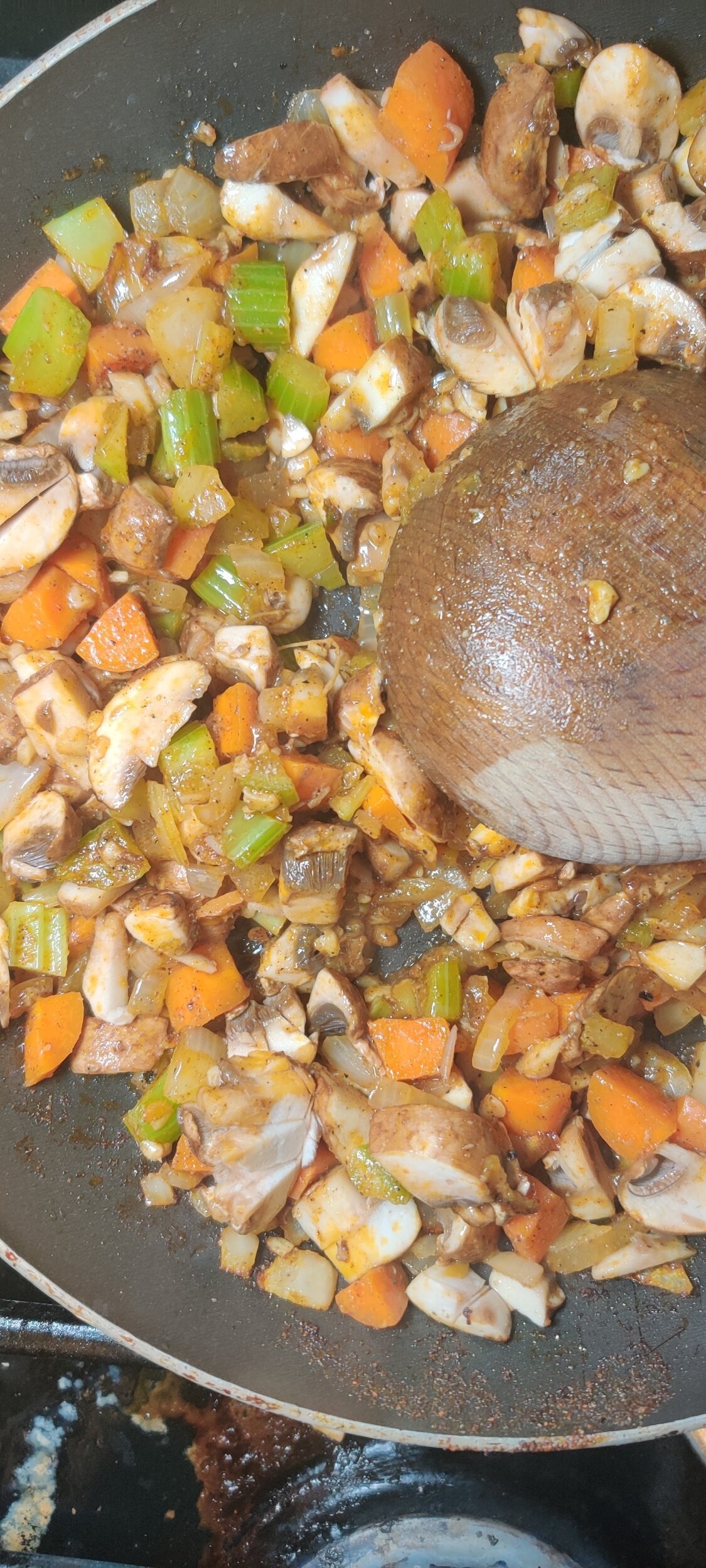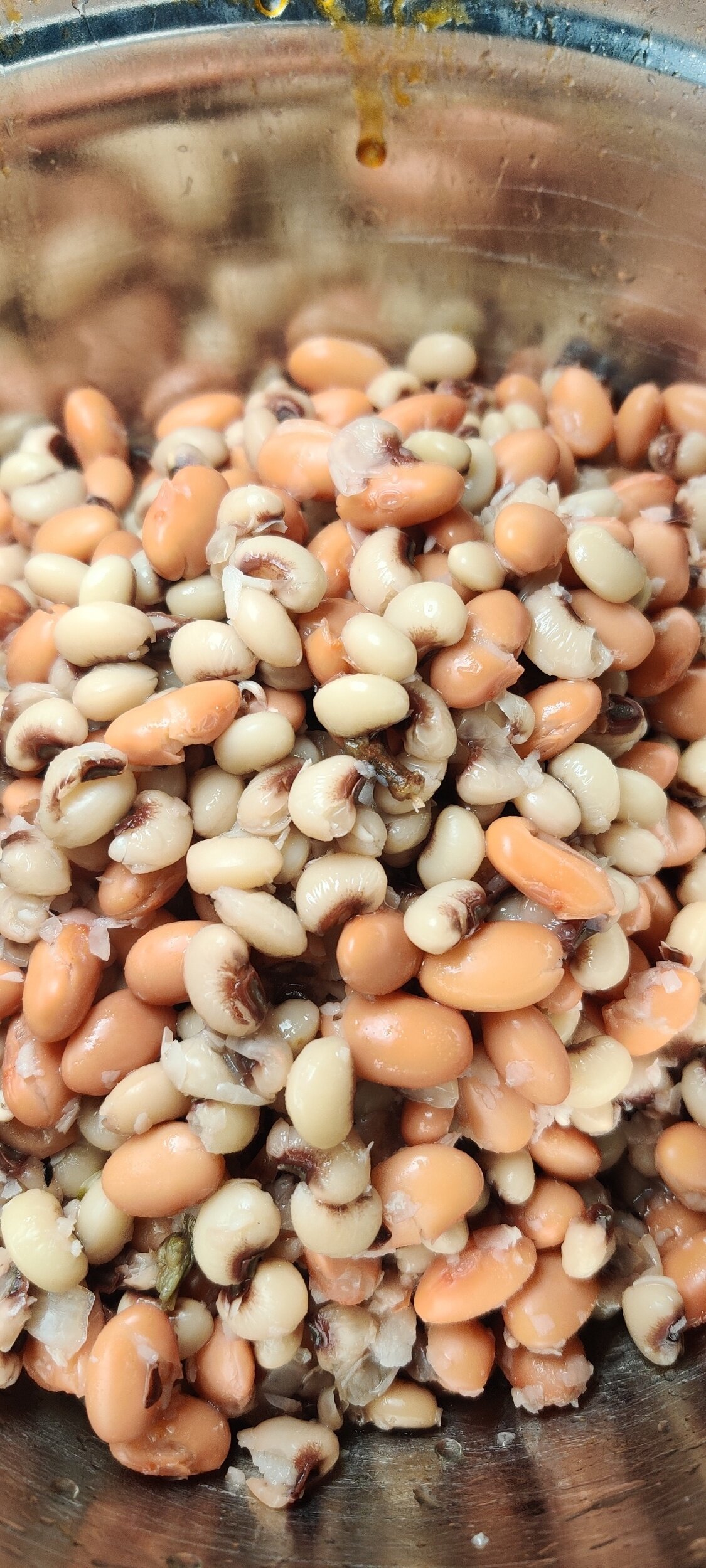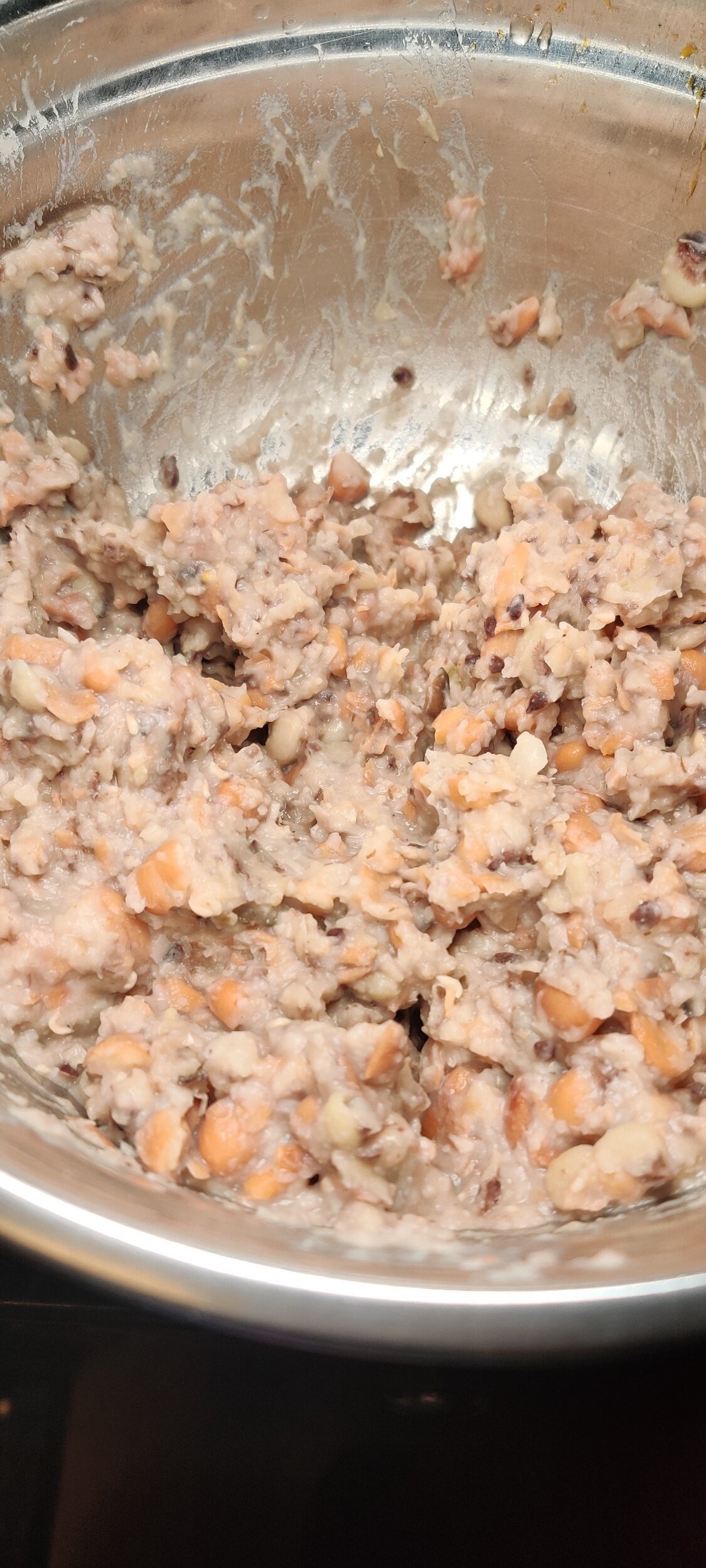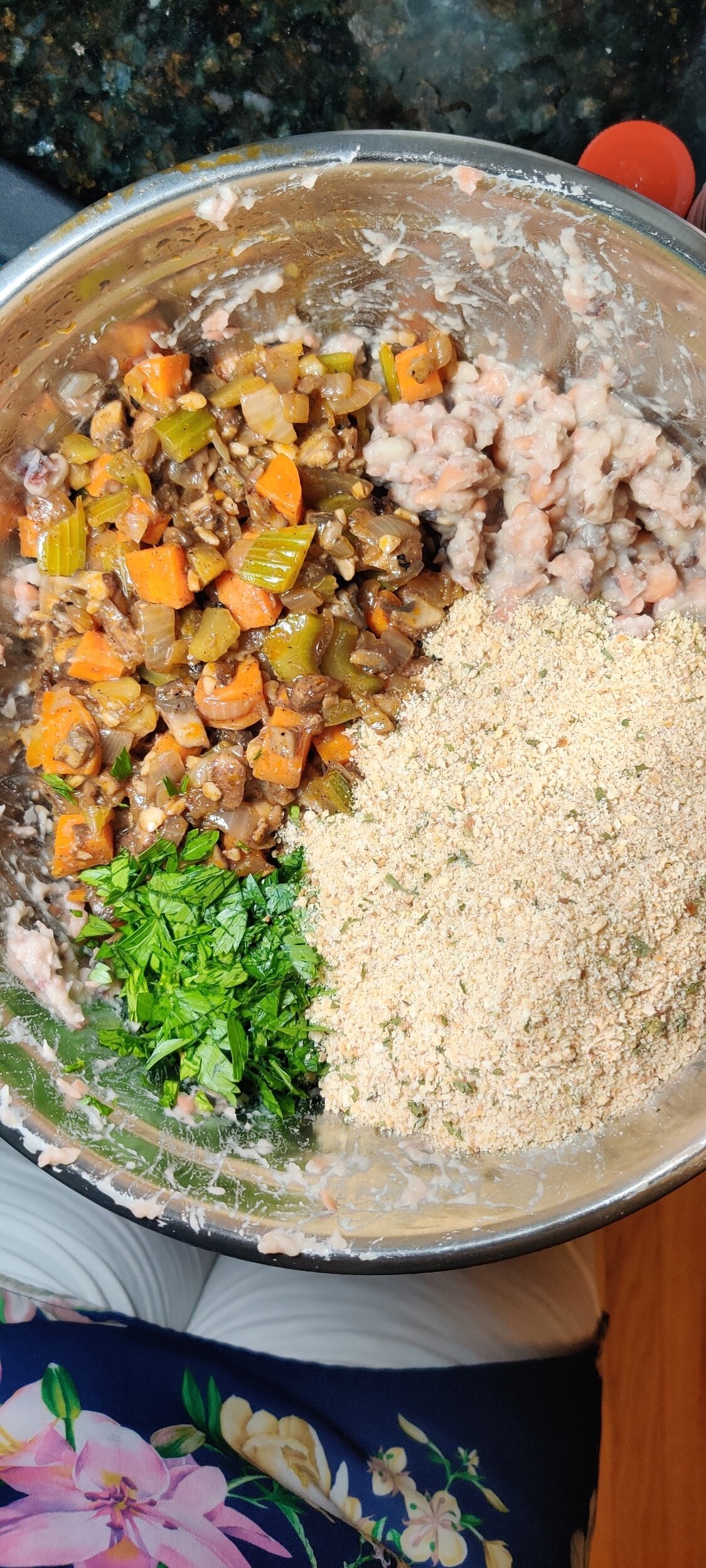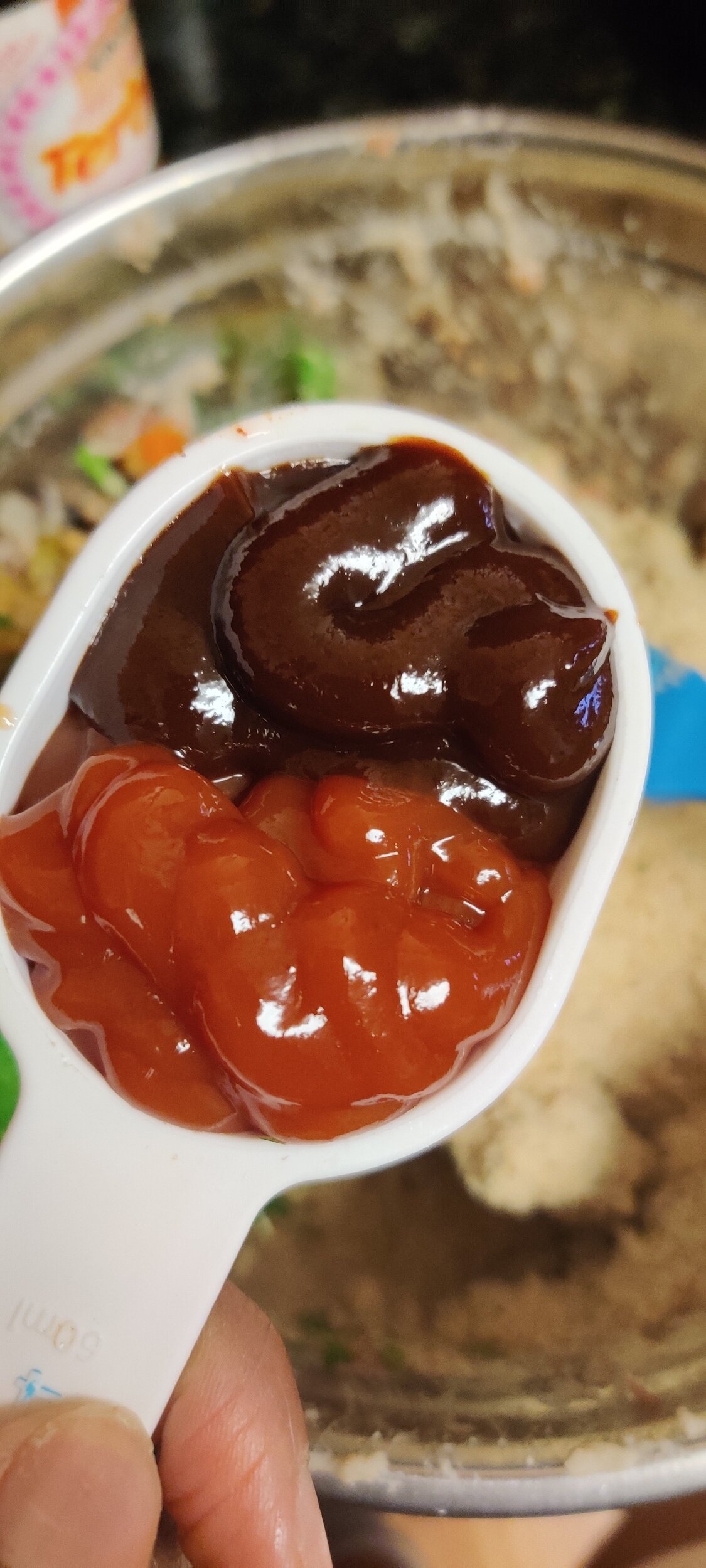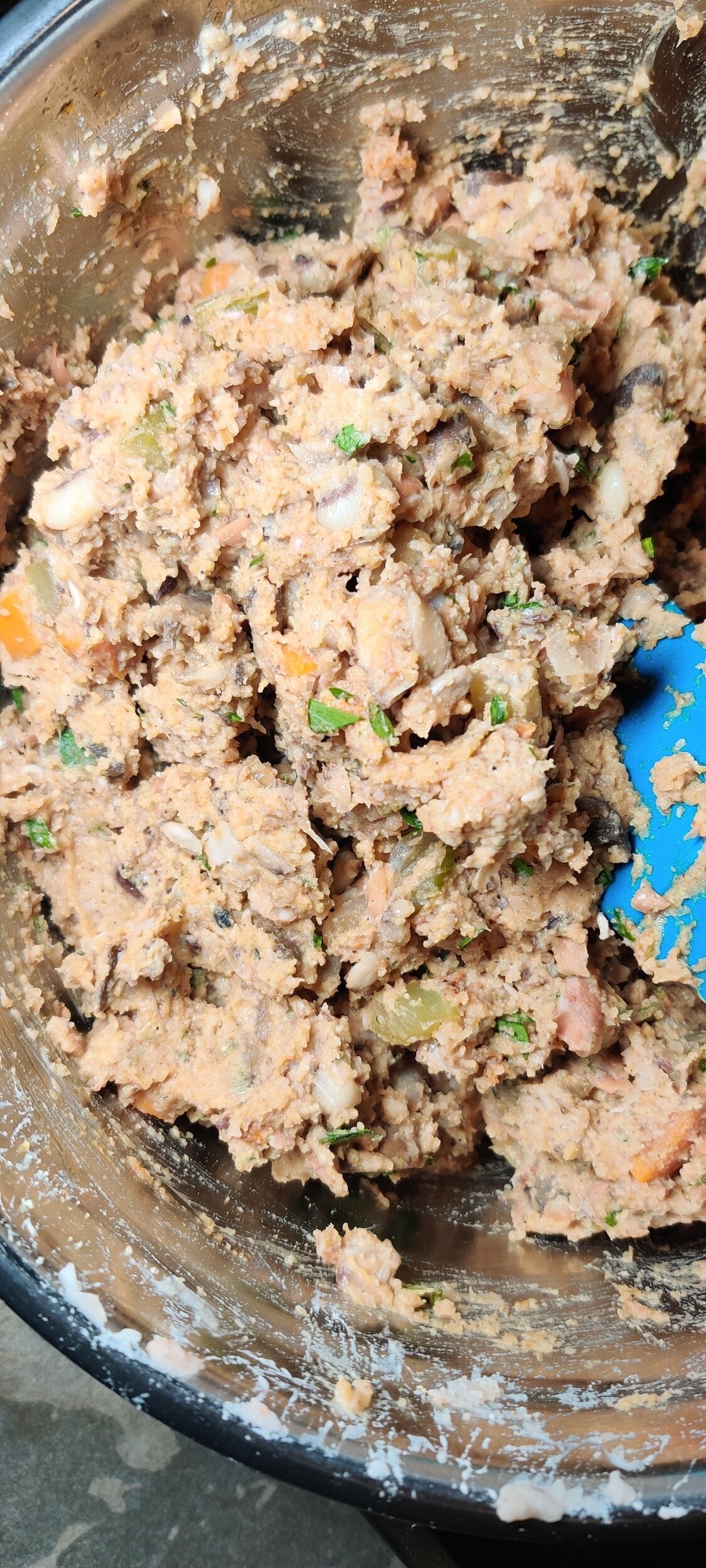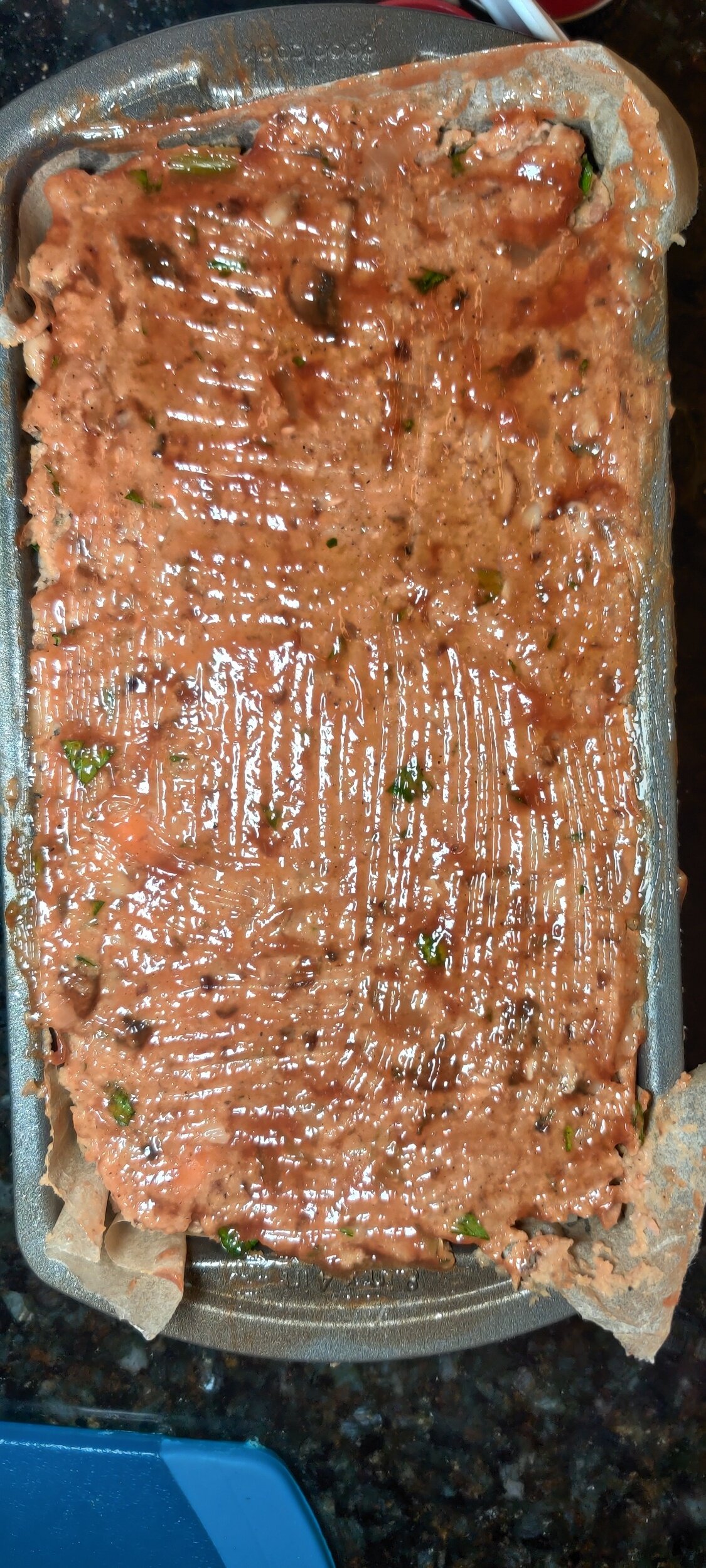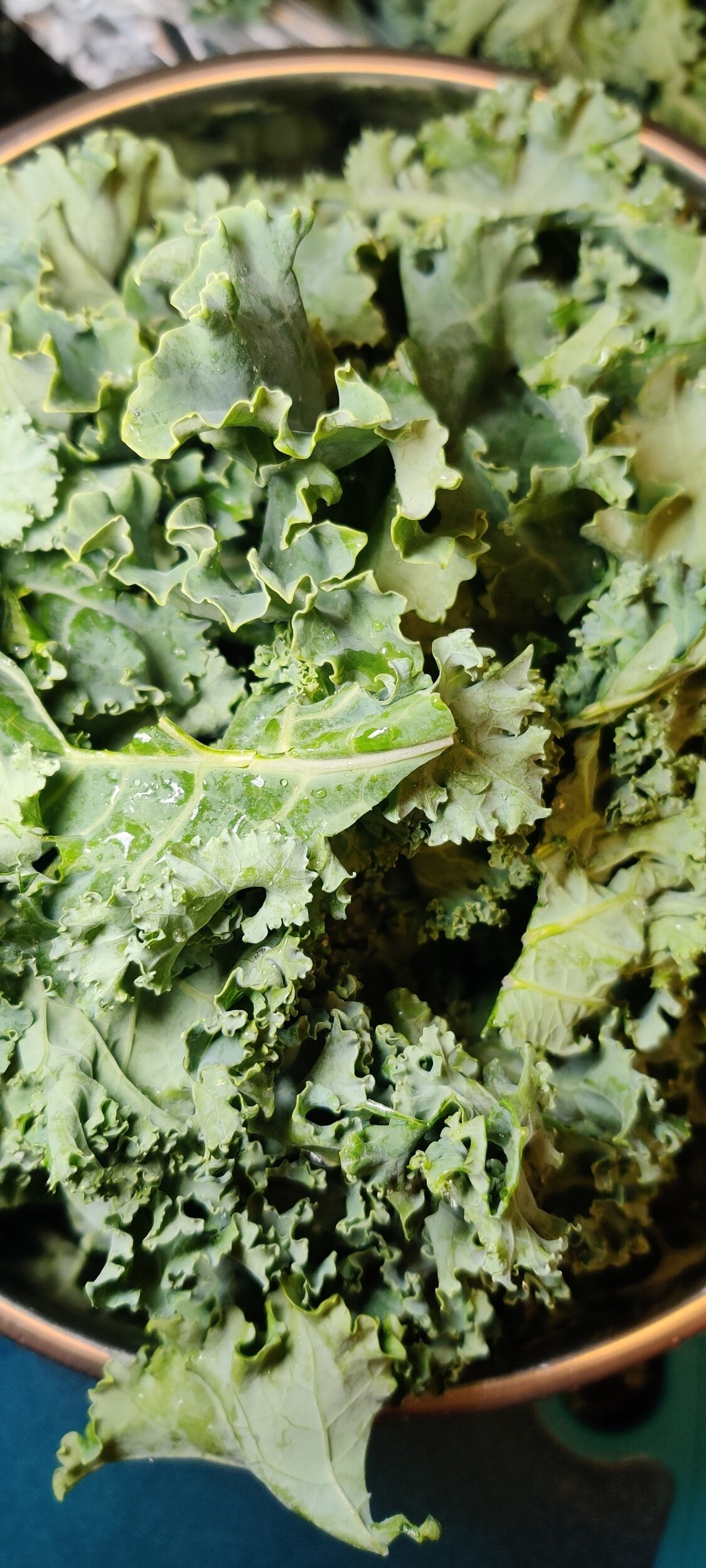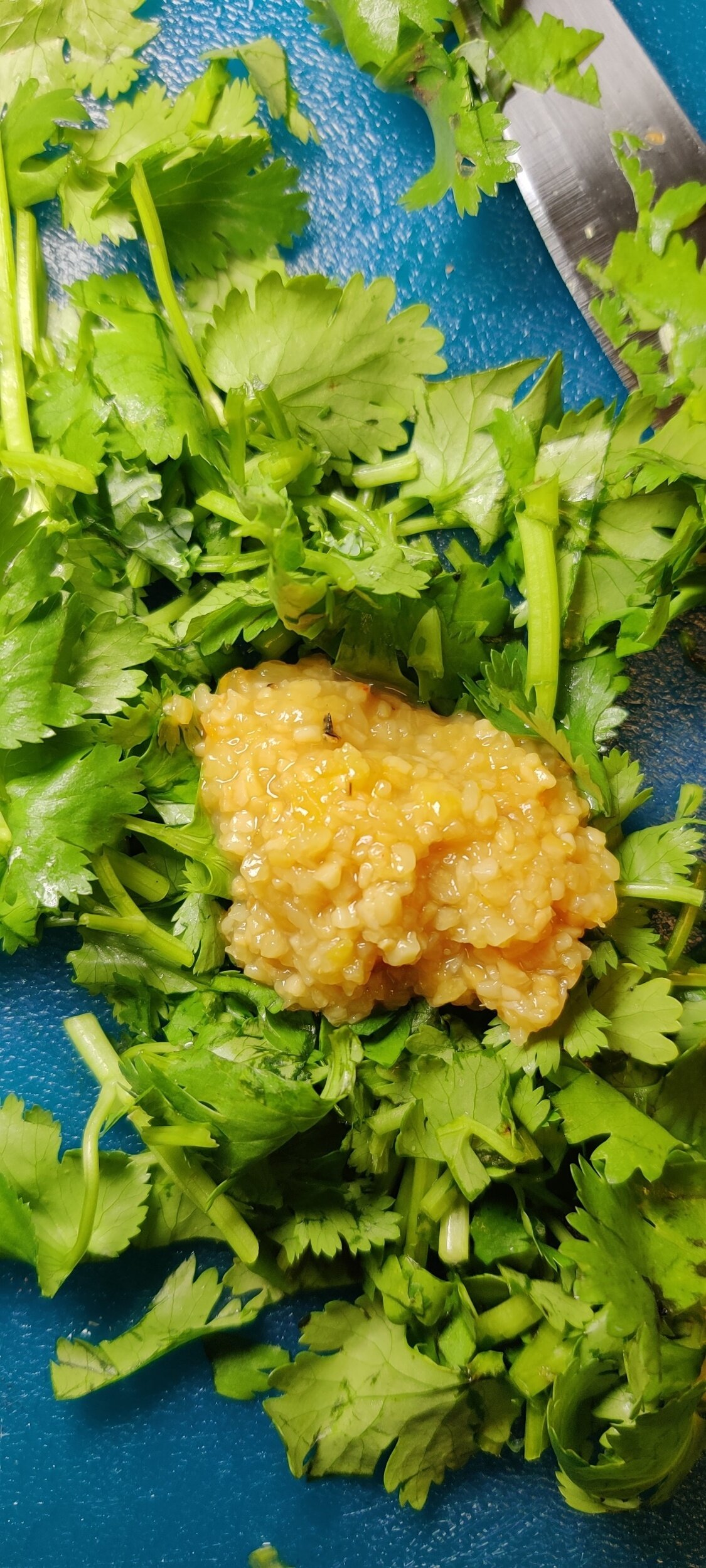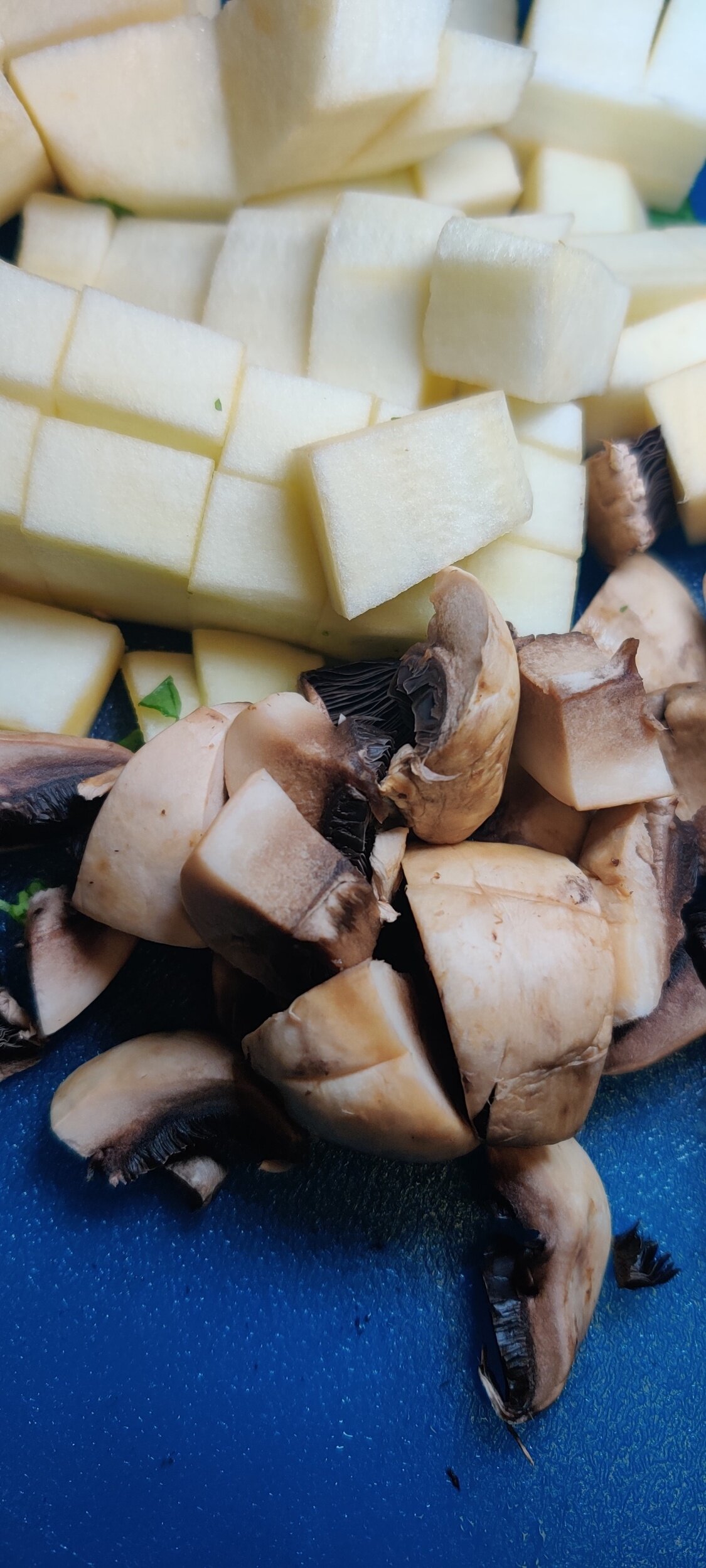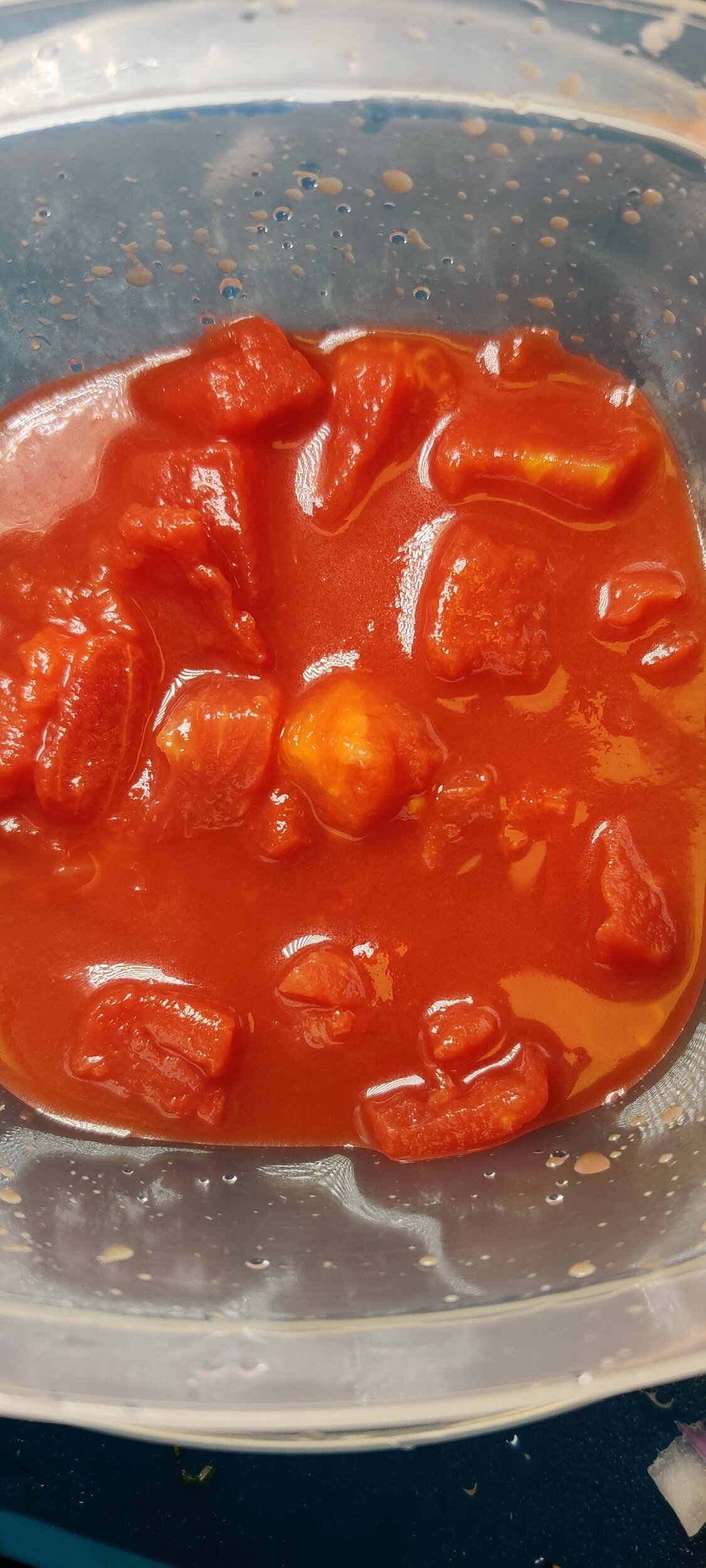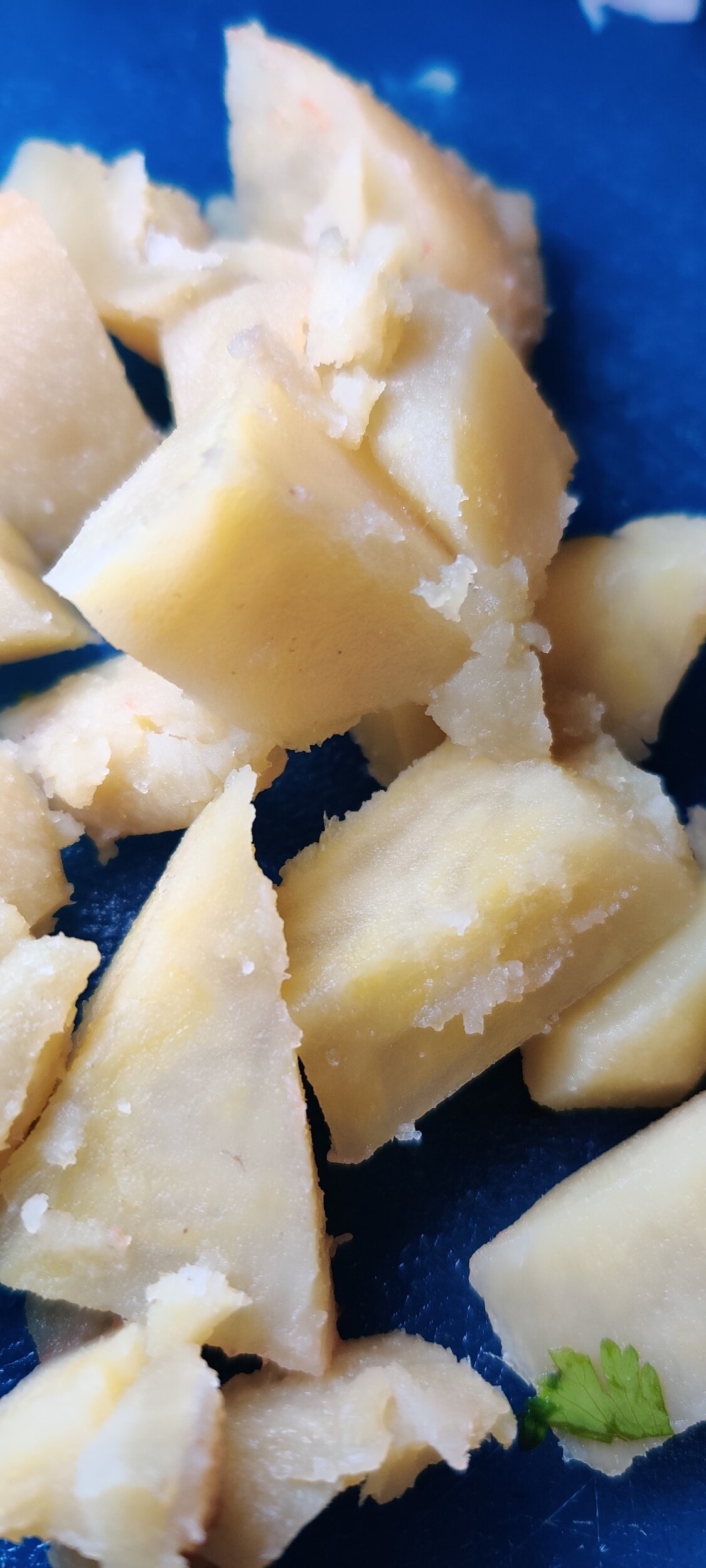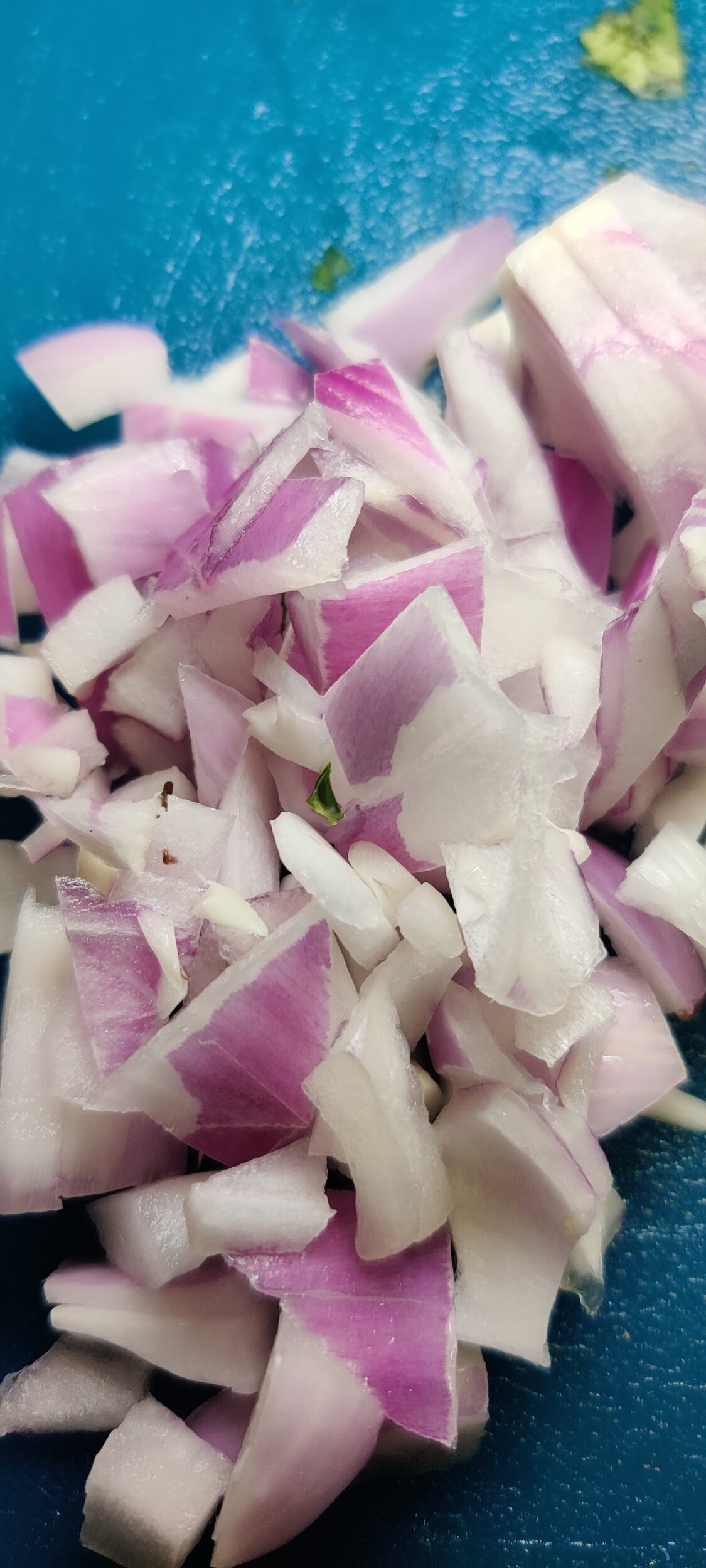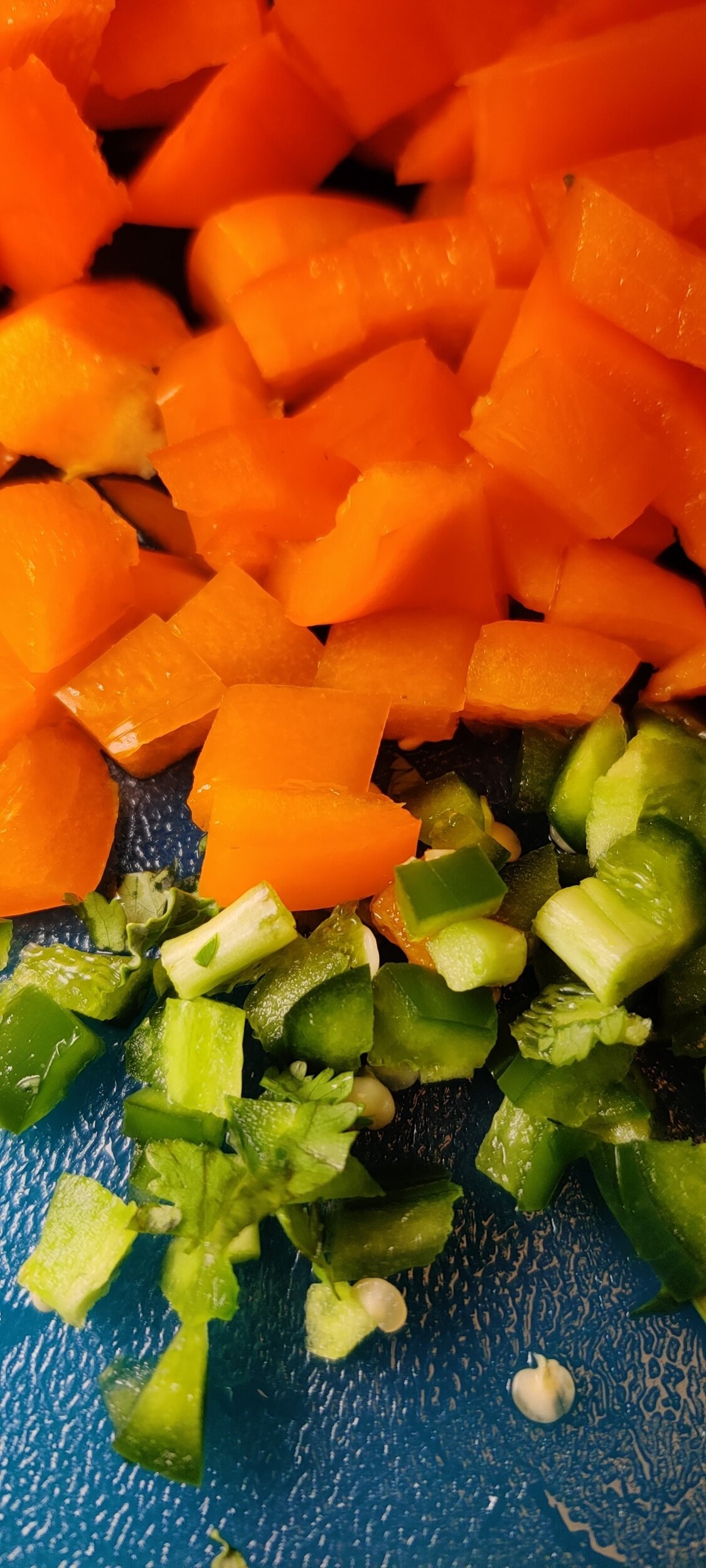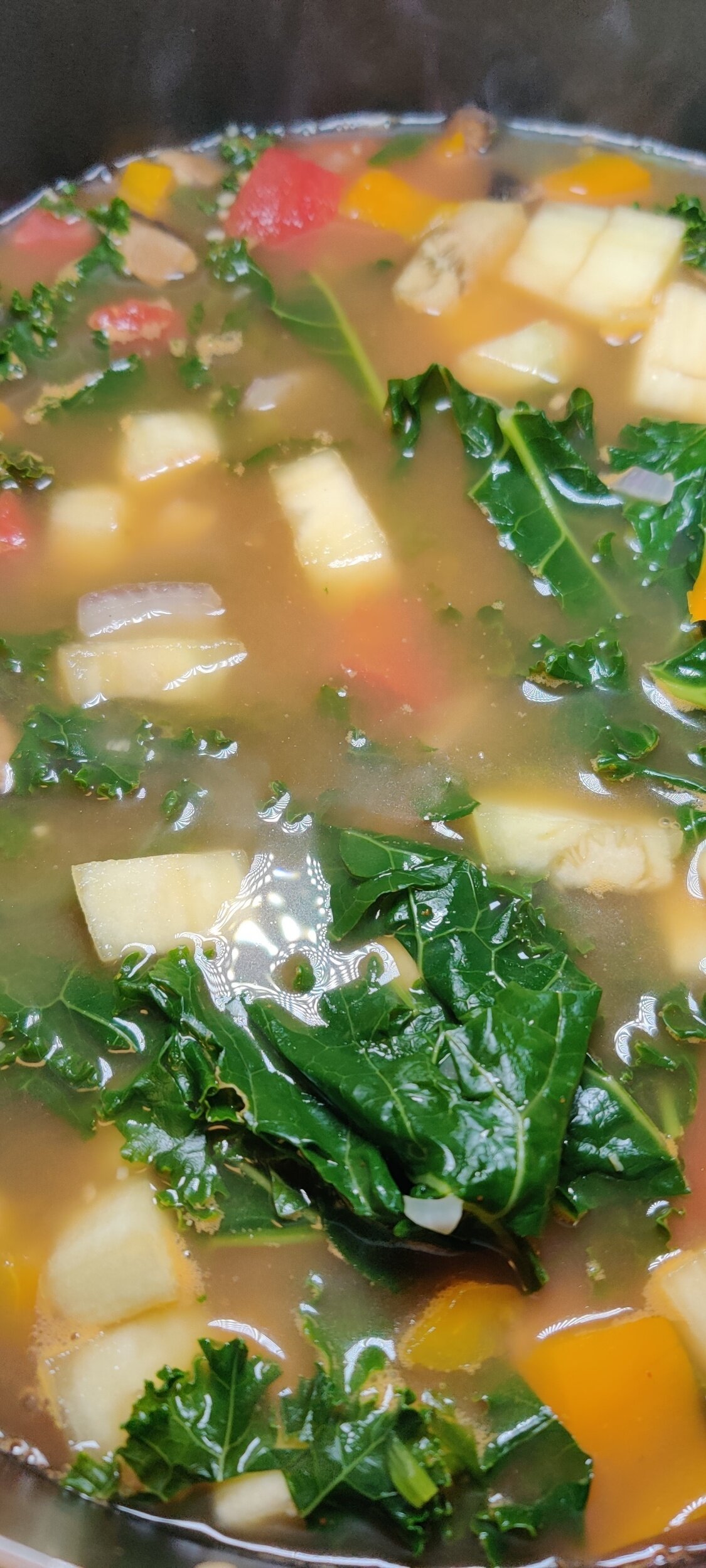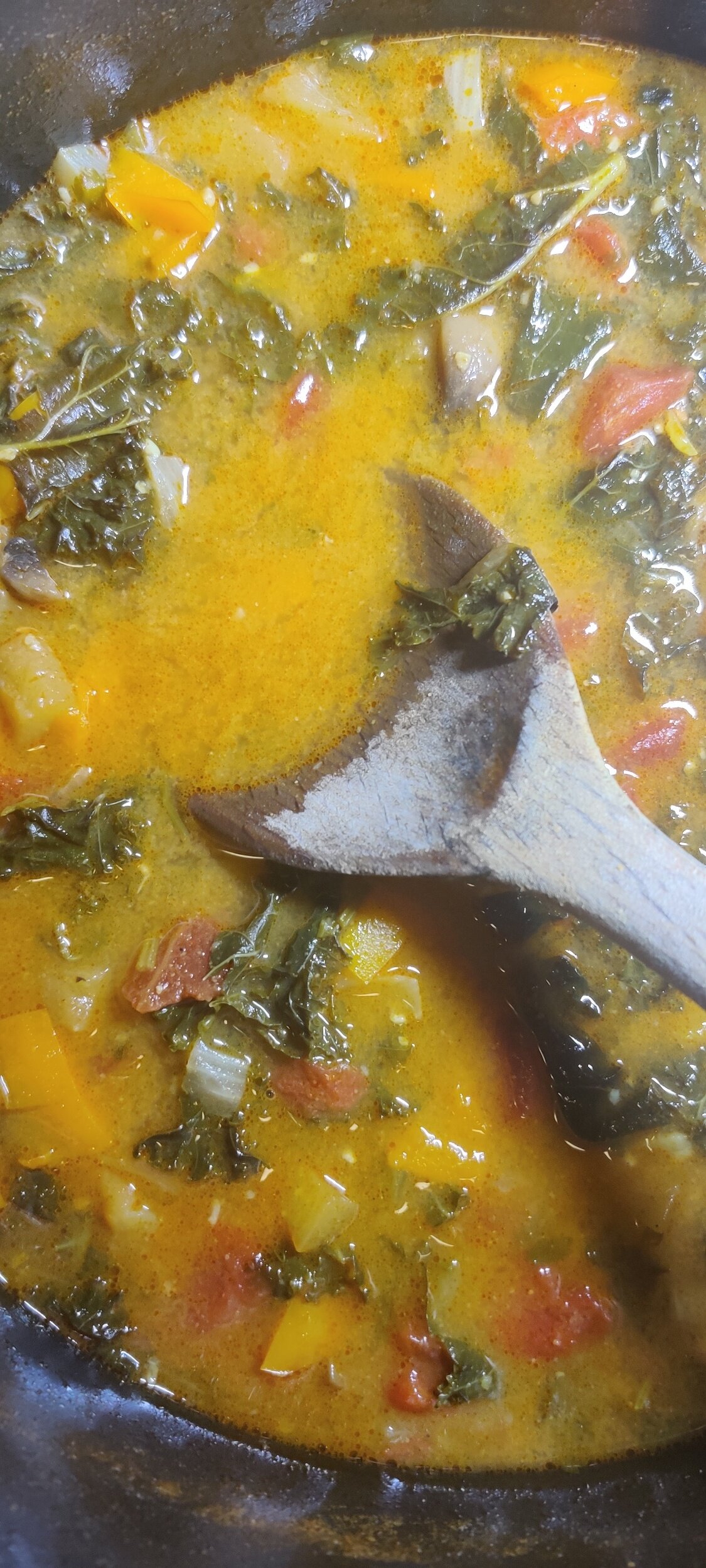Honey-Glazed Tofu with Beet Purée, Roasted Mushrooms, and Eggplant Crisp
This dish started with a trip to the farmer’s market, where the deep purple of late-season eggplants and the vibrant reds of fresh beets caught my eye. A few days later, with some tofu and mushrooms already waiting in the fridge, it all started to come together. This recipe is a great way to make use of what you have and stop you from being so quick to toss older vegetables in the fridge. It took a while for me to use the Japanese eggplant!
The beets were roasted and blended into a smooth, earthy-sweet purée. The eggplant was sliced thin and baked until golden and crisp around the edges. Tofu was pressed and roasted until perfectly crisp, then tossed in a sticky glaze of honey and soy sauce. Mushrooms, slightly forgotten in the back of the fridge, got a second life in the oven with olive oil and ras el hanout—a North African spice blend that adds warmth, complexity, and just a hint of spice I love cooking with.
What came together was a dish full of contrast and character: soft and crisp, sweet and savory, humble and elegant. It’s proof that a few fresh ingredients and some leftovers can become something unexpected and deeply flavorful. Whether served as a starter, a shared small plate, or the centerpiece of a plant-based meal, it delivers on texture, color, and bold flavor, with just the right touch of comfort and creativity.
Tips for Making Beet Purée Smooth and Velvety
1. Roast or Steam the Beets Thoroughly
Roasting (wrapped in foil at 400°F/200°C for 45–60 minutes) brings out their natural sweetness and softens them deeply. Steaming also works well and helps preserve the vivid color. Make sure the beets are fork-tender—completely soft—before blending.
2. Peel for Smooth Texture
After cooking and cooling slightly, remove the skins by rubbing them off with a paper towel or your hands. Leaving the skins on can lead to a gritty texture in the purée.
3. Use a High-Speed Blender
A blender will yield a much smoother purée than a food processor. Add a small amount of liquid to help it blend evenly—this can be water, olive oil, cream, coconut milk, lemon juice, or vinegar, depending on your flavor goals. Blend in stages, starting slow and increasing speed for 1–2 minutes to achieve a silky consistency.
4. Strain for Extra Smoothness (Optional)
For an ultra-smooth finish, pass the purée through a fine-mesh sieve or chinois after blending. This removes any remaining fibrous bits.
5. Add a Fat or Binder for Creaminess
Incorporating a bit of butter, cream, Greek yogurt, or olive oil enhances texture and richness. For a vegan option, use tahini or avocado oil.
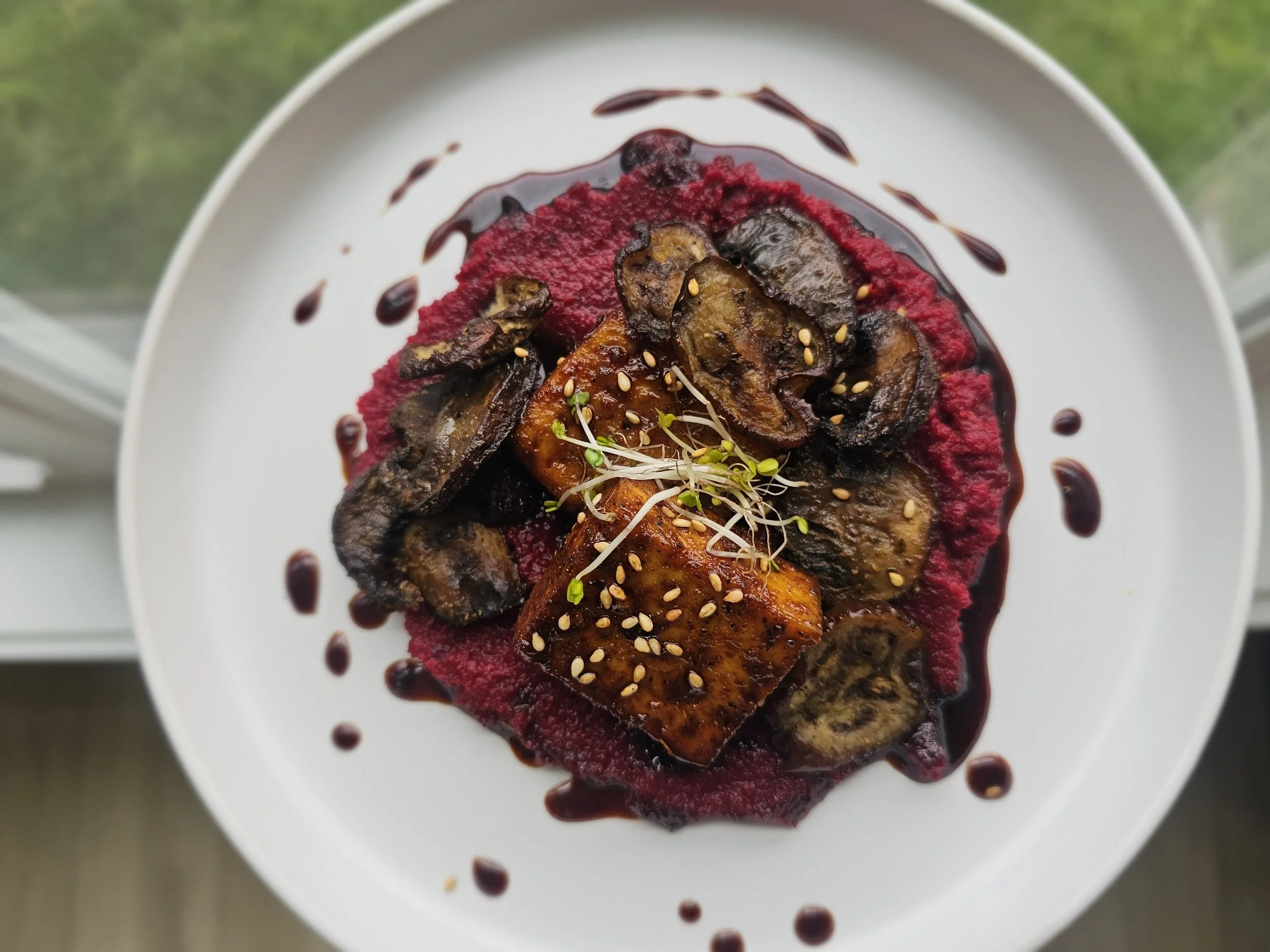
Honey-Glazed Tofu with Beet Purée, Roasted Mushrooms, and Eggplant Crisp
A beautifully plated vegetarian dish that balances bold flavors and contrasting textures: crisp honey-glazed tofu, silky beet purée, roasted mushrooms, and crunchy eggplant slices. Perfect for showcasing seasonal produce in a refined and modern way.
Ingredients
- 14 oz (400 g) firm tofu
- 1 tablespoon soy sauce
- 1 tablespoon teriyaki sauce
- 1 teaspoon garlic powder
- 1 teaspoon onion powder
- 1 tablespoon baking powder
- 1 teaspoon salt
- 1 teaspoon black pepper
- 1 teaspoon paprika
- 1 teaspoon chili flakes
- 1 teaspoon dried oregano
- Sesame seeds, for garnish
- Sprouts or fresh parsley, for garnish
- 4 tablespoons honey
- 4 tablespoons soy sauce
- 4 teaspoons sesame oil
- 4 teaspoons rice vinegar
- 2 large beets, roasted or boiled
- ¼ cup + 3 tablespoons olive oil (total: 7 tablespoons or ~105 ml)
- 2 teaspoons rice vinegar
- 1½ teaspoons salt
- ½ cup broth or water (about 120 ml)
- 8 oz (225 g) wild or brown button mushrooms, sliced
- 1 tablespoon olive oil
- 1 tablespoon dried thyme
- 1 teaspoon garlic powder
- 1 tablespoon rice vinegar
- 1 tablespoon ras el hanout (Moroccan spice blend)
- 1 Japanese eggplant, sliced
- 1 to 2 tablespoons olive oil
- ½ teaspoon salt
- ½ teaspoon black pepper
Instructions
- Start with the beets, since they take the longest. Remove the stems, peel, and dice. In a bowl, toss with olive oil, salt, pepper, and oregano. Wrap tightly in foil and bake at 400°F (200°C) for 45–60 minutes, tossing halfway through, until fork-tender.
- Remove excess moisture from the tofu. Either microwave the block wrapped in paper towels for 2 minutes or gently press and let drain for at least 10 minutes.
- Slice the tofu into 1-inch cubes. In a bowl, toss with soy sauce, teriyaki sauce, garlic powder, onion powder, salt, oregano, paprika, black pepper, and chili flakes. Coat well, then add baking powder to help crisp the surface. Spread the tofu on parchment paper and bake at 400°F for 35–40 minutes, flipping halfway, until golden brown. Be careful not to burn.
- In a bowl, toss mushrooms with olive oil, ras el hanout, oregano, garlic powder, and rice vinegar. Spread on a baking sheet and bake at 400°F for 25 minutes, flipping halfway. Season to taste if needed.
- Trim the top and slice very thinly (a mandoline works great). Discard any discolored sections. Toss slices in olive oil, salt, and pepper. Spread on a baking sheet and bake alongside the mushrooms for 25–30 minutes, flipping halfway, until crisp and slightly golden.
- Once the tofu is ready, combine soy sauce, honey, and sesame oil in a small saucepan over medium heat. Cook for 3–5 minutes, stirring, until thickened enough to coat the back of a spoon. Do not overcook. Toss the tofu in the glaze just before serving. If the sauce thickens while sitting, rehydrate with a splash of soy sauce and rice vinegar.
- Once the roasted beets have cooled slightly, transfer to a blender. Add rice vinegar and begin blending. Slowly drizzle in olive oil and/or broth as you blend until the purée is smooth—this can take up to 10 minutes. Taste and adjust seasoning. If you like a bit of texture (as I do), leave it slightly rustic.
- Spoon the beet purée onto the plate first. Add 2–3 pieces of glazed tofu on top, followed by roasted mushrooms and crispy eggplant slices. Garnish with sesame seeds, fresh sprouts, or parsley. Drizzle with extra glaze if desired.
I am not a certified nutritionist and any nutritional information on dontmissmyplate.com should only be used as a general guideline.
Harissa Cauliflower Steak and Puree with Chimichurri
Cauliflower steak is proof that a humble vegetable can take center stage with the right preparation and bold flavors. Thick-cut slices of cauliflower are roasted or grilled until golden and tender, transforming into a hearty, satisfying dish. What truly sets this version apart is the use of North African spices—think warm cumin, smoky harissa, and toasted nuts like almonds or pistachios. These aromatic, earthy flavors bring depth and complexity, turning a simple cauliflower steak into a magnificent, flavor-packed experience.
Not Your Hospital Cauliflower
I remember the first time I heard of cauliflower steak. It didn’t immediately appeal to me. In fact, I only started paying attention to it when I went vegan for about nine months. Like many people, I associated cauliflower with bland, overcooked hospital food—soggy, flavorless, and uninspired. But I quickly learned how wrong I was.
When prepared the right way, cauliflower can truly shine. It becomes tender and crisp, rich with flavor, and—yes—magnificent. Especially when paired with bold seasonings like cumin, toasted almonds, or North African spice blends like harissa, cauliflower in steak form is elevated into something special. These flavors bring out its natural nuttiness and depth, turning a humble vegetable into the star of the plate.
Tips for Perfect Cauliflower Steaks
1. Choose the Right Cauliflower
Pick a large, firm head of cauliflower with tight, white florets. A larger head gives you more surface area to cut sturdy "steaks" without them falling apart.
2. Cut Carefully
Slice straight through the center to get thick steaks—about ¾ to 1 inch thick. You’ll usually get 2–3 solid steaks from one head. The rest can be roasted as florets.
3. Don't Skimp on Seasoning
Cauliflower loves bold flavors. Use a generous amount of oil and spice rub so the steaks get a nice crust. North African spices like harissa, cumin, coriander**, paprika, and a dash of cinnamon really elevate it.
4. Preheat Your Pan or Oven
Whether roasting or pan-searing, make sure your cooking surface is hot. This helps caramelize the edges and gives a golden-brown crust without overcooking the center.
5. Use a Cast-Iron Skillet (If You Can)
For the best sear, use a cast-iron skillet. It distributes heat evenly and gives the steaks a nice char.
6. Finish with Texture and Acidity
Top with toasted almonds or pistachios for crunch, and a drizzle of lemon juice or tahini sauce to brighten the dish and balance the spices.
7. Don’t Waste the Extra Bits
Any florets or broken pieces left over can be roasted alongside the steaks, tossed into a salad, or blended into soup later.
Why Chimichurri Is the Perfect Match for Roasted Cauliflower
If you're looking to take your roasted cauliflower to the next level, chimichurri is your secret weapon. This vibrant Argentinian sauce — made with fresh parsley, garlic, vinegar, olive oil, and a hint of chili — adds a zesty, herbaceous punch that beautifully complements cauliflower's earthy sweetness.
When the cauliflower comes out of the oven golden and crisp, a generous drizzle of chimichurri instantly livens up each bite. The acidity from the vinegar balances the caramelized edges, while the herbs bring a fresh, garden-bright contrast to the warmth of the roasted veggies.chili flakes.
For more cauliflower recipes, check out more on the website including Cauliflower Tumeric Chickpea Soup, Cauliflower Piccata, Fried Cauliflower 'Chicken’ Sandwich, Cauliflower Kedgeree with Farro and Raisins, Creamy Roasted Broccoli and Cauliflower Bake, and Mushroom, Broccoli and Cauliflower Stirfry.

Harissa Cauliflower Steak and Puree with Chimichurri
Elevate your veggie game with cauliflower steak—roasted or grilled until golden, then infused with bold North African spices like cumin and harissa. A hearty, flavor-packed plant-based dish that proves cauliflower is anything but bland.
Ingredients
- 1 tablespoon harissa spice
- 2 tablespoons olive oil
- 1 teaspoon garlic powder
- 1 teaspoon tomato sauce
- ½ teaspoon salt
- ½ teaspoon black pepper
- 2 cups steamed cauliflower
- 2 tablespoons olive oil
- 1 garlic clove (optional)
- Pinch of nutmeg
- Splash of rice wine vinegar
- ¼ cup water
- ½ teaspoon salt
- ¼ teaspoon black pepper (optional)
- 1 cup Italian parsley
- 3 garlic cloves
- ½ cup olive oil
- 2 tablespoon red wine vinegar
- 1 teaspoon chilli flakes
- 1 tablespoon sesame oil
- 2 tablespoons slivered almonds
- 1 tablespoon coriander seeds
- 1 tablespoon caraway seeds
- 1 tablespoon ghee
- 1 tablespoon sesame oil
- 2 tablespoons olive oil
- 2 tablespoons butter
- Splash of lemon juice
- Fresh herbs and butter (optional, for finishing)
- Water or broth (for steaming)
Instructions
- Slice thick a steak or two from the center of the cauliflower head. Set aside remaining florets for the purée.
- Steam or blanch the extra florets for 8–10 minutes (test with fork). Drain and cool slightly.
- While the cauliflower cools, mix the harissa spice, olive oil, garlic powder, tomato sauce, salt, and pepper until it forms a thick paste, set aside.
- Take the cooled cauliflower, blend in a food processor with olive oil, garlic (if using), vinegar, water, salt, pepper, and nutmeg. Blend until smooth and creamy and adjust seasoning to taste.
- In a dry pan, lightly toast the almonds, coriander seeds, and caraway seeds in sesame oil over medium heat until fragrant (about 5–6 minutes).
- In a pan with a bit of butter or ghee, bloom the harissa paste for 5 minutes on low heat. Let it cool slightly, then rub generously over the cauliflower steaks.
- In a hot pan, add a mix of ghee, sesame oil, and olive oil. Sear the cauliflower steaks for 5–7 minutes on each side until golden and crispy.
- After searing both sides, pour a splash of water or broth around the steaks, cover with a lid, and steam for 2–3 minutes until tender.
- Plate the steaks over the cauliflower purée, drizzle with chimichurri, top with the toasted aromatics, a squeeze of lemon, and fresh herbs or butter if desired.
I am not a certified nutritionist and any nutritional information on dontmissmyplate.com should only be used as a general guideline.
Coconut Eggplant and Lentil Masala Curry
A cozy, plant-based curry with creamy lentils, tender eggplant, and fragrant coconut—served with spiced rice.
Hearty, fragrant, and deeply satisfying, this Eggplant and Lentil Coconut Curry is comfort in a bowl. Slow-cooked eggplant melts into a spiced lentil base, infused with ginger, garlic, and creamy coconut milk for a rich, velvety finish. Served with fluffy aromatic rice—steamed with warming spices like cardamom, cinnamon, or bay leaf—it’s a nourishing, plant-based dish that’s as cozy as it is flavorful. Whether you're looking for a weeknight dinner or a meatless showstopper for guests, this curry brings warmth and depth to any table.
Cooking eggplant is all about unlocking its rich, silky texture and ability to soak up flavor. When properly cooked, eggplant transforms from firm and spongy to tender and luscious, making it perfect for curries, stews, and roasts. Salting it beforehand can help reduce any bitterness and improve its ability to brown, while slow cooking allows it to absorb spices and sauces deeply. Whether roasted, sautéed, or simmered, eggplant acts like a sponge for bold aromatics—especially in dishes like coconut curries where it adds both body and depth.
General Tips for Cooking Eggplant
Salt First (Optional but Helpful):
Lightly salt sliced or cubed eggplant and let it sit for 20–30 minutes. This draws out excess moisture and any bitterness, helping it cook more evenly and brown better.Don’t Undercook It:
Eggplant should be fully tender when done—undercooked eggplant can be spongy or rubbery. Cook it until it’s soft and creamy inside.Use Enough Oil (or Bake/Roast):
Eggplant absorbs oil quickly, so don’t be afraid to use a bit more when pan-frying or roasting. Alternatively, brush with oil and bake at a high temperature for a healthier option.Pair with Bold Flavors:
Eggplant soaks up spices and sauces beautifully. It works especially well with garlic, ginger, curry spices, tomatoes, and coconut milk.Roast or Grill for Extra Depth:
Roasting or grilling brings out eggplant’s natural sweetness and gives it a smoky, rich flavor—perfect for dips, salads, or hearty stews.
A rich, spiced plant-based curry inspired by East African flavors, with tender eggplant, hearty lentils, and creamy coconut milk.
Combining lentils and eggplant creates a beautiful balance of texture and depth—soft, creamy eggplant melds with hearty lentils to form a rich, comforting base that’s both nourishing and satisfying. This pairing is common in many African and Indian-influenced dishes, especially in East African coastal cooking, where flavors are bold, layered, and full of warmth.
In East African cuisine, particularly along the Swahili coast, the use of spices like cumin, coriander, turmeric, and cloves is deeply rooted in centuries of trade with India and the Arabian Peninsula. Coconut milk is another hallmark of the region’s cooking, adding creaminess and a subtle sweetness that tempers the heat of spices while enriching the overall dish. When combined, lentils, eggplant, aromatic spices, and coconut create a dish that’s deeply flavorful, comforting, and rooted in tradition—perfect for sharing and savoring.

Coconut Eggplant and Lentil Masala Curry
Discover the rich, comforting flavors of lentils and eggplant simmered with creamy coconut milk—a staple in East African coastal cuisine. This nourishing plant-based dish blends hearty lentils with silky eggplant and bold, layered spices for a satisfying vegan meal inspired by African and Indian culinary traditions. Perfect for fans of coconut curry and wholesome comfort food.
Ingredients
- 1 large eggplant, chopped
- 1 small onion, chopped
- 1 teaspoon ground ginger
- 1/2 teaspoon paprika
- 2 teaspoons masala curry powder
- 1 teaspoon oregano
- 1 teaspoon salt (plus 1 teaspoon extra to remove water from eggplant)
- 1 teaspoon chilli flakes
- 1 can coconut, full cream
- 1/2 cup green lentils
- 2 cups chicken broth
- 1 teaspoon black pepper
- 1/4 teaspoon cumin
- 1/2 teaspoon Royco Usavi mix, chicken (optional)
- 2 bay leaves
- 1/2 cup fire-roasted tomatoes, diced
- 3 garlic cloves
- 2 tablespoons ghee
- 2 tablespoons olive oil
- 2 tablespoons sesame seed oil
- 1 tablespoon soy sauce
- 1 tablespoon red wine vinegar
- 1 teaspoon fish sauce
- 1 teaspoon rice vinegar
- 2 tablespoons + 1/2 cup fresh cilantro, roughly chopped (optional)
- 1/3 cup silvered almonds (optional)
Instructions
- Slice the eggplant in half and sprinkle with 1 teaspoon salt to draw out excess moisture. Let sit, then pat dry when ready to prepare.
- Peel and mince the garlic cloves. Roughly chop your washed parsley.
- In a separate bowl, combine your spices: ginger, masala curry powder, paprika, oregano, salt, pepper, chili flakes, and any other spices.
- Chop the eggplant into bite-sized pieces and sauté with the sesame oil until softened and golden brown. Remove from the pan and set aside.
- In the same pot, melt ghee over medium heat. Sauté the onion and garlic for 2–3 minutes, or until the onions are translucent. Add the spice mix and stir to bloom the flavors for about 1 minute (add a bit more ghee or the olive oil if needed.
- Deglaze the pot with soy sauce. Add the tomato, red wine vinegar, and lentils. Stir and cook for 1–2 minutes, then pour in the broth to cover and bring to a boil. Reduce heat and simmer for about 15 minutes, or until the lentils are softened.
- Add the eggplant back to the pot, followed by the coconut milk, bay leaves and 2 tablespoons parsley. Simmer for another 10 minutes.
- Finish with a splash of fish sauce and rice vinegar. Season to taste. Remove from heat and let sit for 2–3 minutes.
- Serve topped with extra parsley, sliced almonds, and a scoop of aromatic rice.
Nutrition Facts
Calories
378Fat (grams)
24.9 gCarbs (grams)
27.5 gFiber (grams)
12.6 gSugar (grams)
8.8 gProtein (grams)
10.2 gI am not a certified nutritionist and any nutritional information on dontmissmyplate.com should only be used as a general guideline.
Lentil and Mushroom Salisbury 'Steak’
I love the combination of lentils and mushrooms. It made sense to put them together for this recipe. Familiar to many but obscure to some, a Salisbury steak is typically a ground beef burger patty served with gravy. Modern versions call for the addition of sauteed mushrooms, and the dish is generally paired with green beans or peas and mashed potato. I steamed some peas and made a quick sweet potato mash. http://npengage.com/nonprofit-fundraising/design-fundraising-appeal-that-raises-more-this-december/
I made sure the lentils and mushrooms were well-flavoured for the patty base. You could get pre-cooked vegetables and beans, which saves you time if you don’t meal prep, but it gives you more control. For a homemade mix, get dried lentils, soak them overnight, then cook in broth and store until it’s time to make the patties. As for the button mushrooms, you can roughly chop and saute in advance, then mix with the cooked lentils. I kept mine as larger chunks to give the patties textures.
For the mushrooms in the gravy, I used shiitake. They are juicy, packed with flavour and enhance whatever you add them to, serving as the perfect bite and umami. You get the creamy, ‘meaty’ taste while enjoying the lentil patties with even more mushroom.
Ingredients
Patties/’steak’:
1 1/2 cups cooked lentils
1/2 cup cooked button mushroom, roughly chopped
1 teaspoon Worcester sauce
1 large garlic clove, minced
1/2 teaspoon salt
1 teaspoon black pepper
1/2 teaspoon Fenugreek powder
1/2 teaspoon coriander
1/2 teaspoon cumin
2 vegetable bouillon cubes, crushed
2 tablespoons Italian seasoning
1/4 cup Panko breadcrumbs
1/4 cup regular breadcrumbs
1 egg
1/2 yellow onion, grated
2 tablespoons tomato sauce/ketchup
2 teaspoons Dijon mustard
Mushroom gravy:
1/2 cup Shiitake mushrooms
1/2 teaspoon salt
1 teaspoon cracked pepper
1-2 cup(s) vegetable broth
Olive oil
2 tablespoons butter
1/2 teaspoon lemon juice
2 tablespoons flour
1 tablespoon mustard
2 teaspoons Worcester sauce
1/2 yellow onion. diced
1 teaspoon minced serrano pepper
1 large garlic clove, minced
Instructions
First, make your steaks! In a large bowl, add the onion, garlic, and breadcrumbs, mix with your hands and set aside for 5-10 minutes.
Add cumin, coriander, fenugreek powder, Italian seasoning, salt, pepper, bouillon cubes, lentil and mushroom mix, mustard, tomato sauce, and egg. Give it another good mix until the ingredients are evenly distributed, then shape your patties to the desired size and thickness - don't make them too thick and make sure they are the same size and cook evenly. Chill in the fridge for 10 minutes.
Fry the lentil mushroom steaks on medium-high heat in some olive oil, 4-5 minutes each side or until the surface begins to brown and get crispy. Remove from the nonstick pan set aside.
Time for the gravy. Using the same large pan or a large pot, saute the onion, chilli pepper, and garlic with olive oil for about 3 minutes, until fragrant and softened. Add the butter followed by the shiitake mushrooms. Sweat out for another 6-8 minutes. Add the Worchester sauce, mustard, and broth, and stir.
Gradually add the flour in parts, mixing each time to thicken the gravy. Add the patties back and nestle in the gravy, scoping over each patty.
Serve hot with sweet mashed potatoes, butter and steamed peas.
Cauliflower Piccata
Is cauliflower underrated? Yes, and I think part of the reason is its association with broccoli, which many people don't like-- probably because they haven't had it cooked right! Strictly boiled is a terrible idea; generally, I recommend it roasted with parmesan, garlic, salt, and black pepper.
I'm sure you've seen cauliflower served in a variety of ways on restaurant menus. I'm talking cauliflower steak, rice, or soup to name a few.
This recipe, of course, treats the vegetable like a piece of butterflied, flattened chicken breast (or veal, actually) to make the classic Italian piccata. The dish combines capers and lemon juice with heavy cream (I used coconut to make it vegan), white wine, fresh parsley, garlic, and butter which brings everything together.
You can eat it as is Secondo style or with some hot pasta!
Ingredients
1 large cauliflower head (you will likely have a some individual florets left over)
2 tablespoons capers
1/4 - 1/3 cup olive oil
1 tablespoon butter
1/2 teaspoon salt
1 teaspoon black pepper
2 teaspoons garlic powder
1/2 cup flour (more or less depending on what you need to drench the cauliflower)
1 tablespoon steak seasoning
1/3 cup white wine
2-3 tablespoons lemon juice + slices to garnish
1-1 1/2 cups vegetable broth (depending on how saucy you want the dish)
2 teaspoons garlic, minced
Cooking spray
2-3 tablespoons fresh parsley, chopped
5 ounces coconut cream
Instructions
Remove the leaves and stem from the cauliflower head and cut lengthwise into 1/2-1 inch slices - you want them thick enough to not break down while cooking, but not too thick. 1 large head will give you 3-4 slices; you can keep the extra florets for another recipe. Make sure the cauliflower is dry so that it does not become soggy!
Season the cauliflower with 1 teaspoon garlic powder, salt, and black pepper.
Season the flour with the steak seasoning and 1 teaspoon garlic, mix well. Drench the cauliflower slices one by one, set aside.
Pour the olive oil into the nonstick pan until the entire surface is covered (you can adjust accordingly) and turn the heat to medium-high.
Add the cauliflower slices to the pan and cook for 2-3 minutes, cooking each side until golden. Remove from the pan.
Add the butter to the remaining oil and melt, and deglaze with the white wine, cook for about 1 minute. Add the garlic and capers, cook for about 2 minutes.
Follow this with the lemon and broth, then simmer for about 5 minutes (you can reduce the heat if necessary).
Mix in the coconut cream and stir; the mixture should start to thicken—if too watery, add 1/2 teaspoon of flour. Add the cauliflower back to the pan and cook on both sides for 1 minute each (you don’t want to overcook though!), and make sure you flip over the cauliflower slices gently to prevent them from breaking down.
Sprinkle with fresh parsley and gently shake the pan to distribute the sauce and herbs.
Remove from heat and serve hot with extra capers and lemon slices - I used limes because that's what I had! Serves 2.
Maque Choux (Creamy Corn and Green Pepper)
If you're a sucker for creamed corn, you'll like this recipe. It's a great side or even a standalone meal. The dish comes out of Louisiana, with history and origins rooted in Native American food and culture and French influence.
If you are looking for anything corn related, I have several other recipes that can speak to your soul, so check them out!
Maque Choux is a mix of corn kernels, and bell peppers sautéed, sometimes with the addition of celery and tomato. Many people use bacon fat to add a smokey flavour, but that can also overpower the natural flavour and subtly of the vegetables, especially when they are fresh. The addition of cream is another way to add a richness factor to the dish. In this case, I used coconut cream to make is plant-based and add a slightly different flavour dimension. I also add a little bit of vegan cheese to make it extra creamy.
Like most of the dishes I post, you can customize accordingly!
Ingredients
3-5 fresh corn cobs, kernels sliced off
1/2 teaspoon sugar
1 teaspoon red chili flakes
1/2 teaspoon smoked paprika
3/4 cup coconut cream (or heavy cream)
2-3 scallions, chopped
1 tablespoon garlic, minced
1 large stick celery, diced
2 tablespoons butter
1/4 cup fresh parsley, chopped
1 1/2 teaspoons salt
1 tablespoon black pepper
1/2 large red onion, diced
1 large green bell pepper, diced
1 tablespoon (vegan) parmesan, grated
1/2 chili pepper, diced
Instructions
Add the red onion to a nonstick saucepan with the melted butter, along with the garlic, chilli, green pepper and celery. Saute for about 5 minutes to sweat out the vegetables.
Add the seasoning and cook for about 2-3 minutes. Follow with the corn and cook until done, another 4-5 minutes.
Gradually add the coconut cream, stirring to thicken the mixture, then simmer for about 3-4 minutes. Add in the parsley and green onion, leave on heat for a final 1-2 minutes before removing from the stovetop. Serve hot!
Creamy Tomato and Beet Soup
This recipe is part of a two-part 3-course meal menu.
Check out the first starter, here: Avocado and Strawberry Salad with Sherry Vinaigrette.
Next to broccoli, I think tomatoes and beets cause some of the most polarizing responses. People either love them or hate them. Beets in particular warrant one extreme response or another. I was not a fan for some time, but they grew on me. Beets also happen to have incredible health benefits and can aid in weight management.
It turns out that combining the two not only helps your valentine theme colour-wise but also makes for a rich but light creamy soup!
Garnished with some cheese of your choice ( I used parmesan) and served with some fresh, hot bread, you and your loved one will be in for a treat to kick off the meal.
Beets have a subtle, earthy, slightly bitter, citrus-like flavour. The tomatoes have a bolder, overpowering taste, and you'll want to use fresh, ripe, sweet tomatoes to balance things out - but you'll be able to get both flavours. If you use unripe tomatoes, their tartness can overtake your soup, so keep that in mind.
I like to leave my soups slightly chunky for texture, but if you also want to make sure you're feeling the BEET, leave a couple of roughly cut pieces unblended!
Overall, even with the cream, you're going to get undertones of acidity and rich flavour, which deepen over time, so maybe make it the day before and leave it overnight. I would recommend consuming the soup in three days if sitting in the fridge for optimum taste!
This recipe may seem unconventional as far as soups go due to the pairing, but it makes for an excellent starter.
Ingredients
5 Roma tomatoes, chopped
1 (28-ounce) can fire-roasted tomatoes
3 large beets, cooked
2 tablespoons butter
2 tablespoons olive oil
1 cup mirepoix (equal parts diced celery, carrots and onions)
2 tablespoons fresh garlic, minced
1 tablespoon fresh dill, finely chopped + extra to garnish
1 can coconut milk or 1 cup heavy cream
1/2 cup vegetable broth
2 tablespoons Worchester sauce
2 tablespoons cooking wine
1 tablespoon salt
2 tablespoons black pepper
1 teaspoon fenugreek powder
1 tablespoon coriander
1 tablespoon cumin
1 tablespoon brown sugar
1 tablespoon chili powder
1 tablespoon paprika
Instructions
In a large pot, melt the butter and olive oil, then add you're mirepoix, spices, salt, pepper, and garlic. Sauté for 3 minutes until the mix begins to soften. Add the fresh dill, cook for another minute.
Pour in the fire-roasted tomatoes, followed by the Roma tomatoes. Cook for about 5-7 minutes until the tomatoes begin to integrate with the rest of the mixture.
Add in the beets, cook for another 3-5 minutes, stirring frequently.
Add in the Worchester sauce, sugar, cooking wine, broth, and coconut milk. Stir until evenly distributed, then reduce heat and simmer on low for about 35-40 minutes with the lid on top. Stir occasionally, seasoning to taste in the final 10 minutes.
Season to taste again (i.e. add some salt, pepper, or spice to your liking as this can change as you cook).
Remove from heat and cool for about 5-10 minutes. Get your immersion blender or transfer to a blender and mix until you get your desired texture.
Serve hot with fresh bread, topped with sour cream, parmesan cheese, and fresh dill!
Eggplant and Shiitake Mushroom Lettuce Wraps
These wraps are inspired by two different plates I've enjoyed while eating out, and you may have to! The first, bulgogi lettuce wraps. Bulgogi refers to Korean-style marinated beef or pork strips. The second, shiitake mushroom steam buns. This was a vegetarian option I’ve opted for, but duck would be the likely substitute since the mushrooms were covered in a rich, hoisin sauce. Both make for an incredible bite, so with the addition of eggplant, I have a quick recipe here for you if you need a light lunch or appetizers for your guests.
The shiitake mushrooms add the meaty, umami flavour, while the eggplant adds to the filling and absorbs all the spices and flavour from the sauce. The hoisin sauce, honey, and Worchester tie everything together, and you get a sweet and slightly salty flavour profile familiar in Asian cuisine.
I add a few chilli flakes and fresh jalapeno garnish for a little heat, with the cucumber to help cool everything off and add some crunchy texture.
I hope you enjoy these, they are one of my favourites!
Ingredients
5 ounces shiitake mushrooms
1/2 medium eggplant, sliced lengthwise into thin prices
4 tablespoons butter
2 tablespoon peanut or sesame oil
1/3 cup red onion, sliced lengthwise
1/2 teaspoon salt
1 teaspoon black pepper
1 teaspoon cumin
1/2 teaspoon fenugreek powder
1 teaspoon coriander
1 teaspoon chilli flakes
1 teaspoon paprika
1 tablespoon garlic powder
1 teaspoon dried parsley
1 tablespoon hoisin sauce
1 teaspoon honey
1 teaspoon Worcester sauce
1 tablespoon fresh garlic
1 tablespoon fresh thyme
Fresh parsley, jalapeno and cucumber
Sesame seeds and green onions (optional - to garnish)
1/2 butter lettuce head, washed leaves
Instructions
In a large nonstick saucepan, heat the oil and 2 tablespoons butter until melted. Add the red onion and garlic, saute for about 2-3 minutes until the onion begins to soften over medium-high heat.
Add the spices, salt, pepper, and fresh thyme to coax out the flavours. Cook for another 1-2 minutes until fragrant.
Mix in the eggplant, and cook for about 3-4 minutes until the pieces begin to soften. Add the mushrooms and the rest of the butter, continue to saute until the vegetables. Reduce heat to medium and cook for 5 minutes, stirring frequently.
Mix in the honey, hoisin sauce, and Worchester sauce. Reduce the heat to medium-low, mixing until the sauce thickens and completely coats the mushrooms and eggplant. Cook for about 2-3 minutes, then remove from heat.
Layout your butter lettuce leaves, and scoop 1-2 teaspoons of the mixture into each leaf.
Serve immediate with fresh cucumber, jalapeno, scallions, and sesame seeds!
Baby Potato and Black-Eyed Pea Stew
Who doesn't want a warm stew during the winter months? It’s filling, warms the body, and can be customized to your liking. Whenever I make stew, I there are certain elements I include that make for a flavourful soup or stew, here is the breakdown:
Mirepoix and garlic. These four ingredients are just as critical to any soup or stew as salt and pepper! They add much-needed flavour. Sugars from the onion help them caramelize and add to the umami that makes the dish complete and enhances the stew, along with the garlic, carrots and celery.
Spices and fat. All stews need seasoning beyond salt and pepper for a depth of flavour, intensified by the blooming method of coaxing them out in heated oil or butter. This stew holds a curry profile, making the curry powder, smoked paprika, turmeric, coriander and cumin most important. Optional, but the chilli flakes and pepper sauce add a great punch that makes the stew heartier.
Starch and legumes. I always include one legume or bean and one starch to add some substance and thicken the stew. In this case, of course, it was baby potatoes and black-eyed peas. The potatoes are easy to eat and absorb all the flavour. As for black-eyed peas, they are one of my favourite legumes for a reason!
Tomatoes and cream. These two ingredients add acidity, depth of flavour and creaminess. You can use heavy cream, but I typically use coconut for interesting flavour and because it’s dairy-free.
Ingredients
1 can black-eyed peas, drained
1 1/2 cups small potatoes, boiled and halved
2 tablespoons butter
2 tablespoons olive oil
1 can diced tomatoes
2 tablespoons fresh minced garlic
1/2 yellow onion, diced
2 tablespoons soy sauce
1 tablespoon fenugreek powder
1 tablespoon rice seasoning (optional)
1 tablespoon smoked paprika
Fresh parsley to garnish
1 tablespoon cumin
2 broth sachets
1 tablespoon coriander
1 tablespoon dried parsley
1 teaspoon Italian seasoning
1 tablespoon curry powder
1 teaspoon turmeric
1 teaspoon chili flakes
1/4 cup pepper sauce
2 bay leaves
2 cups water
1 small (5-ounce) can coconut cream
Instructions
In a large pot over medium heat, sauté the garlic and mirepoix in the olive oil and butter for 3 minutes until the vegetables begin to soften.
Add the spices and broth sachets, bloom for 2 minutes, stirring to make sure they don't burn.
Once fragrant, add the tomatoes, stir and cook for 2 minutes. Add the black-eyed peas, cook for another 2 minutes.
Pour in the coconut cream and dried herbs (Italian seasoning and parsley). Simmer for 5 minutes, stirring frequently.
Stir in the pepper sauce, soy sauce, water, and bay leaves. Reduce the heat and put the lid on the pot. Simmer for 20 minutes on low heat and stir frequently. This will thicken the stew and prevent burning at the bottom of the pot.
Remove from heat and season to taste with extra salt, pepper and chilli flakes if you want more heat.
Serve hot with fresh bread and garnish with fresh parsley.
Mushroom, Broccoli and Cauliflower Stirfry
Mushrooms are an easy addition to any meal, especially for plant-based eaters or anyone looking for bold, veggie-forward flavors. They bring a deep, savory umami that adds richness without needing meat, making them perfect for a variety of dishes.
Stir-fries are a fantastic way to get dinner on the table fast without sacrificing flavor or nutrition. They’re incredibly versatile, you can swap in whatever vegetables you have on hand, experiment with different spices and sauces, and easily adjust portions to suit your appetite or crowd size. Stir-fries lock in vibrant color, texture, and nutrients, especially when you keep the cooking time short and the heat high.
If you’re looking for inspiration beyond this stir-fry, check out these other mushroom recipes, but there are so many more:
– Mushroom Stroganoff
– Cheesy Mushroom Galette with Ricotta and Gruyere
– Red Wine Cream Sauce with Rigatoni Pasta and Shiitake Mushrooms
This recipe combines shiitake mushrooms, broccoli, and cauliflower with fresh garlic, ginger, and a punchy blend of spices for a simple yet satisfying dish. You can serve it as a light side or bulk it up with egg noodles for a heartier meal.
If you have a wok, great. If not, a large non-stick saucepan works just as well. Just be sure not to overcook the veggies, you want them to keep their crunch and nutrients.
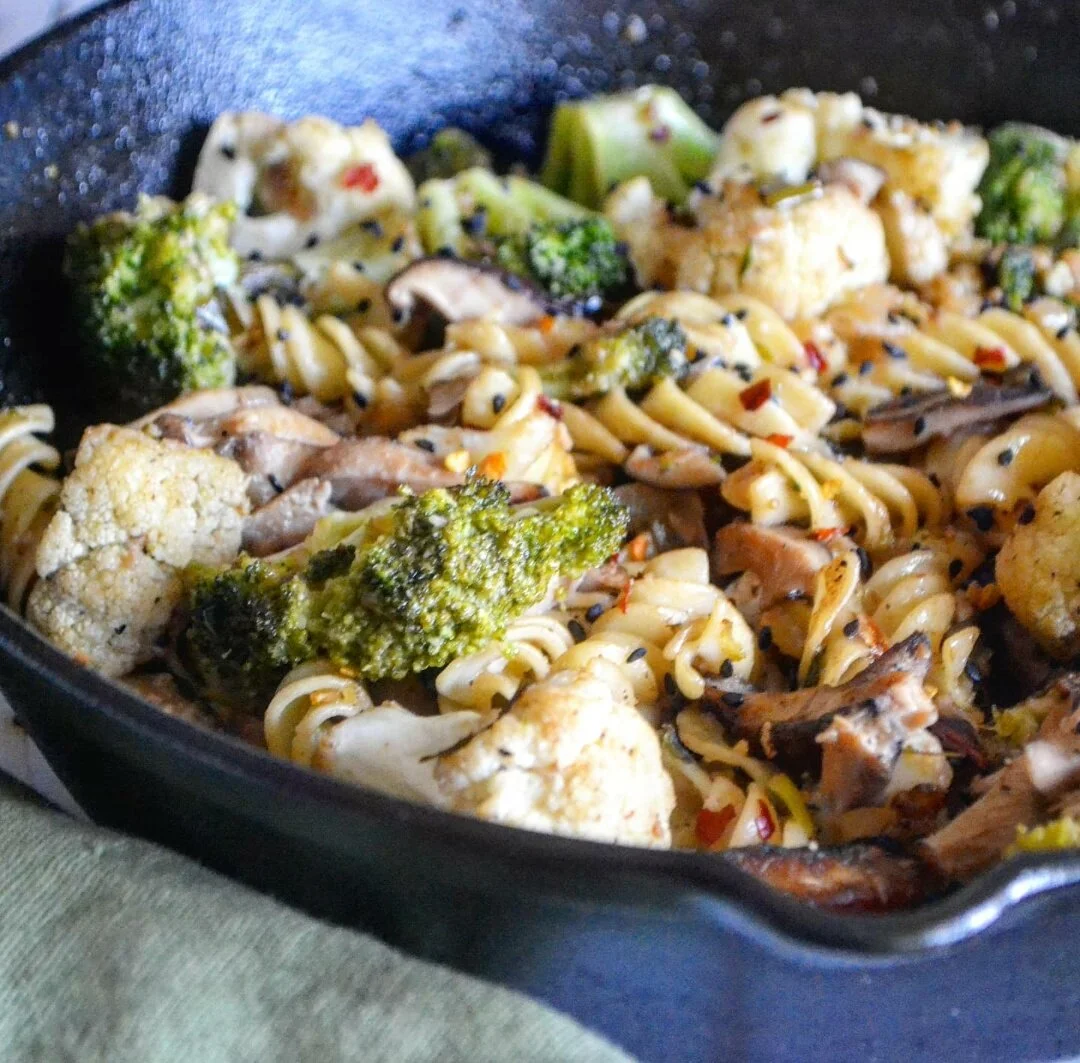
Mushroom, Broccoli and Cauliflower Stirfry
A quick and flavorful vegetable stir-fry made with shiitake mushrooms, cauliflower, and broccoli, tossed in a savory soy-ginger sauce with bold spices. Perfect served hot with egg noodles for a satisfying plant-forward meal.
Ingredients
- 2 cups shiitake mushrooms
- 2 cups cauliflower florets
- 2 cups broccoli
- 2 tablespoons soy sauce
- 2 tablespoons cooking wine
- 1 tablespoon steak and chops seasoning
- 1 teaspoon salt
- 1 tablespoon black pepper
- 1 tablespoon coriander
- 1 teaspoon red chili flakes
- 1 teaspoon black sesame seeds
- 1 tablespoon rice vinegar
- 3 tablespoons butter
- 2 tablespoons olive oil
- 1/2 cup egg noodles
- 1 tablespoon fresh ginger, grated
- 2 tablespoons fresh garlic, minced
- 1 teaspoon fenugreek powder
- 1/2 large shallot, minced
- 1/3 cup green onions, chopped
Instructions
- In a hot skillet, melt the butter with the olive oil. Add the spices, salt, and pepper. Sauté on medium-low heat for 2 to 3 minutes.
- Add the mushrooms, broccoli, and cauliflower. Cook for another 5 minutes, allowing the vegetables to sweat and release their moisture.
- Once most of the moisture has evaporated from the mushrooms, deglaze the skillet with the soy sauce, cooking wine, and rice vinegar. Cook for 2 minutes.
- Add the fresh ginger and continue to sauté for another 2 minutes.
- Season with additional salt, pepper, and chili flakes to taste. Serve hot.
I am not a certified nutritionist and any nutritional information on dontmissmyplate.com should only be used as a general guideline.
Tried this recipe? I’d really love to know how it turned out for you. Leave a quick review or comment below — your feedback helps others (and makes my day!).
Pawpaw Sorbet
This recipe is the sixth of six plates I would serve if asked to make a 6-course meal or string of small plates/tapas based on Zimbabwean cuisine. I used ingredients that are commonly eaten or are considered a cornerstone of our cooking, but with a modern twist. The first was sweet potato soup, the second tomato bruschetta with guava balsamic glaze, the third fried sadza with chili creamed corn, the fourth Portobello steak with acorn squash and greens and the fifth mango, avocado and cucumber salad.
One of the most refreshing fruits there are. More so than watermelon or even pineapple. Pawpaws - or papaya - depending on how accurate you want to be or where you grew up - have a subtle sweetness that can be manipulated into delicious desserts. They are also known for their beneficial properties to the skin, but I simply knew them as a tropical fruit that happened to grow in our garden for a time.
One of the most refreshing fruits there are. More so than watermelon or even pineapple. Pawpaws - or papaya - depending on how accurate you want to be or where you grew up - have a subtle sweetness that can be manipulated into delicious desserts. They are also known for their beneficial properties to the skin, but I simply knew them as a tropical fruit that happened to grow in our garden for a time. This sorbet is light and a perfect finish to a series of savoury plates, especially for those who do not want to indulge in something overly decadent.
The simplicity speaks to the approach I find to dominate the Zimbabwean kitchen, which is the simplest preparation possible, bordering on blandness. However, if done right and with fresh ingredients, can help you to appreciate and focus on the taste of the main ingredient - in this case, the pawpaw.
Both natural sweeteners enhance the sugar in the fruit, but I used both since they lower on the intensity scale. The berry flavour adds another dimension other than the pawpaw to give the sorbet a bit of an edge.
Ingredients
1 pawpaw/papaya
2 tablespoons honey
1/4 cup berry syrup
1 teaspoon lemon juice
4 tablespoons water
Instructions
Slice the pawpaw in half, then remove the seeds and fibers. Keep one or both of the skins for serving purposes.
Roughly chop the pawpaw, place the pieces in a zip lock bag, then freeze
In a food processor or blender, blend the pawpaw pieces, adding the water a little at a time. As the sorbet smoothens, add the honey, lemon juice, and berry maple syrup. You can adjust the quantities to get the level of sweetness and texture you desire.
Scoop the mixture into a loaf tin, and freeze for at least 4 hours or overnight. Serve immediately.
Portobello Steak with Acorn Squash and Greens
This recipe is the fourth of six plates I would serve if asked to make a 6-course meal or string of small plates/tapas based on Zimbabwean cuisine. I used ingredients that are commonly eaten or are considered a cornerstone of our cooking, but with a modern twist. The first was sweet potato soup, the second tomato bruschetta with guava balsamic glaze, and the third fried sadza with chilli creamed corn.
I tackled three vegetables this time which are of great importance in the Zimbabwean diet both in the countryside and the urban areas.
The star of this dish is the Portobello mushroom (if you must have meat, you can replace this with ribeye or sirloin steak). The mushroom cap is not only a great alternative to a piece of steak due to the umami, but in Zimbabwe, mushrooms are commonly eaten. One of the most popular forms in particular is nhedzi, consumed in the form of rich broth soup. Mushrooms are readily available and not everyone can afford meat, another reason that makes mushrooms an ideal meat replacement.
I also used acorn squash, but in Zimbabwe, the pumpkin would have been the first choice. The vegetable is consumed year-round boiled, mixed with peanut butter, in stews, and spread on bread, but not so much roasted. There is something about well-spiced pumpkin/squash that can be appreciated as a side (or main) on a plate. I will note that the pumpkin is used in its entirety, including the leaves. In fact, dried pumpkin leaves are considered a favored delicacy (muboora).
Finally kale, like sadza, is a cornerstone of Zimbabwean cuisine. Many variations are grown in people's backyards, stewed, cooked with peanut butter or fried crispy.
This dish can serve 1-2 people, so you can double up the quantities if necessary. I would recommend not keeping the Portobello steaks longer than 2 days for optimum taste! There is a variety of flavors and textures that make this a healthy, filing, dinner or lunch.
Ingredients
Portobello steak:
1 large Portobello mushroom cap
1 tablespoon steak 'n chops seasoning
1 teaspoon garlic powder
1/2 teaspoon salt
1 tablespoon black pepper
1 tablespoon pesto
1 tablespoon soy sauce
2 tablespoons butter
2 tablespoons olive oil
1 thyme sprig
2 tablespoons minced garlic
Acorn squash :
1 small acorn squash (or pumpkin)
1 tablespoon cinnamon
1 tablespoon honey
1/2 teaspoon nutmeg
1/2 teaspoon salt
1 tablespoon black pepper
1 tablespoon smoked paprika
1 teaspoon cumin
1 tablespoon olive oil
Green beans:
1 small bunch green beans
2 tablespoons olive oil
1 teaspoon garlic powder
1 tablespoon black pepper
1/2 teaspoon salt
Kale:
2 cups kale
1 teaspoon fenugreek powder
1/2 teaspoon chili flakes
1 tablespoon Royco Usavi mix (optional)
1/2 teaspoon cumin
1 tablespoon coriander
Instructions
Scrub any mud or debris from the Portobello steak. Rub the mushroom with olive oil, garlic powder, salt, pepper, steak ‘n chops seasoning, and soy sauce.
Heat a pan on medium-high heat with the olive oil, then place the mushroom head to sear one side - leave it still for about 3-4 minutes. Add the thyme spring, butter and minced garlic, flip over, then cook the other side while basting with the melted butter sauce. Do this for another 2-3 minutes then remove from heat and set aside.
In a small bowl toss the green beans in salt, pepper, garlic powder, and olive oil then set aside.
To prepare the acorn squash, split in half and remove the seeds and fibers. Season with cinnamon, nutmeg, salt, pepper, cumin, and paprika then drizzle with olive oil and honey. Make some incisions with a knife to help the flavors seep in.
Place the Portobello steak, green beans and acorn squash onto a lined baking tray, and bake at 400F. After 25 minutes, remove the mushroom and the green beans from the tray - you'll want to flip the mushroom and turn over the beans at least once before that. Bake the squash for an additional 15 minutes, or until it has softened. Once done, spoon the sauce in the middle over each acorn half and reserve any other juices for serving.
In a small pan while the other vegetables are baking, sauté the kale. Add olive oil and toss the leaves with the garlic powder, chili flakes, salt, pepper, coriander, and Royco Usavi mix. Cook for 5 minutes or until the kale begins to wilt slightly but still maintains a crispy texture.
Serve the Portobello steak with pesto and any juices from the mushroom, along with the green beans, acorn squash, and kale.
Tomato Bruschetta with Guava Balsamic Glaze
This is the second of six plates I would serve if asked to make a 6-course meal or string of small plates/tapas based on Zimbabwean cuisine. I used ingredients that are commonly eaten or are considered a cornerstone of our cooking, but with a modern twist. The first was a bowl of sweet potato soup.
Sometimes simplicity is best, especially when you need a quick appetizer.
This works well when it comes to Zimbabwean cooking. I wouldn’t say there are any complicated techniques used in the every day Zim kitchen. Most people use fresh ingredients in the least convoluted way possible. Some could argue it borders on bland in certain instances, however, focus on one or two-star ingredients can help bring attention to and appreciate the food in its purity, for what it is. Perhaps adding tweaks to enhance the flavour so that it has simple, bold. flavours. I think of Italian food in this way which is likely why it is one of my other favourite cuisines!
Bruschetta is a great way to celebrate the tomato, which I have said is a quintessential fruit in the Zimbabwean kitchen, as is the onion.
The guava, on the other hand, is a commonly eaten fruit I believe, is underutilized. I don’t even recall jam being made from them, most people eat the fruits as they are. We had a tree in my back yard I used to climb just to pass the time, and would often pick them myself. Similar to passionfruit, there is nothing quite like the sweetness from the pink-fleshed, tropical fruit.
I decided to use some guava nectar to make an enhanced, fruity glaze to drizzle over the fresh tomato and onion. on top of a crunchy piece of garlic-rubbed baguette. This makes for a delicious snack or starter.
Ingredients
1/2 French baguette
1/2 large tomato
1/4 yellow onion
2 tablespoons + 1 teaspoon balsamic vinegar
1 tablespoon fresh basil, finely chopped
Pinch of salt
1/2 teaspoon black pepper
1 tablespoon butter + extra for bread
1/3 cup guava nectar
1 tablespoon dried parsley
3 teaspoons olive oil + extra for bread
1/2 teaspoon garlic powder + extra for bread
1 tablespoon minced garlic
Instructions
Dice the tomato and onion, then toss in 3 teaspoons olive oil, 1 teaspoon balsamic vinegar, garlic powder, basil, salt, and black pepper. Taste to make sure it is to your liking, set aside!
Slice the baguette, butter one side, then rub or brush each piece with olive oil, minced garlic and garlic powder. Toast directly on the stovetop for a few seconds. You can also broil but take care not to burn!
In a small pot, melt the tablespoon of butter with the balsamic vinegar. Add the guava nectar, then bring the mixture to a boil. Reduce to a simmer, and stir, frequently, until the glaze begins to caramelize and thicken. Season to taste if desired.
Assemble your bruschetta. Top the toasted baguettes with the tomato and onion, drizzle with glaze, then top with fresh basil.
Sweet Potato Soup
This is one of six plates I would serve if asked to make a 6-course meal or string of small plates/tapas based on Zimbabwean cuisine. I used ingredients that are commonly eaten or are considered a cornerstone of our cooking, but with a modern twist.
The sweet potato. I've used it many times in several recipes on this website. It's one of the most widely-eaten starchy tubers in Zimbabwe so I had to use it.
There is nothing better than a thick, rich, flavourful soup and it’s not hard to achieve at all. No need to go to a restaurant for it! It’s all about the right combination of spices, rich broth, and a solid base.
If I had more time and patience, I may have made my own homemade broth for it! Homemade is usually best.
Since sweet potatoes are starchy, they lend themselves well to soups and help thicken everything up. In this case, so does the tomato paste. It’s used in French cooking technique known as pincage which you add to mirepoix (a combination of celery, onion and carrots) which makes for a great soup base because of the flavour it adds.
I also add the tomato paste because tomatoes are almost always present in the typical Zimbabwean kitchen and all over the markets year-round. They are also the base for most stews whether vegetarian or meat-based, it’s rare to find any Zimbabwean stew that has no tomato present. I also think it adds a flavour dimension that makes soup have more depth of flavor.
Ingredients
1 large sweet potato
1 cup mirepoix (2 parts diced onion, 1 part celery, 1 part carrot)
2-3 bay leaves
1 tablespoon hot Madras curry powder
1 teaspoon fenugreek powder
1 teaspoon cinnamon
1 teaspoon cumin
1 teaspoon coriander
1 tablespoon black pepper
1 teaspoon salt
1 teaspoon smoked paprika
2 tablespoons hot mango chutney
1 tablespoon fresh sage, chopped
1 (6-oz) can tomato paste
2 bouillon cubes
3-4 cups water
1 tablespoon butter
2 tablespoons olive oil
1 tablespoon minced garlic
Instructions
Peel and dice the sweet potato. In a large pot, heat the butter and oil with the garlic until fragrant, about 2 minutes.
Add all the spices and the sage, cook for another 2-3 minutes.
Mix in the mirepoix and chutney until evenly coated and cook until the vegetables begin to soften.
Add in the tomato paste and stir frequently to form a pincage - cook for another 2-3 minutes until it begins to brown.
Pour in the water and reduce the heat to simmer. Add the bay leaves and cover with a lid for about 30 minutes or until the sweet potato softens. You'll want to regularly check your soup and stir occasionally. The soup will be thick and flagrant, add a little bit more water if necessary.
Set aside and cool the soup down. Once cooled, take out a few whole sweet potato cubes. Pour the soup into a blender or use a hand blender to puree the soup until smooth or your desired texture.
Garnish with croutons, fresh sage, and sweet potato cubes you set aside. Serves 3-4.
Spicy Pumpkin Mushroom Skillet Pot Pie
Yes, fall is coming. That means pumpkins will start to show their colours brightly, and it's worth embracing for sure! Sweet potato is an alternative if you can’t find or are not big on eating pumpkin, but the spice blend associated with the season lends itself to both and helps create some great depth of flavour and the warmth we love in autumn. I’m talking cinnamon, nutmeg, ginger, and cloves.
One of my favourite's Camella’s Kitchen - a family-owned business that celebrates Caribbean flavours - just released a seasonal product that incorporates these flavours. The pumpkin spice pepper sauce is a fiery chilli sauce that includes the pumpkin spice flavour and subtle sweetness characteristic of anything pumpkin-related. This inspired me to make a pot pie, sans the chicken.
Sounds unconventional, but the addition of the pumpkin and shitake mushrooms along with the pepper sauce heat adds so much flavour. Not only does it compliment the buttery pie crust, but you still get that umami people associate with a hot, steaming pot pie perfect for the cooling weather.
This vegetarian pot pie puts others to shame. The flavours make it intensely rich and delicious.
Ingredients
2 cups pumpkin, cubed
1/4 cup Camellas’s Pumpkin Spice Pepper Sauce
2 tablespoons pumpkin spice
1 teaspoon cloves
1 tablespoon cinnamon
1 teaspoon nutmeg
1 teaspoon salt
1 tablespoon black pepper
2 tablespoons olive oil
1 tablespoon dried parsely
1 tablespoon ground fenugreek
1 tablespoon minced garlic
1 teaspoon cayenne pepper
1 tablespoon paprika
2 tablespoons cooking wine
2 tablespoons Worchester sauce
1/3 cup shitake mushrooms
2 tablespoons sweet corn
2 tablespoons peas, frozen
1/4 cup carrots, chopped
1/4 cup chopped leeks and green peppers
1/4 cup chopped onion
1 tablespoon fresh thyme
2 tablespoons fresh basil
1 teaspoon dried thyme
1 pie crust, thawed to room temperature
1 egg + 1 tablespoon water (egg wash)
2 tablespoons all-purpose flour
2 tablespoons butter
1/4 cup plant milk
1/4 cup non-dairy heavy cream
1/4 cup water
2 broth bouillons, crushed
Instructions
Toss the pumpkin in the pepper sauce and the spices. Sauté in the olive oil for about 5 minutes.
Add in the chopped leek and onion, cook for another 2 minutes. Follow this with the carrots, frozen vegetables, cooking wine and Worchester sauce, cook for another 3 minutes.
Mix in the mushroom, basil, thyme, milk and bouillon cubes, and water. Add the flour and butter, stir consistently until everything begins to thicken for another 5 minutes.
Top the skillet mixture with the pie crust, poke a few holes and make some slits in the middle to allow the crust to breathe as it makes. Brush with the egg wash.
Bake at 400F for 40 minutes or until the crust is golden brown and crispy.
Serve hot with fresh thyme.
Mulled Sangria Poached Pears
Are you a fan of sangria? A fan of pears? Do you add them to your sangria in addition to lemon, orange, berries or apples?
I typically associate poached pears with winter as I do mulled wine, often enjoyed by the fireplace on a chilly evening. However, you can also take pleasure in both in the warmer months by putting a sangria spin and introducing a fruity flavour.
This recipe soaks the pears in a 'mulled sangria' - a combination of mulled wine with the spices and natural sweetener and sangria with the additional fruit elements.
Sangria is a Spanish/Portuguese concoction I enjoy in the summertime heat and is something quite special. It’s tangy, refreshing, and fun to drink. I didn't grow up drinking it though but had regular fruit punch instead.
As for pears, I didn’t eat very many of those either compared to apples or mangoes. As I understand it, poached pears or Poire à la Beaujolais originates in France.
Whatever the case may be, I'm thankful for both! This recipe celebrates and brings the two together in the form of a sophisticated dessert that’s sure to please!
Ingredients
1 cup red wine (I used a Cabernet Sauvignon)
2 Anjou pears (not too ripe)
2 tablespoons white sugar
1/4 cup date syrup or honey
Pinch of salt
1/2 teaspoon cinnamon or a cinnamon stick
1/3 cup orange zest and juice
1 teaspoon vanilla essence or a vanilla pod
1/4 teaspoon almond extract
1/4 teaspoon nutmeg
1/4 teaspoon cloves
1/3 lemon zest and juice
1/4 cup cooking wine
3/4 cup water
Garnish:
Roasted pistachios, crushed
Coconut whipping cream
Instructions
Peel, halve and decore the pears.
In a medium-sized pot, add all the ingredients including the pears and bring the spiced liquid to a boil (save the garnish ingredients).
Reduce the heat and simmer for 35 minutes with the lid on top. Cook until the pears are softened - test with a knife it should cut into the pears with ease.
Remove the pears and cool the remaining liquid.
Place the pears in a glass container core side down, and pour over the liquid. Place in the fridge overnight.
The next day: remove the pears from the liquid and set aside. Strain the liquid of necessary and simmer the mulled sangria mixture into a reduction until it becomes a thickened liquid.
Seat the pears on whipped cream and pour the reduction on top. Sprinkle with pistachios, enjoy cold or at room temperature! Serves 2 people.
Black-Eyed Peas with Coconut and Tomato
I'm a huge fan of beans, and they are great if you are looking to cut down or eliminate your meat intake. They are filling, nutritious, and high in protein to name a few benefits.
Black-eyed peas - also known as cowpeas - are hearty and delicious. This bean is eaten extensively across West Africa where it's said to have originated and is an important staple in the Caribbean and the American South - where they are considered a lucky charm by some during New Years.
You can do a lot with black-eyed peas as they are quite versatile, check out my black-eyed pea and pinto bean meatloaf recipe for example.
I served this stew with finger millet in the form of sadza, a thick porridge native to Zimbabwe using an ancient grain much healthier than its white corn counterpart. You can find a recipe for it, here.
The spices muddled in the coconut milk and tomato makes for a rich stew that can be paired with a variety of vegetables or grilled meats or served as a main dish. You won't regret it!
Ingredients
3 cups dry black-eyed peas (soaked for 24 hours and drained)
1 tablespoon salt
2 tablespoons black pepper
1 tablespoon cumin
1 tablespoon coriander
1 tablespoon ginger
1 can coconut milk
3 beef bouillons
6 cups water
1 teaspoon fenugreek
1 teaspoon paprika
1 tablespoon garlic
1/2 yellow onion, chopped
1 small green pepper, finely chopped
1 cup tomatoes, diced
2 tablespoons tomato sauce/ketchup
2 tablespoons butter
2 tablespoons olive oil
2 tablespoons curry powder
Instructions
In a large pot, saute the onion and garlic in olive oil and butter for 3 minutes until the onion starts to soften.
Add the spices, bouillon cubes, salt and black pepper, cook for another 2 minutes.
Mix in the diced tomatoes and tomato sauce/ketchup, cook for about 5 minutes.
Stir in the green pepper and black-eyed peas, then pour in the water and coconut milk. Season to taste with additional salt and pepper if necessary.
Reduce the temperature and simmer for 35-40 minutes. Check the stew periodically and stir until the black-eyed peas soften and are cooked through. Add more water if needed.
While the beans are cooking, prepare your sadza or whatever starch you want to serve the stew with. All you'll need for that is water and corn/maize/millet meal.
Serve both hot, enough for 4-5.
Black-Eyed Pea and Pinto Bean Meatloaf
If you're like me and have reduced your weekly meat intake for health purposes or otherwise, that shouldn’t mean you can’t eat certain meals! Especially with recipes that are flexible about the form of protein you use - and that doesn’t have to be meat! Beans and tofu are just two examples of additions you can make for a recipe that can be equally as delicious, especially when you season everything well. How about some meatloaf? Using black-eyed peas and pinto beans I put together a recipe that should satisfy most vegetarians, and no need for Beyond Meat (although I'm a fan, no shade).
It's quite easy and something you can eat for lunch or dinner. I like to think of meatloaf as a giant, rectangular meatball. For those who find meatloaf to be heavy, this version is light but still filing - you’ll probably get seconds though like I did!
If you're worried about your loaf drying, don't skip on sautéing your vegetables, adding the ketchup and BBQ sauce, and consider soaking your breadcrumbs.
The other thing I did is reduce the temperature halfway into baking to take it nice and easy, and it came out great! Luckily, unlike with meat, you don’t have to worry about the ‘doneness’ as much.
Ingredients
12-ounces black-eyed peas, cooked
15-ounces pinto beans, cooked
1 medium carrot, finely chopped
1 1/2 mushrooms, finely minced
2 celery sticks
1/2 yellow onion, finely chopped
1 tablespoon garlic, minced
2 tablespoon olive oil
1 tablespoon butter
1 teaspoon salt
2 teaspoons black pepper
1/4 teaspoon powdered mustard
2 teaspoons smoked paprika
1/2 teaspoon coriander
1 teaspoon cumin
1/4 teaspoon fenugreek, ground
1 teaspoon cayenne pepper
1/3 cup ketchup
1/3 cup BBQ sauce
2 tablespoons teriyaki sauce
1 tablespoon soy sauce
1 tablespoon plant-based mayonnaise
1/4 cup fresh parsley, finely chopped
1 cup bread crumbs
Instructions
Prepare the black-eyed peas and pinto beans. If you're using dried beans you’ll want to soak them overnight or for at least 4-6 hours. You can also use drained, canned beans.
While your beans are cooking, melt the butter with the olive oil and sauté the garlic for about 2 minutes. Add the spices, salt and pepper (reserve 1 teaspoon paprika, 1 teaspoon black pepper, 1/2 teaspoon cayenne, and 1/2 teaspoon salt). Cook for another minute before adding the vegetables - onion, carrot, celery sticks, and mushrooms. Cook for about 5-7 minutes, until the juices, evaporate and the mixture is somewhat dry, set aside.
Mash the pinto beans and black-eyed peas until a mush forms - you can use a potato masher or your (clean) hands. It’s okay if you have larger bits as long as the mixture is mostly mashed.
Combine this in a large bowl with breadcrumbs, mayo, parsley, cooked veggies, teriyaki sauce, soy sauce, and the reserved spices.
Combine the ketchup and BBQ sauce, add to the bowl and mix until combined but don't overmix - you may end up with a tough meatloaf!
Add the mixture to a bread loaf pan prepped with parchment and cooking spray, then brush with some more of the ketchup and BBQ sauce. Bake the meatloaf at 350F for 30 minutes.
Remove and baste with more of the ketchup and BBQ sauce mixture. Don’t be afraid to lay it on so you have a nice coating once the meatloaf is done! Reduce the temperature to 325F and bake for another half hour.
Remove from oven and rest for at least 10 minutes then chill in the fridge to firm. Serve hot with more sauce.
Jollof Rice-Stuffed Tomatoes and Mushrooms
If you haven't had jollof rice yet, you're missing out. It's a cornerstone of West African food. Each country that does make it a central aspect of their cuisine have particular methods of preparing the rice. I’m not going to get into the nuances because I’m from Southern Africa and not really in a position to get into the specifics and get it exactly right! I will say though, that some people might say it my rendition is closer to the 'Ghanaian way', due to the spiciness and lack of bay leaf (common in some Nigerian recipes I've seen). I seasoned the tomato stew the rice cooks in to my liking, and the result is pretty delicious.
You can eat the jollop rice as it is, with beans, fish, plantains, or do what I did and stuff some juicy vegetables! Stuffing veggies with rice (and sometimes a protein) is nothing new. It’s usually an easy and delicious meal, and quick if you have precooked your rice.
This method is something fun to do year-round with whatever is in season.
I was going to get brave and try and stuff some grapes leaves and cabbage, but this kept it simple since tomatoes and mushrooms lend themselves well to stuffing/topping, are easy to find and relatively affordable.
Hope you find this as tasty as I did!
Ingredients
1 large yellow onion, chopped
2 tablespoons olive oil
1 tablespoon garlic, minced
1/4 cup vegetable oil
1 tablespoon butter
1 (14-ounce) can diced tomatoes
1 small habanero pepper, chopped
1 (6-ounce) can tomato paste
2 beef bouillon cubes
1/2 cup frozen peas
1/2 teaspoon cumin
1 tablespoon curry
1 tablespoon paprika
1 teaspoon salt
1 tablespoon black pepper
1 teaspoon garlic and herb blend
1 teaspoon ginger
1/2 teaspoon coriander
3-4 large tomatoes
Fresh thyme
Garlic powder
Olive oil
3-4 portobello mushrooms
Instructions
Blend the onion and olive oil into a paste and set aside.
Clean out the blender and repeat this step with the pepper, tomatoes, and tomato paste.
In a large pot, melt the butter with the vegetable oil. Add the onion paste and garlic and cook on medium-low heat, stirring frequently for 5 minutes. Add the spices, salt, pepper, and bouillon cubes. Simmer for an additional 5 minutes or until the onion paste looks drier and the water content is reduced.
Add the tomato sauce and continue to simmer for about 15-20 minutes, stirring frequently.
Finally, add the rice and frozen peas. Top with water, cover with foil and a lid, and steam cook for 30 minutes until the rice is done. You can check from time to time to make sure the bottom isn’t burning. Note - the foil will help to keep all the flavours in!
Prepare your vegetables for stuffing. Hollow out the insides carefully with a knife, and drizzle with olive oil. Dust with garlic powder, salt, pepper, then top with fresh thyme.
In a 400F oven, bake your vegetables for about 25 minutes, until they have softened (but don’t overcook).
Remove your vegetables and let them cool for about 5 minutes, then using a teaspoon scoop the rice into the tomatoes and mushrooms. Serve hot!
East African Mashed Kale Stew (Sukuma Wiki) with Chapati
This dish is inspired by one of East Africa’s most beloved comfort foods: Sukuma Wiki, a flavorful sautéed kale or collard green dish often served with chapati or ugali. Common across countries like Kenya, Uganda, and Tanzania, Sukuma Wiki is a simple, affordable way to stretch meals, the name literally means “stretch the week” in Swahili.
I’ve taken that foundation and turned it into a heartier, stew-like version by adding peanut butter, yam, mushrooms, and eggplant for extra richness. This version leans into bold spices and a creamy texture, making it filling enough to enjoy as a main dish.
While this stew draws heavily from Sukuma Wiki, I was also inspired by other traditions across the continent. In Zimbabwe, pumpkin leaves (muboora) are cooked with peanut butter to create a deeply savory side or main. They’re often overlooked, but when cooked right, they're just as good as kale or collard greens. Since I’m currently in the United States, I’ve used kale (muriwo) as a substitute, it’s readily available and holds up beautifully in stews.
In Rwanda, a dish called isombe uses ground cassava leaves stewed in a similar way, often served with plantains and, of course, chapati, my favorite flatbread of all time.
I’ve paired this stew with East African chapati, which is soft, flaky, and layered. It’s made differently from Indian chapati, using a coiled rolling technique that creates those signature flaky layers. You can find my chapati recipe [here] if you’d like to make it from scratch.
This dish is warm, deeply nourishing, and full of flavor. It’s a beautiful mix of traditions and ingredients that come together to celebrate African cooking in a way that’s comforting and easy to recreate at home.
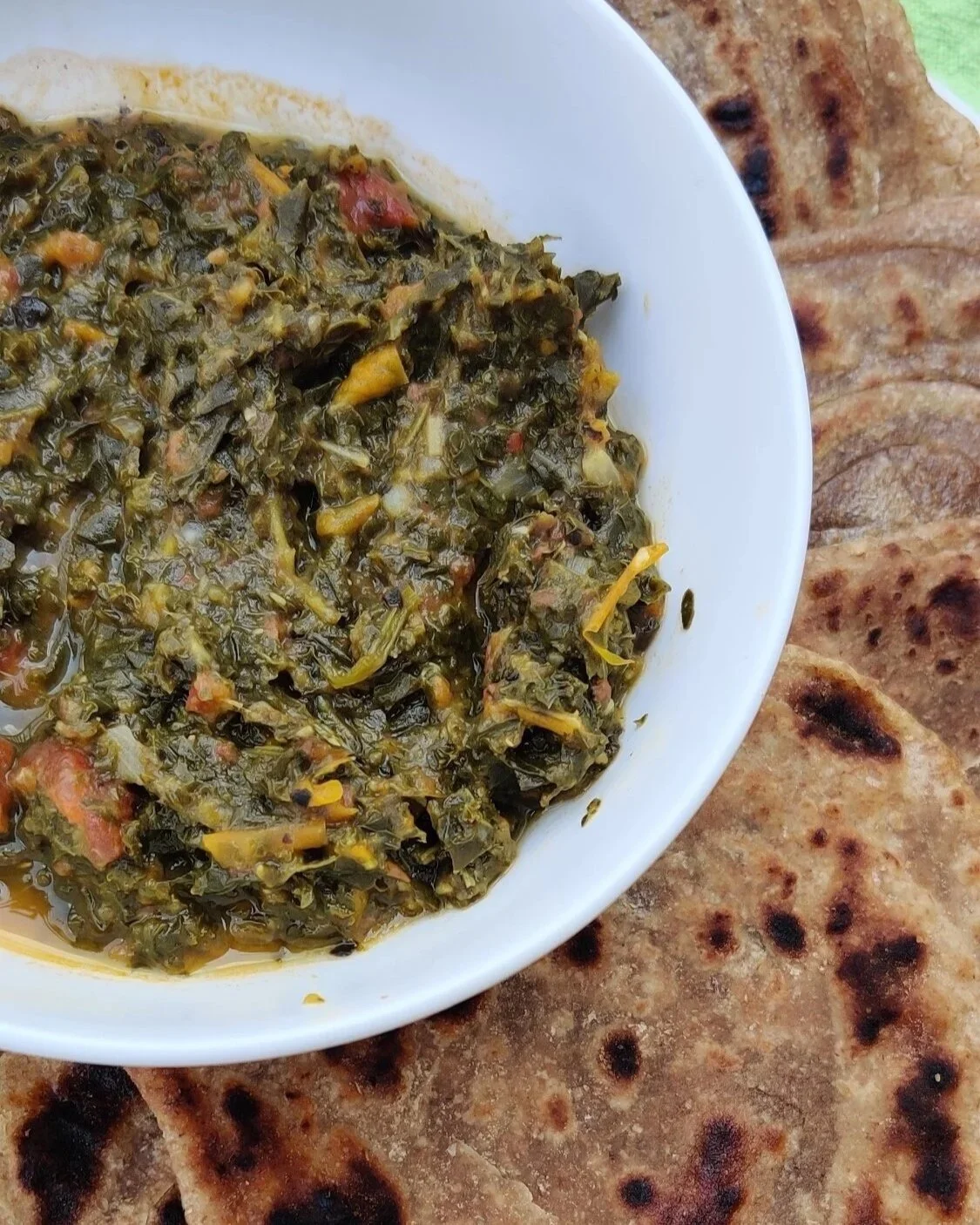
East African Mashed Kale Stew (Sukuma Wiki) with Chapati
A hearty, comforting East African-inspired kale stew packed with vegetables, spices, and richness from peanut butter. Serve with chapati for a complete meal.
Ingredients
- 1 pound kale, chopped
- 2 tablespoons garlic, minced
- ¼ cup fresh parsley, chopped
- ½ large eggplant, chopped
- ½ cup mushrooms, chopped
- 1 large tomato or 1 (14-ounce) can diced tomatoes
- ½ white-fleshed yam or sweet potato, chopped
- ½ large onion, chopped
- ½ large bell pepper, chopped
- ½ jalapeño, chopped
- 6 cups beef broth
- 2 vegetable bouillon cubes
- 1 tablespoon salt
- 2 tablespoons black pepper
- 1 tablespoon chili flakes
- ½ cup peanut butter
- 2 cups water
- 2 tablespoons vegetable oil
- 1 teaspoon fenugreek
- 1 teaspoon cumin
- 1 teaspoon coriander
- 1 teaspoon paprika
- 1 teaspoon sugar
- 1 teaspoon fennel
- ¼ cup chopped parsley (for garnish or added at the end)
Instructions
- Heat the vegetable oil in a large pot over medium heat. Add the chopped kale and cook until wilted and the edges begin to crisp slightly.
- Stir in the garlic and parsley. Cook for 2 minutes, until fragrant.
- Add the onion, eggplant, mushrooms, and all the spices (fenugreek, cumin, coriander, paprika, sugar, fennel, salt, pepper, and chili flakes). Sauté for another 2 minutes.
- Add the bell pepper and jalapeño, and cook for 1 more minute.
- Stir in the tomato, yam (or sweet potato), bouillon cubes, water, and beef broth.
- Reduce the heat to low, cover, and let the stew simmer for about 35 minutes. Stir occasionally and add more water if the stew becomes too thick.
- Once the vegetables are soft and the flavors are well developed, stir in the peanut butter and simmer for 5 more minutes. Taste and adjust seasoning as needed.
- Serve hot, ideally with freshly made chapati or another flatbread.
Notes
Tips:
- The richer your broth, the more flavorful the stew will be. Homemade stock or beef bone broth adds incredible depth.
- While traditionally made with beef broth, this stew can easily be made vegetarian or vegan by using a well-seasoned vegetable broth.
- You can also blend part of the stew for a smoother texture or leave it chunky, depending on your preference.
I am not a certified nutritionist and any nutritional information on dontmissmyplate.com should only be used as a general guideline.







